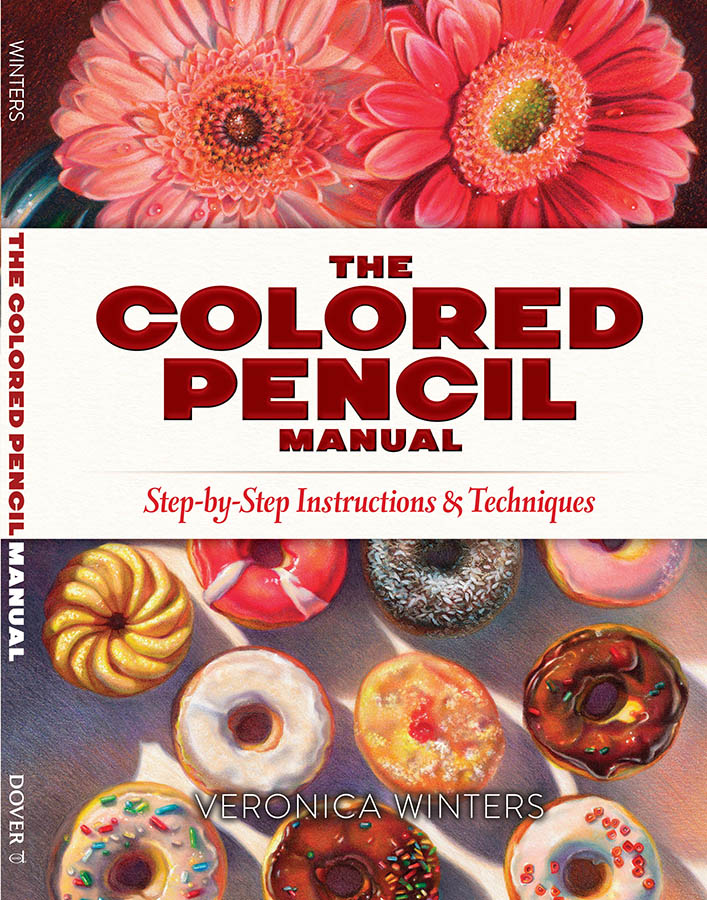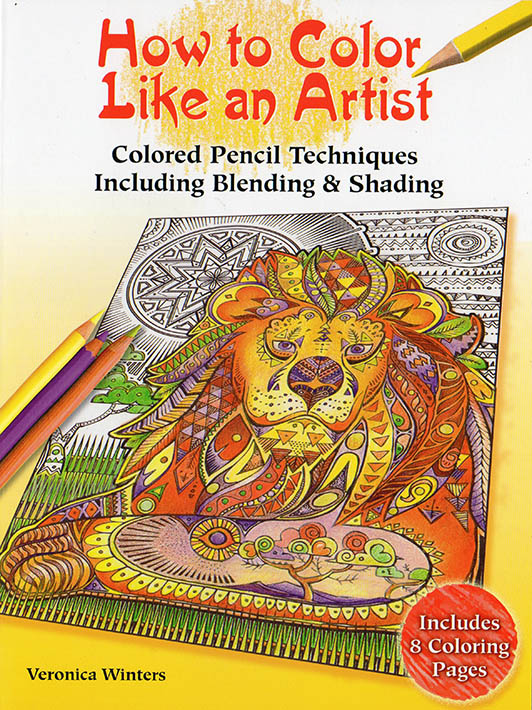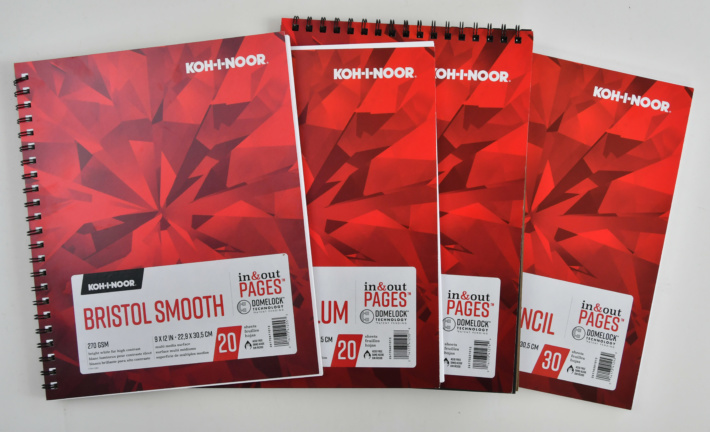This is the excerpt for your very first post.
Category: Colored pencil techniques
What is positive and negative space in drawing?
To design beautiful compositions in painting and drawing, you need to understand the difference between negative and positive space in art. Every realist artist combines negative space into his drawing and painting to create visual balance and unity.
Definition
Positive space in art is the subject or object itself in art, such as a cat, cup, spoon, etc. Negative space is the empty space or background space that surrounds that object or subject.
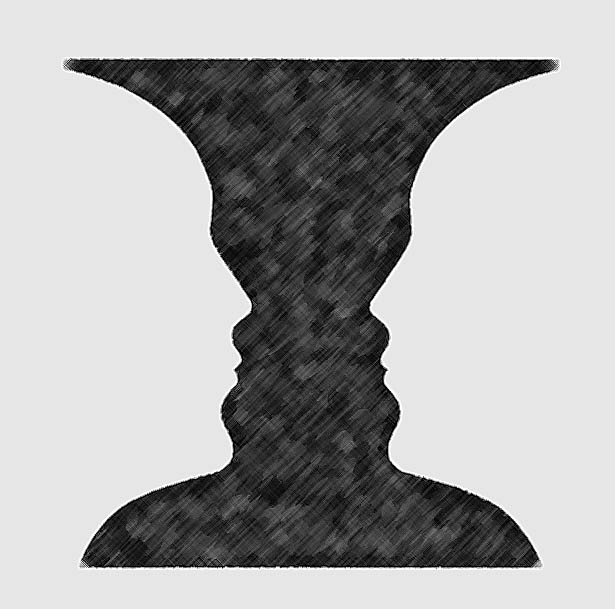

How to use negative space in your art
The negative space can be an effective tool to define your center of interest in art. Every subject in your painting and drawing has edges. These edges are affected by tones and colors placed right next to or around it. Hence, the negative space can bring visual balance and unity to your composition with a specific tone, shape or shadow.
One of the most common mistakes beginners make, they forget to include their background space into the equation, and ask me what to do with it much later when they are almost done shading the object itself. In my mind I compose the image before I begin drawing. I consider everything: composition, values, textures, and colors not only of the subject, but also of the negative space itself.
To use both negative and positive space in drawing effectively, consider picking your main focal point or a center of interest in art first. This focal point must be big enough, taking the majority of your space. Add the background elements around this focal point to lead the eye to it.
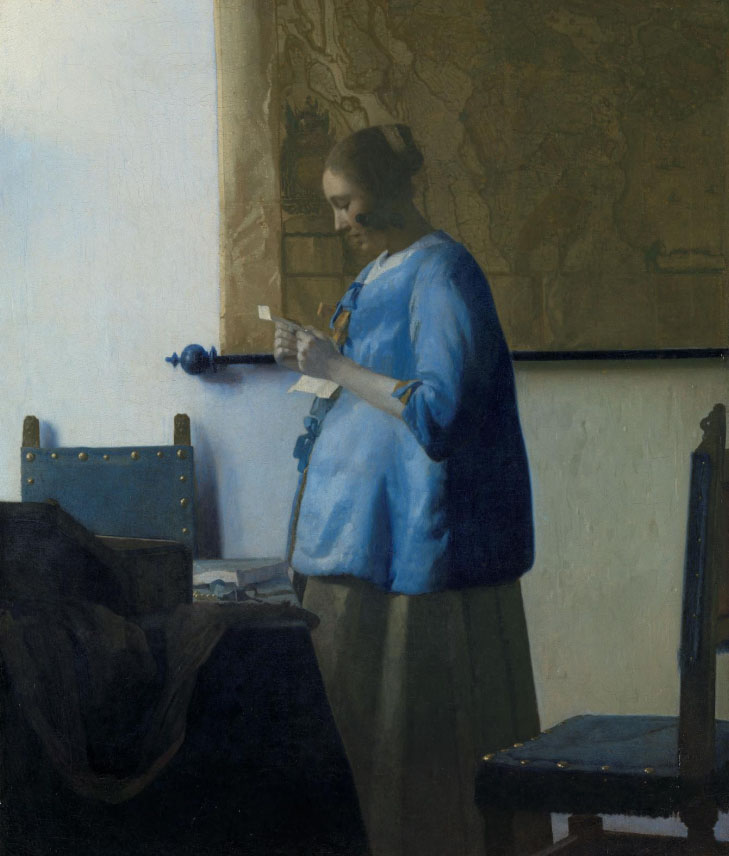
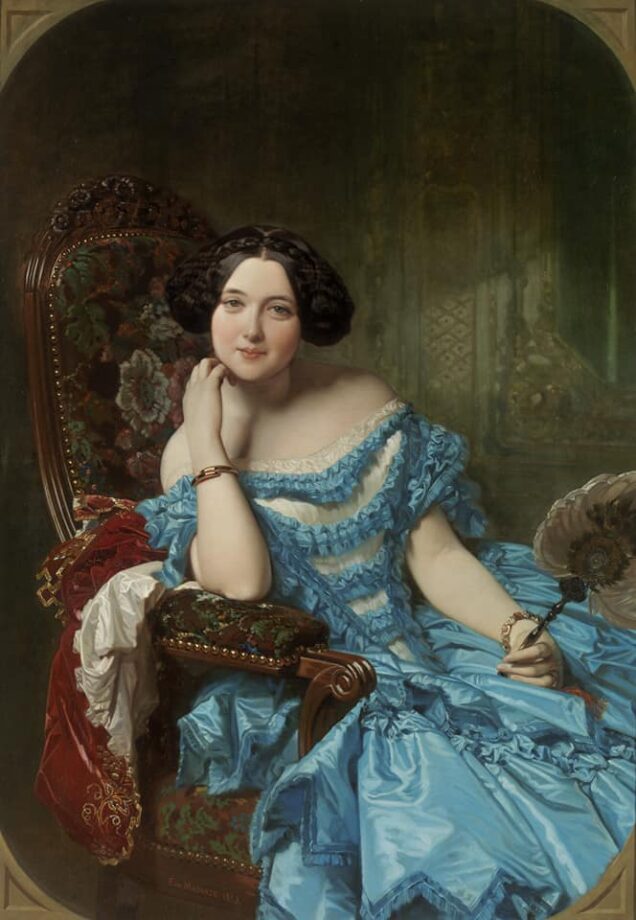
Examples of negative space in art
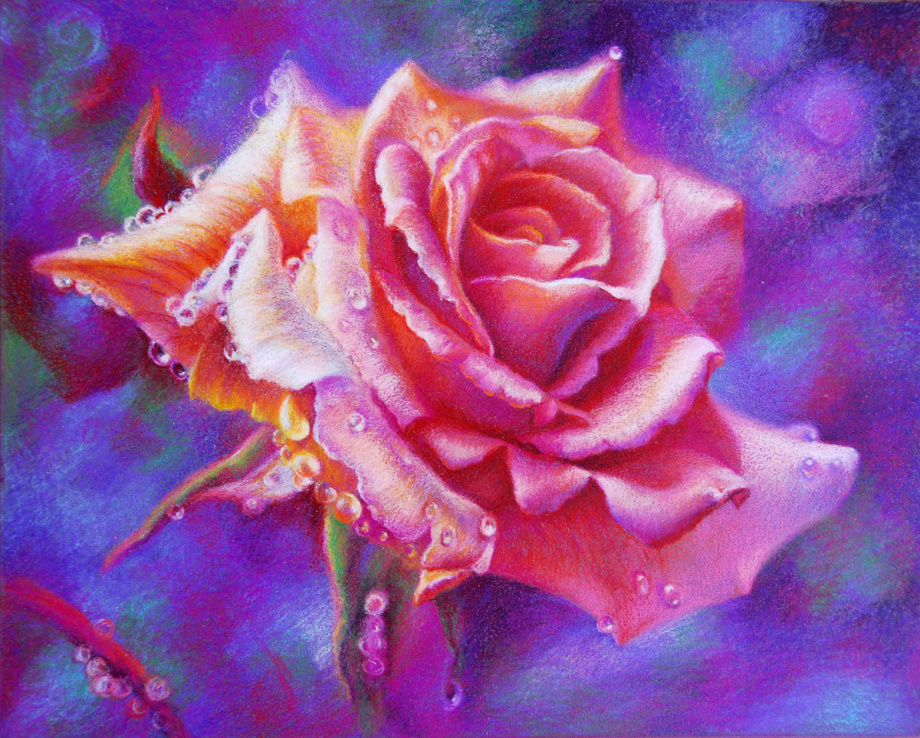
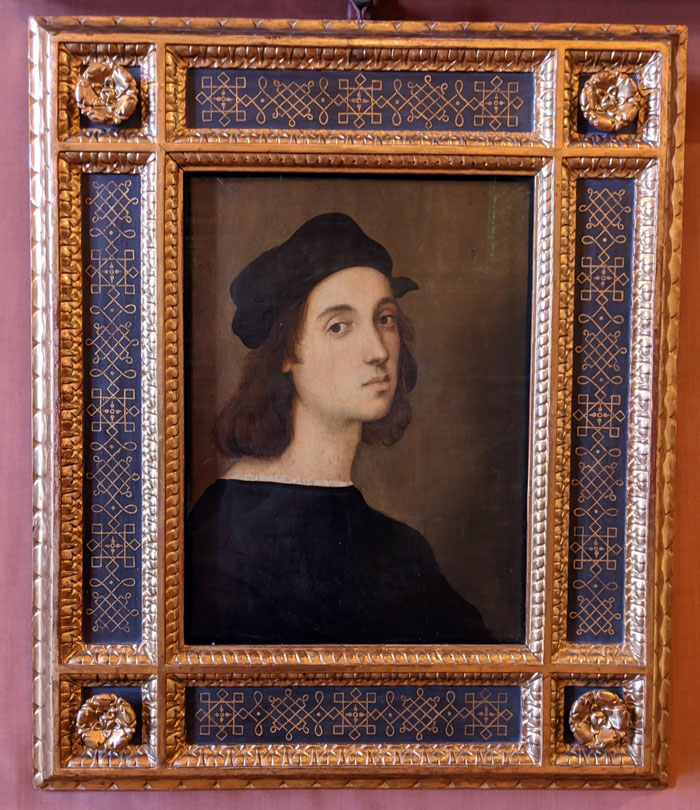
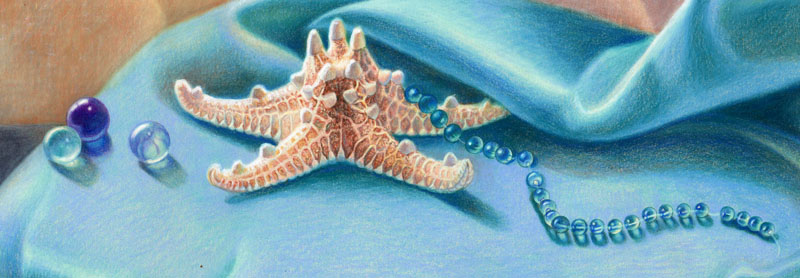
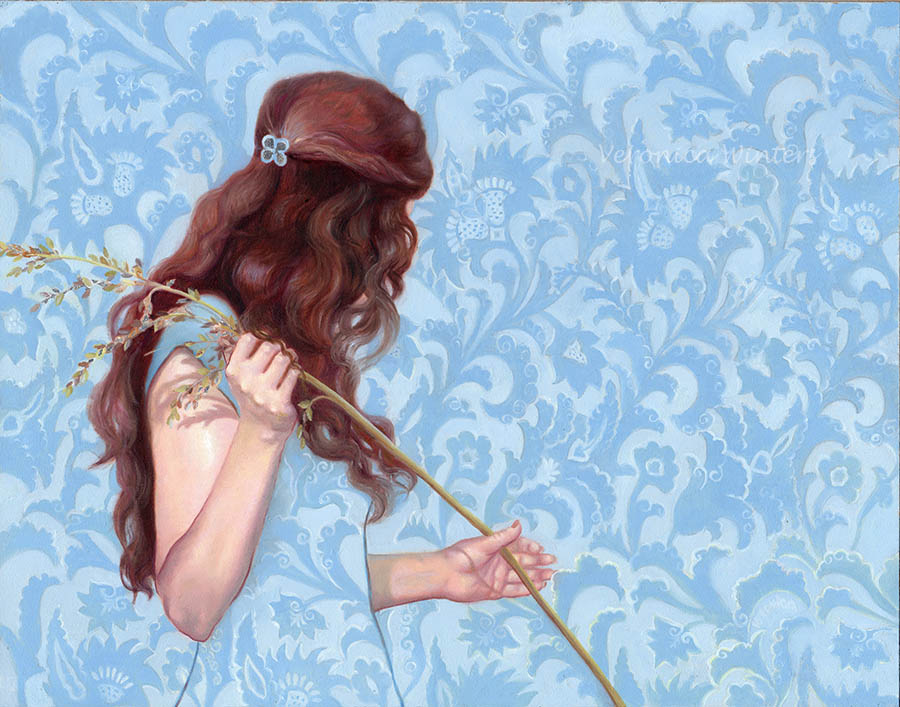
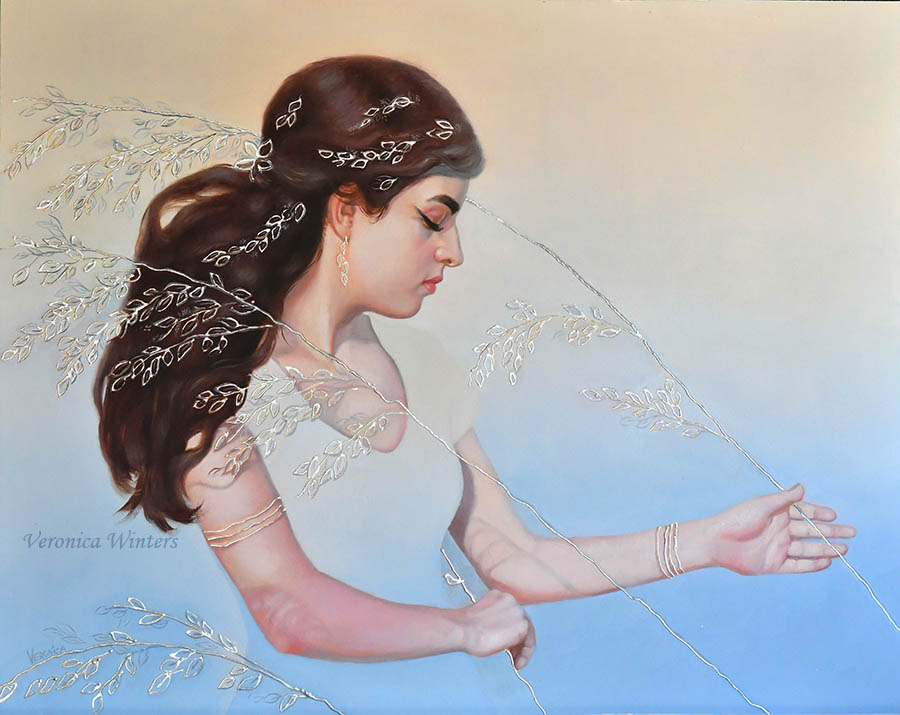
Tips for using negative space effectively
Here I’m going to give you three additional tips on how negative space can enhance your art. I often use all of these strategies designing my colored pencil drawings and paintings.
- You can create contrast in art using the negative space with purpose.
- You can measure and check distances between objects visually while sketching or drawing the shapes.
- You can improve your drawing accuracy or realism in your art by looking at the negative space.
- You can come up with a unique drawing design using the negative space as an illusion
1. Create contrast using negative space in your art
As a beginner in art, it’s easy to start designing your images around the concept of contrast that occurs between the negative and positive space. If your still life is dark, set up the light background behind it. If the object/focal point is light, it would appear much brighter set against dark, negative space.
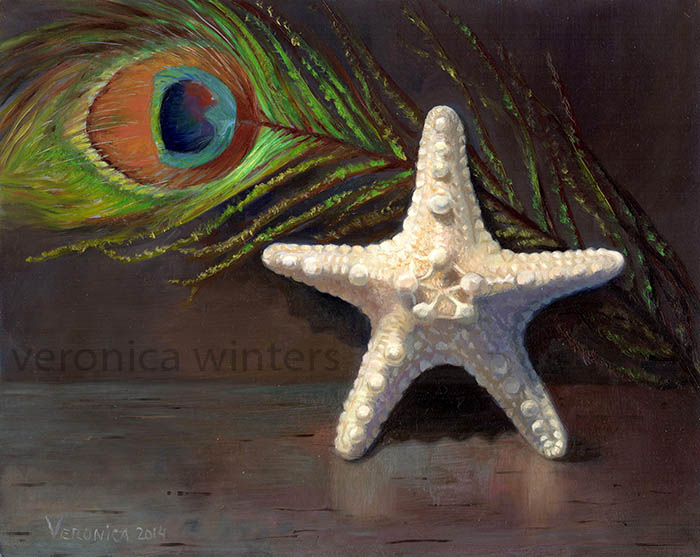
2. Measure and check distances
You can measure and check distances between objects visually while sketching or drawing the shapes. This is a very useful skill drawing all subjects, especially people. I often check distances between the eyes or between a hand and a waist, etc.
When students draw the object, they tend to focus on the curvy line itself. As a result, the shape might be too long or lopsided, or foreshortened the wrong way. Instead of focusing on the object’s curve itself, look at the space between those curves. Realist artists visually measure distances between the lines, shapes or objects by checking the negative spaces between them to make the most accurate drawings.
I made this illustration to show you the idea behind visual measuring of distances using negative space in art. Focus on these black lines (negative spaces) to see the accurate distances between the shapes. These distances help you measure, copy and draw accurate outlines of the subject (cat).
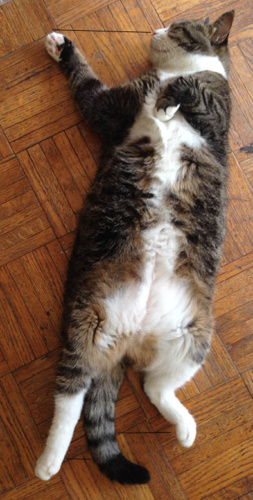
3. You can improve your drawing accuracy or realism in your art by copying abstract negative shapes.
By focusing on negative space you can become more skillful drawing realistic shapes. Negative shapes look abstract in our mind. Copy those abstract shapes with as much precision as possible to improve the overall accuracy of your drawing.
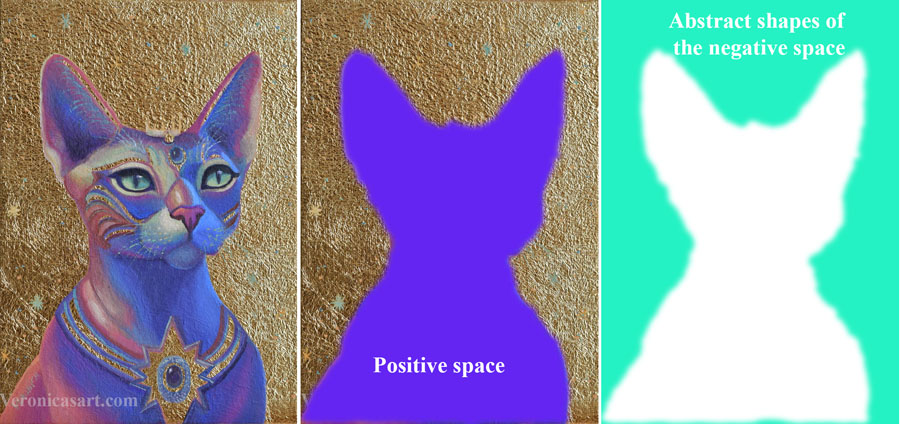
4. You can come up with a unique drawing design using the negative space as an illusion.
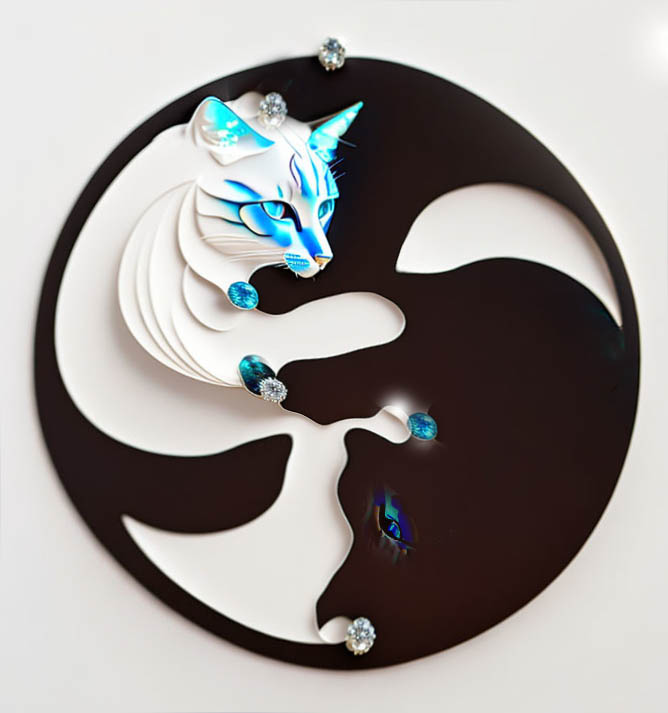
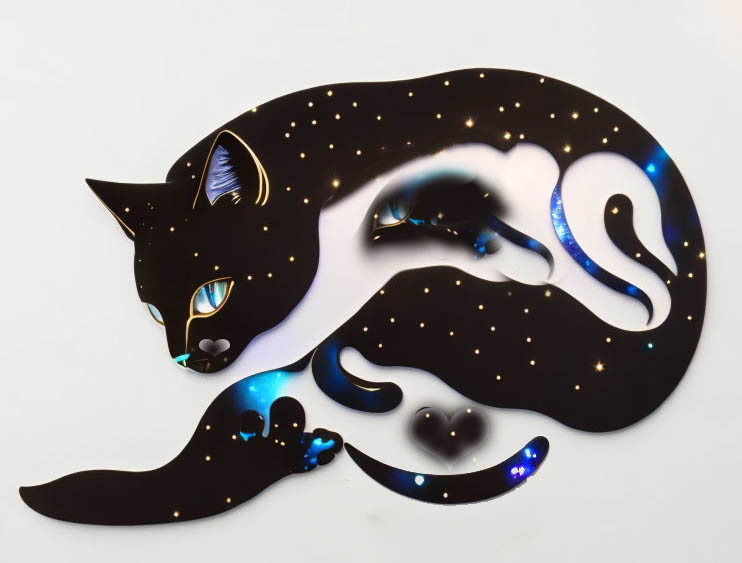
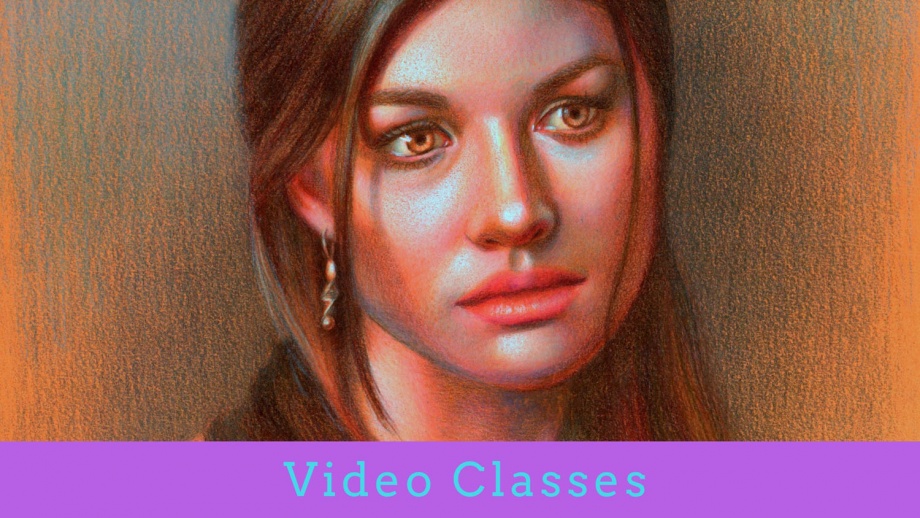
If you’d like to learn more about colored pencil drawing, check out free previews of my video courses here: https://veronica-winters-art-school.teachable.com/
Art supplies:
- Drawing pad, bristol vellum
- Kneaded eraser
- koh -i-noor drawing paper, colored pencil
- Tombow mono eraser
- Drawing fixative
- Sennelier fixative for charcoal and pencil has a super fine spray mist, matte, high-quality
- Gamvar varnish for oil paintings, satin
- Brush for varnishing oil paintings
- Color Wheel
- Canson Colorline drawing paper is available in many colors and various thickness. You might find better choices at art supply online retailers
- Molotow metallic marker, gold
- How to color like an artist, coloring book for children and adults
- The colored pencil manual, art instruction book
How to use color harmony in colored pencil drawing
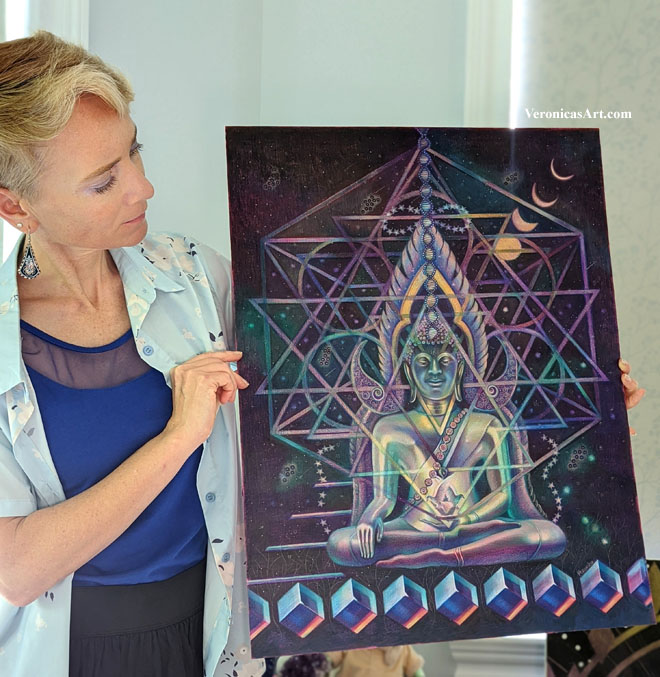
When you begin realistic drawing in colored pencil, artistic aim is to copy what you see in front of you or in your reference. Beginners in colored pencil drawing pay attention to small things like details and textures, and they’re important. However they become truly important only when the basic drawing is in place. If you begin shading one spot and forget about the rest of your composition, you might end up having the colored pencil drawing that has no consistency or unity in color harmony and composition. In this article I’d like to share a few strategies I often employ using color harmony to create mood and atmosphere in colored pencil drawing. Let me give you some ideas how to use color harmony in colored pencil drawing so you can discover your own unique approach to drawing.
Another extensive article on colored pencil portrait drawing and the use of values and color: https://veronicasart.com/realistic-colored-pencil-portrait-drawing-guide/
On YouTube: https://youtu.be/kFdssDSWL3c
Color wheel for colored pencil drawing
While color wheel isn’t everything for colorful pencil drawing, you do need to know these basic definitions and color triads.
Definitions:
- Hue – means color. Red, green, yellow, etc.
- Value – means how light or dark the shading is.
- Chroma – is the color’s strength or color intensity. Colors can be super intense or muted.
- Value – the lightness or darkness of a color.
- Color Intensity – the saturation or purity of a color.
- Neutralized color – the color with less intensity that’s either grayed down or mixed with its complement.
- Local color – the natural color of an object as it appears in daylight (green of the cucumber or blue of the blueberries). Art students see only local colors in objects rather than the colors of light and reflections.
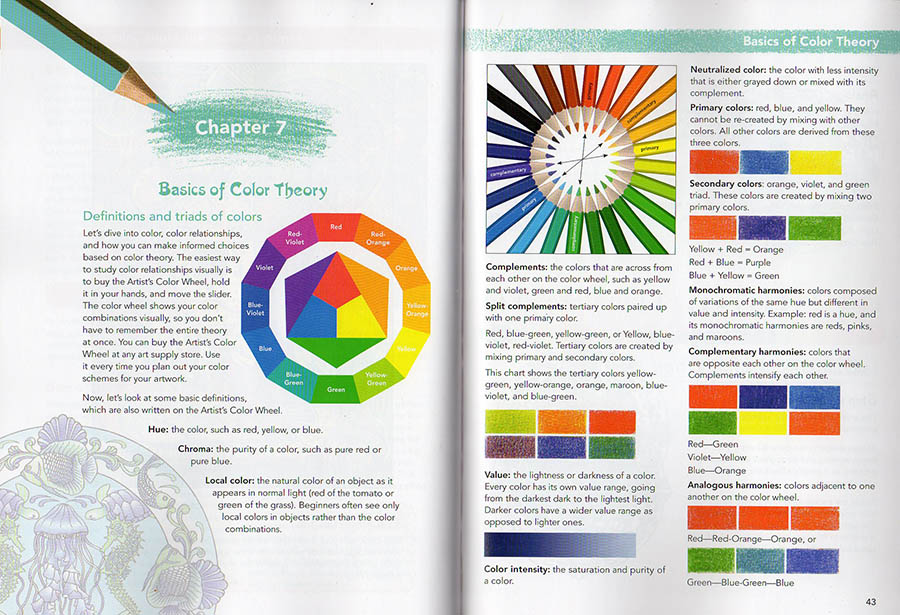
I know it’s difficult to remember all the definitions and I strongly recommend buying a color wheel because it’s visual. You can rotate the dial to see complementary colors, triads, etc. I still use it every time I design my colored pencil drawings. You can buy it at any art supply store or on Amazon.
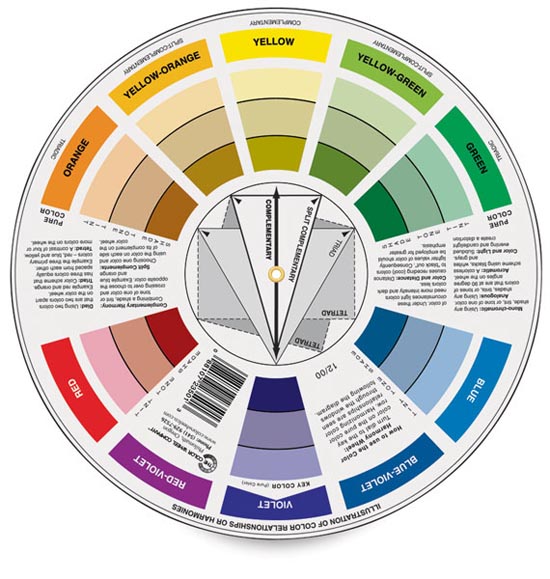
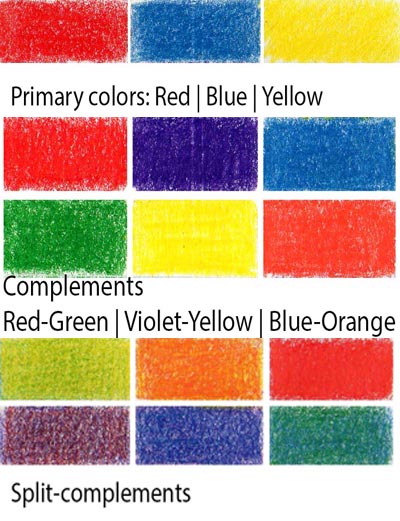
- primary colors are red, blue, yellow. If you put all three primary colors (making them equal in intensity) your colored pencil drawing will be screaming with too much color.
- secondary colors are orange, violet and green. They’re mixed with two primary hues.
- complementary colors in colored pencil drawing – are opposite each other on the color wheel. Complements intensify each other. You don’t want to have all the complements in one drawing for that reason. Red-Green, Violet-Yellow, Blue-Orange.
- analogous colors in colored pencil drawing – are hues adjacent to one another on the color wheel.


- triadic colors in colored pencil drawing –

- split complementary colors in colored pencil drawing – are the colors on either side of a color’s complement. For instance, if your primary color is blue, your split-complementary colors would be yellow-orange and red-orange. Violet’s complimentary color is yellow, and its split-complementary colors are yellow-green and yellow-orange. Blue-purple and red-purple are split complementary colors. Red and green are opposite each other on the color wheel, so red-orange and blue-green are split complementary colors. Split-complementary colors seem to be less color-intense.
- tetradic colors in colored pencil drawing – are a color scheme that uses four colors that are equally spaced around the color wheel. The four colors are made up of two sets of complementary colors, which are also known as double complementary colors. To be honest, I don’t think this color scheme is very useful although you can try it of course. I think it’s too many bright colors competing for attention unless you use as single dominant color in this color scheme.
- monochromatic color harmonies- colors composed of variations of the same hue but different in color intensity and value. Red is a hue. Its monochromatic variant is pink and maroon.

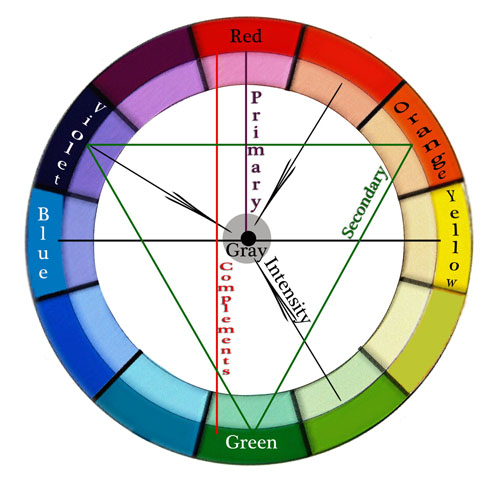
Color Intensity – the saturation or purity of a color. Neutral colors are mostly browns but
Neutralized color – is any color with less intensity that’s either grayed down or mixed with its complement.
Colored pencils don’t mix to grey unlike oil, acrylic and watercolor paint. Therefore you need to use grey colored pencils to neutralize the color so that there are 1-3 dominant colors in the picture, and the rest are neutralized. By using the grey colors you create selective focus as well as beautiful, subtle color variations and texture. In the closeup drawing below you can see grayed down fabric. I shaded with some bright hues first and then added light greys over them.
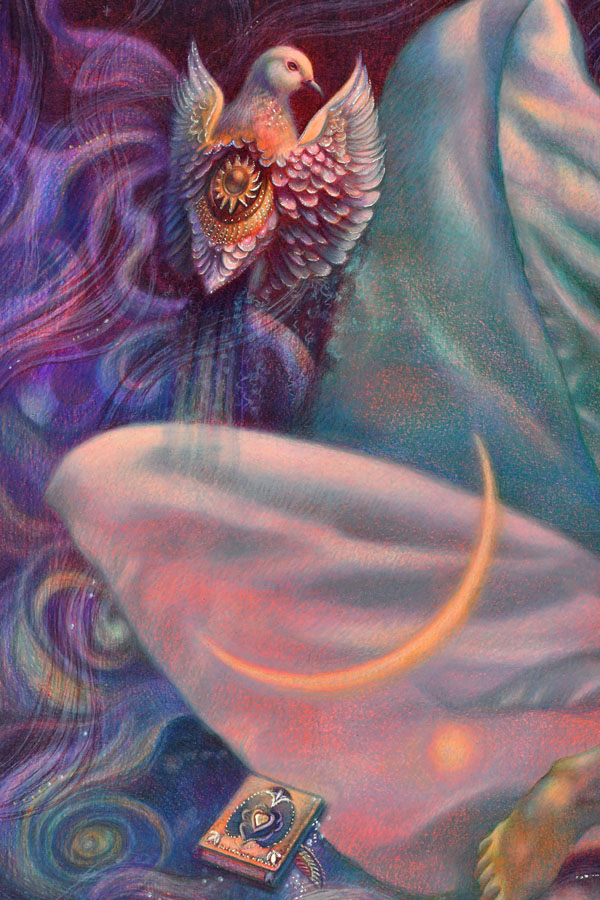
How to use color harmony to create mood and atmosphere in colored pencil drawing
I’d like to share 5 drawing tips on using color harmony to make your colored pencil drawings more realistic.
1. Consider overall color harmony design in your colored pencil drawing
Decide on the overall color theme of your colored pencil drawing. Is it light or dark? Is it monochromatic or in full color? How do you decide? Look at your main reference to see the dominant color. Make that particular color your main focus in colored pencil shading. Everything else should be less color intense to support the dominant color. The color harmony you decide on may not be unique to you but you make it unique by choosing the unusual point of view, stroke or subject. Your choice of a dominant color(s) and contrast determines the mood in the drawing. For example, light blues and pinks look serene, while deep reds and blacks make us feel very differently.
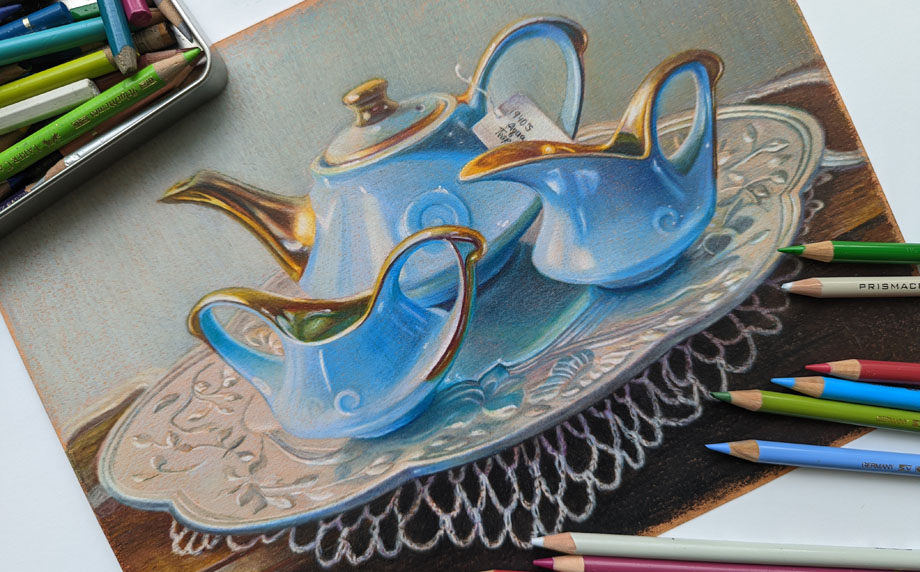
2. Test your colors to decide on the best color harmony
Once you decide on your leading or main colors for your drawing, look at your colored pencils to pick the colors from that color family.
Test your colored pencils on your drawing paper to have consistent color harmony and shading. If you see lots of blue in your reference, test all your blues to see which ones look similar to your picture. Start testing these colors right next to your reference and you’ll notice that some colors are totally off and don’t look right as your main hue. If you have a big box of colored pencils, you have many similar colors. You don’t need to use them all in one drawing because you can adjust your pencil pressure drawing in one blue to get a range of blue tones that’s similar to a number of various colored pencils.
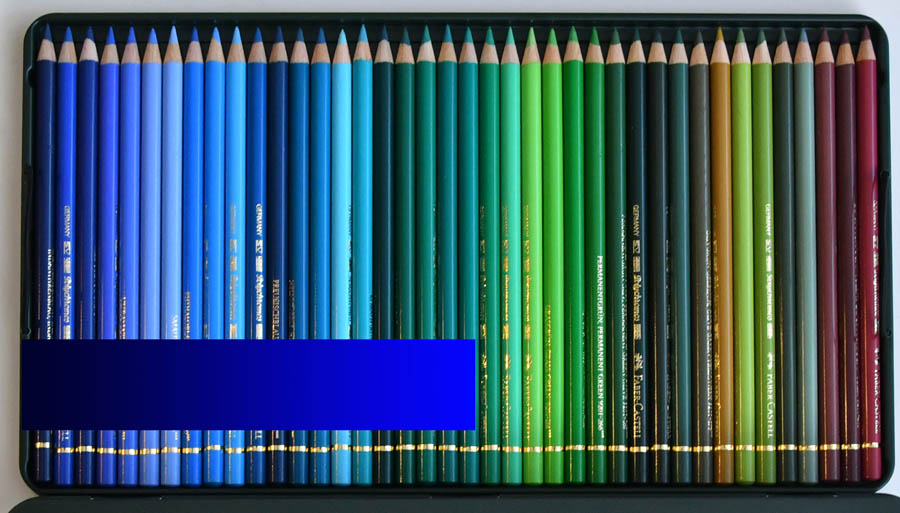
3. Keep it simple to create consistent color harmony
Shade all shadows in one color first. Students love to jump around the picture, using all possible colored pencils to draw the portrait. Instead, pick one color to shade all your shadows first. Colored pencil shading in one color is key to create volume in portrait drawing.
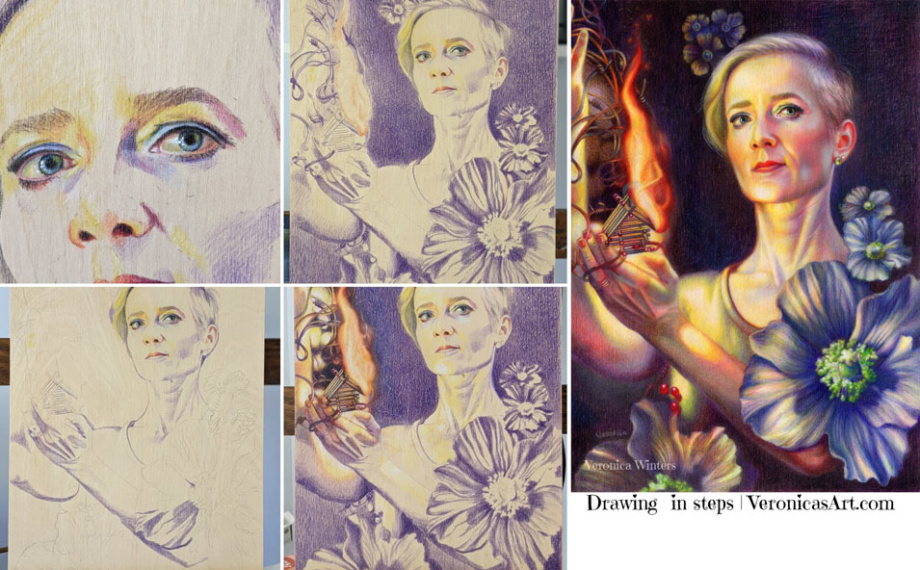
You can make personal colored pencil drawings by focusing on a familiar subject that has unique story line or idea. For example, we all know how the human heart looks like but by designing my own composition and color scheme, I make my colored pencil drawing look different from everyone else’s.
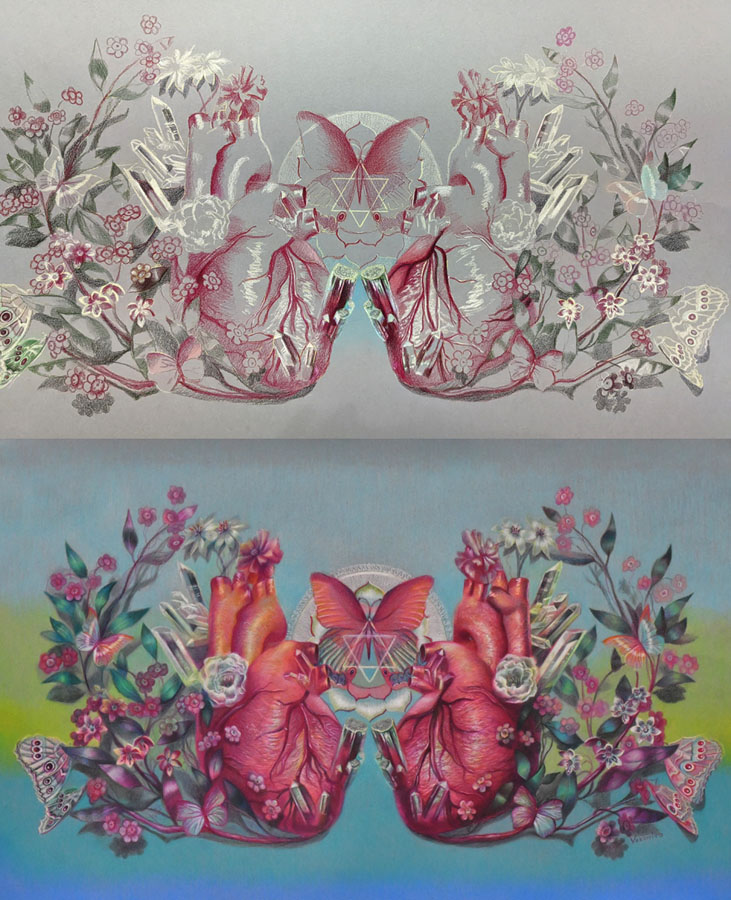
4. Add more tested colors to develop contrast in your color harmony
Most colors are warm and cool. This includes reds, greens, blues and even greys. Some are neutral like browns. You must consider how light or dark they’re. You can’t create a very dark shadow using light pink. You can’t shade around the highlight with a dark blue ( because dark blue is too dark for shading in the light).
Build contrast by having a range of tones in your colored pencil drawing going from very light colors to very dark ones. Of course, not all references call for it but keep it as a guideline for your art and colored pencil shading.

5. Look at your colored pencil drawing from a distance!
You lose all the details by looking at your art from the distance. You do see the inconsistencies in color, awkward shapes, weak shadows and highlights, or undefined edges.
If you consider all 5 rules you will be able to draw a photorealistic colored pencil drawing that has unity in color.

On using color harmony to create unique and personal colored pencil drawings
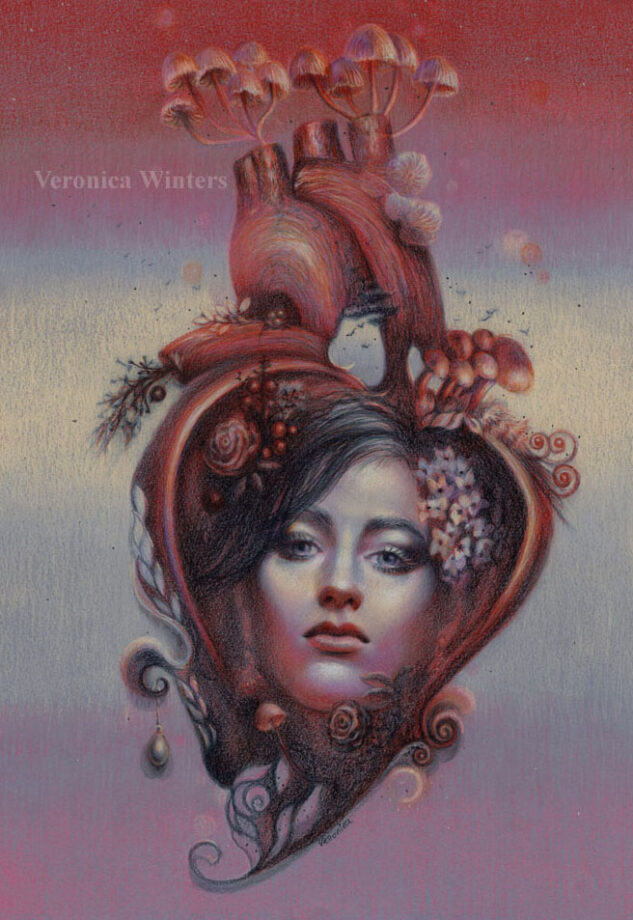
I’d like to share my approach to using color harmony to create unique and personal colored pencil drawings. I think it may be useful for advanced artists interested in colored pencil art.
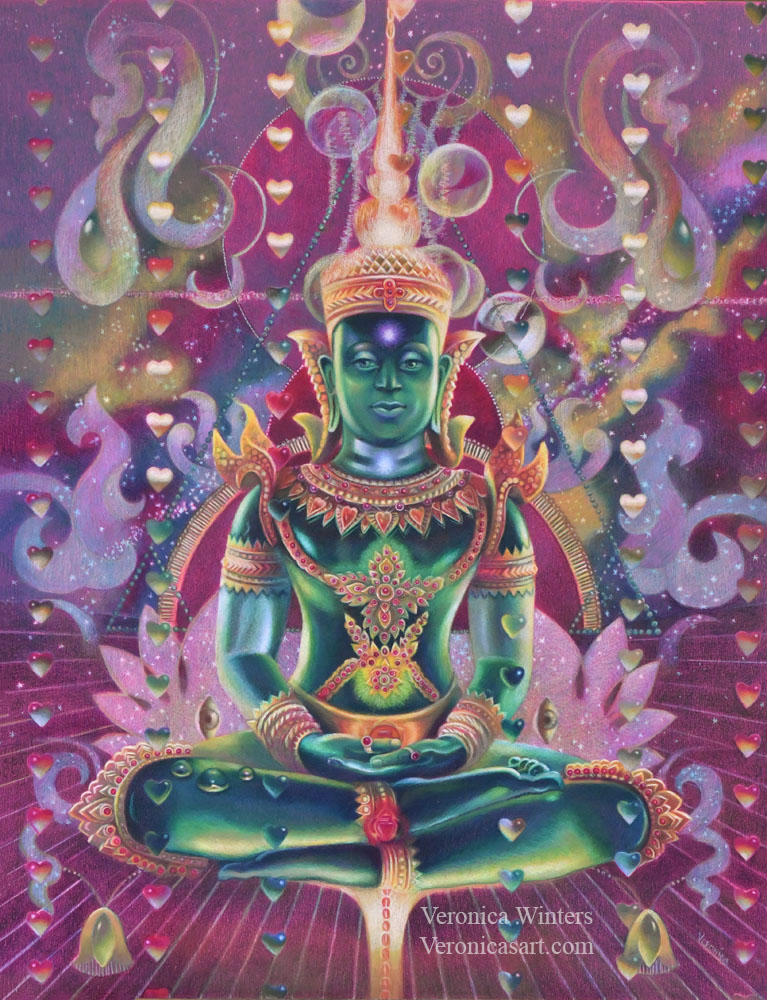
#1 Start with a good idea
Have a good idea in mind what colored pencil drawing you want to create. The idea is a visual story in color, subject or light. It doesn’t have to be the figure. It could be one object displayed in a unique light, rotation or point of view in artist drawing. This is the artistic vision and interpretation of a “boring” object that becomes fun to look at because of your unique interpretation of it. You can train yourself to see the world more creatively by improving your photography, reading, looking at art masterpieces and contemporary art.
I have a folder where I save art to learn from done by other artists. I study unique color choices, composition and subject. Sometimes, the subject isn’t new but the approach to drawing it is totally unique.
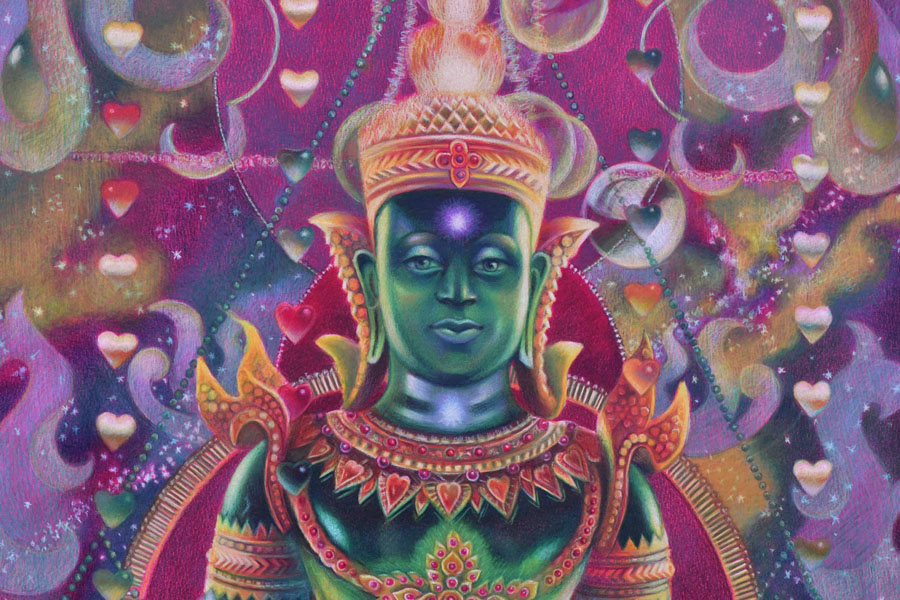
My idea starts from my imagination, reading, travel, emotions and thoughts. One day I imagined a seated figure with light passing through his body. I also imagined a rain of hearts above the figure. I made notes of this idea on my phone…I wanted to depict energy, chakras and the colors of the Universe in this colored pencil drawing of Buddha. I came home and started thinking of my references to illustrate this concept.
#2 Pick high-quality references for realistic colored pencil drawing
At first I wanted to paint a real person but I had no references of the pose. So I browsed pictures from my Thailand trip folder. I saw so many beautiful Buddhas and palaces there…And this green Buddha was made of semitransparent stone that looked like glass.
You need to pay attention where your references come from. Sometimes you can’t enter competitions drawing from someone else’s photo. Other times, you don’t have an emotional connection to the picture which is not yours. Or you need to get a photo release that takes time and effort. Personally I try to use my references but when it’s impossible to do, I go to Pixabay to find inspiration and you can too! Pictures are of high-quality and free for commercial use. The only problem with them is that they’re Photoshoped heavily. You must see if you have enough information to draw from as most filters remove warm/cool contrast from pictures.
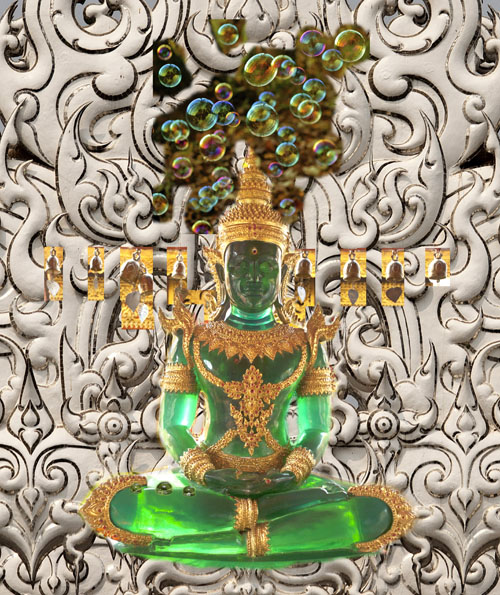
Picking the right references is not enough. They need to “connect” with each other in light and color temperature.
I always design my images around the main subject. I place it first and put smaller shapes around it. In this example, the largest shape is Buddha’s image and my design revolves around the figure. I used the ruler to make straight lines and place the hearts. I cut a heart-shaped template to have a consistent shape in my colored pencil drawing. I use Photoshop to plan the design as much as possible by layering and moving elements around the main figure to arrive at a perfect composition.
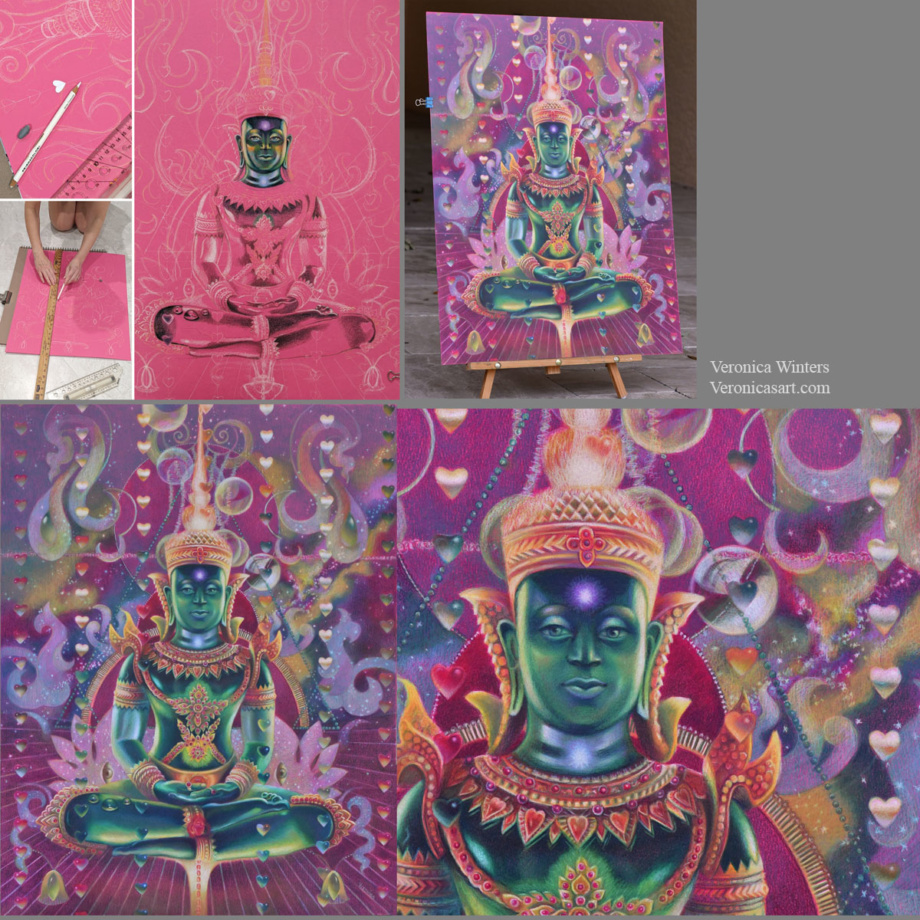
#3 Decide on your color harmony in colored pencil drawing
This drawing has quite sophisticated color scheme. My color harmony is a combination of cool red, green and cool, bluish white.
My tip is to focus on picking 1-2 main colors in your color harmony. It doesn’t mean that you use just two colored pencils for that. It means that you pick the basic scheme, say, ‘yellow-purple’ and design your colored pencil drawing in these colors. The rest of them should be grayed down or become less prominent to support the main hues.
#4 Pick the right toned paper for your specific color harmony
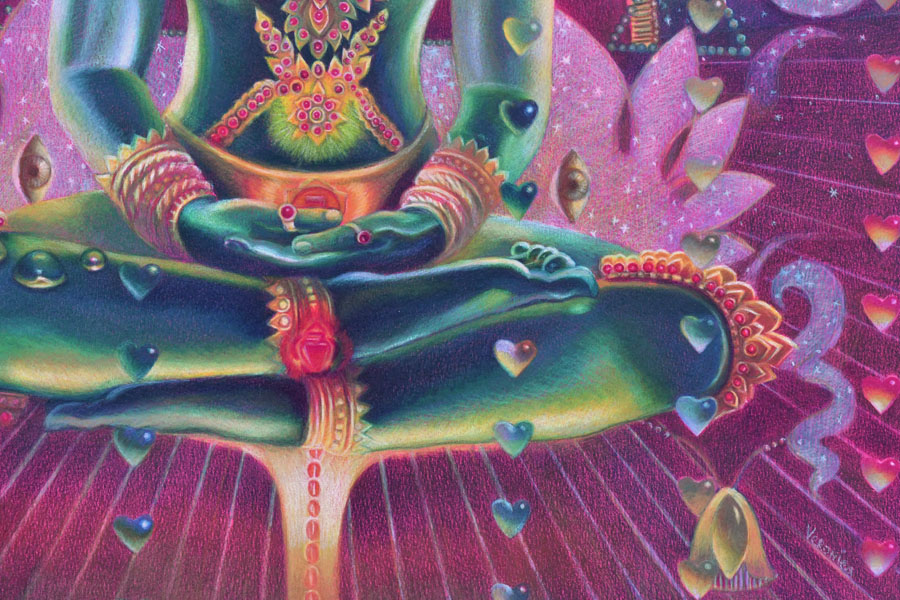
I love drawing on Canson Colorline paper because it comes in a variety of bright colors. The texture is not overwhelming and colored pencils become very vibrant drawing on this paper. (I’m linking to this paper on Amazon but I find that DickBlick has better choices).
Once you picked you main color scheme, say ‘yellow-purple’, look at the color of your drawing paper. In general, don’t draw on yellow paper if your main color is ‘yellow’. Don’t draw on a purple drawing paper if your main color is ‘purple’. Pick the opposite color of paper (like green or orange) and test the colored pencils on it. Test a few colored pencils on it to see how either vibrant or dull they’re. Some colors may disappear on colored paper and others would be super bright.
#5 Have consistent shading in your colored pencil drawing
Begin shading the shadows first using one color. Don’t jump around the picture with many colors. Pick one color and shade all the darks with it. Mark the highlights with white colored pencil (or reserve the space for your highlights if you draw on white paper). Lastly, shade the middle tones connecting the darks with the lights.
Shade with the softest colored pencils, filling in large areas. If you start working with harder colored pencils like Polychromos, it might be frustrating to fill in large space. I save a lot of time and hustle for myself by drawing with the softest pencils like Prismacolor Premier and Luminance or Pablos, and then switching to harder pencils like Polychromos to work on the details in my colored pencil drawing.
Have fun creating your super vibrant colored pencil drawings with beautiful and unique color harmonies!
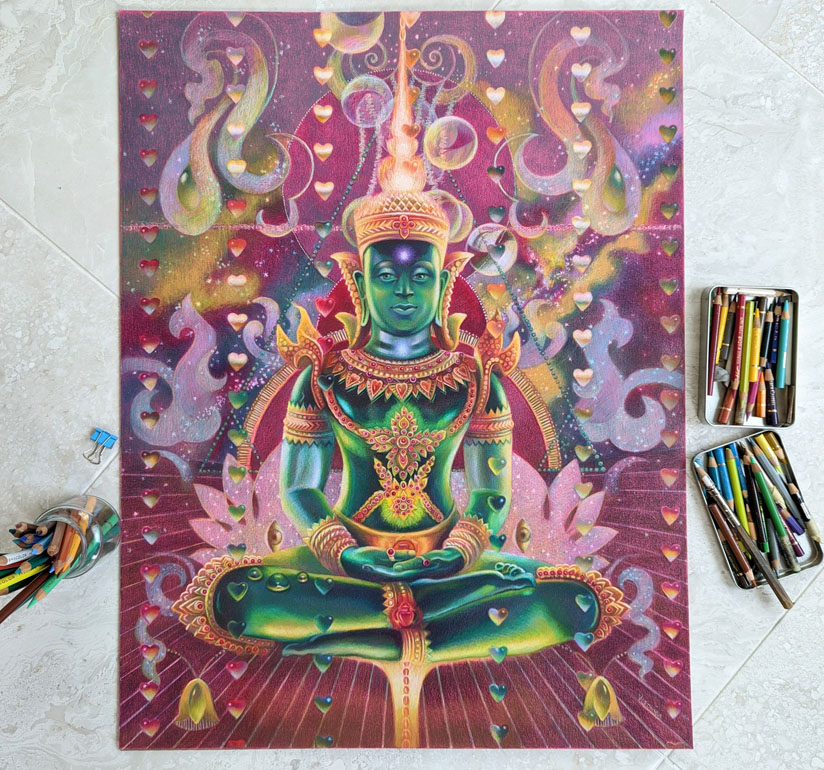
You can learn a lot more about color and color harmonies by taking my video course where I explain the properties of color and how you can design your images around color. I share my secret picking a perfect color scheme for my colored pencil drawings every time.
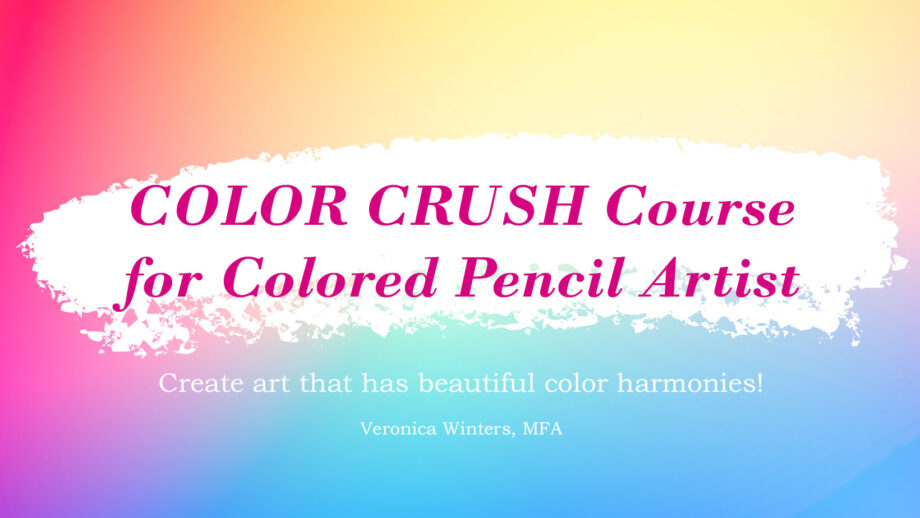
https://veronica-winters-art-school.teachable.com/p/color-crush-course-for-colored-pencil-artist-by-veronica-winters
Colored pencil drawing on Ampersand pastelbord
This board could be an alternative to drawing on colored paper but you must consider the disadvantages working on it in colored pencil.
I like to experiment with different surfaces drawing in colored pencil, searching for the most archival support for my art. Since most people find the colored pencil work inferior to oil painting and even pastel painting, finding the right, archival surface takes the fear away from your clients who wish to buy your artwork otherwise.
This slightly sanded, colored pastelbord by Amersand is similar to the 800 grit Uart paper, which is great for soft pastel painting. Just like the Uart paper, the pastelbord has similar advantages and disadvantages to using it in colored pencil drawing.
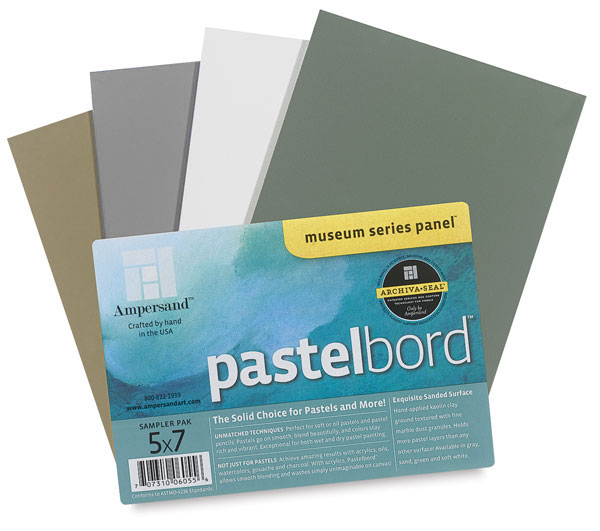
Advantages:
- Ampersand offers a nice variety of colors: sand, dark green, white, gray, and other neutral colors. It takes much less time to shade on colored surface rather than on white.
- Artworks look vivid drawn on this board.
- This archival surface is durable. It doesn’t bend or crumble, stays flat at all times.
- It offers easy display without glass. Just make sure you fix your art beforehand with 3 layers of final fixative. Now you have neither glass reflections nor scare to transport the art!
- The Ampersand pastelbords come in standard sizes that makes it super easy to frame them!
Disadvantages:
- Colored pencil shading on pastelbord is limited. It accepts few layers of pigment.
- It “eats” my colored pencils. If you buy expensive, lightfast pencils, they don’t last long drawing on this surface, and you’d have to replenish them quite often.
- It’s best to use harder pencils on these boards. I use Pablos to fill in all the detail.
- The boards cost more than the average drawing paper, of course.
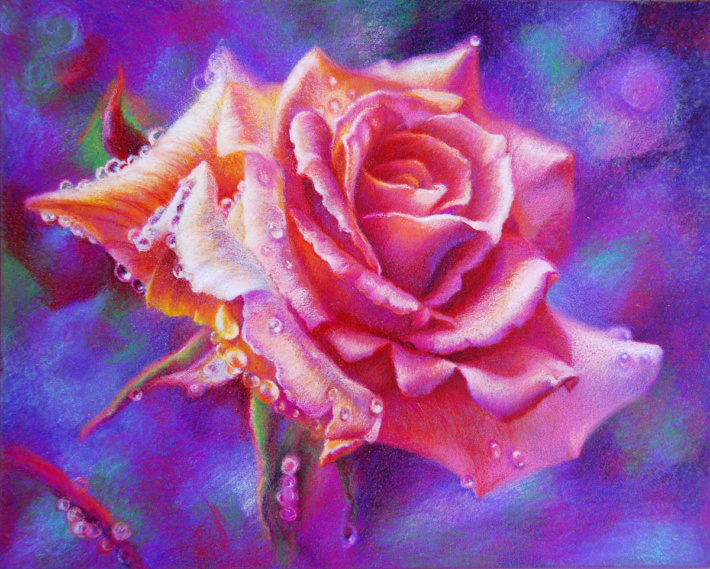
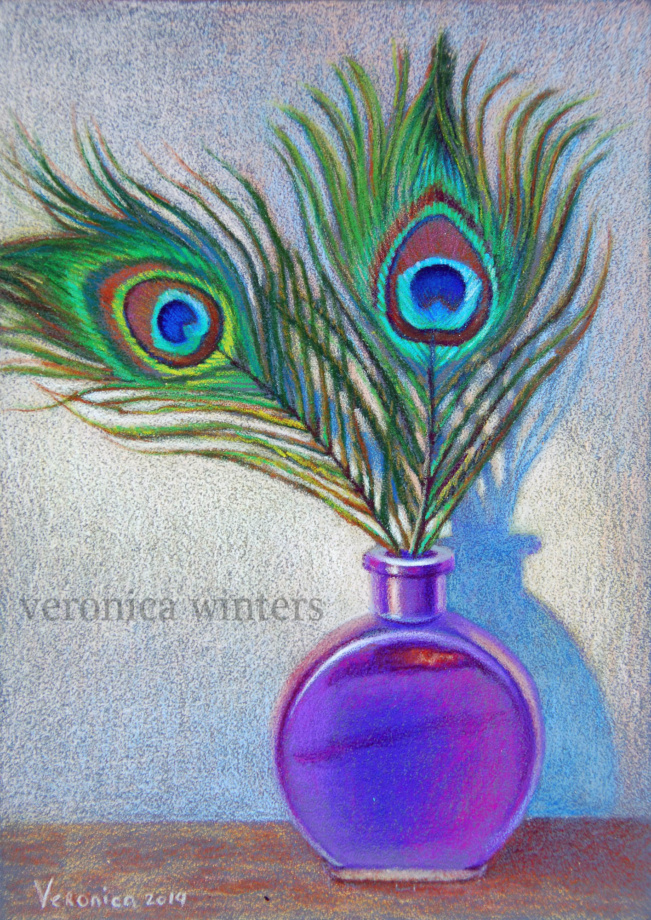
Art Supplies:
Colored Pencils:
- Prismacolor 36: https://amzn.to/3PdrdvY
- Pablo 30: https://amzn.to/3c018Cg
- Polychromos: https://amzn.to/3yoTxF1
- Luminance: https://amzn.to/3P7lkBf
- Caran D’Ache full blender: https://amzn.to/3RkCBrO
Drawing paper:
- Bristol Vellum white paper: https://amzn.to/3nJxeVN
- Canson colorline toned paper: https://amzn.to/3yLd9EO You can buy a wide selection of paper at Dick Blick Art Supplies
- Colourfix primer: https://amzn.to/3WLDdbx
Spray fixative for drawings:
- Sennelier: final fixative https://amzn.to/3yqLOq8
- Grumbacher: working fixative https://amzn.to/3bL7k0X
- DON’T buy the krylon spray!
Other art supplies:
- Transfer paper: white https://amzn.to/3Ittcu7
- black https://amzn.to/3OSTnN5
- Gamsol: https://amzn.to/3yP8nGr
Tombow mono eraser: https://amzn.to/3yOVmMT
I’m an Amazon affiliate. You can find these brands at other art supply sites as well.
Colored pencil drawing on UART Paper: pros and cons to consider in your colored pencil shading
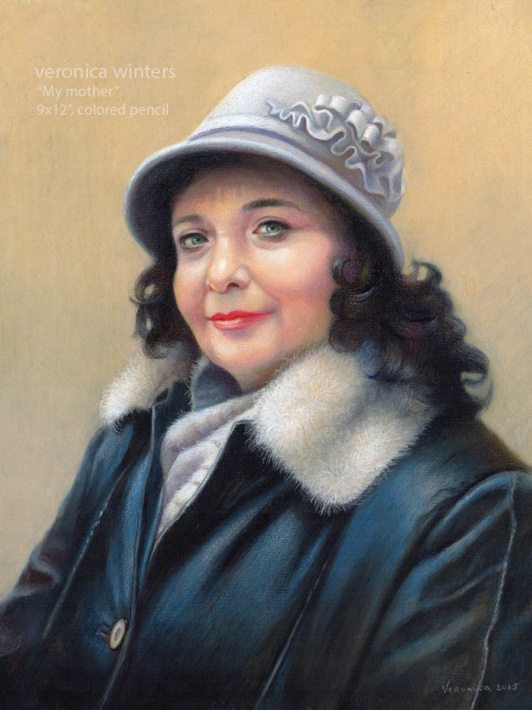
As I like to experiment with new art supplies once in a while, I gave a try using the UART premium sanded pastel paper. It comes in various grits and feels like a real sandpaper. It’s finest grit is 800, which is advertised as a perfect surface for colored pencil drawing.
All the drawings you see here were done on 800 grit paper, tan hue. This paper is produced for pastel painting and the 800 grit is made for colored pencil drawing. But is it really that perfect? Many artists say it’s their absolute favorite, but I found several considerable challenges working on it. Let me explain.
UART Paper review
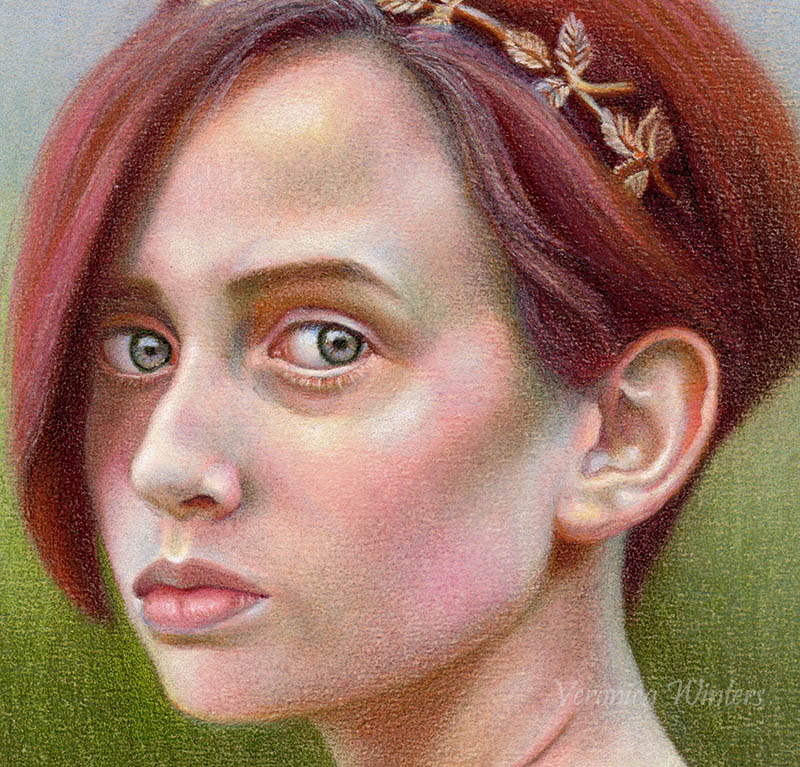
Challenges & solutions:
1. The surface is not smooth enough for colored pencil drawing. The 800 grit makes the strokes look very textural, even when the colored pencil point is super sharp.
The solution isn’t using a paper stump for blending, rather applying Gamsol. It really “calms down” the surface and makes it a lot easier to shade with colored pencils after that. Gamsol melts the wax in pencils, spreads it around, and gives a painterly effect to my first layer.
Warning: if you are a beginner, you might be seriously frustrated with the result, because Gamsol creates loose edges on this paper, and its hard to keep the outlines intact with such approach.
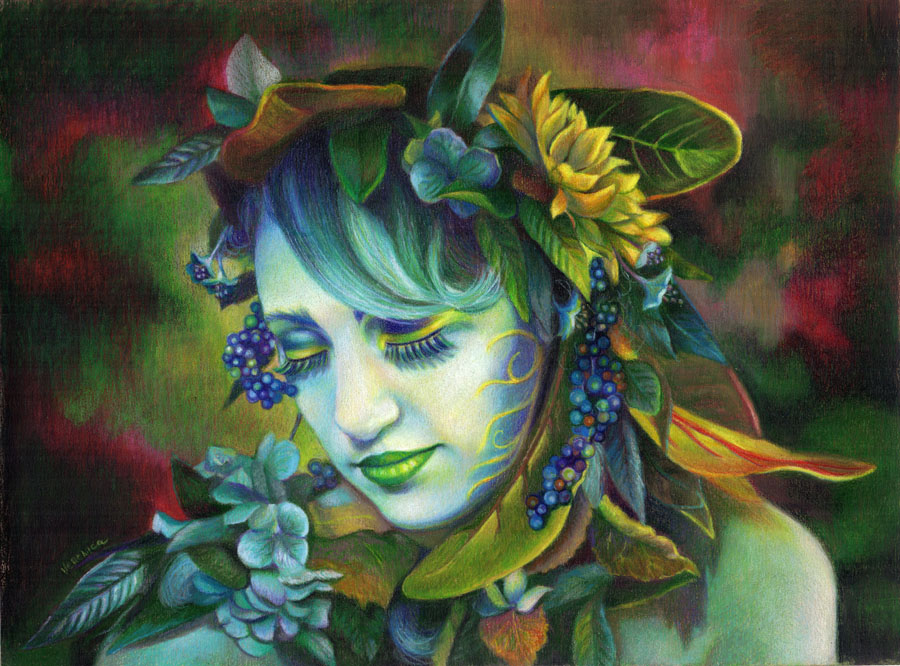
2. So the second solution is to use a soft, clean brush and blend the entire surface with it. Fix this layer with a fixative, wait till it dries and continue working on it shading in colored pencil.
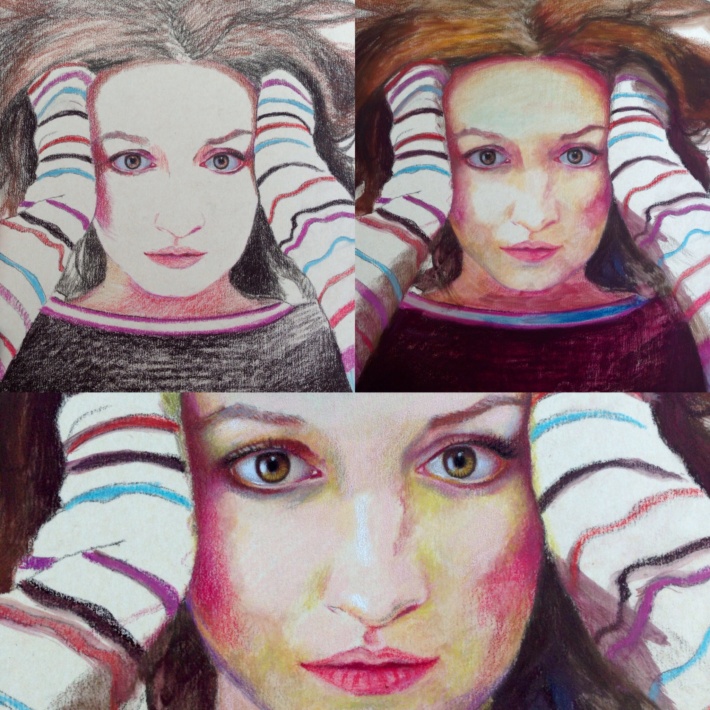
3. It’s easy to make and to spread dirt on paper. This is the case when you begin shading in colored pencil, especially if you use dark colors. The solution: Use the kneaded eraser to pick up the smudges and put a piece of paper underneath the palm of your hand.
4. UArt paper "eats" up your pencils because the sanded surface has a lot of texture. The solution: test your colored pencils to see which ones respond better to this paper. I find that Prismacolors and Pablos work well. You can blend them with a solvent, and continue shading with soft colored pencils over this layer. Another option is to work with Polychromos because they blend and behave like soft pastels. They're quite hard, so they last longer shading on uart paper.
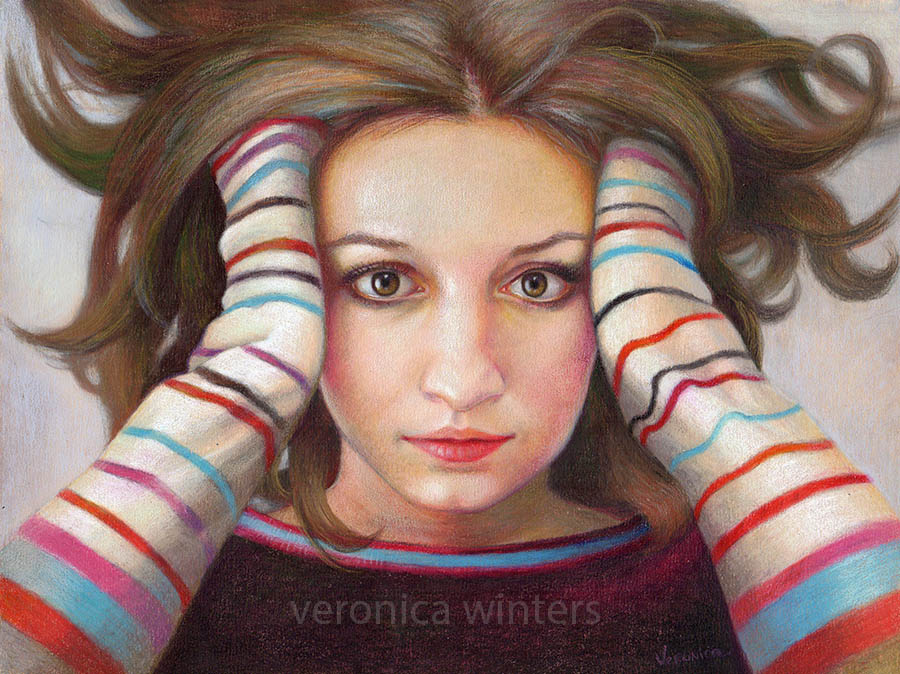
5. Details. After the paper dries (if you use solvents), it’s much easier to continue doing colored pencil shading. However, if you have small details like the eyes or finger nails, etc., it requires precision and patience to fill those details well. I use Polychromos colored pencils for shading the details.
The solution: the solution is to draw larger in colored pencil. In this post you see several drawings completed on 800 grit uart paper. With my third drawing done on this paper titled the “Colorful dreams,” it became much easier to shade because I increased the scale of the portrait. The eyes are not as small in this drawing as in my previous attempts. Still, it was taking a lot more time to fight with the surface’s roughness as opposed to working on smooth Stonehenge.
6. Pretty pricey paper. Selling at nearly $40 for 10-9×12 sheets per pack, you really can’t allow yourself to screw up at all. UArt paper on Amazon.
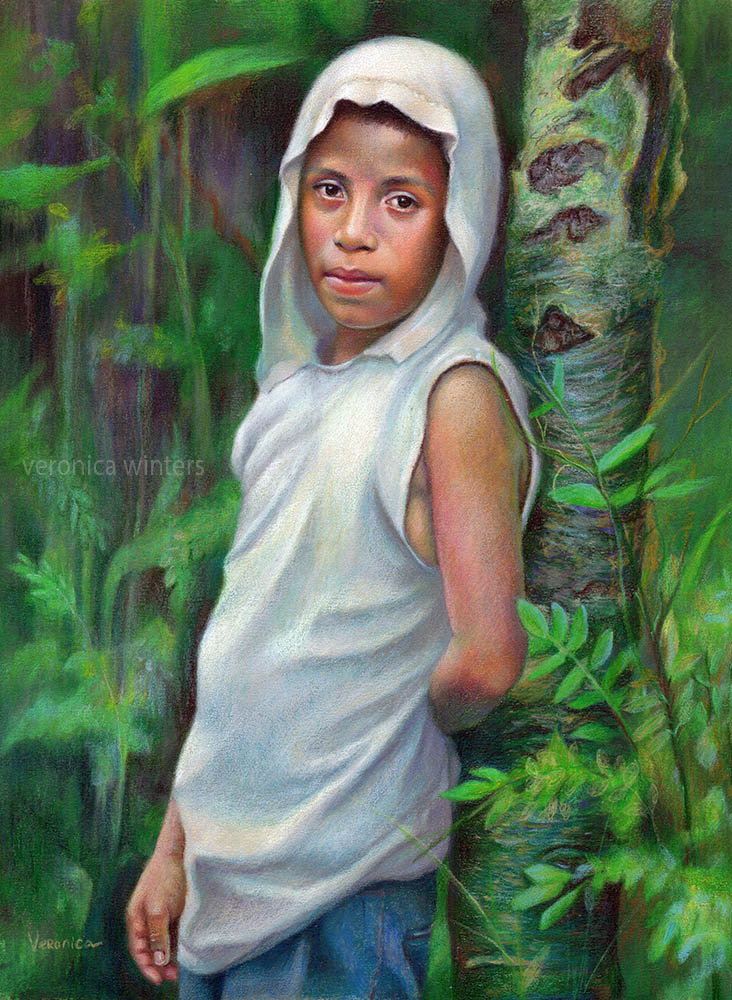
Advantages:
The more I work on it, the more I like it.
1. It accepts many layers of pigment, and it’s really great for soft pastel painting! I used to work with soft pastels but switched to colored pencil drawing because I find it more fun and archival.
2. UART durable surface is much stronger than a regular 80 lb. or even 100 lb. paper. It stays flat at all times.
3. Colors look much brighter on this paper in comparison to drawing on white paper. Colors pop and look gorgeous!
4. Accepts various media. You can make a painterly underpainting with the colored pencils and Gamsol, or use the watercolors or watercolor pencils like Neocolor underneath your work as this surface accepts various media. In my drawing titled “My mother” the painterly effect on her leather coat was a happy accident. Once I used Gamsol on dark colors, it melted with the blues I used for the highlights and created the leather coat effect.
5. The paper is at its best when you work large. I discovered that 9×12″ is just too small to work on subjects with tiny details, like the boy’s face here where I had a hard time keeping up with the anatomic accuracy.
Because this paper is designed for pastels, the colored pencil shading technique should be close to pastel painting technique. What do I mean by that? Draw from dark to light. Shade with dark pencils first. Fix the layer. Continue shading with lighter colors over it. You’ll see the effect it’s producing. Quite awesome and so different from regular colored pencil drawing on white paper!!
Hopefully these pros and cons will let you make an informative decision buying the uart paper and having fun with it. 🙂
Other artists working on this paper:
Linda Lucas Hardy & Lisa Ober

If you’d like to take your colored pencil drawing to the next level, check out free previews from my video courses. Click on the image above to learn more!
Colored pencil shading on uart paper, step-by-step tutorial
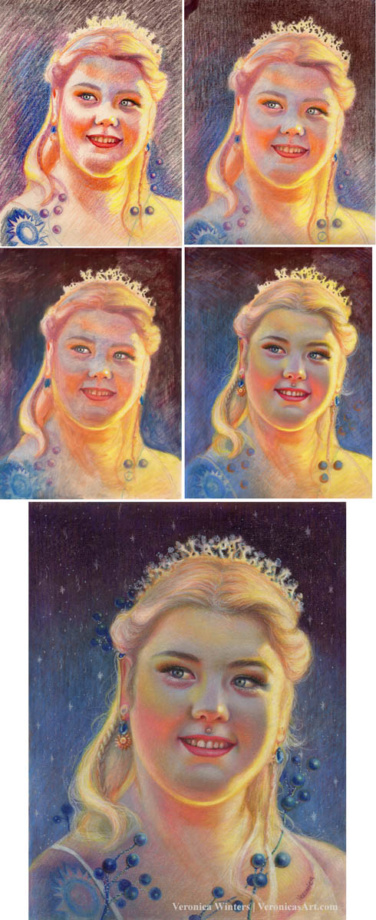
Here you can see the steps drawing in colored pencil on uart, 800 grit paper.
- In the first step I applied major lights and darks very loosely.
- In the second step I blended everything with a soft brush. You can see a very dark left corner there. This is how I tested the solvent on it.
- In the third step I applied Gamsol over the entire drawing, letting it dry. This is an underpainting.
- In the forth step I began layering more color aggressively.
What I love about this paper that the colors looks super vibrant and I love working from dark to light on it. (I apply much darker colors on purpose to lighten them up in subsequent layers).
The UArt paper accepts many layers of color. In the final image I use a touch of oil-based paint pen by craftsmart to draw those tiny blue dots. This marker has a pearlescent quality that’s subtle and beautiful. I hope that this short tutorial helps you in your creative pursuits.
Check out all my colored pencil drawings!
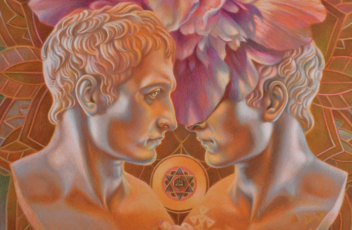
The One Colored Pencil Technique you must master to create Photorealistic Colored Pencil Drawings
Colored pencil shading techniques
If your aim is to create photorealistic colored pencil drawings, you need to master the very basic drawing concepts, which includes colored pencil shading. Whatever subject you draw in colored pencil, it’s important to control your pencil pressure to achieve realistic result.
Pencil pressure
For instance, when you press on your pencil very lightly, you won’t be able to achieve rich darks or create enough contrast in colored pencil drawing. At the same time if you’re heavy-handed, your drawing may become too muddy or overworked quickly. So it’s all about finding that perfect balance in colored pencil shading.
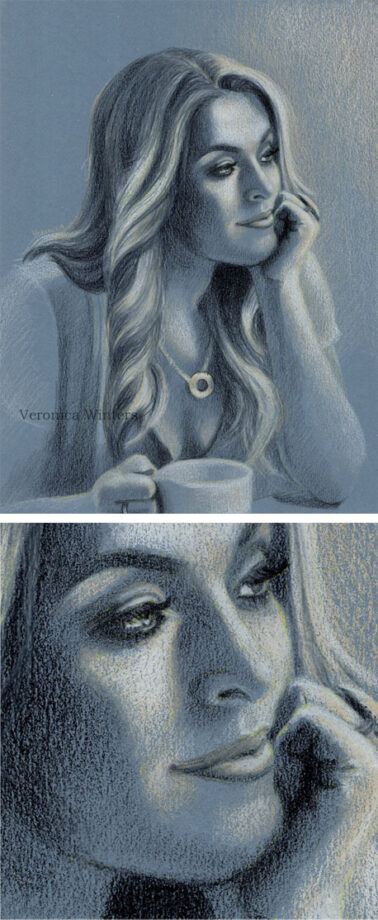
You do need to increase your pencil pressure in colored pencil drawing when:
- you try to blend some areas with light pencils shading over the dark layers
- you blend the areas around the highlights
- you want to build up contrast in progression
- or when you work on textured paper and have to do lots of filling of a paper’s tooth.
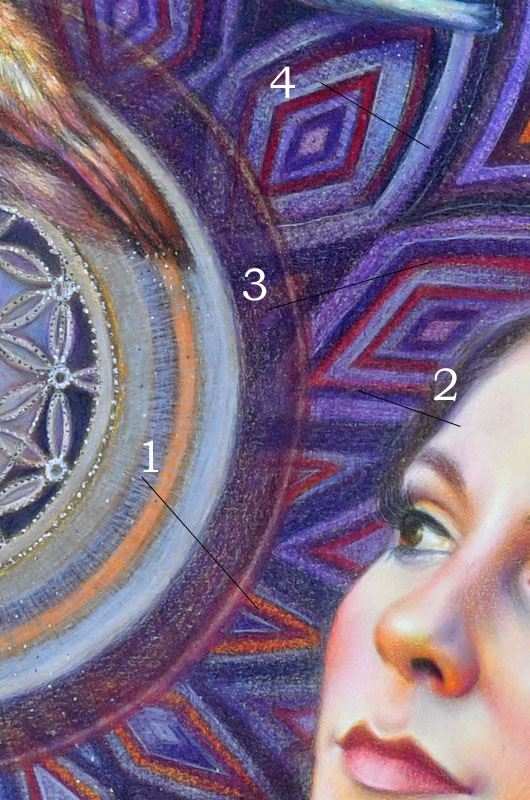
#1 I shaded with white colored pencil over the dark area using a unique stroke to create the texture I wanted. While some dark is showing through, I applied the white colored pencil with medium pencil pressure.
#2 I did a lot of shading with colored pencils on the light side of her face using a very heavy pencil pressure to raise the lights as much as possible. White colored pencil sits on top of all other light colors I shaded with there.
#3 I shaded with a light pencil pressure to create that purple circle so that some previous layers still show through it.
#4 I used a very light grey colored pencil to shade over the purple with heavy pencil pressure. It lightened up and blended the area.
Check out available video courses here: https://veronica-winters-art-school.teachable.com/
Colored pencil techniques: colored pencil shading in white and off-white colors
When you work on your colored pencil shading using heavy pencil pressure, the area becomes very waxy and so filled with the pigment that you can’t layer more color over it. That’s the desired outcome. However, if you feel like you want to add even more color to that area, spray it lightly with a fixative. Wait for it to dry and shade over it again.
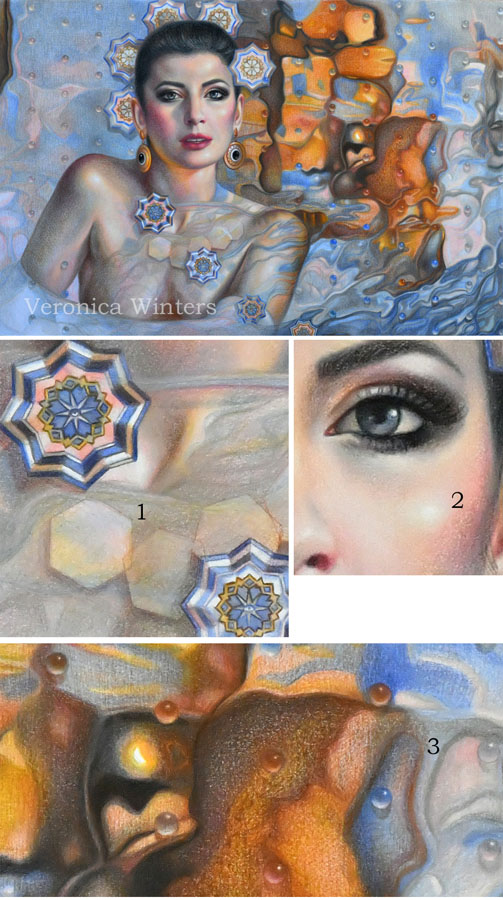
#1 I used white colored pencil and medium pencil pressure to lighten up the geometric shape. It also blended it.
#2 I used a very soft white colored pencil (Luminance or Prismacolor Premier or Pablo) to shade around the highlight leaving the highlight itself uncolored. If your colored pencil is hard this kind of blending is difficult and incomplete.
#3 I used soft, light grey colored pencil and a very heavy pencil pressure to blend the area shading with colored pencils.
I hope that this article helps you in your creative colored pencil drawing and you also find some new colored pencil drawing ideas. Controlling your pencil pressure shading with colored pencils is a must. So next time you draw, pay attention how you press on your colored pencils and observe what results you’re getting. If you’d like to learn more about colored pencil drawing, check out these art books or watch my free videos on YouTube. You may find your answers there. 🙂
Art supplies on Amazon
- Drawing pad, bristol vellum
- Kneaded eraser
- koh -i-noor drawing paper, colored pencil
- Tombow mono eraser
- Drawing fixative
- Sennelier fixative for charcoal and pencil has a super fine spray mist, matte, high-quality
- Gamvar varnish for oil paintings, satin
- Brush for varnishing oil paintings
- Color Wheel
- Canson Colorline drawing paper is available in many colors and various thickness. You might find better choices at art supply online retailers
- Molotow metallic marker, gold
- How to color like an artist, coloring book for children and adults
- The colored pencil manual, art instruction book
If you’d like to connect with me:
4 best colored pencil shading techniques
Learn how to create depth and dimension in your colored pencil drawings with these top four colored pencil shading techniques. In this article you’ll discover the most useful shading techniques that you can apply to any subject you draw. I also share some necessary tools that can help you create colorful pencil drawings.
Colored pencil shading techniques in art help create the illusion of depth, volume, and form in a two-dimensional artwork.
Before you begin drawing, place your paper on a hard and smooth surface. You can use the backing from your drawing pad. Don't draw on soft surfaces under your paper because your drawings will lack definition. It's much easier to create tight shading and sharp edges drawing on paper that has a field sketch board underneath it. They come in different sizes under many brands.
#1 Crosshatching in colored pencil drawing
Crosshatching in art definition:
Crosshatching is the most useful colored pencil shading technique that’s used to create a variety of effects in colored pencil drawings including volume creation and blending. Hatching involves creating parallel lines or strokes to indicate shading. The lines can be closely spaced or widely spaced, depending on the desired effect. By varying the density and direction of the lines, different values and textures can be achieved.
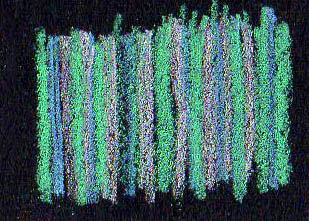
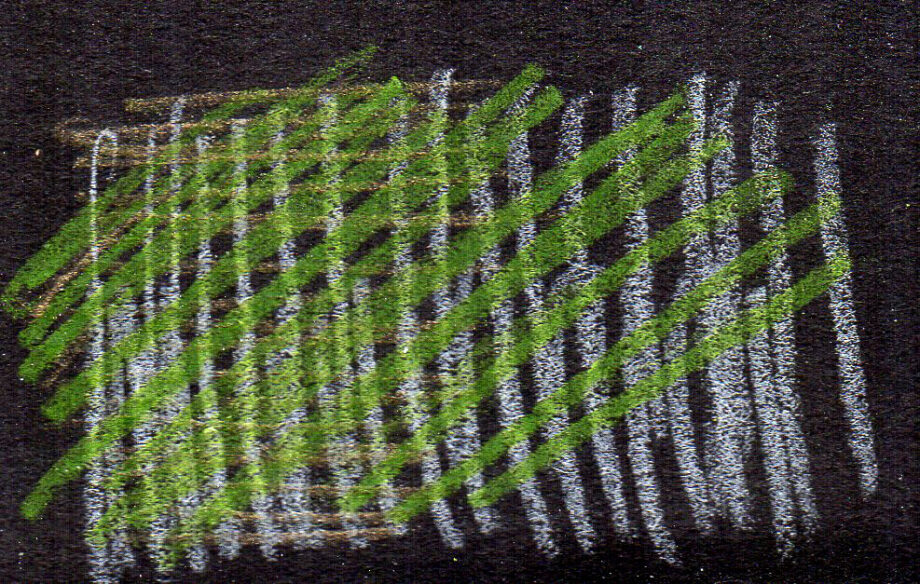
Cross-hatching is similar to hatching, but it involves layering sets of parallel lines in different directions. By overlapping the lines, darker and more complex shading with colored pencils can be achieved, creating depth with colored pencils. When I crosshatch the lines, I rotate my paper often to create tight shading with depth and volume. If you shade every object in one direction, you’ll make it look flat lacking volume. Crosshatching is the most useful shading technique for beginners and advanced artists.
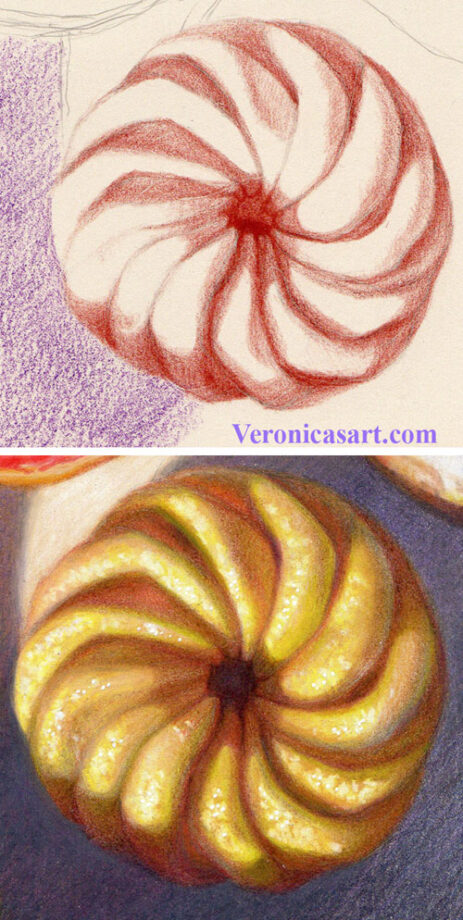
#2 Colored pencil shading with tiny circles
I often use shading with tiny circles to blend colored pencils, to soften the edges around the highlights, to make transitions between the tones, and to add colorful dimension to my art. This meticulous method of shading with tiny circles allows for precise control in color application. Because we see no visible lines, shading with tiny circles allows artists to create subtle variations in light and shadow, adding dimension to colored pencil drawings.
Pencil pressure is important using this shading technique. The more pencil pressure you use, the more blended the surface will be. Usually, art students look for special tools and blending techniques for colored pencils, but most blending can be done with simple shading with tiny circles, drawing on Bristol Vellum paper!
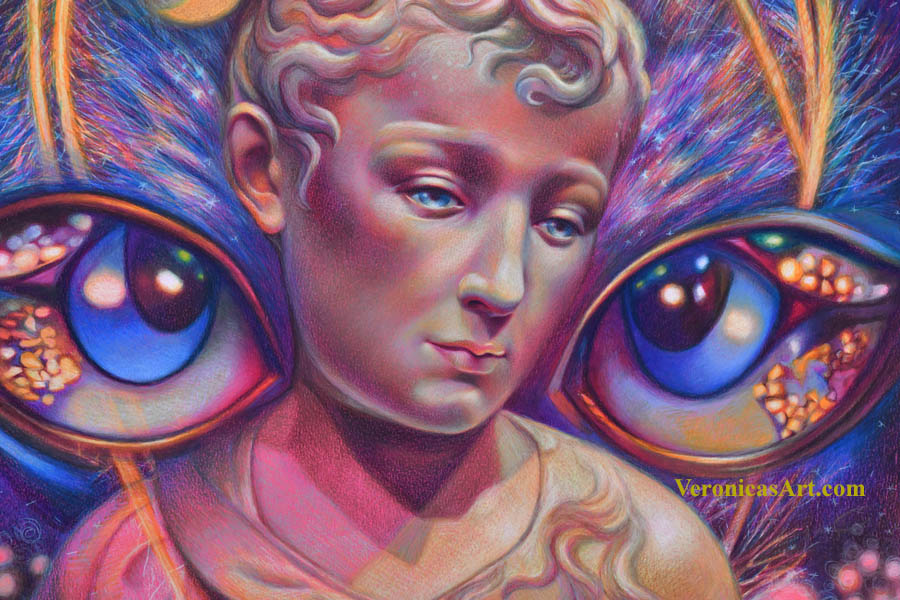
#3 Creating contrast with strong and soft edges in colored pencil drawing
Creating depth with colored pencils involves artistic control of edges. Art students shade everything the same way. Therefore, art lacks contrast and definition. I make a creative decision what I want to have in focus and out of focus. This is where the edges come in. To define the edge you must use a very sharp point of colored pencil. Re-define and outline the sharpest edges during your entire shading process because they tend to disappear during shading with colored pencils. Step back from your drawing to see if they pop or not. I usually place sharp edges in my focal point.
Not everything must have a strong edge. Some edges must remain soft and muted as we see them in real life. Therefore, I intentionally blend, soften or crosshatch some of the edges to keep them out of focus. It’s one of the most useful colored pencil shading techniques.
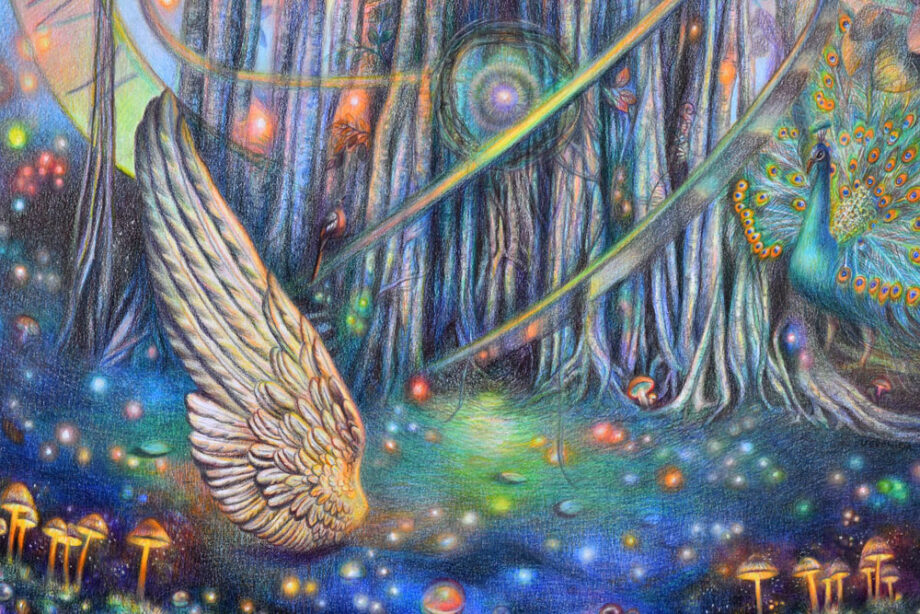
#4 Shading with greys to blend the colored pencils
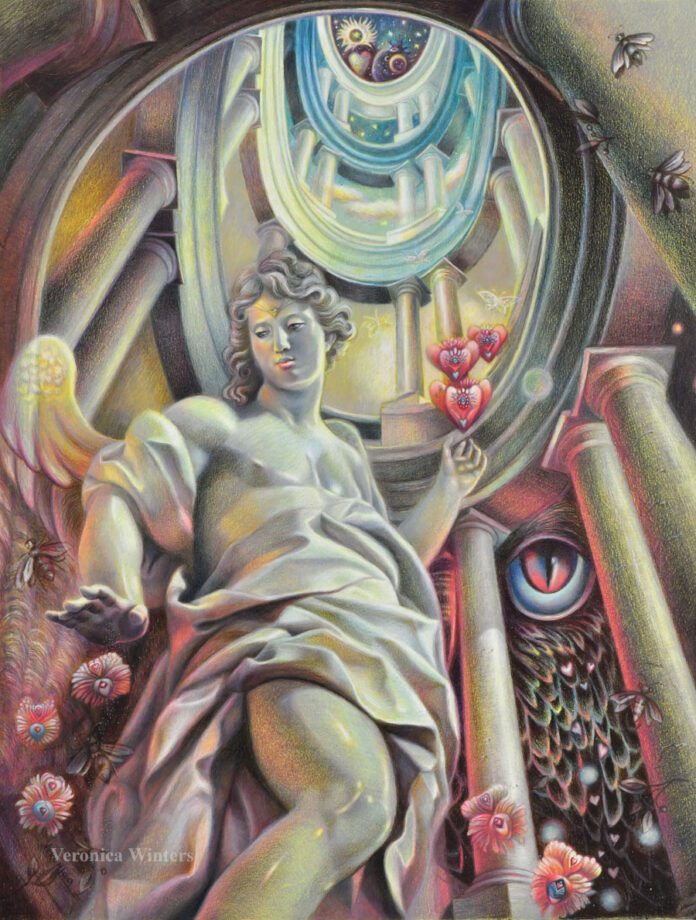
I love adding dimension to colored pencil drawings by shading with grey colored pencils over the previously applied color layer. It does two things. This shading technique does awesome blending without the use of solvents or time-consuming blending with pencil blenders. Second, this shading technique adds new dimension to color in art. By making some areas less bright, I’m able to control and bring forward major colors that are part of my overall composition and design. This is one of my favorite shading techniques for portraits because I can create depth with colored pencils, shading over local colors.

Normally I don’t use the stippling technique because it’s too time-consuming but if you have a subject calling for it, by all means use it. All four shading techniques can be used in colored pencil drawing of any subject – landscape, still life, portrait, etc.
If you’d like to learn more about colored pencil techniques, check out the video courses here: https://veronica-winters-art-school.teachable.com/
Happy drawing!
Art supplies:
- Drawing pad, bristol vellum
- Kneaded eraser
- koh -i-noor drawing paper, colored pencil
- Tombow mono eraser
- Drawing fixative
- Sennelier fixative for charcoal and pencil has a super fine spray mist, matte, high-quality
- Gamvar varnish for oil paintings, satin
- Brush for varnishing oil paintings
- Color Wheel
- Canson Colorline drawing paper is available in many colors and various thickness. You might find better choices at art supply online retailers
- Molotow metallic marker, gold
- How to color like an artist, coloring book for children and adults
- The colored pencil manual, art instruction book
How to use grids in art to create realist painting
What is a grid method in art?
The grid method is a technique used in drawing and painting to help artists accurately replicate an image or scene changing the scale of the picture. The artgrid is one of the ways to transfer the outlines onto enlarged canvas with maximum precision. The artist can grid a small reference photo to enlarge the image to a big canvas with maximum accuracy. It involves breaking the reference image into a grid of equally-sized squares, and then creating an enlarged grid on the drawing or painting surface. The artist then copies the lines seen in each square of the grid with the corresponding details of the reference, resulting in a precise and proportionate representation of the original image. It’s especially useful in portrait and figure painting.
Hyperrealist artists often use grids in art to create realistic portraits, landscapes, still life or other complex compositions that require precise proportions and details. It takes many years to learn to create accurate and precise drawings by hand and the grid process helps achieve the same result in a much shorter time. The realist artist spends his time working on an original idea and outline sketch, erasing and composing the image on a sketch piece of paper. Then he simply grids that sketch to enlarge it to a desired scale getting ready to paint it. Having clean outlines and no residue on canvas is important to realist drawing and painting. By breaking down the complex picture into smaller, manageable parts, the artist can focus on recreating one section at a time, which can make the process of transferring the overall composition less overwhelming. Therefore, grids in art or gridding is often used by artists although it’s not the only way to transfer and upscale images. Nowadays, artists use projectors, transfer paper, print outs, etc for this purpose.
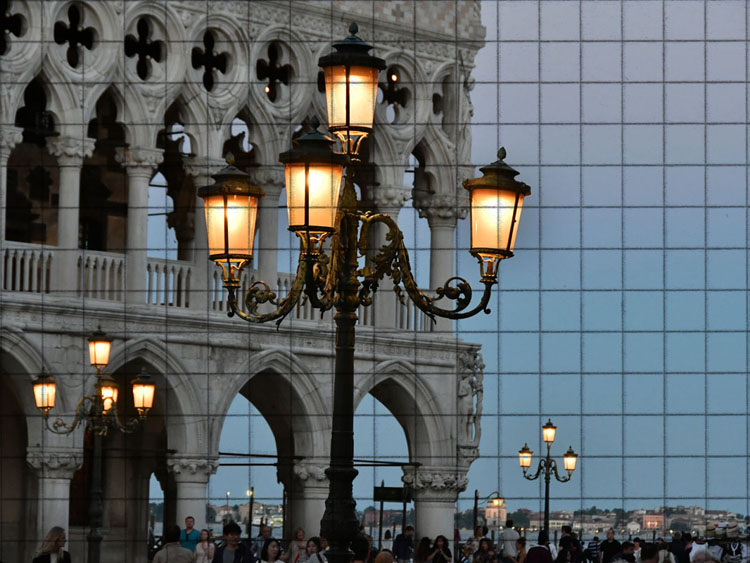
How to use grids in art
To use the grid method, the artist first needs to select a reference image or a composite scene to draw or paint. The artist needs to decide on the size of the grid squares, which often depends on the image’s complexity. Once the grid is established on both the reference image and the drawing or painting surface, the artist can start filling in each square with the corresponding details, using the lines of the grid as a guide for accurate placement and proportion. In the images below, you can see my process of gridding the photo and then transferring or copying the outline onto my drawing paper.

This reference’s ratio is about 6×10 inches, which means that I can enlarge it to 12×20, 18×30, 24×40 and so on. You multiply the number by two to get the enlargement. Also if the image has lots of squares, you want to number them both vertically and horizontally to keep track of the squares when you begin to transfer the image.
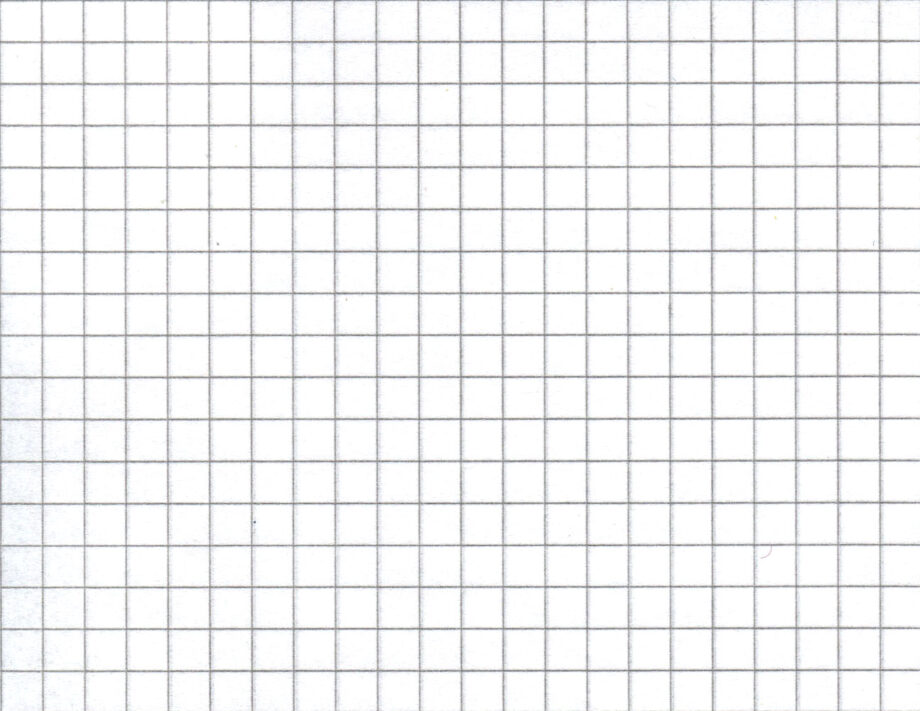
Is grid art cheating?
The short answer is no. Is using a ruler by an architect called cheating? It’s simply a tool to achieve the accurate result. You also learn to eye-size the objects from a reference doing art grids. So there is nothing wrong with it, in my opinion. While the grid method is a useful tool for artists, some argue that it can also hinder creativity and spontaneity in the artistic process. It depends on the art style, in my view. I doubt it hinders your creativity. Abstract artists and many other artists who paint with spontaneity simply don’t need to use the grid because their painting technique isn’t about meticulous precision, rather it’s about gesture and expression – the opposite technique and result of the hyperrealist painters.
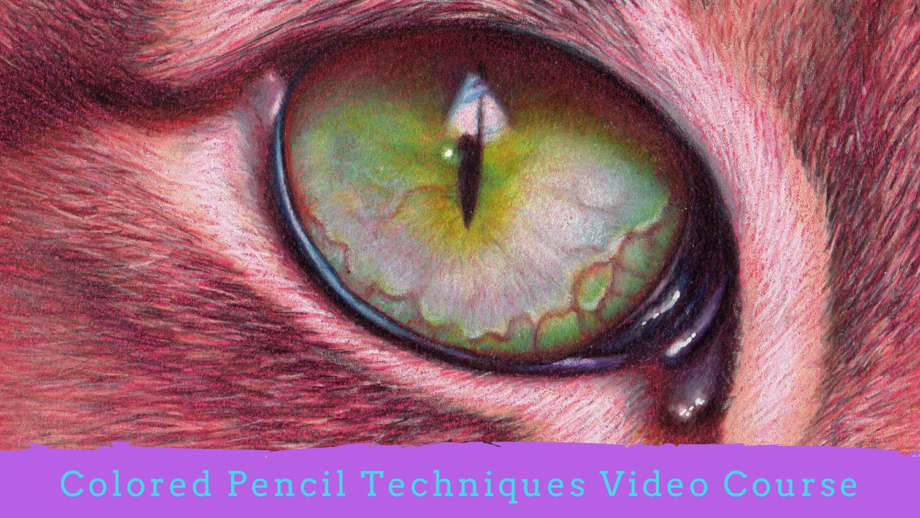
Who invented the grid method in art?
Grids in Art History
I think it’s not quite clear who invented the grid method to upscale and transfer images but at the same time the grids or the grid lines were used with different intent and purpose for centuries including Egyptians and Greeks. Mathematical grids have a different purpose from the artist’s, using an artgrid to scale-up and transfer the image. Art grids used in architecture had a different purpose from a simple image transfer and enlargement. Grids were important in design because they were used to create balanced and harmonious designs and compositions involving geometry, math and scale as you can see in one of the pictures below.

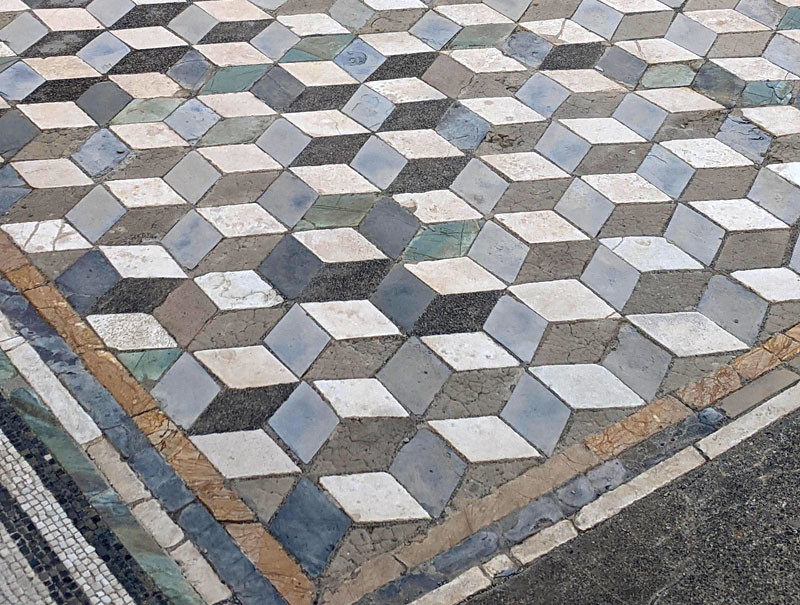
The grid is a series of intersecting lines that divide a surface into equal parts. In ancient Greece and Rome, for example, grids were used to create ancient Greek mosaics and floor patterns and to plan the layout of architectural structures. In the medieval period, grids became a key tool in the creation of stained glass windows, which required careful planning and precise placement of colored glass pieces. The grid provided a framework for the design, allowing for accurate and proportional depictions of figures and scenes. During the Renaissance, grids continued to be used in architectural design and in the creation of frescoes and other large-scale murals. Artists such as Leonardo da Vinci and Albrecht Dürer used grids as a tool for creating accurate perspective and proportions in their drawings and paintings. In the 20th century, the use of grids in art took on a new significance as modern and contemporary artists began to explore the grid as a conceptual element in their works. In the early 1900s, Russian avant-garde artists such as Kazimir Malevich used grids in his abstractions, creating works that emphasized pure geometric form and color over representational imagery. Later, American artists such as Sol LeWitt and Agnes Martin embraced the grid as a foundational element of their minimalist art, using it to create precise, geometric compositions that explored the relationship between order and randomness.
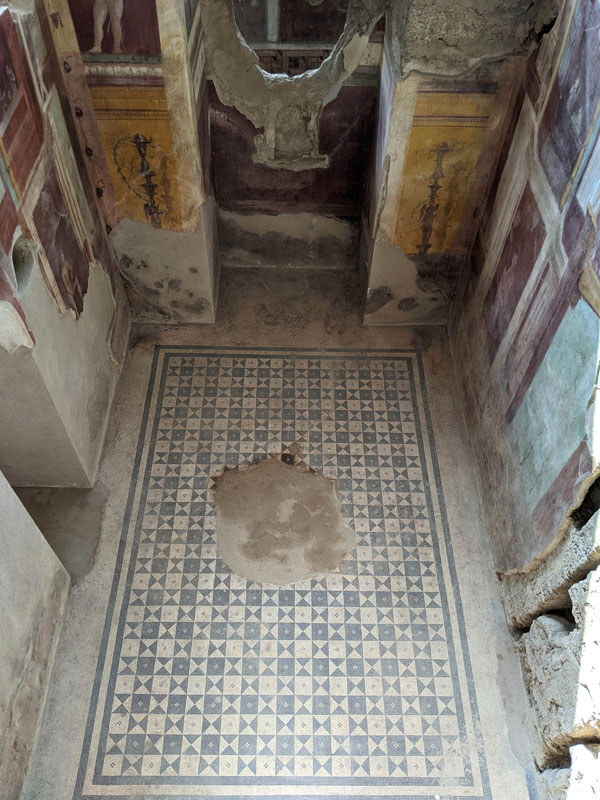
If you’re interested in art history, geometry and design, I recommend to read “Rhythmic form in art” by Irma A. Richter. I wish this book had more illustrations but you can get a thorough understanding how artists designed their art images based on mathematic shapes and forms. If you struggle with composition, you’ll learn how to apply geometry to your compositions. You can also find many books of MC Escher’s drawings and study his use of art grids, perspective and design.
What artists used grid method?
The grid method has been used by many artists throughout history, particularly those who create realistic and detailed works of art. Grids are not useful for gestural, free style painting. They’re needed to create hyperrealist art or art that has strong sense of geometry and design. Here are some famous artists who have used the grid method in their work:
Leonardo da Vinci: The Renaissance master is known to have used the grid method to achieve accurate proportions and perspective in his drawings and paintings.
Albrecht Dürer: The German Renaissance artist also used the grid method to create detailed and precise works, particularly in his prints and engravings.
Chuck Close: The American painter is famous for his photorealistic portraits, which he creates using a grid method that allows him to break down the image into small sections and build it up piece by piece.
David Hockney: The British artist is known for his use of the grid method in his photographic works, which often involve multiple photographs arranged in a grid to create a single image.
Johannes Vermeer: The Dutch Baroque painter is thought to have used a camera obscura and a gridded glass plate to achieve the precise perspective and proportions in his paintings.
Gustave Dore: The French illustrator and engraver used the grid method extensively in his detailed and intricate illustrations for books such as “The Divine Comedy” and “Don Quixote.”
MC Escher: must have used the art grids to create his complex art compositions that have incredible geometric designs and perspectives!
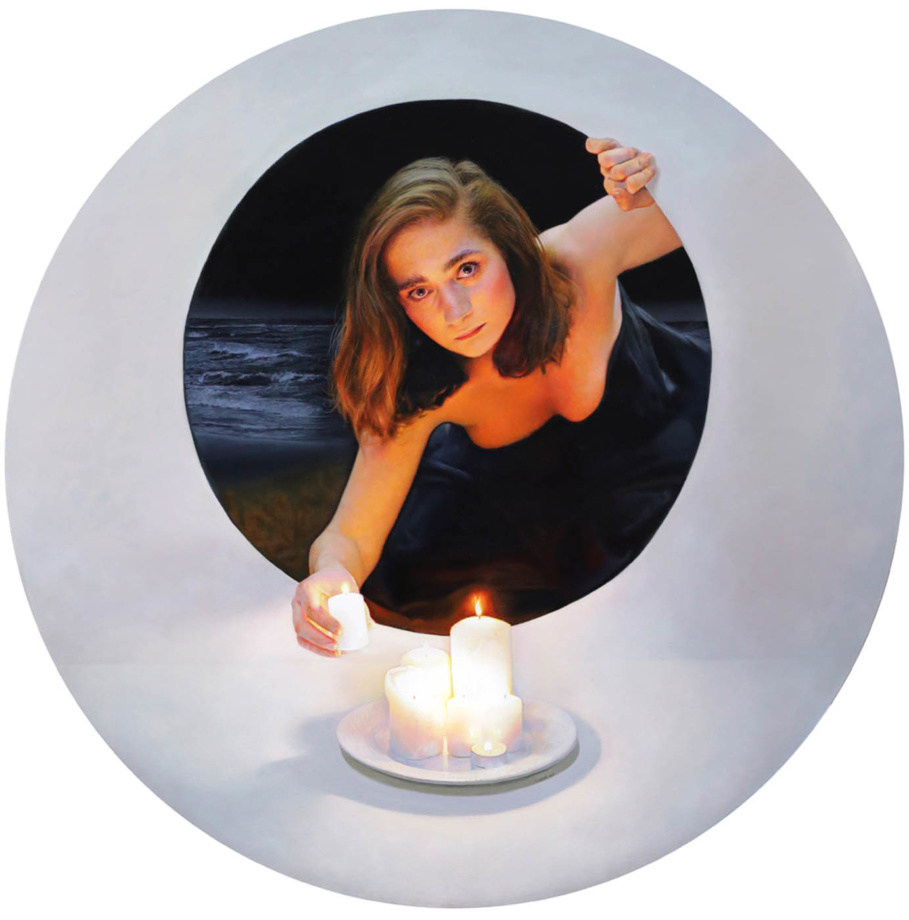
There are a number of contemporary artists who use the grid method to transfer and enlarge their images onto panels and paper. For example, a contemporary realist artist Tanja Gant (interview) and a Polish painter Anna Wypych grid their surfaces to do realistic painting. Do you know any other contemporary artists using art grids to enlarge their references? Let me know!
https://veronica-winters-art-school.teachable.com/
Art supplies:
- Drawing pad, bristol vellum
- Kneaded eraser
- koh -i-noor drawing paper, colored pencil
- Tombow mono eraser
- Drawing fixative
- Sennelier fixative for charcoal and pencil has a super fine spray mist, matte, high-quality
- Gamvar varnish for oil paintings, satin
- Brush for varnishing oil paintings
- Color Wheel
- Canson Colorline drawing paper is available in many colors and various thickness. You might find better choices at art supply online retailers
- Molotow metallic marker, gold
- How to color like an artist, coloring book for children and adults
- The colored pencil manual, art instruction book
Pros and cons drawing on wood in colored pencil
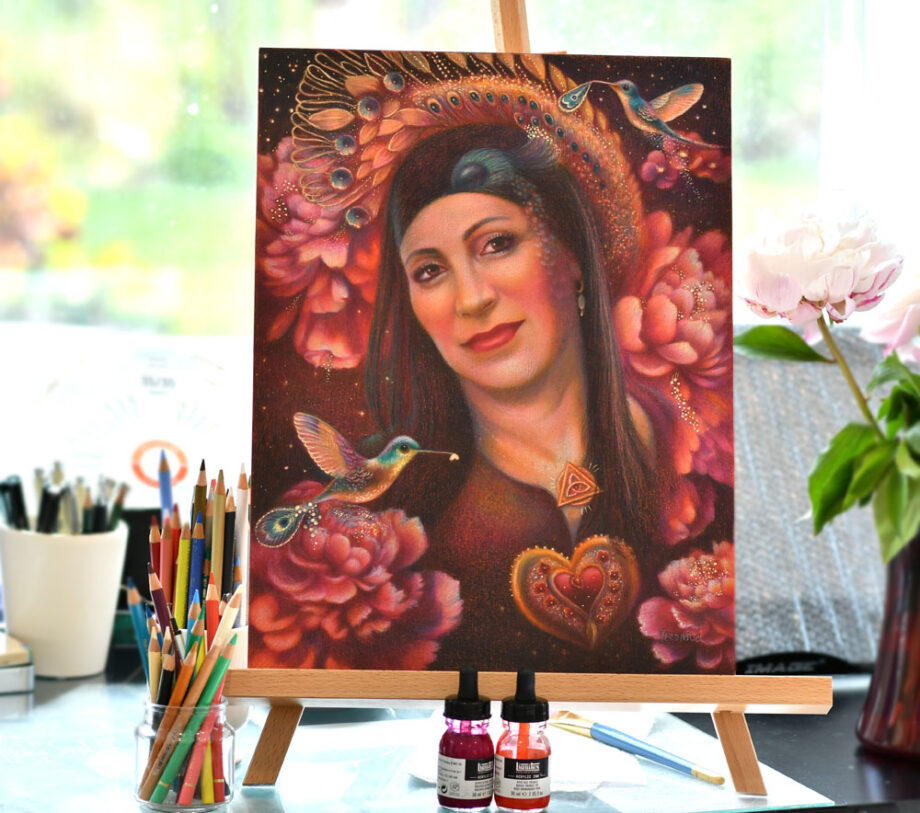
In this article, I’d like to share my experience doing colorful pencil drawing on wood. I list both advantages and disadvantages working on wood.
The advantages of colored pencil drawing on wood
- The panels are very durable and stable. They resist warping.
- The panel has a 1-inch depth, which is good for wall display.
- Wood panels prevent warping.
- The panels look like paintings that aid professional presentation and make people more excited to purchase art. Drawings on wood don’t need a mat.
- Because the wood surface is so stable it accepts many materials and techniques in addition to the colored pencils. For example, I tested it adding acrylic inks to its surface. I also added Fine Tec iridescent colors with a tiny bit of water, various markers, acrylics, resin, glass, diamond dust, glitter. The possibilities are endless!
- The wood panels accept layers of color when primed with the right primer for drawing that I list below.
- You can play with the negative space of the wood panel by not coloring the entire surface, rather allowing it to show in art because it has it’s own pattern and color.
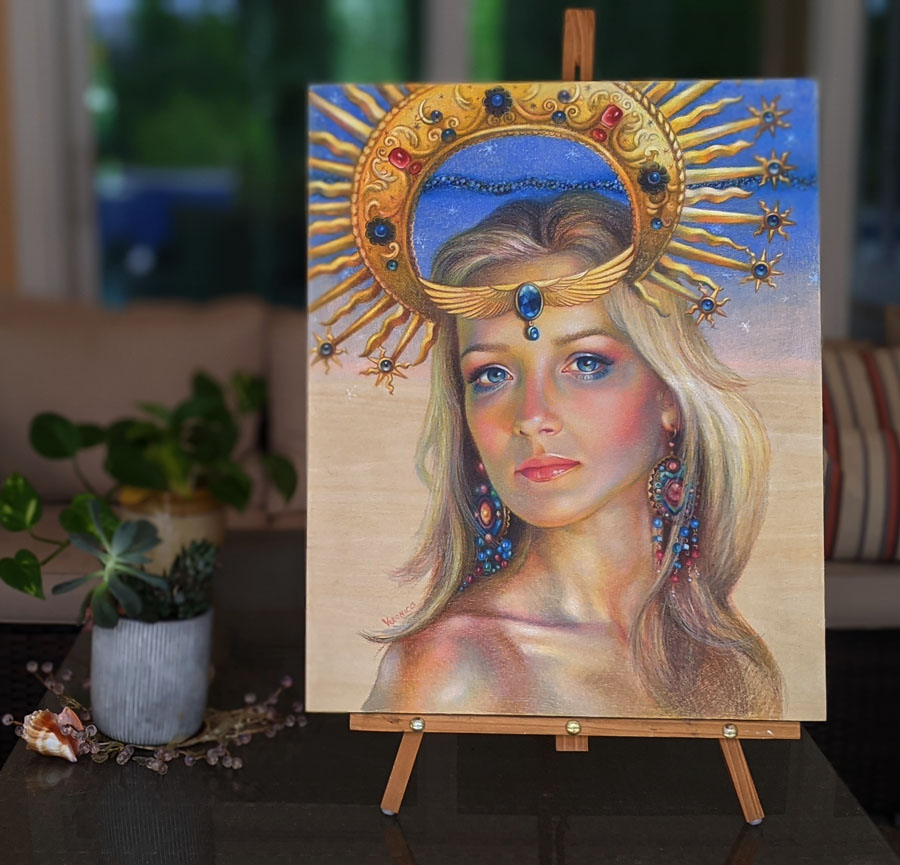
Drawbacks in colored pencil drawing on wood
- It’s much harder to draw on wood panels in comparison to drawing on bristol vellum paper! It can be frustrating to fill in the surface.
- The surface tends to “eat” the colored pencils.
- Hard colored pencils may slide off of the surface.
I highly recommend buying a very small panel to test all the materials and techniques on it first.
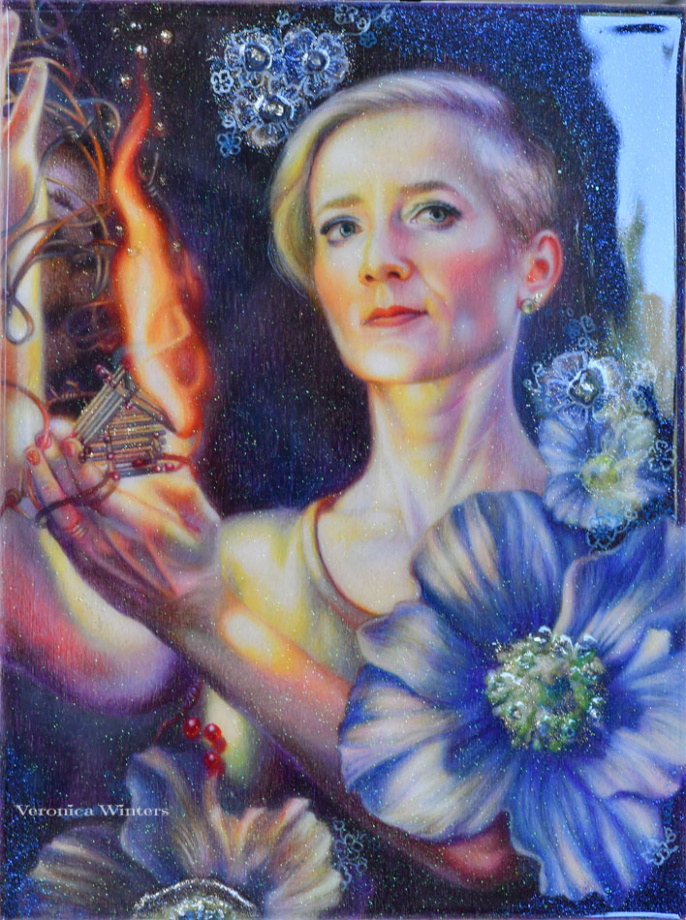
Art supplies list for colored pencil drawing on wood
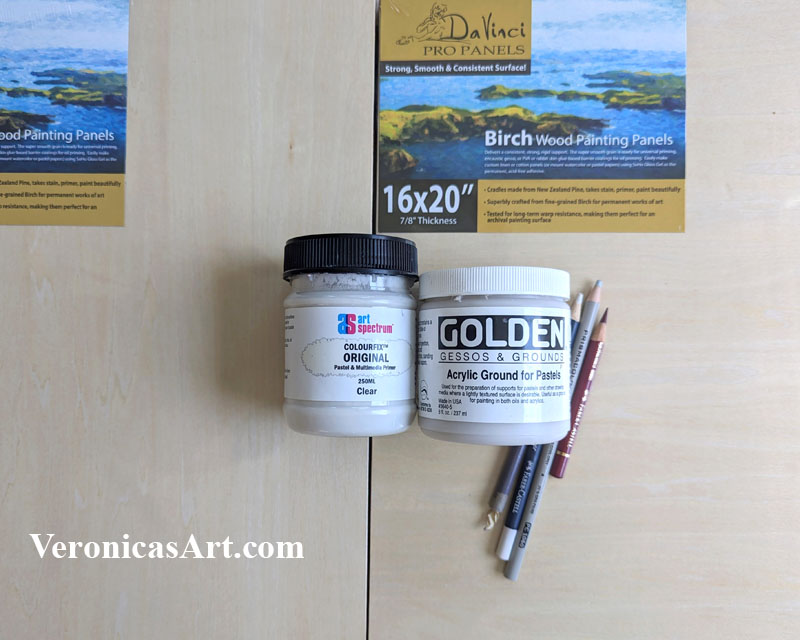
Wood Panels
Obviously, we can find many brands of wood panels suitable for colored pencil drawing. I happen to use Da Vinci Pro panels because they are sturdy and have a 1-inch depth that makes them look like paintings. I usually buy my art supplies at JerrysArtarama although some of them are available on Amazon.
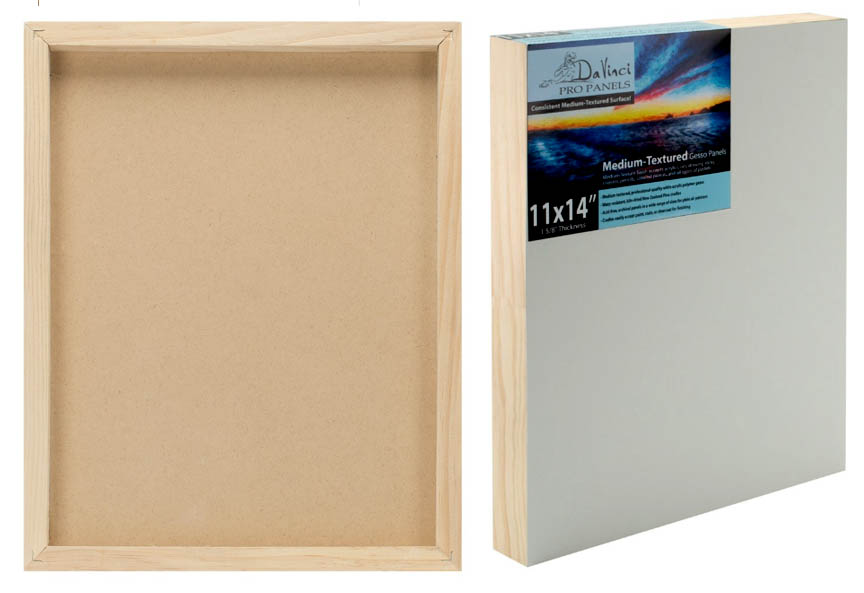
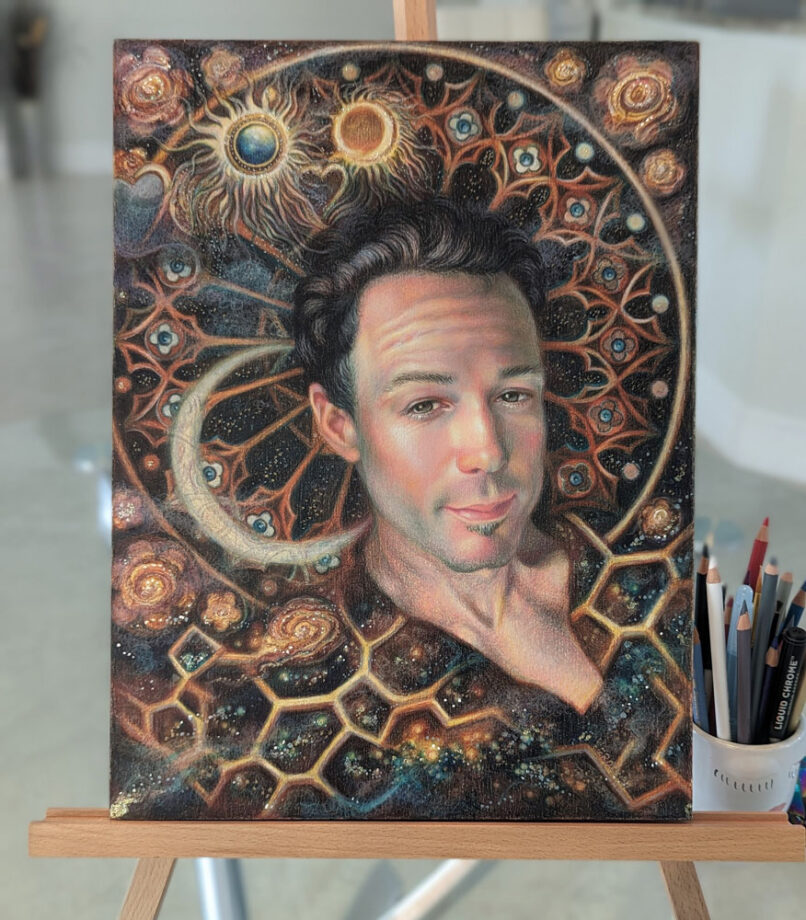
Art Primers for colored pencil drawing on wood
I did some colored pencil drawing on wood with and without a primer. I prefer using the primer to have that extra tooth in the surface to grab the colored pencils. Primers seal the surface to prepare it for drawing in colored pencil.
There are several primers that you can test to use to cover wood panels, panels and paper. All of them are quite similar but give a slightly different grip or tooth to the surface to apply the colored pencil to.
- I like Colourfix Primer because it comes in several colors!! You can tint the surface with this primer and draw like you draw on toned paper. https://amzn.to/3WKbwjm Colourfix Primer Clear 250Ml, Brand: Art Spectrum.
- Golden Acrylic Primer for Pastels has more texture than the Colourfix but is also used for surface prep. You can find it here: https://amzn.to/43DNbzC.
- Finally, there’s another ground with superfine texture for drawing –Golden Silverpoint/Drawing Ground. You can buy it here: https://amzn.to/3MSqbq1

You need to test them first to see which one will work for your colored pencil drawing. You might not like all of them.
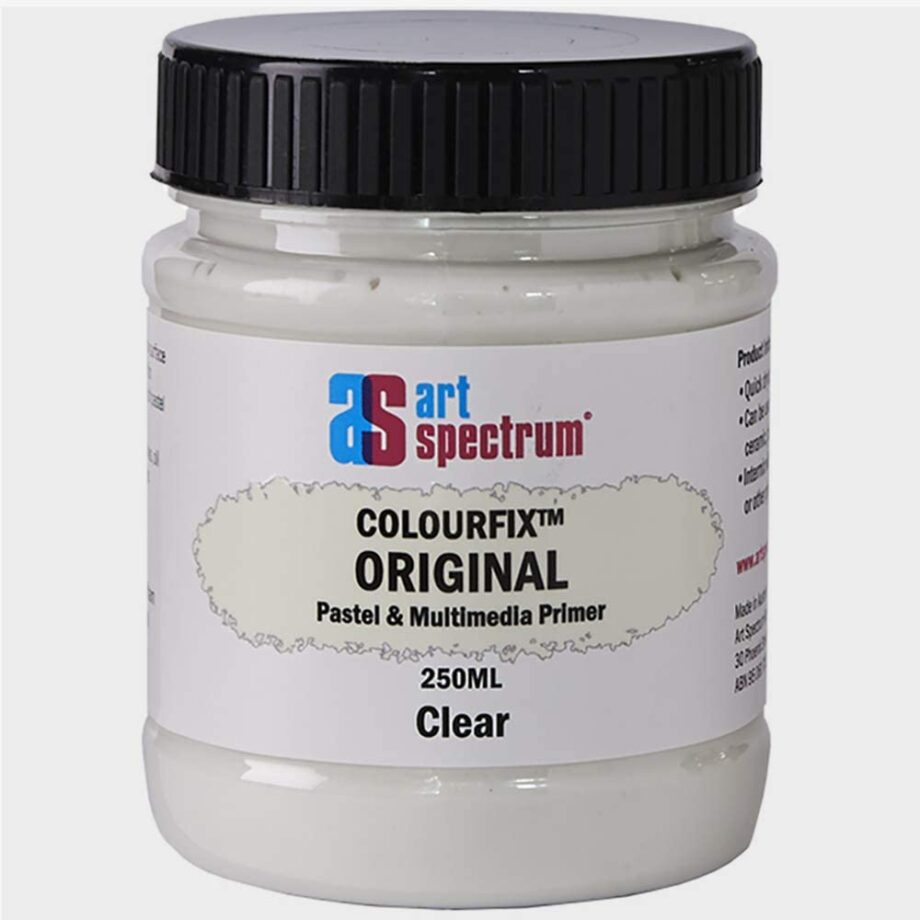
Art Fixatives for colored pencil drawing
There’re numerous brands of fixatives for drawing. I recommend listening to the video with a technical cosnultant Ed Brickler to understand the differences and to figure out which ones will work for you. I’m including some of the best ones below.
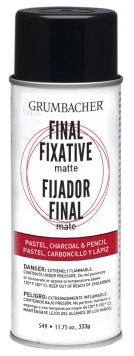
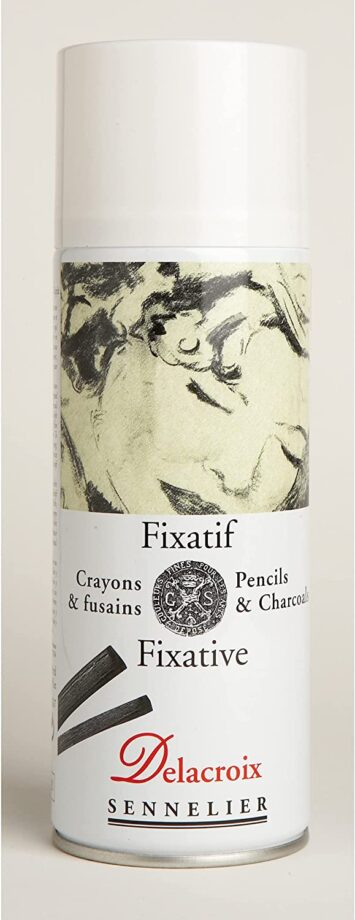
Sennelier Delacroix Fixative https://amzn.to/3MT4WUO is also an excellent spray for pencils that has a super fine mist. Both sprays are hazardous and must be sprayed in a very well ventilated space or outdoors with low humidity levels.
One of safe fixatives is Spectrafix.
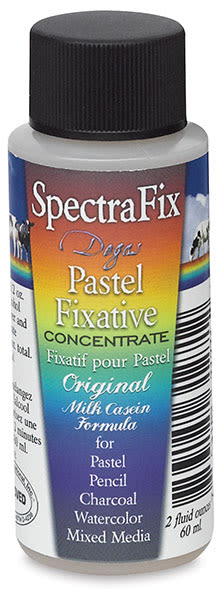
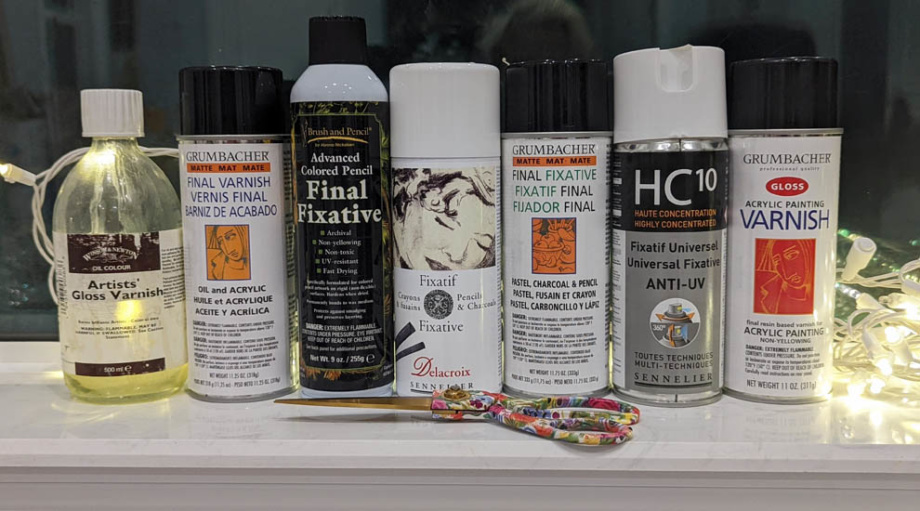
How to frame colored pencil drawings on wood
This is a tough one! The panel has a 1-inch depth, which is good to prevent warping and it also aids professional presentation but it makes it quite difficult to find a proper frame for it. So you have to search for “canvas-depth frames” that would compliment your drawings. Regular frames won’t have enough depth to cover the panel’s sides.
You still must use a non-glare plexiglass to protect the drawing from UV-light and moisture.
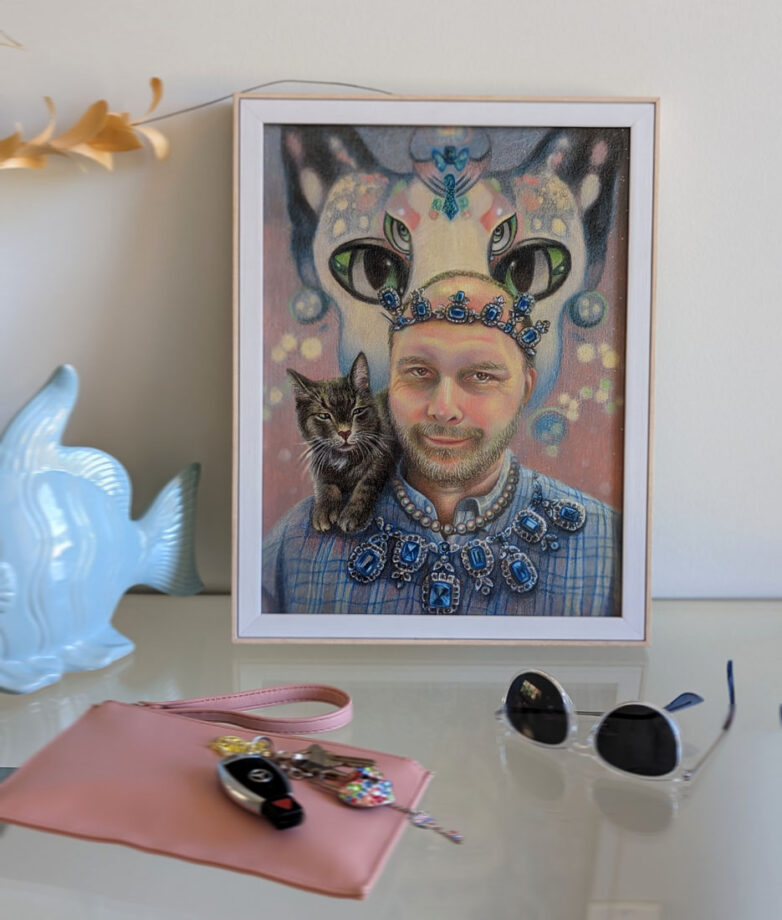
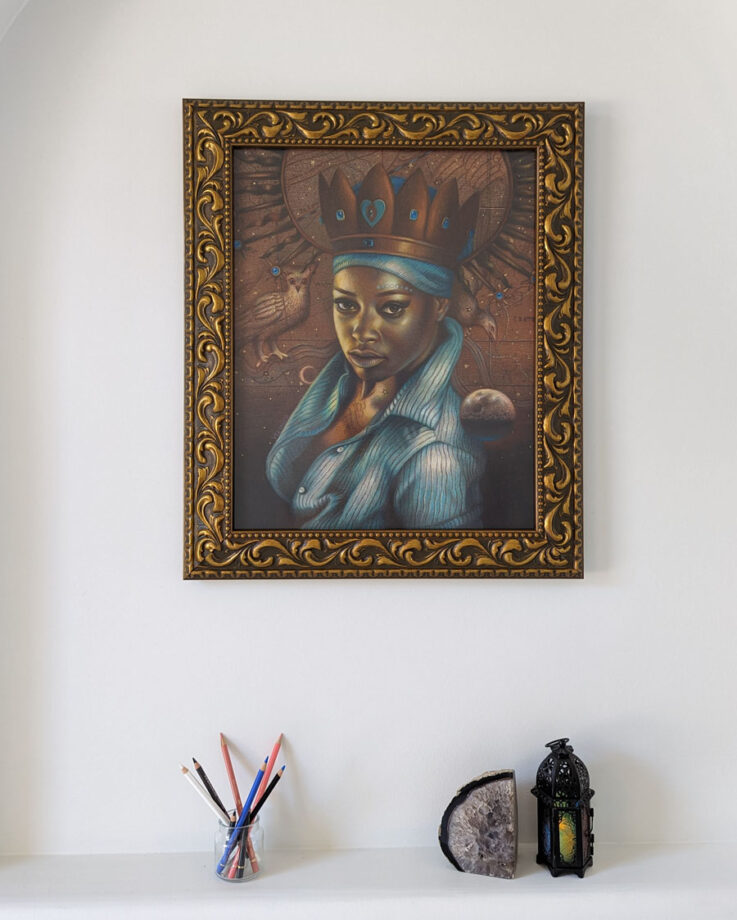
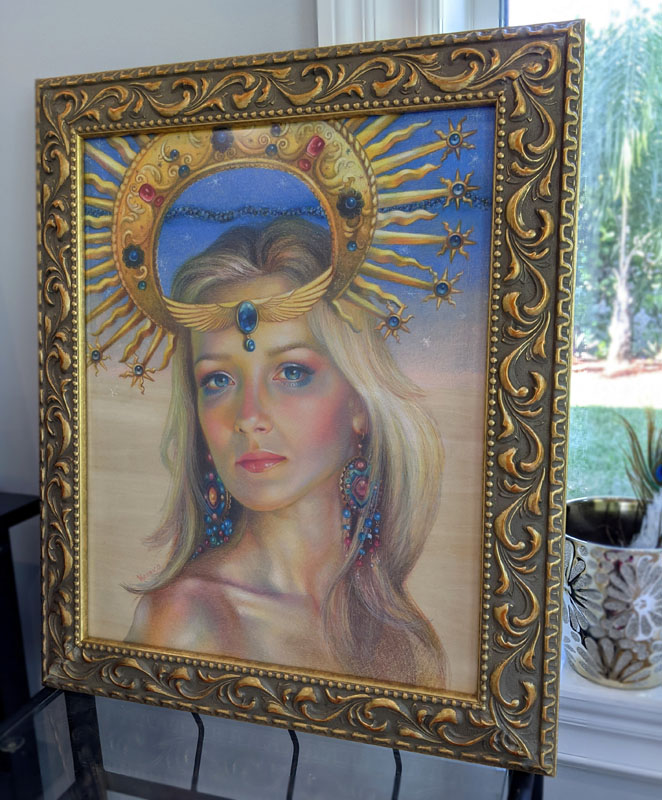
To read about framing of colored pencil drawings, go here: https://veronicasart.com/how-to-frame-art-on-paper-and-on-canvas/
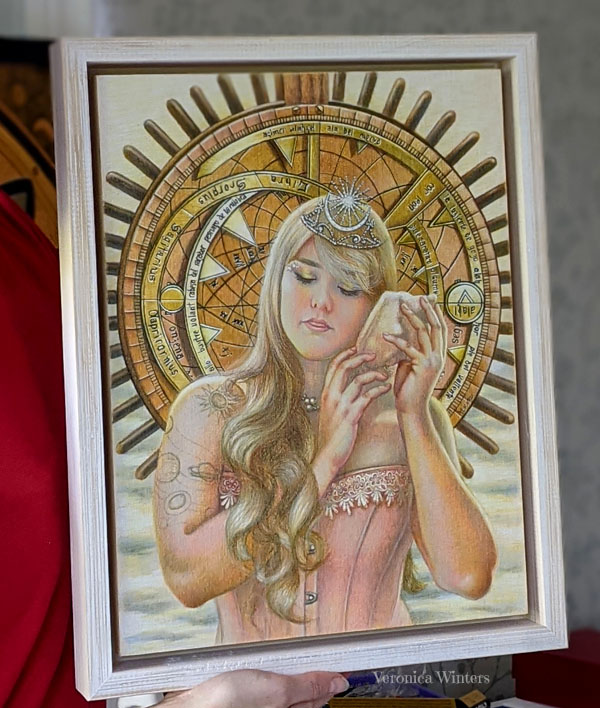
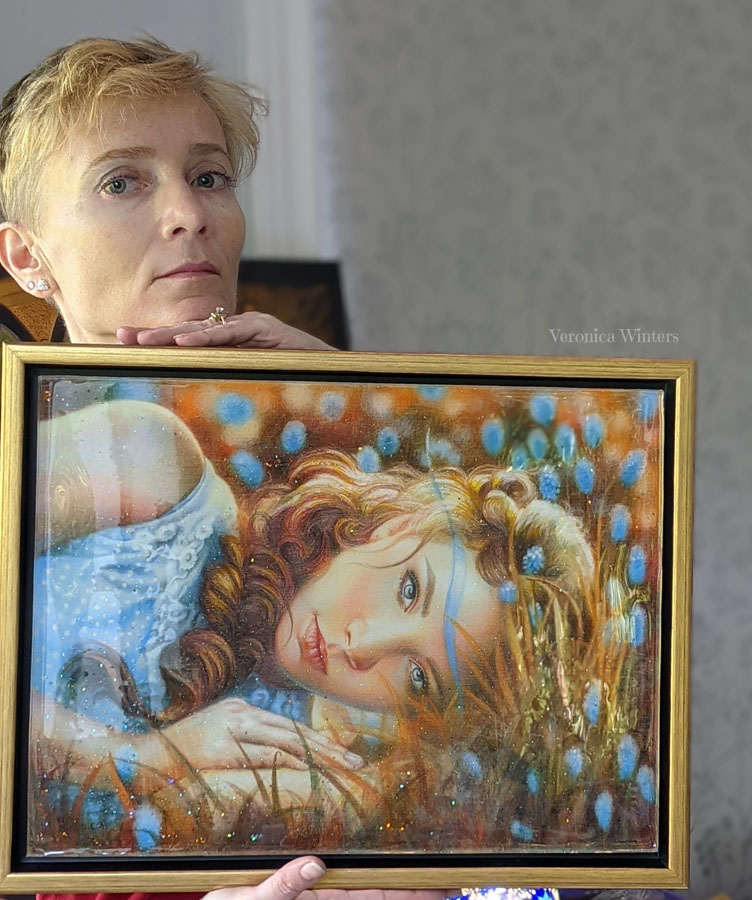
If you’d like to learn more about colored pencil drawing, take one of my video classes here: https://veronica-winters-art-school.teachable.com/
Art supplies:
- Drawing pad, bristol vellum
- Kneaded eraser
- koh -i-noor drawing paper, colored pencil
- Tombow mono eraser
- Drawing fixative
- Sennelier fixative for charcoal and pencil has a super fine spray mist, matte, high-quality
- Gamvar varnish for oil paintings, satin
- Brush for varnishing oil paintings
- Color Wheel
- Canson Colorline drawing paper is available in many colors and various thickness. You might find better choices at art supply online retailers
- Molotow metallic marker, gold
- How to color like an artist, coloring book for children and adults
- The colored pencil manual, art instruction book
Contact:
How to draw fur in colored pencil: the secret tool you need to succeed
When it comes to drawing realistic fur with colored pencils, there are a variety of techniques you can use to create texture, pattern, color, and shading that mimics the look of real animal fur. Whether you’re drawing long fur or fluffy fur, a cat tail, dog tail, or any other type of animal tail, there are a few key things to keep in mind. When it comes to creating realistic animal drawings, the texture of the fur can make or break the artwork. Colored pencils are a great medium to use when drawing fur, as they allow for precise and detailed strokes that can mimic the look of individual strands of hair. In this article, I’ll focus on drawing tips, ideas, techniques and a simple tool for drawing realistic fur with colored pencils on white paper. (I usually draw on colored paper and the colored pencil technique is different for that).
How to draw fur with colored pencil
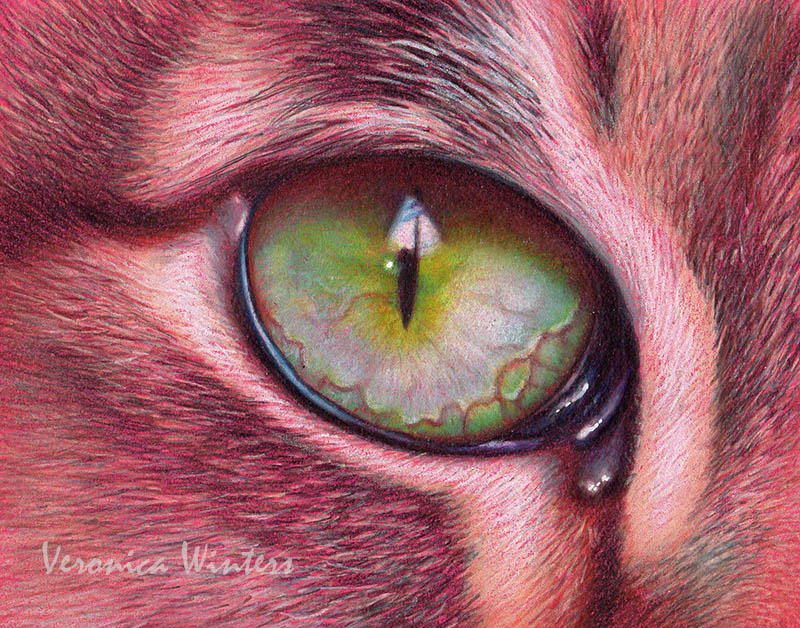
#1 Start with a good reference photo
Before you begin drawing, it’s important to have a good reference photo of the animal fur. Look for a photo that clearly shows the texture and pattern of the fur, as well as highlights and shadows. The more detailed the reference photo, the easier it will be to create a realistic colored pencil drawing. Take photo that has a clear division between light and shade (or highlights and shadows).
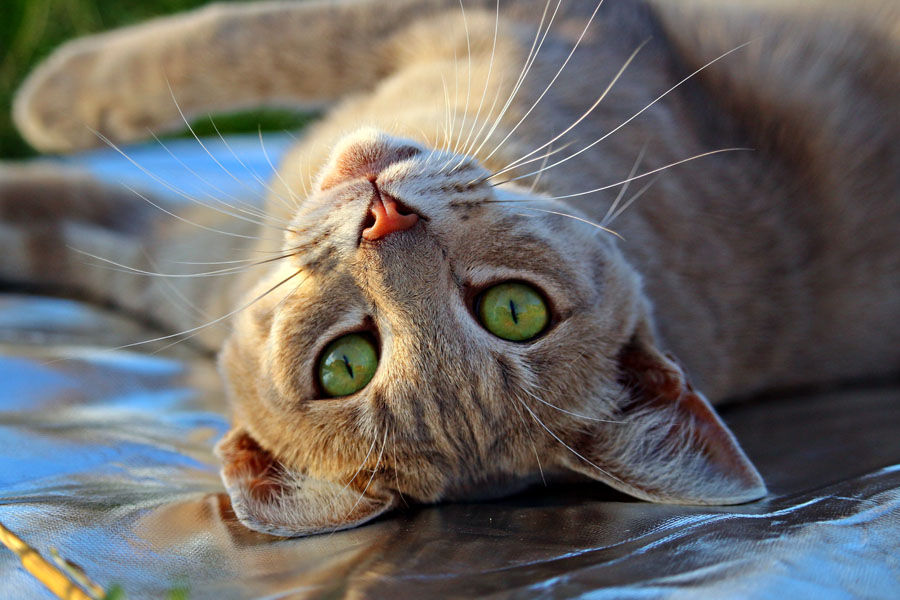
#2 Use directional strokes in colored pencil drawing of fur
One of the most important factors to consider is the texture of the fur or the direction of the hair growth. To create a natural-looking texture, it’s important to use a combination of short, directional strokes in varying lengths and pressure levels. Depending on the type of fur you’re drawing, you may need to use different stroke techniques to create the desired effect. For example, for long fur, you may need to use longer, more fluid strokes to create the appearance of length and movement, while for fluffy fur, shorter, more jagged strokes may be more effective.
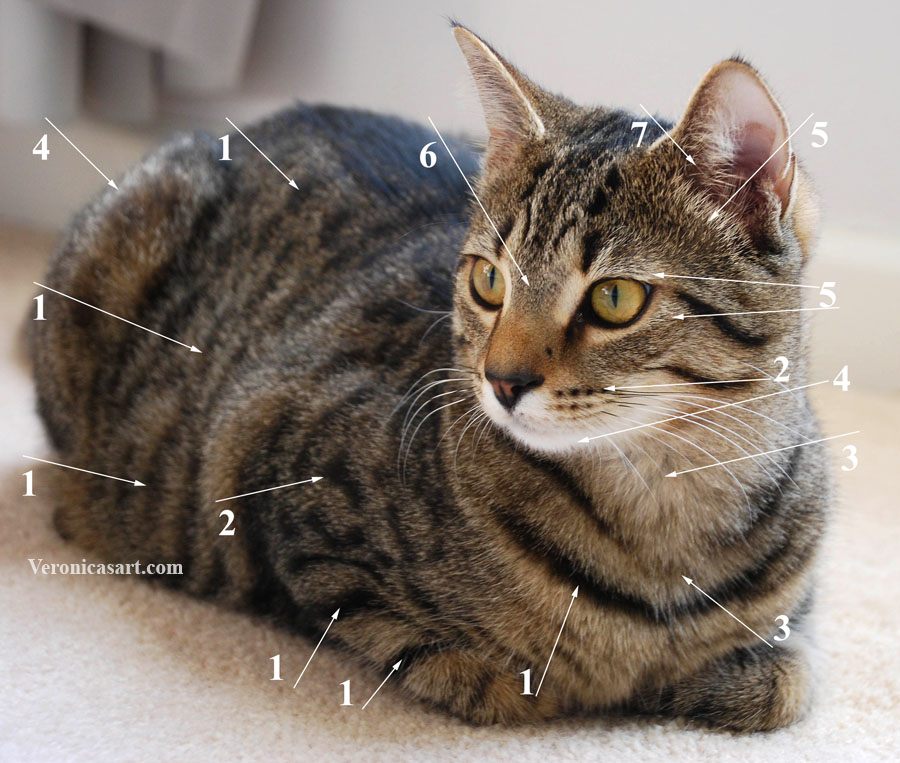
#1- These are rather wide stripes and fur’s patterns that WRAP AROUND the body. Most students draw them too flat. Observe how the animal’s fur wraps around the neck, stomach, etc.
#2 Copy the unique patterns of the fur as precise as possible.
#3 Some fur is rather long. Use multidirectional strokes to re-create it.
#4 This fur is very short but super soft with the blurry edge. Edges are important.
#5 These are rather long and sharp-edged hairs that wrap around the eye.
#6 Extremely short and multi-colored fur.
#7 Very long, directional strokes.
#3 Layering
Build up layers of color. Another important aspect in colored pencil drawing of fur is layering. Building up layers of color gradually can help you create depth and dimension. Gradual layering also helps you blend different colors together for realistic appearance. Use a light touch of colored pencil while layering colors, and build up the darker shades gradually.
Start with a light layer of the base color, and then gradually add darker shades to create depth and dimension. Use a light hand and short, light strokes to mimic the texture of fur. Use a variety of colors to create a realistic fur texture.
#4 Light direction: highlights and shadows
To create depth and dimension in your colored pencil drawing of fur, pay attention to the light direction. You must have both strong highlights and shadows to create some depth and dimension. Use darker shades in areas where the fur is more dense, and lighter shades in areas where the fur is more sparse or where highlights are present. Adding highlights can help create a three-dimensional effect and make the fur appear more lifelike.
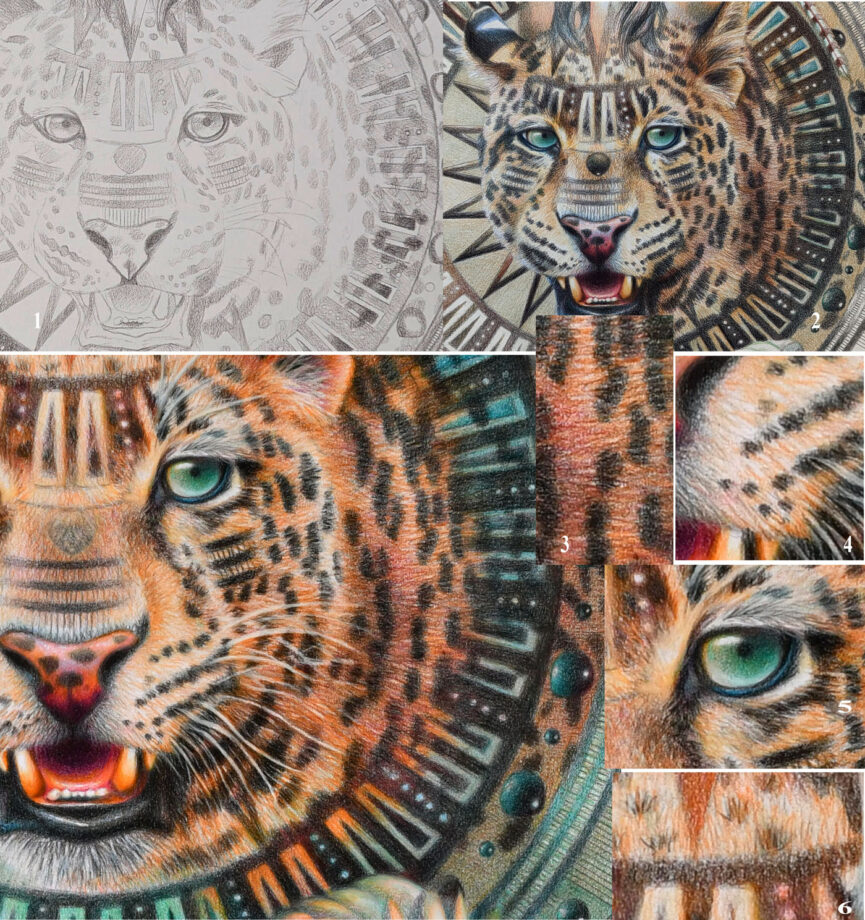
Shadows
Use darker colored pencils to create shadows in the areas where the fur is more dense. Pay attention to the direction of the light source in your reference photo to ensure that the highlights and shadows are accurate. For that I make a separate image by converting the original photo to a black-and-white one. This way I can clearly see the light direction that I must copy.
Highlights
There’re several ways to draw the highlights in colored pencil. It depends on the drawing paper’s tone as well as your own preference. In this tutorial I focus on drawing the lights of the animal’s fur on white paper. In general, using a white colored pencil to add highlights to the fur can be ineffective. It works well when you do the following trick, however.
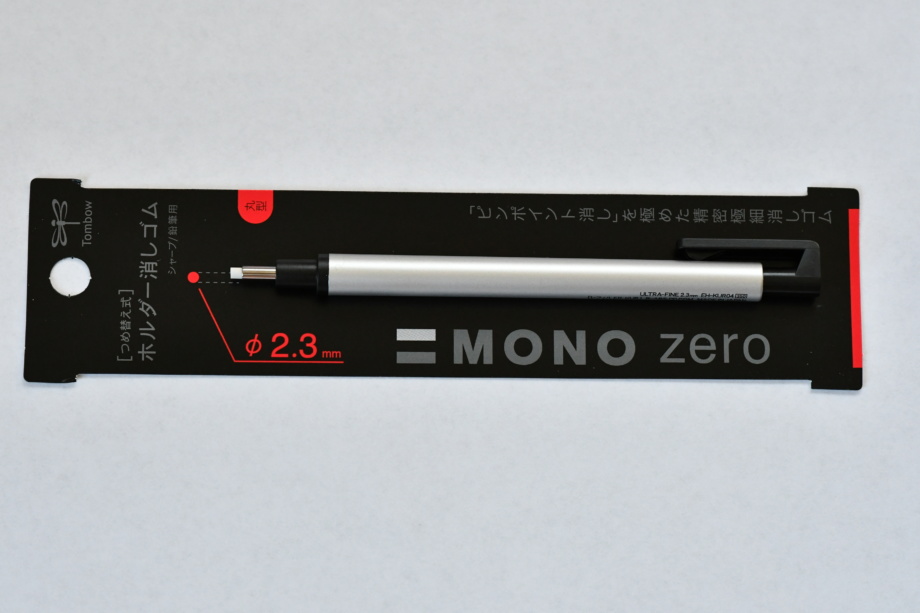
After layering the base of color, take the Tombow mono eraser and erase parts of the fur paying attention to its length, strength and direction. This becomes the foundation for texture. Then you start drawing around those “puled out whites”. Then take your drawing outside and spray it lightly with a final fixative. I recommend Sennelier or Grumbacher brands. Wait for it to dry completely!
To continue building up the texture drawing the animal fur, you can add refined lines in a very soft, white colored pencil. You can continue shading with darker colored pencils around the lights. And you can use the mono eraser once again to texturize the fur even more, shading in a slightly different direction. These are steps 3-6 in the drawing of the jaguar.
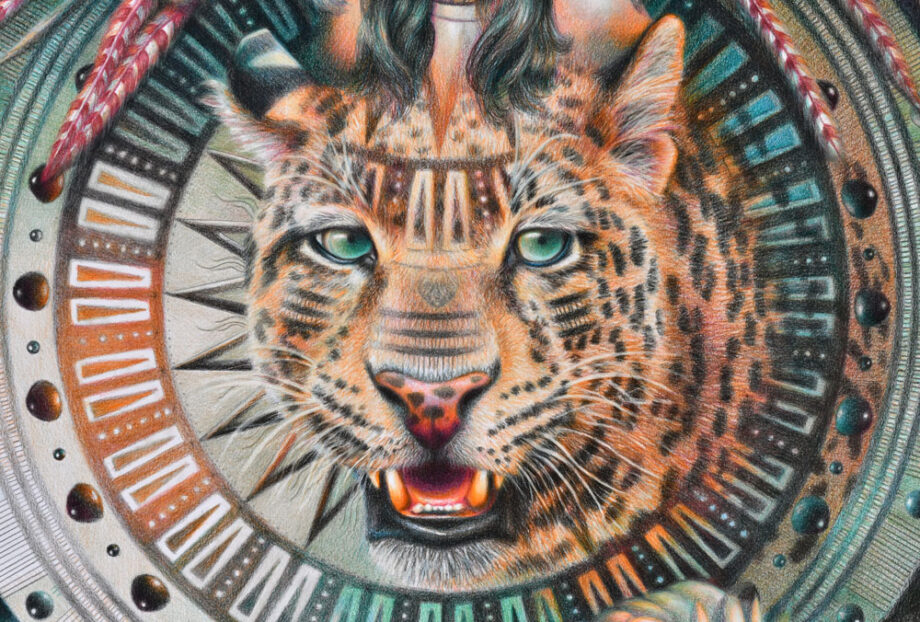
#5 Adding refined texture in colored pencil drawing
To blend or not to blend, right? I think that the colored pencil blending is the opposite of drawing fur and texture in colored pencil. You want to imitate the texture in the cat’s fur or other animal fur. Therefore, you can blend the colors some at the first step when you’re layering the base but refrain from blending the animal’s fur at the end of the drawing process in colored pencil. Never use a blending stump or a piece of tissue paper in colored pencil blending. It’s ineffective and damages the surface. Use a sharp pencil to create fine lines instead. You need to do this towards the end of your colored pencil drawing process when you have the base shading done.
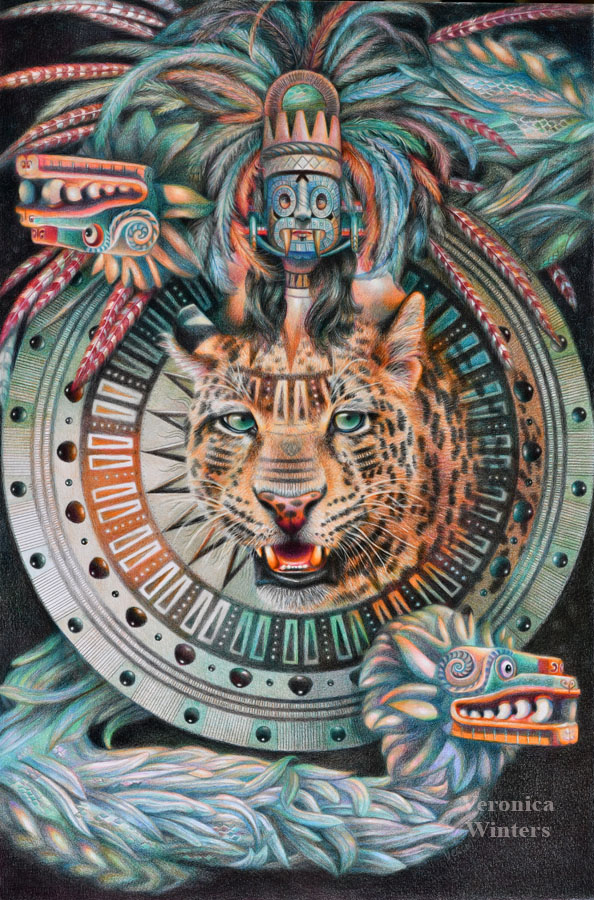
Remember, drawing realistic fur with colored pencils is a skill that takes patience and practice to develop. Don’t be discouraged if your first attempts don’t turn out exactly how you’d like. By starting with a good reference photo, building up layers of color, using directional strokes, adding highlights and shadows, and practicing regularly, you can create stunning animal drawings with lifelike fur texture. Also be open to experimenting with different techniques, and trying new things until you find the approach that works best for you. With some effort and positive attitude, you’ll be able to create stunning drawings of animal tails with lifelike fur texture, pattern, and color.
Check out the article where I show how to create fur texture and fur shading using scratchboard art. https://veronicasart.com/how-to-start-scratchboard-art-tools-techniques-tips-to-make-fur-texture/
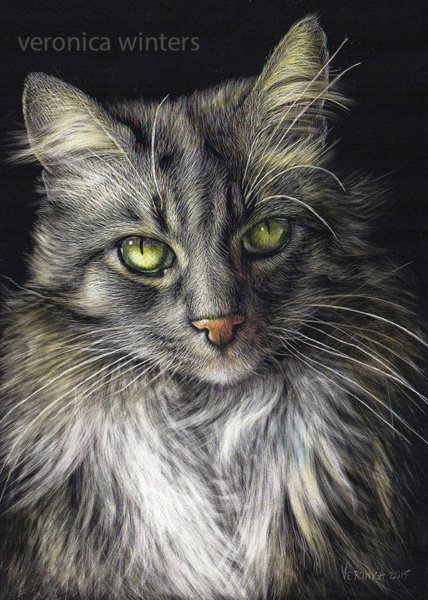
Art supplies on Amazon:
- Drawing pad, bristol vellum
- Kneaded eraser
- koh -i-noor drawing paper, colored pencil
- Tombow mono eraser
- Drawing fixative
- Sennelier fixative for charcoal and pencil has a super fine spray mist, matte, high-quality
- Gamvar varnish for oil paintings, satin
- Brush for varnishing oil paintings
- Color Wheel
- Canson Colorline drawing paper is available in many colors and various thickness. You might find better choices at art supply online retailers
- Molotow metallic marker, gold
- How to color like an artist, coloring book for children and adults
- The colored pencil manual, art instruction book
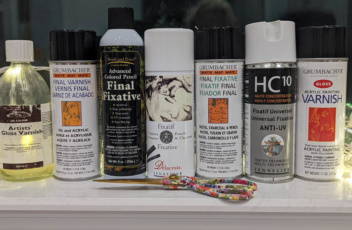
Fixatives & varnishes: what you need to know to preserve your art
Do you know how to varnish art using the varnishes and fixatives correctly? There are numerous videos on Instagram with artists varnishing their art dead wrong. They pour the liquid onto the surface and brush it all over the canvas. I saw one artist at an outdoor art event varnishing her painting in a frame with bugs flying all around her! If you really care about your art and want to preserve it, using your art materials properly is a must. Otherwise paintings may crack or discolor over time.
What’s the difference between varnishes and fixatives?
Key difference between varnishes and fixatives is that varnishes are made for oil and acrylic paintings and fixatives are manufactured for dry media or drawings.
So don’t use a varnish on your drawing! Use final fixative for pastels, pencil, charcoal, colored pencil, and other media on paper, etc. Read labels carefully to decide which fixative or varnish is appropriate for your artwork. A lot of them produce harmful vapors containing acetone and turpentine. However there are some “healthier” alternatives available on the market today. More on that later.
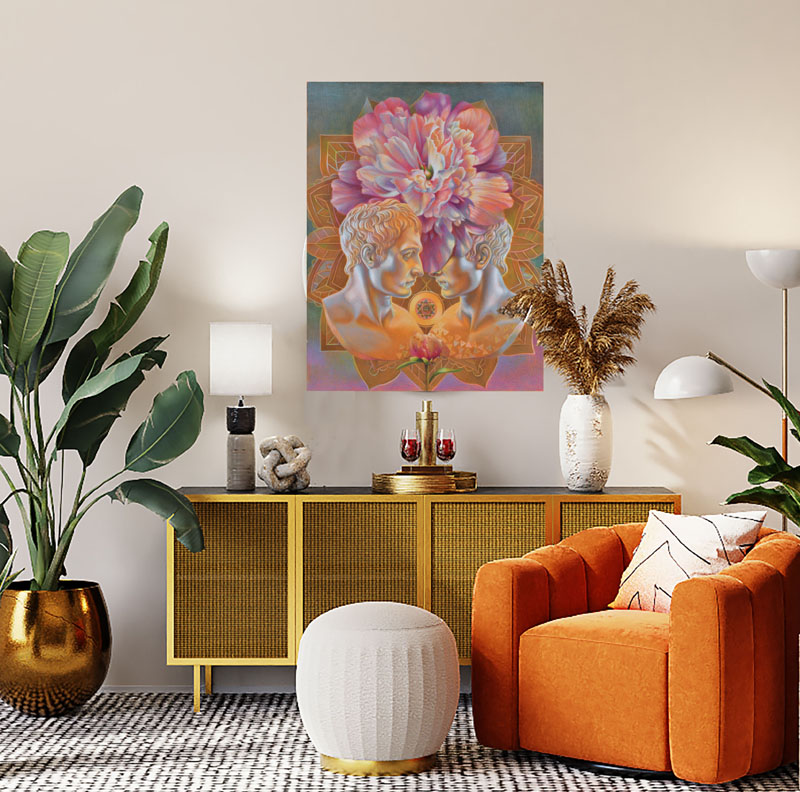
3 reasons to varnish your art
The environmental changes can produce environmental smudge on a surface of the unvarnished oil or acrylic painting that would be very difficult or even impossible to remove later on. One example is the growth of mold on the painting’s surface. Varnishes and fixatives protect your art from UV light, dust and environmental changes. Varnishes are removable, so that a painting can be cleaned and re-varnished, if necessary.
High-quality varnishes and fixatives bring all the colors out in a painting or drawing. The surface becomes nice and even. Colors seem to gain depth and saturation. Personally I love to see how my drawings and paintings transform after varnishing.
How to varnish your colored pencil drawings, pencil and charcoal drawings, pastels and other dry media art
All fixatives come in several denominations - matte, gloss, semi-gloss, etc. Personally, I prefer matte fixatives because the surface becomes nice and even and doesn't reflect the colors. If you like gloss varnishes, know that it takes a lot more fixative to saturate the paper and make it glossy evenly.
- Read directions on the label carefully. Test the spray on a separate piece of paper or magazine page first.
- Spray 15-18 inches away from your drawing, holding the can at an angle. Move quickly from left to right.
- Do short spurs and thin layers. Let each layer dry completely for at least half an hour.
- Spray in a clean and well-ventilated area or outside. Humidity level must be less than 65% in a 55-60F temperature. Otherwise, you may trap the moisture or condensation on the artwork and it would turn cloudy. Depending on the type of fixative, fumes can be hazardous. Once fumes evaporate, bring the artwork inside. I use my bathroom’s countertop to lay art flat and use the bathroom’s ventilator to get rid of the smell completely. Ed S Brickler, technical consultant from Chartpak has a dedicated space in his garage to do the varnishing.
- Workable fixative is often used to increase the texture of your paper. Colored pencils are made of wax and when the surface becomes too waxy and you can’t layer more color, you can spray it with a workable fixative to increase paper’s tooth so it accepts more layers of colored pencil. I often use a very light layer of final fixative to give me this extra layer to work on. I don’t find the workable fixative as useful as the final one.
- I strongly advice against buying cheap fixatives because they give uneven coverage and can ruin your drawings.
- If your colored pencil drawing has some bloom, fix it with a gloss spray first and then use a matte fixative over it. The gloss fixative should even out the surface and get rid of wax bloom.
How to varnish pastels & charcoal drawings
I used to draw in soft pastels before I switched to drawing in colored pencil. Main secret to drawing in pastels is to work from dark to light in layers. Purposefully draw darker in the first layer or two, fix it with a fixative. Then apply lighter layers, fixing each layer. Don’t spray the finished pastel painting heavily because the fixative will darken and change the color. Or use a very light final coat spraying it very lightly.
Drawing with charcoal is about the same. Draw in layers and fix each layer with a fixative.
Don’t spray art if you have sharpie in it. Sharpie will bleed and dissolve.
How to store drawings and art on paper
The best way to store your colored pencil drawings, pencil or charcoal drawings is to lay them flat with glassine paper covering the art. Parchment paper could work as well although the glassine paper is highly recommended and preferred by art professionals. It’s also used for shipping art to create the barrier between unframed art and packaging.
Safe alternatives to traditional fixatives
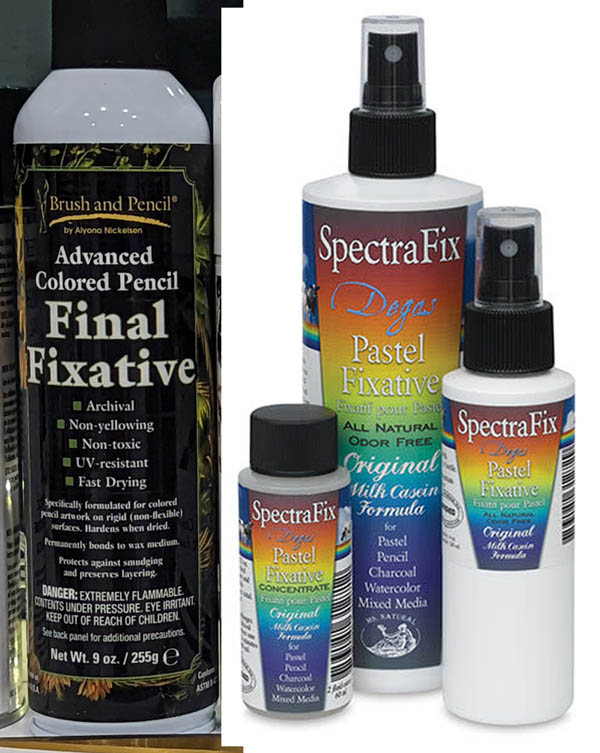
These are the two brands of final fixatives that are made differently and are non-toxic. If you know more about non-toxic fixatives, let me know! I don’t recommend using the Brush and Pencil fixative because the nozzle produces uneven spurs of fixative. It also crumbles thin paper.
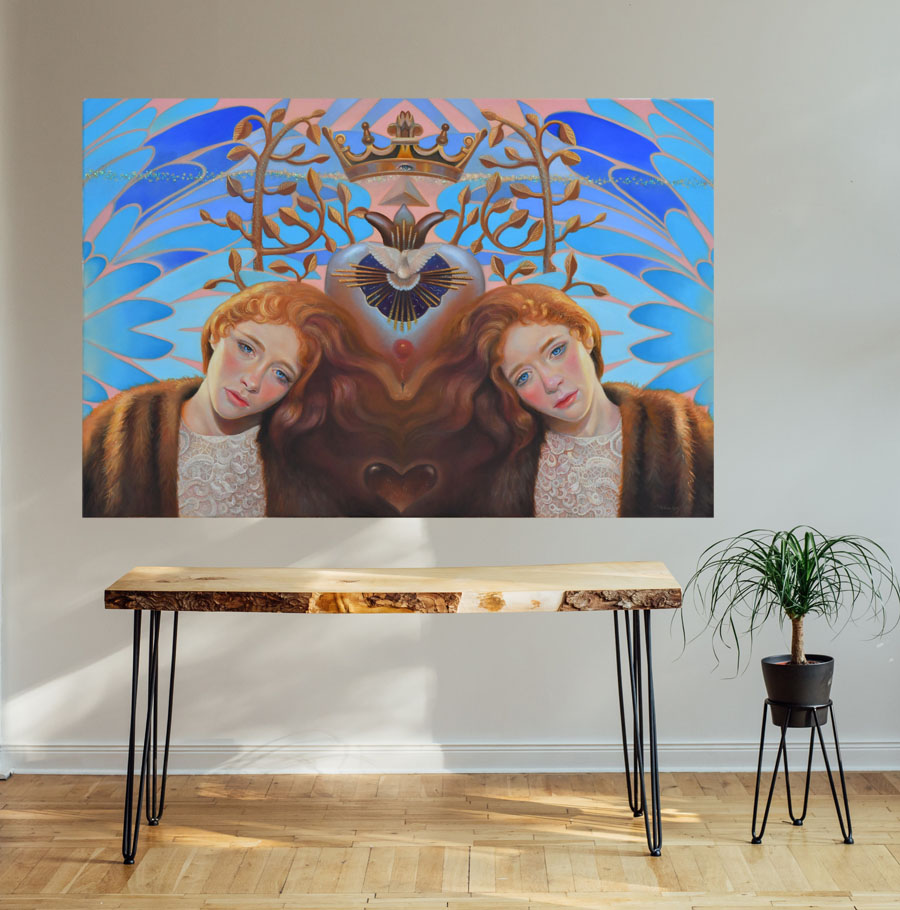
How to varnish oil paintings
Oil paintings must be varnished when the paint is dry completely. 6 months must pass before placing a final varnish over the oil painting. But because of possible environmental damage finished oil paintings can be varnished with a retouch varnish first and then varnished with the final varnish in 6+ months.
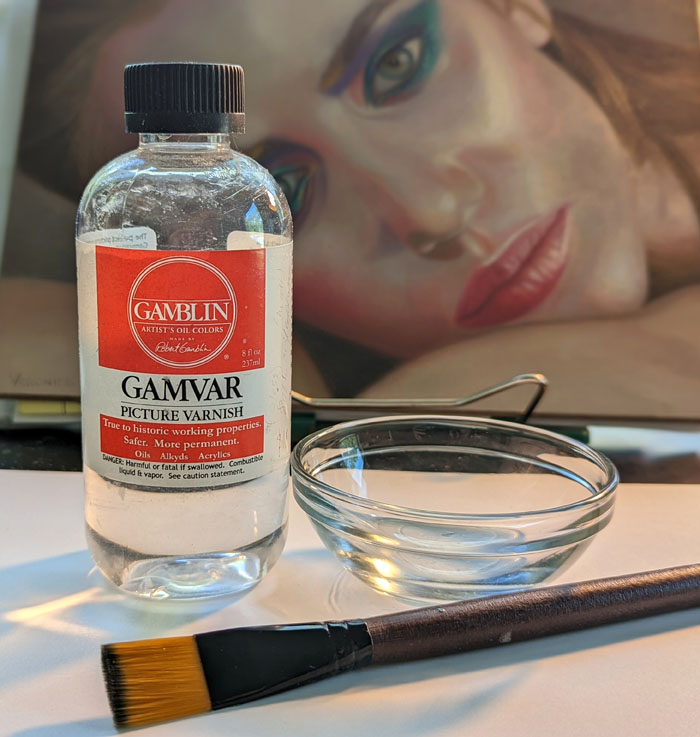
There are two types of varnishes for oil and acrylic paintings – spray varnishes and liquid varnishes. All varnishes come in several denominations – matte, gloss, semi-gloss, etc. Personally, I prefer matte varnishes because the surface becomes nice and even and doesn’t reflect the colors. If you like gloss varnishes, know that it takes a lot more varnish to even out the gloss.
Damar varnishes seem to be dated because they yellow or darken over time. So synthetic varnishes are preferred to preserve paintings from deterioration.
It's difficult to remove the varnish safely if the paint layers are super thin or the painting was varnished too early.

- Your space must be very clean. Liquid varnishes attract dust and particles like a magnet that can settle on a varnished surface. The brush should be high-quality and soft not to leave streaks.
- Pour the varnish into a small and clean glass bowl and deep the brush into it. Start brushing your painting from top left corner moving to the right and then down the painting. You need to be rather quick because the varnish starts drying almost immediately. If you feel that the surface becomes too sticky in one spot, don’t brush over it, rather let it dry. Repeat the process in your second, thin layer moving at a different angle or direction to make sure that everything is covered.
- Varnishes are self-leveling and applying them in thin layers is the best.
- If you use spray final varnishes, apply thin layers, letting each layer dry completely for up to an hour. Also, change the direction with each new layer to cover the entire painting surface evenly.
How to varnish acrylic paintings
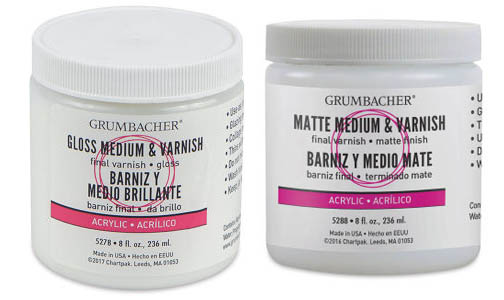
Same rules apply to varnishing acrylic paintings. However, the first thing is to use “medium & varnish” acrylic varnish. Varnish your acrylic paintings in three days with either matte or gloss final varnish over it.
If you gesso your canvases and panels with acrylic gesso or use acrylic underpainting for oil painting, allow acrylic-based gesso or paint to dry for 3 days before starting painting on the surface!
References & resources:
If you’re unsure how to use your particular varnish or fixative, go to the manufacturer’s website. Companies have their own blogs and videos showing how to use their products correctly.
This information is based on my conversation with technical consultant from Chartpak inc- Ed Brickler. You can watch our conversation in a video below. This interview is also available on my Hooked on Art podcast on Spotify & Apple.
Here is a great resource on oil painting varnishing from Gamblin: https://gamblincolors.com/oil-painting/gamvar-picture-varnish/
Amazon links to art supplies I use the most often:
- Drawing pad, bristol vellum
- Kneaded eraser
- koh -i-noor drawing paper, colored pencil
- Tombow mono eraser
- Drawing fixative
- Sennelier fixative for charcoal and pencil has a super fine spray mist, matte, high-quality
- Gamvar varnish for oil paintings, satin
- Brush for varnishing oil paintings
- Color Wheel
- Canson Colorline drawing paper is available in many colors and various thickness. You might find better choices at art supply online retailers
- Molotow metallic marker, gold
- How to color like an artist, coloring book for children and adults
- The colored pencil manual, art instruction book
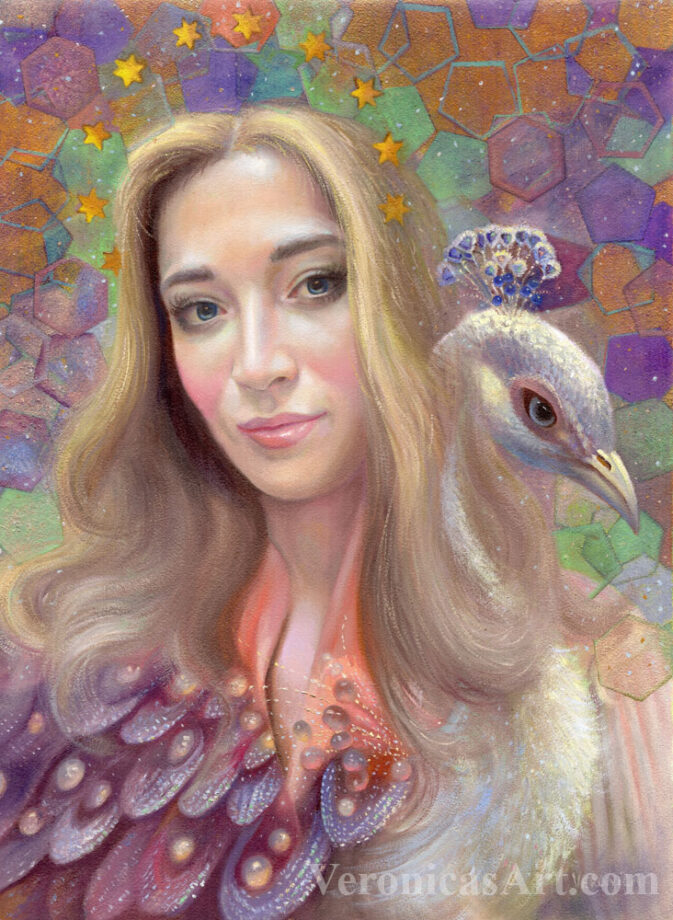
Check out visionary art for sale
How to draw glass in colored pencil

5 tips drawing glass in colored pencil
In this post I’d like to explain the basics of drawing glass and other glass-like, transparent or reflective objects in colored pencil. At the end of this article you’ll find additional resources such as my online video course and drawing demonstrations that will give you more colored pencil drawing ideas on how to draw glass.
Drawing crystal or glass or other reflective surfaces is not as difficult as you may think once you understand the basic principle behind it. Observation is key!
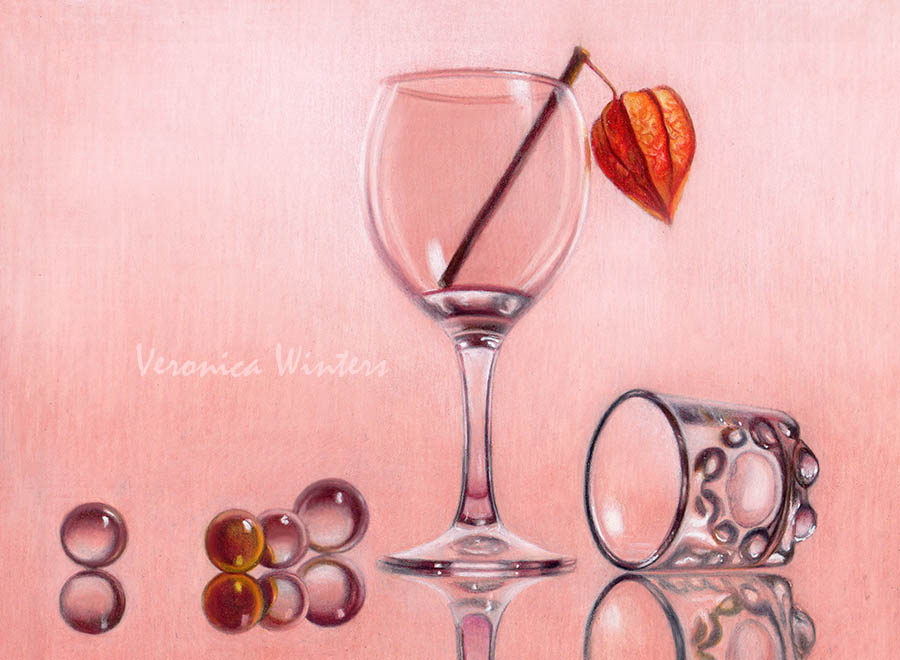
How to draw glass: tip #1 | Symmetry & ellipses
The accuracy of shapes is the first important element in colored pencil drawing of any surface like a wine glass or cup. When you draw the wine glass, the shape of the wine glass itself must be perfect or very accurate having symmetrical sides and correct ellipses.
In the beginning, it’s a very laborious process to get the accurate drawing of shapes but overtime you’ll become a better draftsman, and it will be much easier to keep the shapes accurate, even and symmetrical. Therefore, to draw realistically, you must strive for achieving the most accurate shape (outline) of your drawing.
The overall shape of the object mustn’t be crooked or uneven.
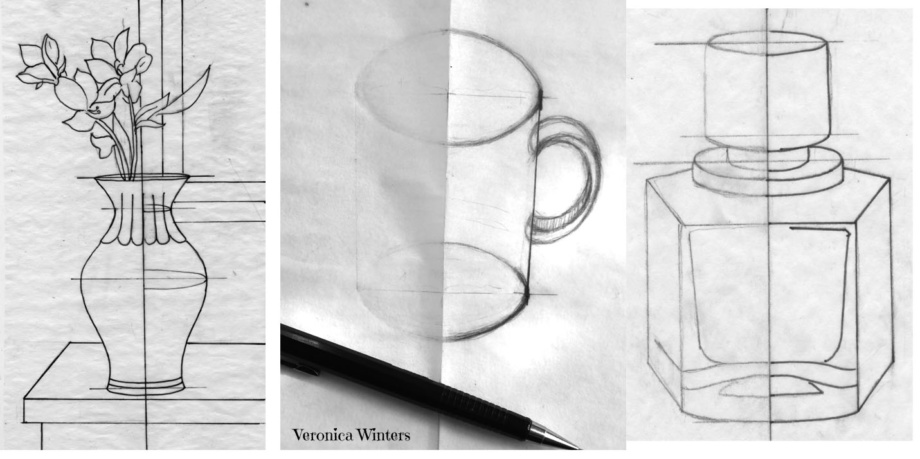
Why don’t we just transfer the outlines right from a reference using a window light or a light table? Camera lens distort reality and produce crooked forms. If you use a zoom lens, sometimes you can almost see a fish-eye effect that is very noticeable on linear objects and architecture. Don’t be a slave to your camera.
How to draw glass: tip #2 | General pattern
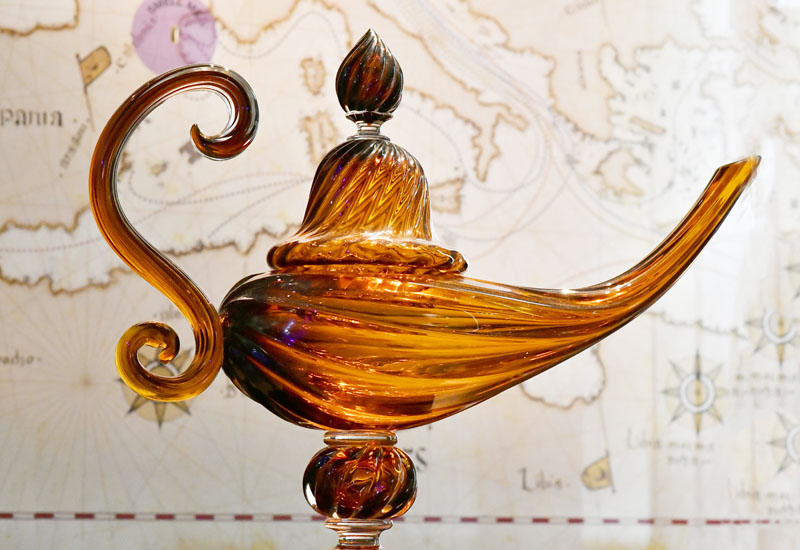
In colored pencil drawing of glass and crystal you should aim to break it down to general pattern first and then fuss over the details. See if the crystal glass has patters with ray cuts, squares, etc. You want to be perfect at repeating this pattern as it curves around the form. Only after that you look at the abstract shapes and colors found within this pattern.
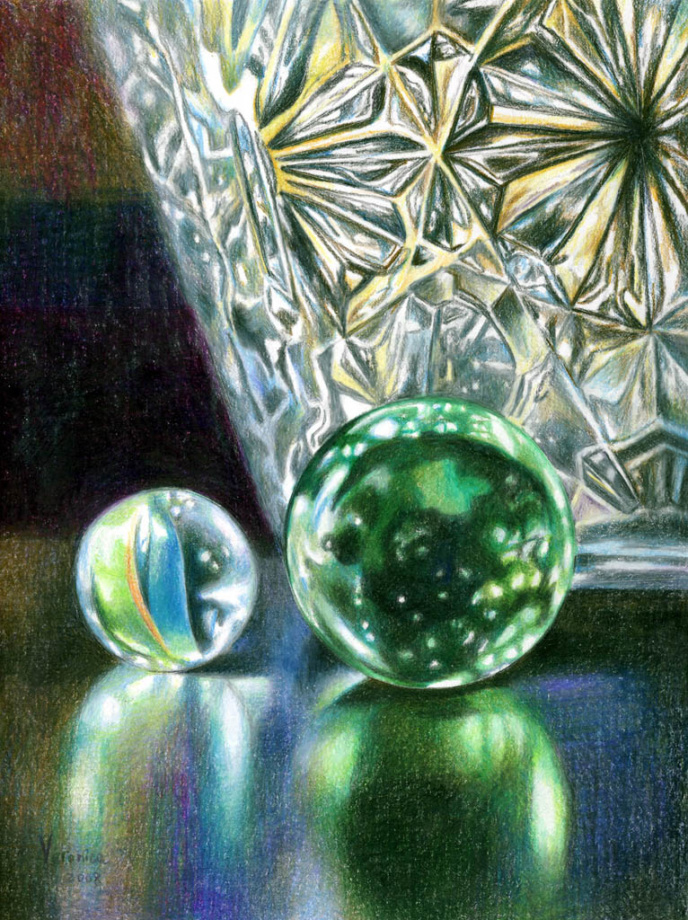
Your aim is to copy the largest shapes found within the design of glass object. It makes sense to either draw big, so it will be easy to put all the abstract designs you see in your colored pencil drawing of glass, or pick a crystal vase with a very simple pattern you can copy in art.
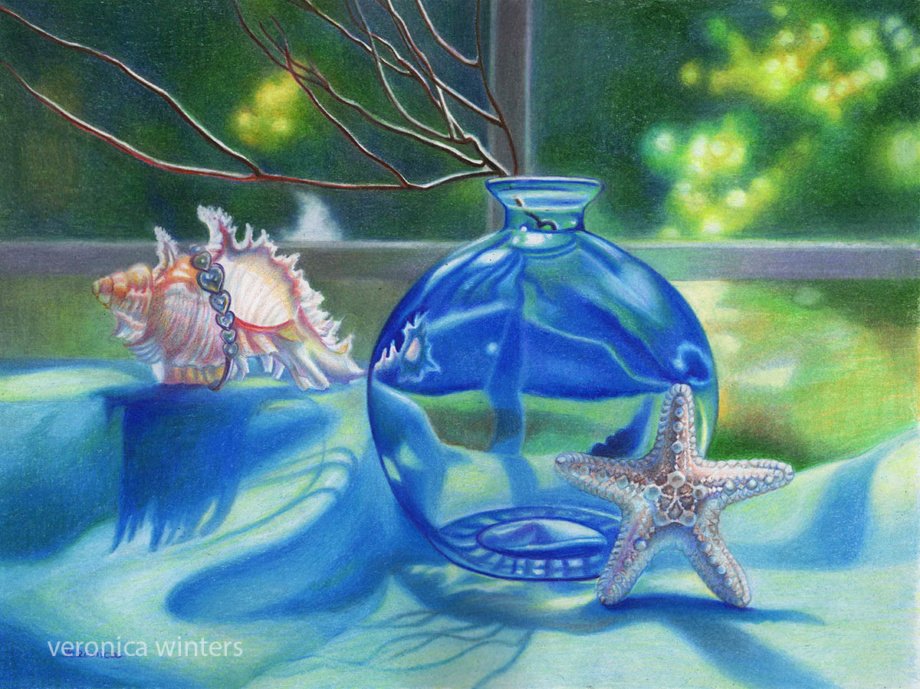
Always try to find major abstract shapes within the vase or glass. Copy those shapes as precise as possible. Usually these are distortions, patterns or color movements either inside the glass or on its surface.
How to draw glass: tip #3 | Color behind the glass
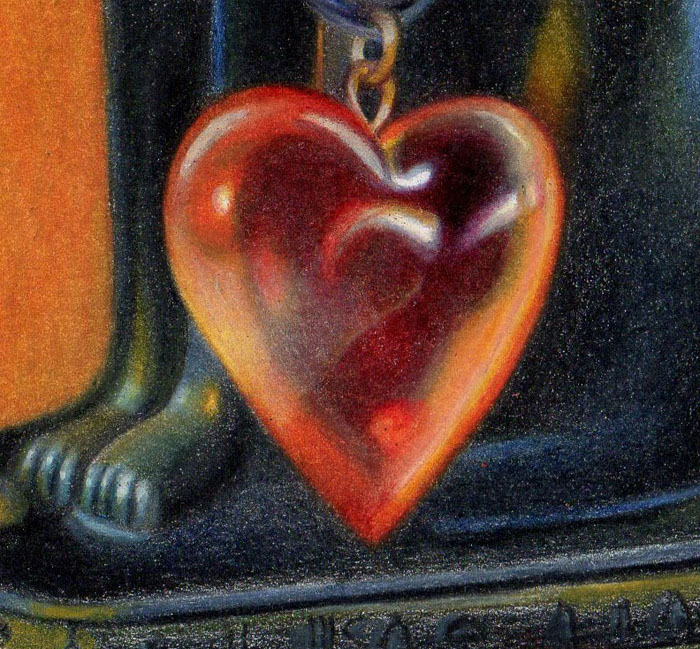
Glass surface always reflects something behind and around it. So colors of the background must be very similar to the ones inside the wine glass/ glass vase/ glass object. Color intensity could very though.
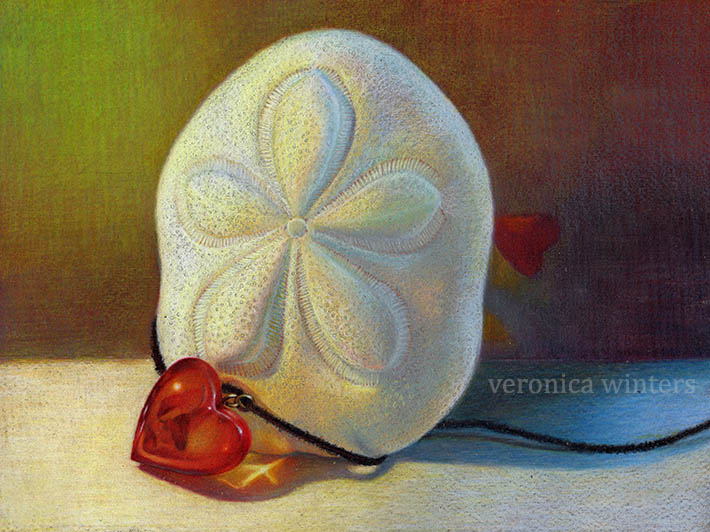
How to draw glass: tip #4 | Soft colored pencil shading
Colored pencil drawing of glass requires soft shading. Lines must be short not to flatten out the shape. To create volume in the glass vase or wine glass, pay attention how abstract shapes found on the surface curve and wrap around the object.
Curve lines. Shade softly with short, overlapping strokes. Don’t make lines and shapes inside the vase or glass too straight because it flattens out the object. But if you have a bottle with straight sides, these lines must stay nice and straight.
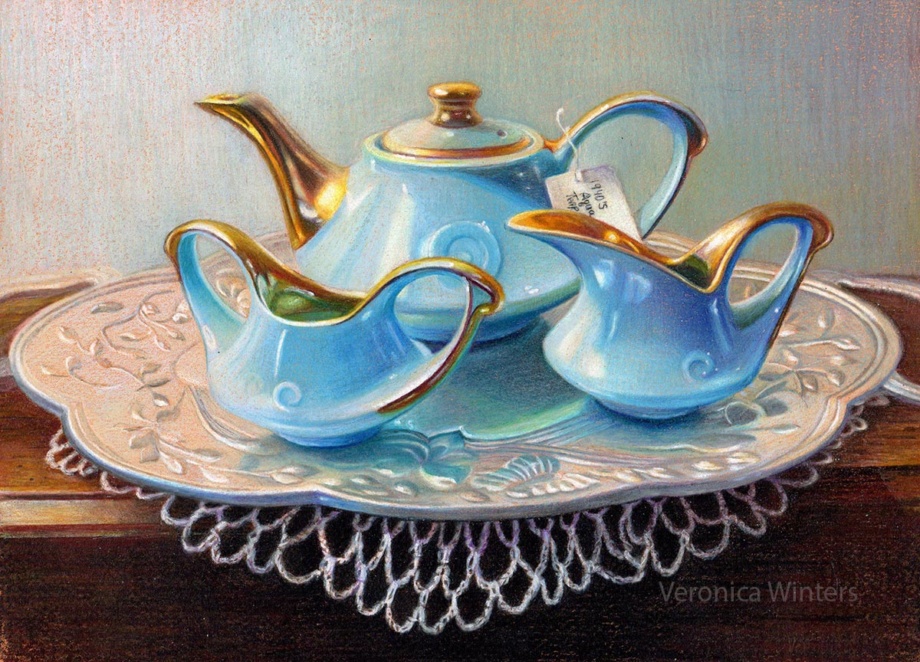
Always try to improve your shading by placing tight, overlapping strokes. Don’t rely on fixing the unevenness of your shading with the blender. Rotate your paper to place the pencil strokes in the right direction. One of my favorite colored pencil brands is Caran D’ache Luminance because they’re very soft, durable, lightfast and blend exceptionally well simply by shading tightly or crosshatching with them. They’re very pricey but can make a great gift for every colored pencil artist.
How to draw glass: tip #5 | Blending
Glass has no texture. To imitate this glass-like surface colored pencil blending becomes key. Sometimes you don’t need extra blending if you shade with sharp pencils overlapping, crosshatching or moving in circles to create tight shading. Paper’s texture has a lot to do with it. Paper must be smooth with just a bit of paper tooth to adhere the colored pencil to. If your drawing paper has lots of texture, then blending is necessary.
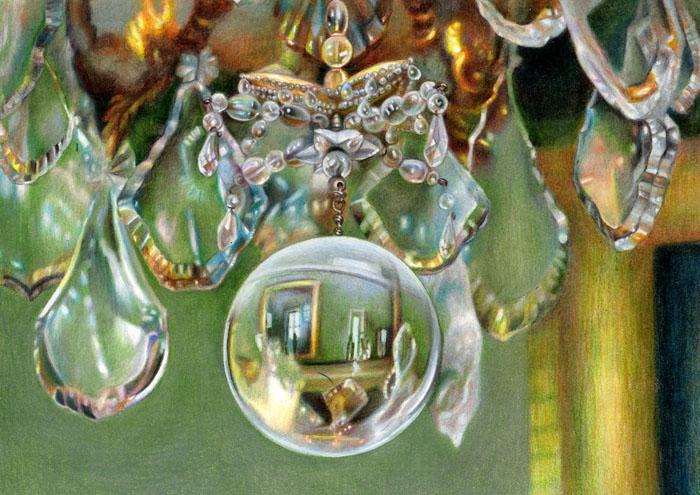
To imitate the smoothness of glass I shade everything with heavy pencil pressure. Usually I don’t use the blender. If you think your shading is not complete without additional blending, use Caran d’Ache full blender at the very end. Blend everything where you don’t want to see any texture. Glass vase has no texture but flowers sticking out of it might have some texture, for example.
Putting it all together
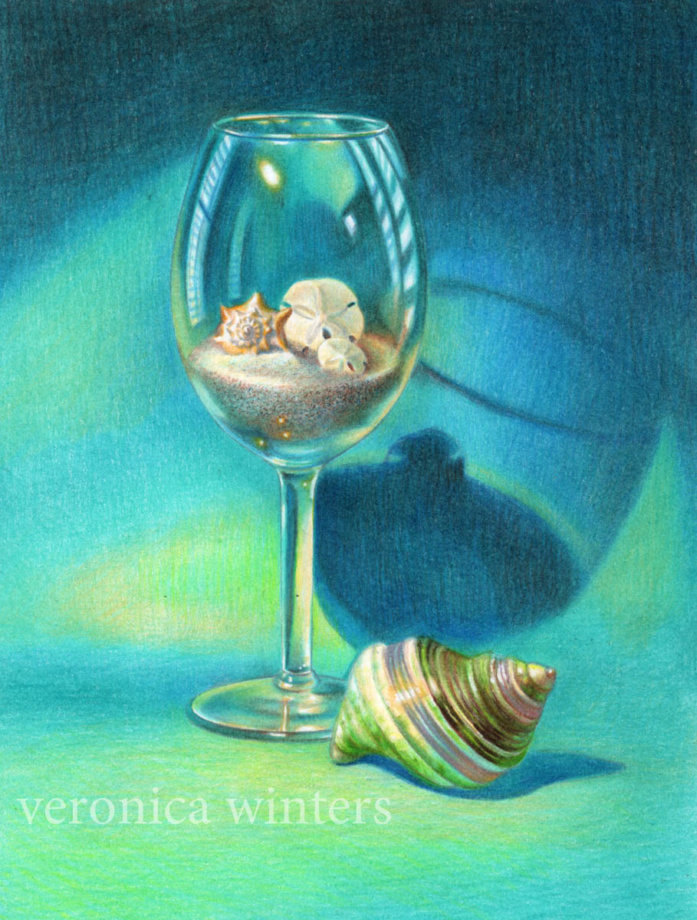
Step back and look at your colored pencil drawing of glass from a distance. Is the overall shape of the wine glass correct? Do you have enough variation in values ranging from light to dark? These are potential places to fix things. Is glass smooth with nice transitions? Do you have strong highlights?
Oftentimes the blending step is not the last one in drawing of glass. Additional layering may be necessary to tweak the values or to soften the edges. When the surface becomes too waxy and doesn’t accept any more pigment, spray it with a fixative for dry media (I recommend Grumbacher). Let it dry and try shading it once again.

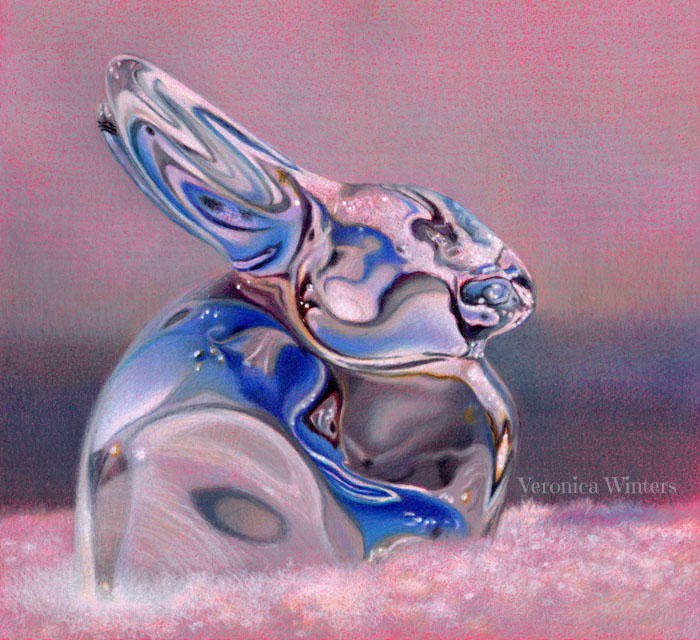
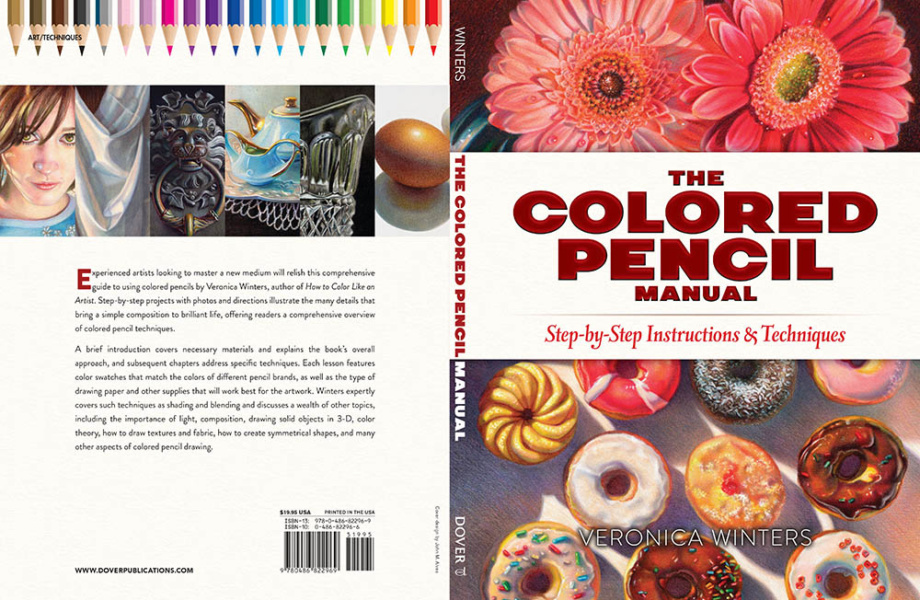
The Colored Pencil Manual art instruction book: https://amzn.to/3fRpoEb
How to Color like an Artist art coloring book: https://amzn.to/2LtH0Iq
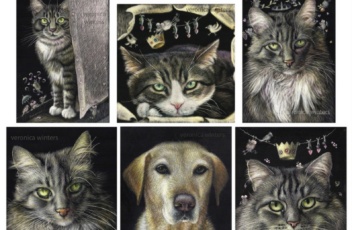
How to start Scratchboard art: scratchboard techniques, tools & tips to make fur texture
This is the excerpt for your very first post.
5 ways to check the accuracy of your drawing to create realistic paintings
If your goal is to create realist drawings and paintings, you must master the accuracy of your outline drawing. Never neglect it and strive to perfect the drawing every single day. If you paint, you rely on your drawing skills even more to create realist art. Whenever something looks off, it means that your drawing is off. There are several easy tools realist artists use to catch their mistakes. I’m going to list the ones I use the most often.
5 tips to catch your drawing mistakes:
#1 Turn your canvas, paper or any other surface you’re using upside down.
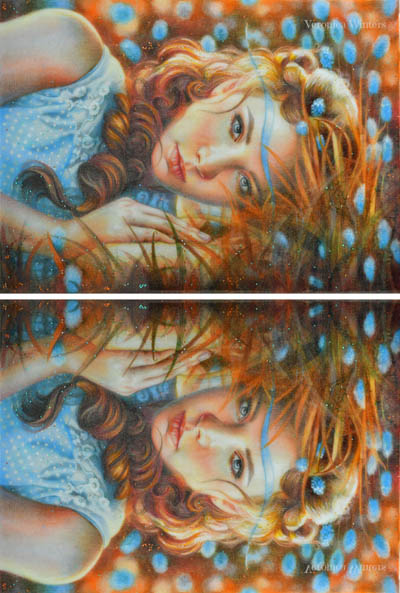
Turn it often. By turning your canvas upside down, your brain sees the mistakes instantly. I often paint upside down too because it lets me focus on shapes and see my subject differently. I keep rotating my drawing/ canvas often checking for anatomy mistakes.
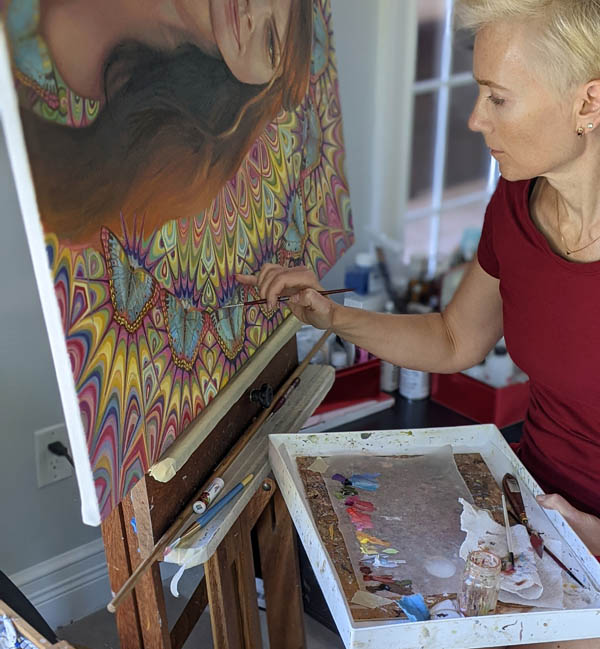
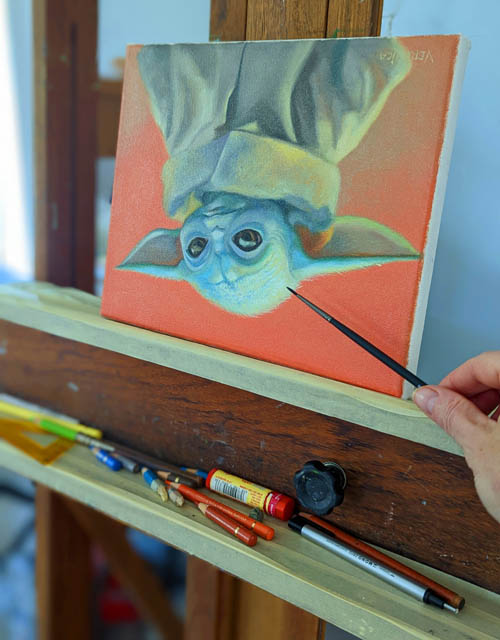
#2 If you paint digitally, flip your canvas horizontally often.
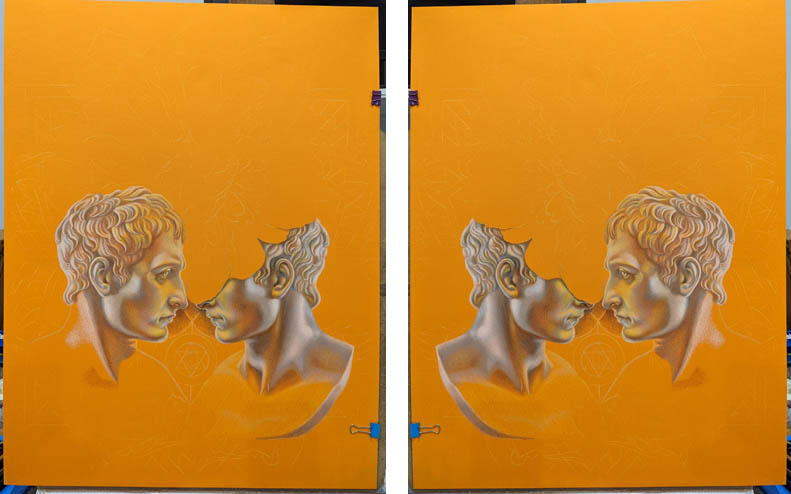
By flipping the canvas, you see all your awkward shapes. Use “Flip Layer Horizontal” function. Go back and forth working on your drawing in both modes.
#3 Check the accuracy of your drawing in a mirror.
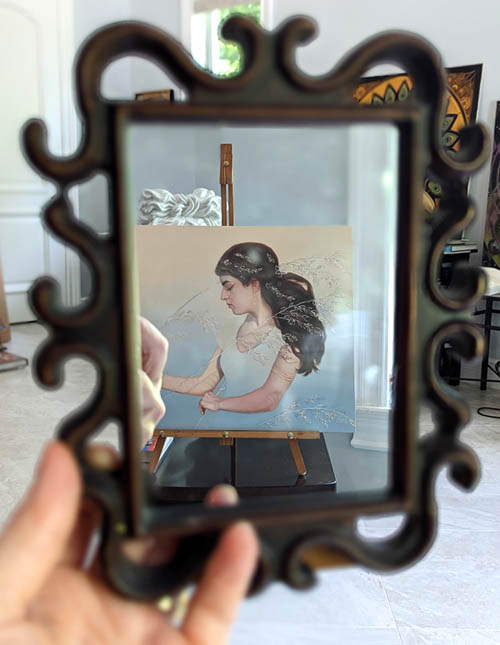
Look at your drawing in a mirror! This is the most useful tool I use to catch my mistakes. You’ll notice the crookedness of the eyebrows or unevenness of other shapes in your drawing.
#4 Step back to look at your drawing from the distance.
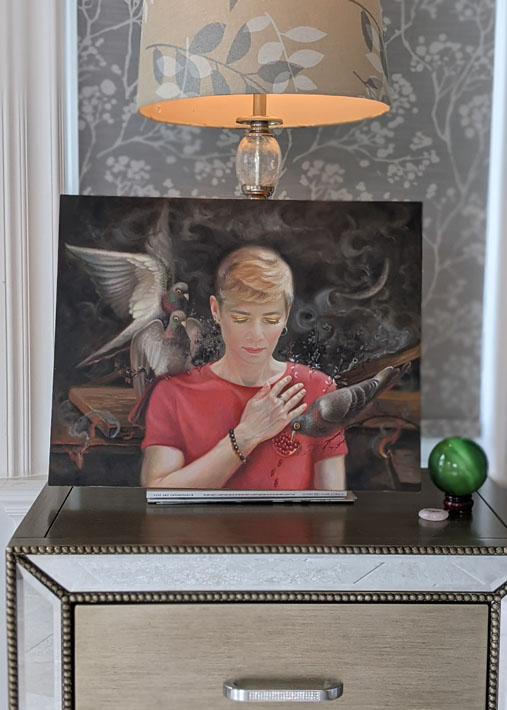
You can evaluate the relationships between big elements in your composition standing far away from your canvas, which you don’t see being up close to your painting.
#5 Take a picture of your art in progress.
Hold your camera straight and quite far from your drawing to prevent big distortion (yes, almost all cameras distort images, especially the phone cameras). Now look at your picture. At first glance you’ll see a few strange shapes in the photo. They may become less obvious after a while because our brain makes adjustments… I often use my camera at the last stage of my painting process thinking that I’m done and ready to take my final shot but then I notice a few more mistakes I didn’t catch during the painting process.
This is it! Use a combination of all of these tools to perfect your anatomy drawing or any other kind of drawing.
Check out my video art courses here: https://veronica-winters-art-school.teachable.com/
- Drawing pad, bristol vellum
- Kneaded eraser
- koh -i-noor drawing paper, colored pencil
- Tombow mono eraser
- Drawing fixative
- Sennelier fixative for charcoal and pencil has a super fine spray mist, matte, high-quality
- Gamvar varnish for oil paintings, satin
- Brush for varnishing oil paintings
- Color Wheel
- Canson Colorline drawing paper is available in many colors and various thickness. You might find better choices at art supply online retailers
- Molotow metallic marker, gold
- How to color like an artist, coloring book for children and adults
- The colored pencil manual, art instruction book
Lightfastness ratings of the best colored pencils
In this article, you’ll find simple to understand, visual charts of some major brands of professional colored pencils. I use them to reference not only my colors but also my purchase decisions. I buy colored pencils as open stock, which means that most colored pencils are sold individually. This saves me time and money because I don’t buy the fugitive colors, which fade and even disappear off of the paper pretty quickly. I wanted to have a simple, visual database of color charts for a quick access to make a decision on the go, so here we are!
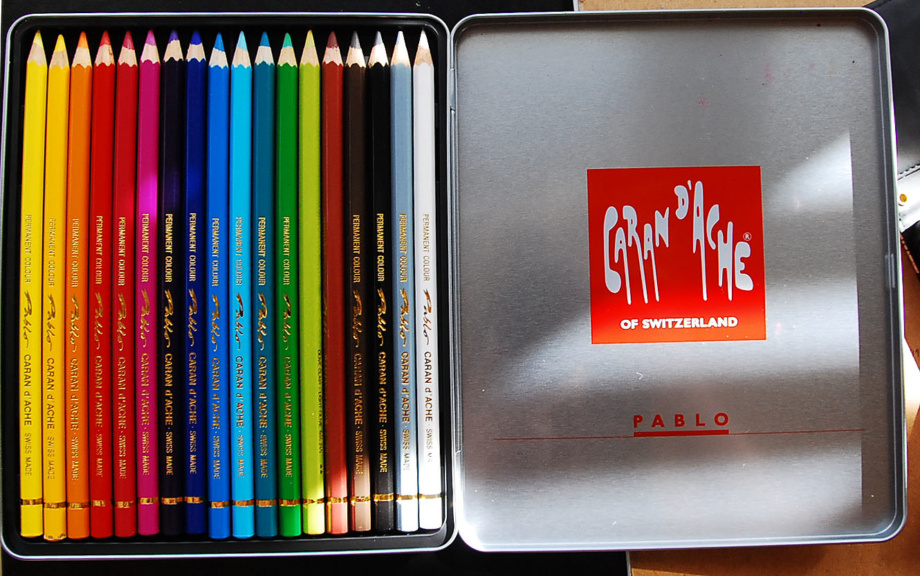
What can be confusing about reading the lightfastness charts of colored pencils is the star rating itself. There's is no unity in lightfastness presentation. Some brands use a 1-star rating to show that their colored pencils have excellent lightfastness (100+years), while other brands use the same 1-star rating to rate their worst or fugitive colors. So you must pay attention to the lightfastness rating of each brand, to get correct reading of their lightfastness charts.
Lightfastness is the ability of colors to withstand strong UV light over a prolonged time frame. Usually colors that have excellent rating are not supposed to fade for 100+years. Fugitive colors can fade within very few years that I saw myself happening when I began drawing with Prismacolor. I didn’t care about the lightfastness back then. I was a beginner student and my only priority was to learn how to draw, not being consumed by the analysis paralysis. It matters a lot to me now as I sell my art. Of course, this decision comes at a considerable cost upgrading my art supplies to the best performing colored pencils. So it depends at what point of learning you’re and how big your budget is. Just because you switch to very expensive pencils, it won’t help you become an excellent draftsman overnight. At the same time quality of colored pencils does matter a lot in art creation. Cheap, low-quality colored pencils don’t have the color saturation and softness necessary to create consistent shading.
What makes professional colored pencils different from others?
- lightfastness
- lead’s softness
- color saturation
- durability (breakage of its core)
- price
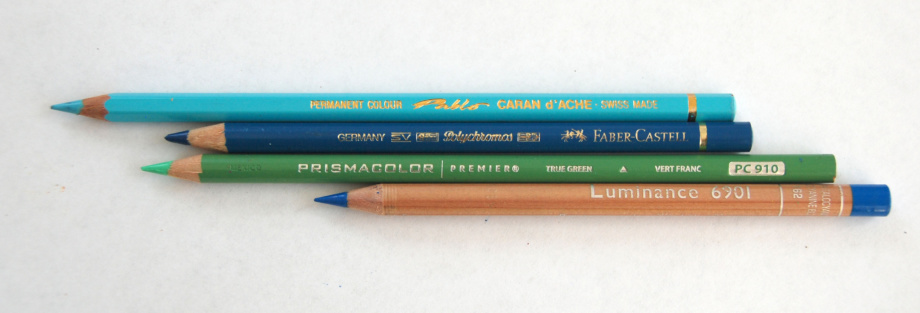
What are the best colored pencils to try?
- The absolute best are Swiss made Caran d’Ache Luminance. They have the best lightfastness rating, the strongest core and the softest lead to produce professional colored pencil drawings. They are the most expensive ones too, sold at over $4 per pencil.
- Holbein Artists’ Colored Pencils is a new brand of upscale colored pencils. They beat Luminance in price and some artists swear by them!
- Derwent Lightfast are 100% lightfast oil-based colored pencils manufactured in England. They are smooth, vibrant and creamy. Available in a range of 36 colors.
- Prismacolor Premier colored pencils have a very soft core and nice coverage, but many of them are NOT lightfast. You should download their lightfastness chart to see the rating of every pencil they have. LF-1 and LF-2 are good to go, but avoid using pencils with the # III and # IV ratings. They fade from your page within 2 years. Literally.
- Swiss made, Pablo colored pencils is a cheaper alternative to the Luminance manufactured by the same company. These have a very strong core that resists breakage. They are saturated and soft but their lightfastness varies. The lightfastness rating is written on them.
- Coming from Germany, The Faber-Castell Polychromos colored pencils are different from the brands mentioned above, because they don’t have that much wax in them and behave more like soft pastels when you start blending them. Therefore, solvents don’t work on them as well as on wax-based colored pencils. They have a very strong lead with the lightfastness rating written on every pencil. Not every colored pencil is lightfast and you should refer yourself to the chart if you buy them as open stock.
- Derwent Colorsoft colored pencils are also worth your try. They are nice to work with but the lightfastness varies as well. Buy a few colors to test them in your drawing!
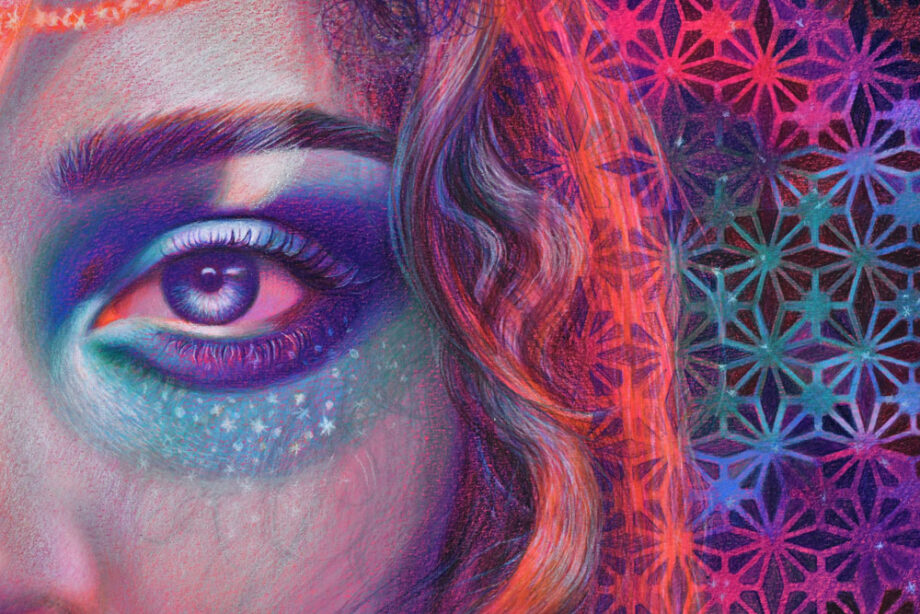
I requested the charts from the manufacturers. Most of them shared the pdf files, which I think is inconvenient to look up the colors on the go. So I took the liberty to modify the charts and convert them to simple jpg files.
Holbein Artists’ Colored Pencils (US-Canada)
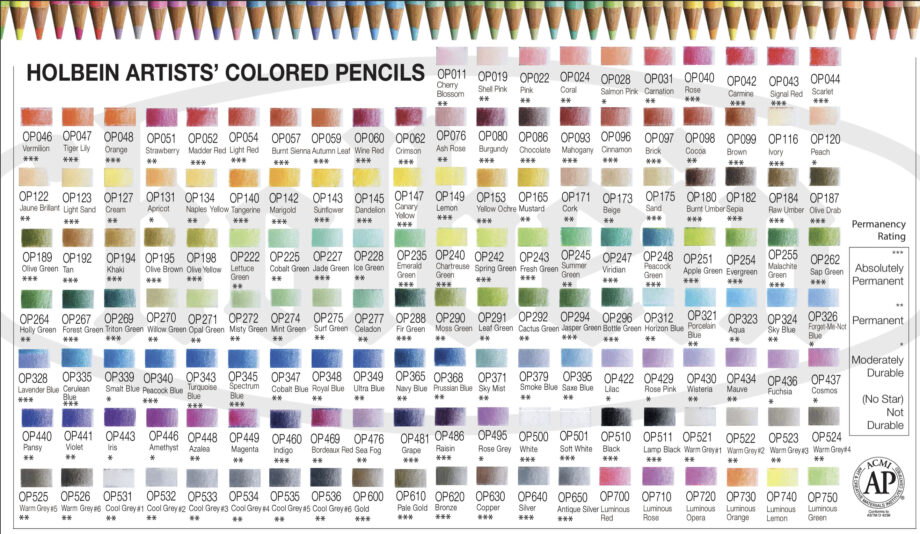
Faber-Castell Polychromos Artist Color Pencils (Germany)
102 of 120 Polychromos Colors have the *** designation | *** = Maximum Lightfastness. Maximum Fade Resistance of 100+ years
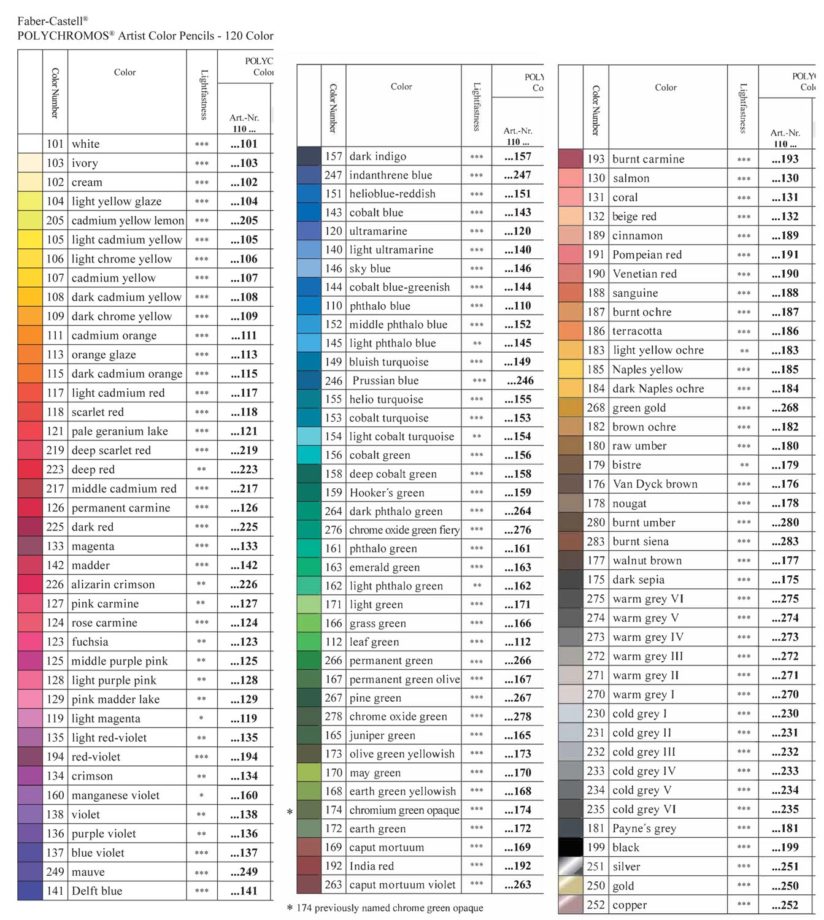
Faber-Castell Pitt Artist Pens lightfastness chart (Germany)
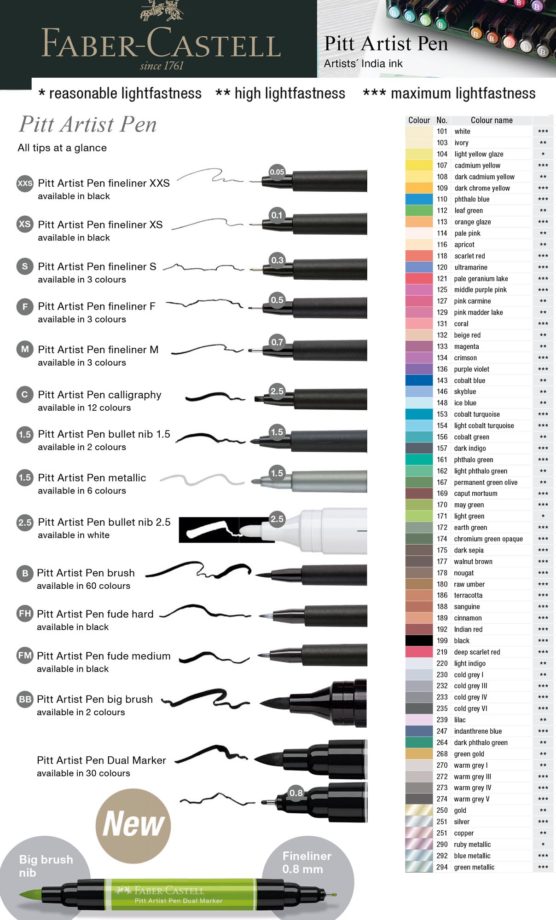
Prismacolor Premier Colored Pencils (the USA)
Lightfastness rating system: I-excellent, II-very good, III-good, IV-fair, V-poor
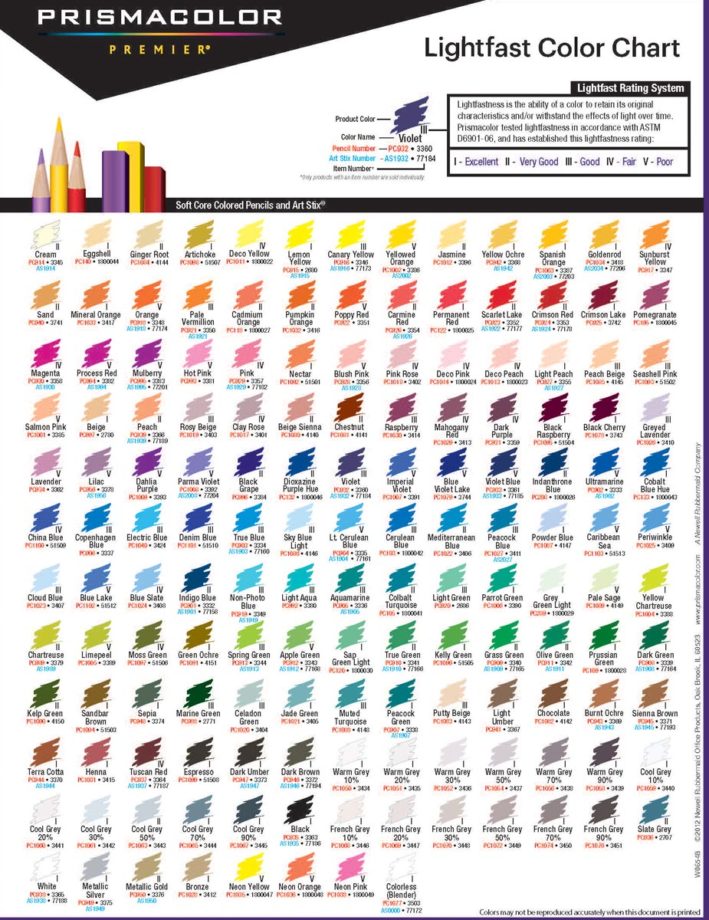
Caran d’Ache Luminance Colored Pencils (Switzerland)
Luminance has I & II lightfastness rating with most pencils having LF I.
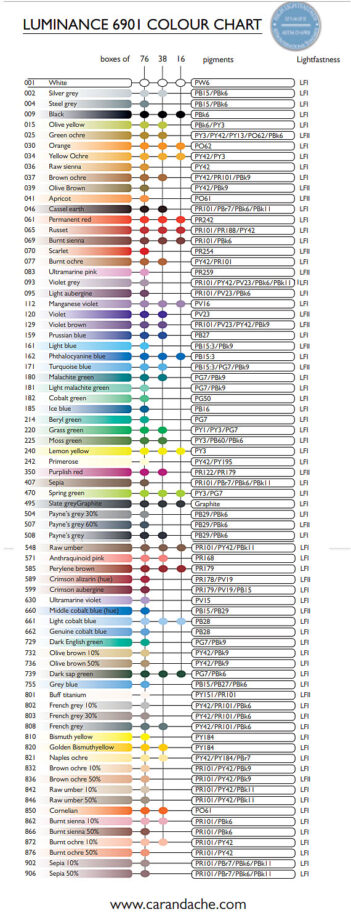
Caran d’Ache Pablo Colored Pencils (Switzerland)
***Excellent lightfastness, **very good, *good.
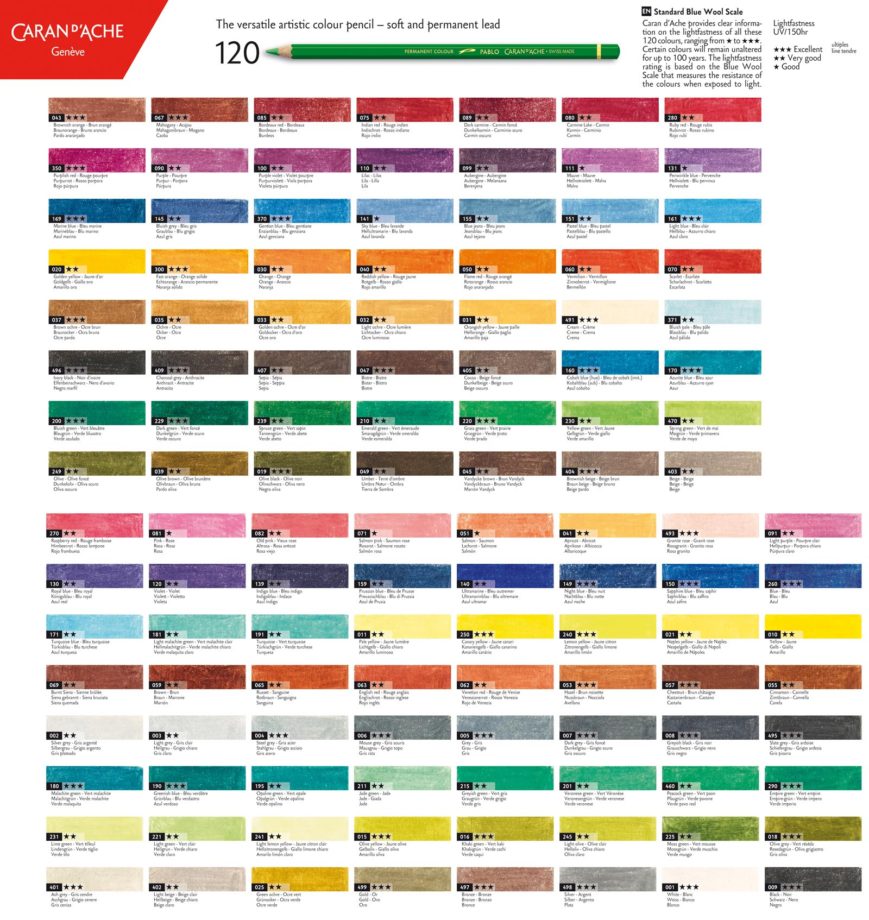
Derwent Coloursoft Colored Pencils (UK)
Lightfastness rating: 6-good, 7-very good, 8-excellent | 6-8 won’t fade for 100+ years.
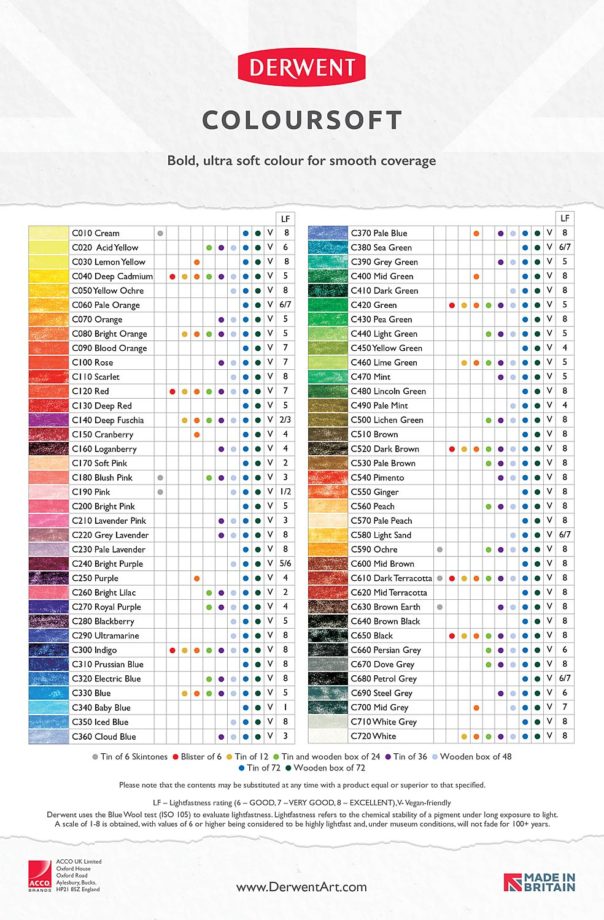
Derwent Lightfast Colored Pencils (UK)
Lightfastness rating: 1 & 2, won’t fade for up to 100 years.
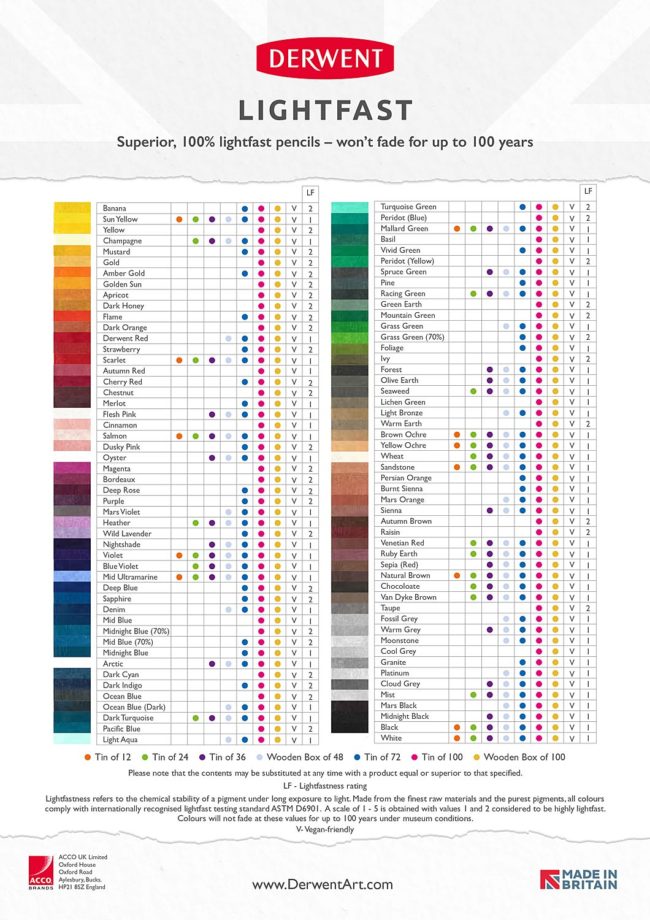
Derwent Artists Colored Pencils (UK)
Lightfastness rating: 3-fair, 4-moderate, 5-good, 6-very good, 7-8 excellent
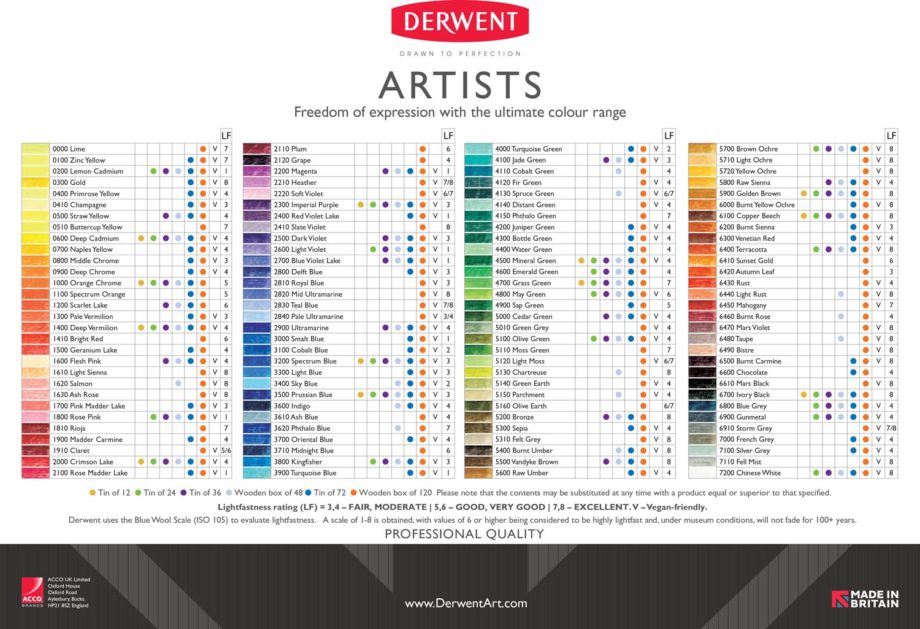
What are the best professional graphite pencils?

- Coming from Japan, the Tombow Mono graphite pencils are the top of the line for professional drawing.
- The Cretacolor Monolith woodless pencils
- Prismacolor ebony graphite pencils are great for beginners in art that don’t need to sacrifice quality over the money spent on art supplies.
- The Faber-Castell 9000 graphite pencils
What makes them stand out:
- High quality of the lead
- Resistance to breakage
- Consistent coverage
- Various degrees of softness and hardness. (9H is the hardest pencil for the lightest shading, and 9B is the softest pencil for the creation of the darkest values).
Of course, there are many more brands and pencils. Instead of buying a box, buy them as open stock at a local store or online. Work with them and then invest into your favorite brand.

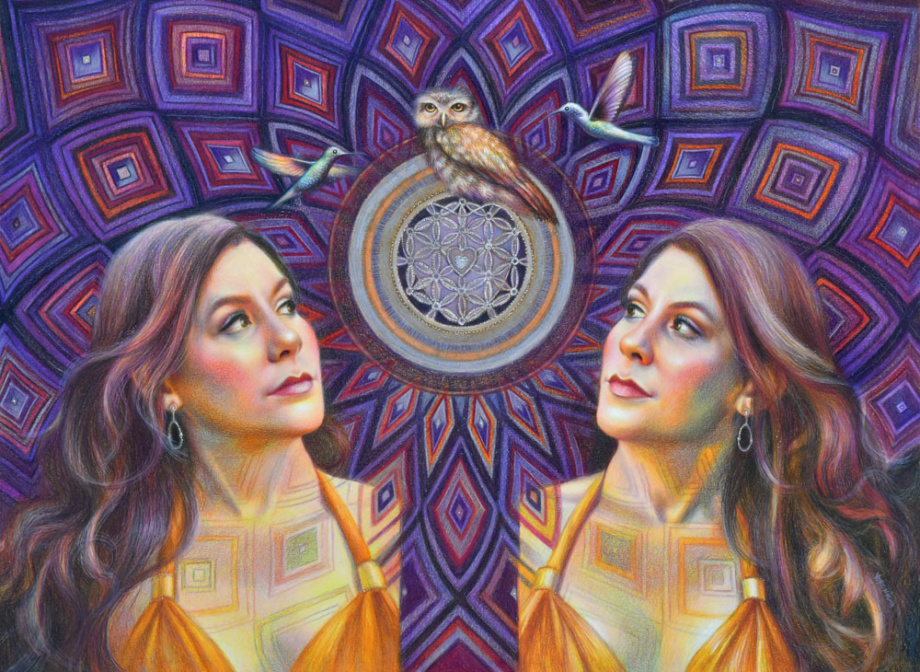
I'll be adding charts to this post, so don't forget to subscribe to my email for more information coming on this topic. And check out my colored pencil drawing classes here: https://veronica-winters-art-school.teachable.com/
Art supplies available on Amazon
- Drawing pad, bristol vellum
- Kneaded eraser
- Tombow mono eraser
- Drawing fixative
- Sennelier fixative for charcoal and pencil has a super fine spray mist, matte, high-quality
- Gamvar varnish for oil paintings, satin
- Brush for varnishing oil paintings
- Color Wheel
- Canson Colorline drawing paper is available in many colors and various thickness. You might find better choices at art supply online retailers
- Molotow metallic acrylic marker, gold
- How to color like an artist, coloring book for children and adults
- The colored pencil manual, art instruction book
You can ask me questions on social media here:
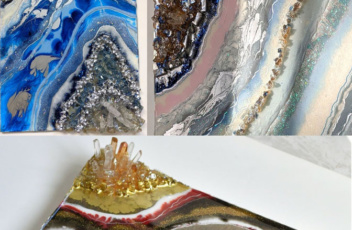
Resin art ideas for beginners: 10 things I learned pouring resin art
You know that I’m a realist artist but this lockdown was long. I felt drained of creativity, motivation, and inspiration to produce anything. As a result I began to experiment with other mediums in my studio hoping to revive my feeling of joy. For some reason it was difficult to find excitement in my ‘regular’ portrait painting and colored pencil drawing. So the idea was to learn resin art and fluid art painting techniques from scratch to combine them with my realist art in a new way. Here I’d like to share what I learned doing resin art (and the resin art supplies list at the end of this article).

1. Resin quality & variety
All resins are different in consistency and application. You have to try several different brands to figure out what works for you and your projects. For example, Liquid Diamonds is a high-quality resin that runs like water. It’s both good and bad for resin artists. It’s good because you need much less resin to cover the surface. It also generates less heat as a result of thin application. (Not melting the wax in colored pencil as much due to less heat produced). It’s not great because it can run over the edge really badly. The entire batch of mixed resin can potentially run off the surface through one small cavity present between the edge and tape. I think that Liquid Diamonds art resin is great to use on the surfaces that already have borders like a tray or a bowl.
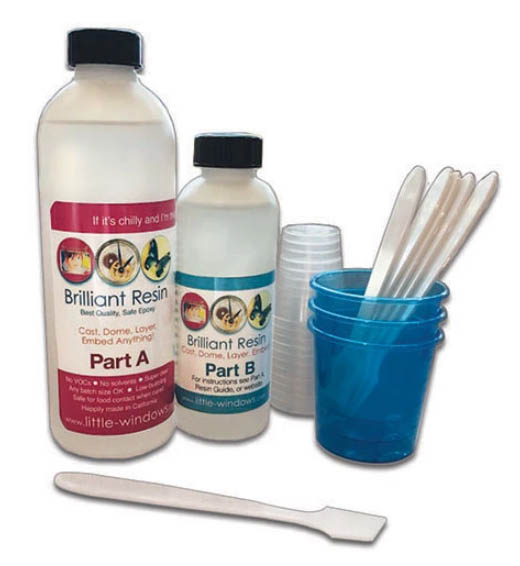
Some resins have doming capabilities like Little Windows or KSRESIN. This is great to hold the edge and no so good cost-wise because you need to apply a lot more resin to cover the surface completely especially if you work in subsequent layers. Thicker resins tend to roll off the previous resin layer unless you have enough to cover the entire surface or you’ve done some sanding. And that’s why it depends what kind of resin art project you do.
Each resin works great for specific projects and maybe terrible for others. I’ve done small jewelry pieces, small and large resin paintings as well as some geode art and large geode pieces. In my experience Little Windows mixes great and gives very few (if any) bubbles working small (jewelry and small craft projects). It’s crystal clear, easy to mix and dome, and non-toxic! I didn’t like it that much working large however because it likes to be poured all at once and left untouched. Otherwise it could leave strange patterns in the resin. Other resins like KSRESIN or Liquid Diamonds give me a chance to spread the resin around the panel and to manipulate it some to cover the surface without leaving any patterns in it.
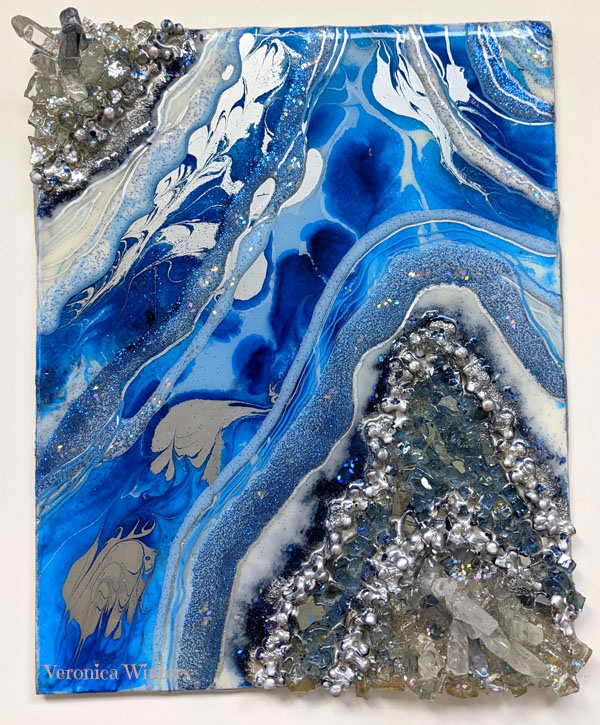
2. Consider the scale of your project
As a result the scale of your project or the amount of mixed resin you need requires experience that no one can give you in a tutorial. Only by mixing the resins yourself and applying them in your varied projects you learn what works and what doesn’t and how much mixed resin you need for a specific art piece.
One advice I can give you is to start small. Resin is expensive to waste it especially if you buy art resins. But most importantly working small cuts on your frustrations because a lot of things can go wrong working big (mixing not enough resin, falling dust, broken edge, uneven application, bubbles, etc). By working small you minimize your frustration on so many potentially frustrating problems!
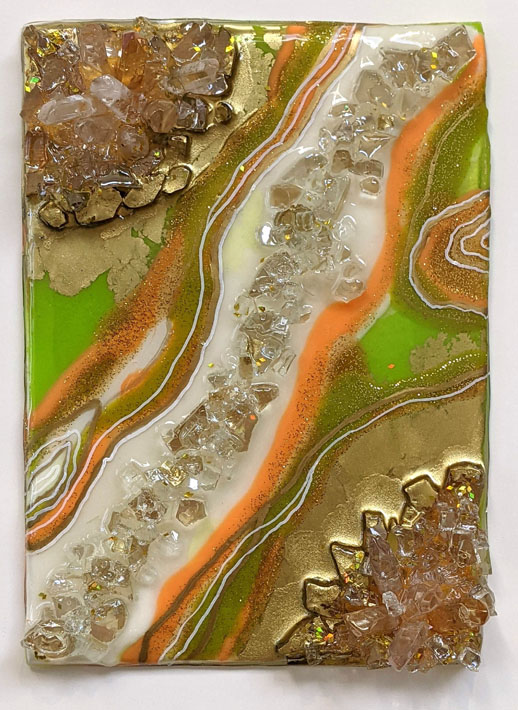
3. Consider working time
Working time varies greatly in resins. Quick Coat Resin can start setting up in 10-15 minutes while KSRESIN has 45+minutes working time. If you don’t add any powders or paint to the mixture, the working time is long enough to spread it around, torch, level it out and torch again.
In my experience, what I found cuts on working time greatly are high humidity levels, high room temperature and the amount of added pigments mixed into the resins. This becomes crucial to learn when you do large resin art pieces! Because resins can set up almost instantly having acrylic paint or mica powder mixed into them. They’ll set up so quickly you won’t be able to take them out of your cup! In general it’s best to add just a little bit of pigment to resin for it to set up properly.
Also, if you make geode art you want some of your edges to blend more while others look hard. Working time and layering greatly affects what kind of edge you’ll get between the colors.
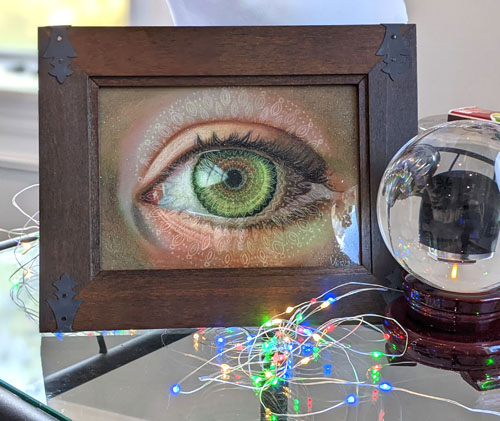
I poured Little Windows resin over the varnished drawing. Glitter sparkles and gives it magical feeling. This resin art is available for sale.
Mixing Ratio
Resins have varied mixing instructions in terms of volume and time needed to mix both parts. You must follow mixing ratios written in the instructions for every new resin you use. Some resins have 2:1 mixing ratios and others have 1:1 ratio. Mixing time varies too and it’s very important not to cut on mixing time. Spend as much time as necessary mixing the two parts into one and only after that add pigments/glitter/ powder into it and mix it some more. For example it takes 4 minutes to mix both parts of KSRESIN. Why is it important? You need to do it right to prevent having soft spots, cracking or uneven application.
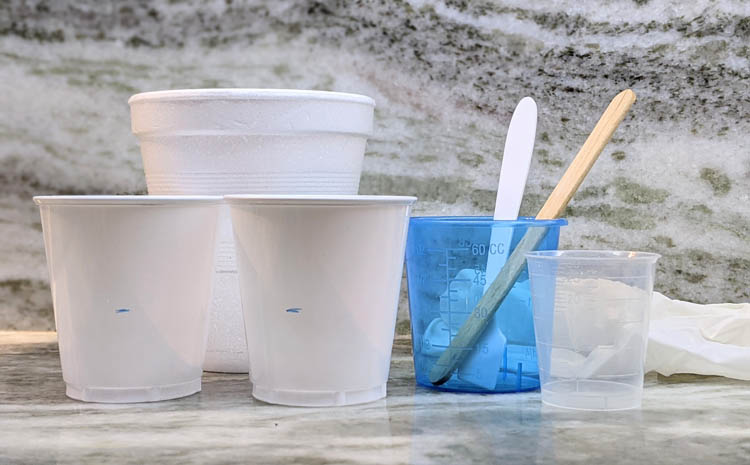
If you use plastic cups that don’t have precise measurements written on them, pick identical cups and measure the level you want with a ruler. For example I can measure and mark 1 inch from the cup’s bottom. I mark both cups with a sharpie, pour equal parts of hardener and resin into those cups leveling resin out to that 1″ mark and then I take the 3d cup to combine these two together. If it’s 2:1 ratio, you can’t measure 2 inches vs 1 inch because the cup widens. So I use the same 1″ cup to measure it twice.
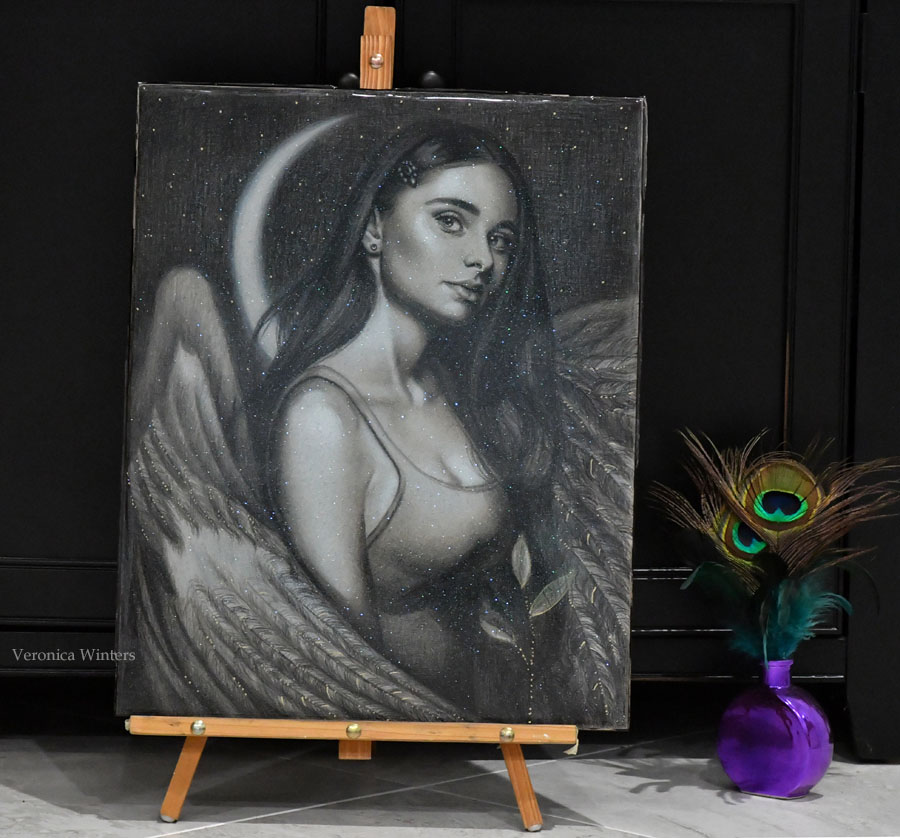
4. Bubbles
Bubbles. Yes those pesky bubbles happen naturally because you mix part A with part B and the air gets trapped in the chemical process of mixing the two parts. Resins are very different in the amount of bubbles they produce. Little Windows resin has very few bubbles that tend to disappear on their own, especially when you let it rest first and then blow some air by your mouth over the art. I never torched this resin and it came out perfectly even and crystal clear. Liquid Diamonds is not super bubbly as well.
You must get a small, culinary torch to work with most (if not all) resins because bubbles stay in cured resin for good and screw up the overall appearance of the finished piece. Some resins are very bubbly and there is no way around it but using the butane torch.
Picking and working with the culinary torch is tricky. I think that the construction of any handheld torch is about the same despite their difference in price. Based on the reviews I’ve read, all of them have similar flaws not working properly from time to time… ( Just read one-star reviews on Amazon to understand common problems associated with it). The amount of flame changes without changing the knob or it doesn’t want to charge butane one day and does charge it just fine the next day.
Buy it. Work with it but be extra careful. The torch can burn the masking tape or other parts of art where there is no resin. Potentially it could burn anything around it or the cured resin in the previous layer…That’s why I always use the lowest setting possible and I hold it far enough from the surface not to burn it. Also, I move my hand around the piece evenly without concentrating on any one area. When the resin is bubbly you can see how the bubbles disappear instantly torching them. Usually I repeat the process twice.
I have IDEACone Premium Butane/ Culinary, refillable torch. I don’t think it’s better or worse than others. It’s just the one I got. Also, I buy Bernzomatic butane can at a local hardware store that has the most competitive price on it. Working with these small culinary torches can be tricky because the flame might be uneven or they stop working for no reason, or they don’t charge butane as they should. In other words, small torches are very unreliable and when you have so little time to get rid of the bubbles, you want it to work!
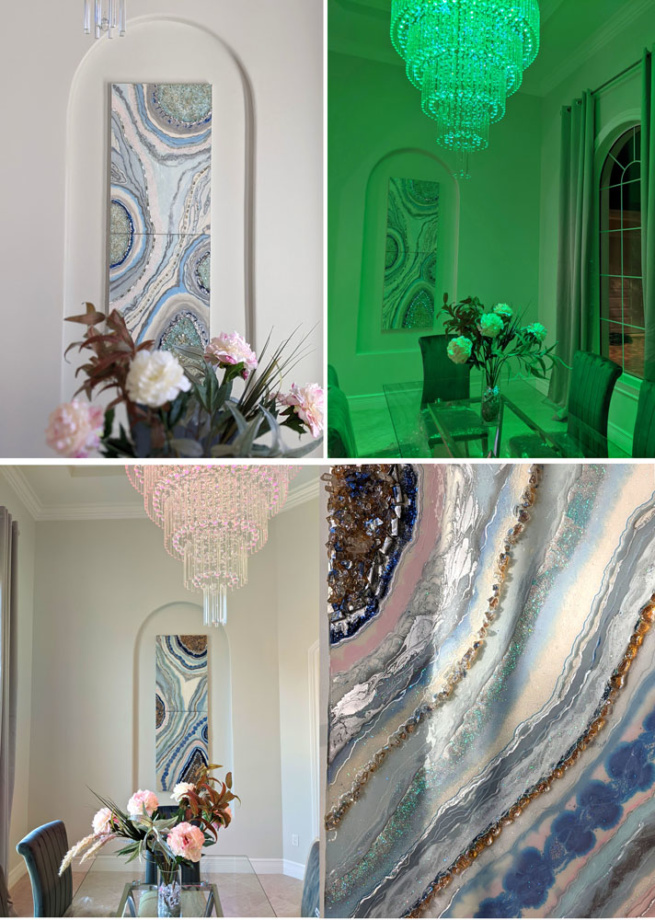
5. Tape
Watch what tape you use to hold canvas or panel edge. I find that cheap or generic masking tapes don’t work the same way as Scotch masking tape does. Generic ones can stick to the surface for good. It’s very difficult to remove it when the resin cures. You must apply heat (torch it) to take it off and when resin runs over and sticks to it, it often doesn’t come off 100 percent. Also cheap masking tape doesn’t hold the edge well and may let the resin flow over the edge/under the tape. I had this happen too many times! Scotch masking tape stays in place. It removes easily and rarely needs a torch.
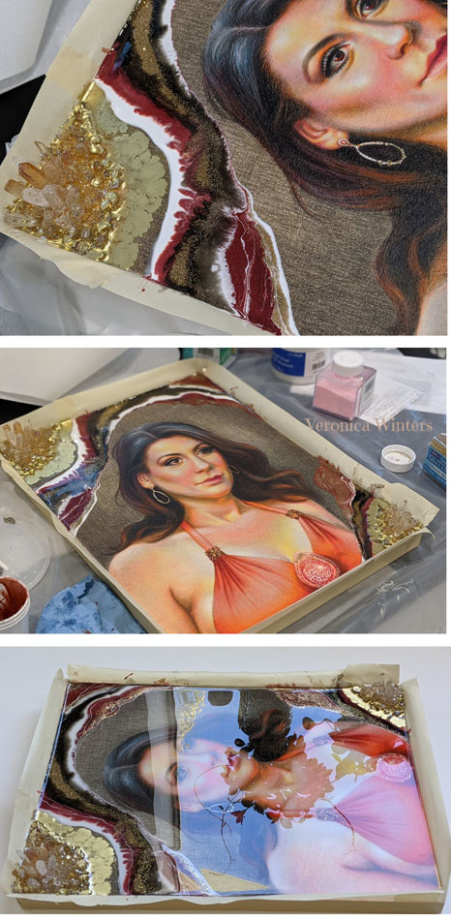
6. Dust, hair & cover
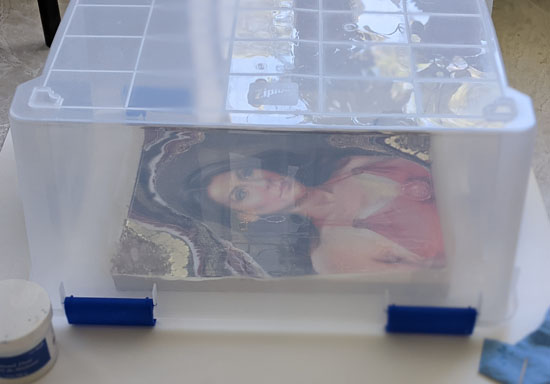
Whenever you work with resins, your space must be super clean and dust-free. Every tiny particle can land on the surface of curing resin to destroy the beauty of the shiny surface. You can’t undo it and it ruins the glass-like appearance of the piece if something sits on it’s surface permanently, It looks terrible when the dust settles right in the center of your artwork. To get rid of dust falling over your resin art, you need to find a cover for the art piece beforehand. So you can put it over the piece while it cures.
And this is when the scale of your artwork can kill you. Because the larger the piece, the more difficult it gets to apply resin perfectly. This includes mixing enough resin to cover the surface, to keep it dust-free, to mix just the right amount of resin to do colors, to pop the bubbles, to keep the edges clean, etc. Your clean cover must be large enough to protect the resin piece. I use plastic box covers, tin cans, and even Ziplock 15×20 weathershield boxes.
7. Yellowing
All resins yellow with time. Some have UV light inhibitors to slow the yellowing process down. I’ve seen my resin projects yellow even when they were not exposed to the light at all. And I bought art resins stating that they don’t yellow. They do but for different reasons. The hardener yellows in a bottle exposed to the air within a year. So it yellows with oxidation. If the epoxy resin has the UV light inhibitors, it might yellow when cured due to extreme sun exposure.
Yellowing could be a problem if you design your art piece that’s supposed to be pure white or has cool color scheme and eventually becomes yellowish. But I find that when the surface is colored, slightly yellowed resin doesn’t really change anything visually (because this color change is almost unnoticeable on brightly colored surfaces. It also warms up the surface which is good for the most part). Cheap resins yellow very quickly and don’t level out easily. KSRESIN Liquid Art Ultra UV Epoxy has UV-light inhibitors in them that yellow much slower with time but they also do yellow.
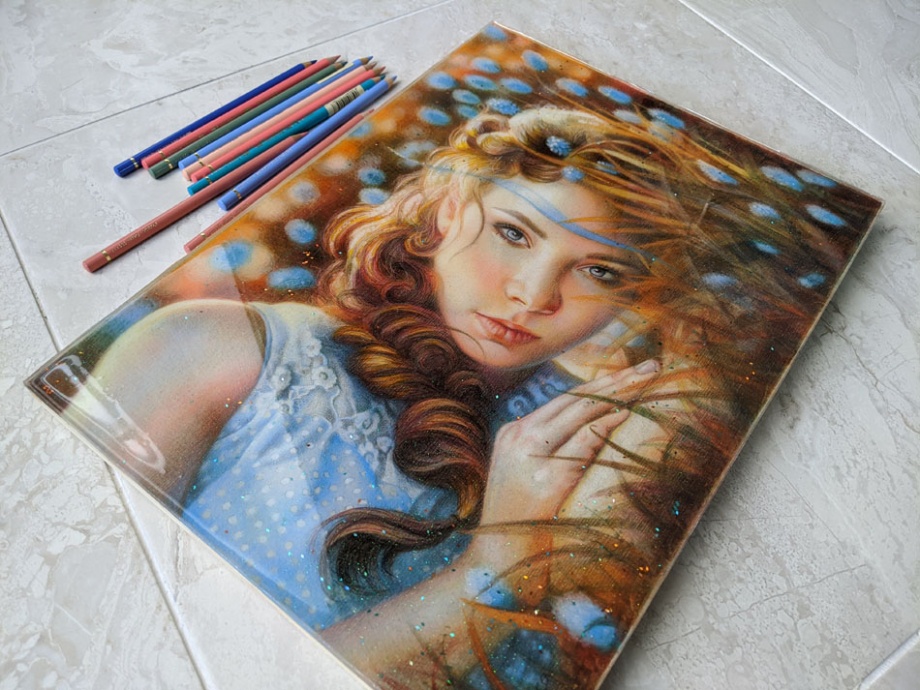
What is a UV Stabilizer in epoxy resin?
A UV stabilizer in epoxy resin is a chemical additive that helps to protect the epoxy from the damaging effects of UV radiation. UV stabilizers work by absorbing and dissipating the UV light before it can penetrate the surface of the epoxy and cause degradation.
UV radiation can cause epoxy resin to yellow, crack, or become brittle over time. This is because the UV light causes the epoxy to break down and oxidize, which can lead to a loss of strength and integrity in the material. UV stabilizers help to prevent this by blocking the UV light and preserving the quality and appearance of the epoxy.
UV stabilizers are especially important for epoxy projects that will be exposed to direct sunlight or other sources of UV radiation, such as outdoor sculptures or furniture. They can also be used in indoor projects to provide an extra layer of protection against UV radiation and to extend the lifespan of the epoxy.
UV stabilizers are often included in commercial epoxy formulations, but they can also be purchased separately as a stand-alone additive. When using a UV stabilizer, it is important to follow the manufacturer’s instructions carefully and to use the recommended amount for the particular epoxy formulation being used.
ArtResin formula includes both UV and HALS stabilization. Any resin product that does not include both HALS and UV stabilization will yellow within a year. Don’t buy cheap, low-quality resins! If you use it over your artwork, it will deteriorate the work.
8. Surfaces & molds
Work on sturdy surfaces like wood or canvas panels or metal panels. Regular canvases bend, cave in and twist. Thus they’re not great for resin application in general although I did do some resin art on canvas.

How to resin art on canvas?
Creating resin art on canvas is a popular and beautiful way to add dimension and depth to a painting. Here are the basic steps to creating resin art on canvas:
- Prepare the canvas: Start by preparing the canvas by applying a coat of gesso primer. This will help to create a smooth surface for the resin to adhere to.
- Create the painting: Paint the canvas with acrylic paints or other media to create the desired design or image. Allow the paint to dry completely before moving on to the next step. Plan what color of the canvas you need because it will show through the resin. Even if you color resin the base hue affects the overall design. Also when you put crystals or glass over the colored surface, it will show as well because you pour transparent resin over the glass in order for it to glue to the surface permanently.
- Mix the resin: Mix the resin and hardener according to the manufacturer’s instructions. Be sure to mix the resin thoroughly but gently to avoid creating bubbles.
- Apply the resin: Pour the mixed resin onto the canvas, using a spreader or brush to spread it evenly over the surface. Be careful not to pour too much resin in one area, as this can cause the resin to run off the canvas. I usually tape the borders with high-quality masking tape.
- Add color or texture: If desired, add color or texture to the resin using pigments, glitters, or other materials. Use a brush or tool to create swirls or other patterns in the resin.
- Allow to cure: Allow the resin to cure for at least 24 hours, or as recommended by the manufacturer. Keep the canvas in a dust-free, well-ventilated area during the curing process.
- Sand and polish: Once the resin is fully cured, sand any rough spots or edges . Polishing isn’t required on the surface itself because it cures with a smooth, glossy finish that does look like glass.
Creating resin art on canvas can be a fun and rewarding project, but it is important to follow the manufacturer’s instructions carefully and to take proper safety precautions when working with epoxy resin. Wear protective gear and work in a well-ventilated area to avoid inhalation of fumes.
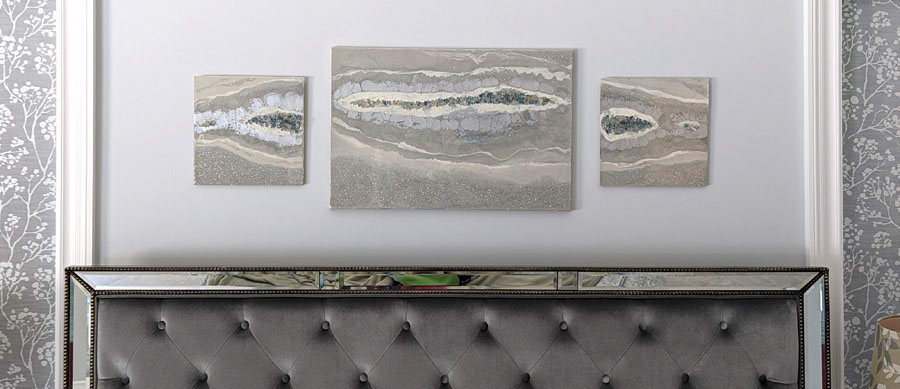
Molds are not made the same! Cheap ones give resins matte look and you have to either polish your resin piece or throw it out. Silicone molds designed specifically for art projects keep resin pieces very shiny when you take them out of the mold and you don’t need to do anything extra to make them crystal clear and shiny. So whenever you shop for molds, read reviews first. I often go to Facebook groups to see discussions or to ask a question about resin. I love my jewelry molds from Little Windows store (links are below).
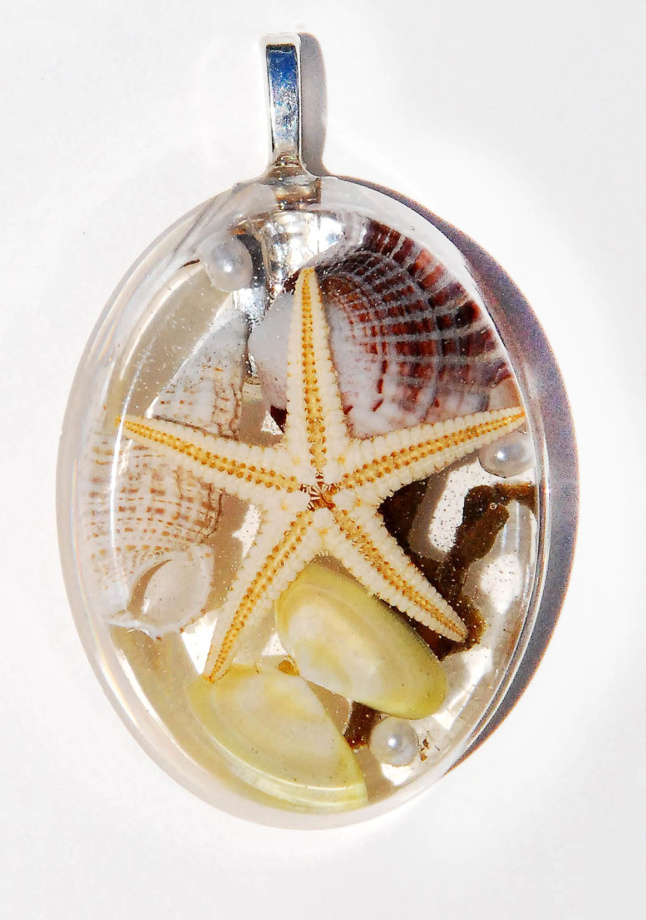
9. Varnish
Because I’m a follower of classical painting, I don’t come from making craft projects although there are so many creative resin art ideas I want to explore!!! I wanted to make my drawings look more like paintings under glass with a touch of magic in them. So this is why I began doing resin art. If you decide to try to do something similar, you must protect your drawing with a varnish first. If you don’t, it will change the color and tones of your art! The drawing may disappear. When you apply mixed resin it generates heat and melts some wax in colored pencil. You must prevent it from a complete melt down. I apply several coats of synthetic spray varnish over my drawings outdoors before covering them with resin. My favorite is Grumbacher matte final fixative for pastel, charcoal & pencil (drawing). There is no need to varnish pieces made of resin from scratch. I think it’s useful to varnish acrylic pieces before applying resin over the acrylic painting so there is no interaction between the art and the resin.
Do I need to seal my art before resin application?
Sealing your artwork before applying resin may not be appropriate for all types of artwork. It depends on a project. While sealant isn’t required, there are some situations where it may be beneficial to seal your artwork before applying resin. For example, if your artwork is made with porous or absorbent materials, such as unprimed canvas or raw wood, it may be helpful to seal the surface to prevent the resin from soaking into the material and to ensure an even finish.
If you do decide to seal your artwork before applying resin, it is important to use the correct type of sealer for your particular medium. For example, if you are working with a painting on canvas, you may want to use a clear acrylic sealer or mudpodge (puzzle sealant) to seal the canvas or paper before applying the resin. When applying the sealer, be sure to follow the manufacturer’s instructions carefully and to allow the sealer to dry completely before applying the resin. Brushing the sealant insures the coverage but dries slow unlike using a spray fixative for example. Also most papers require a sealant because they’re absorbent, although high-quality, glossy papers may do just fine. Brush the sealant on both sides of the paper!! If you use a spray sealant, use several coats on your artwork, spraying it in a well-ventilated area that’s clear of dust too. Let each spray coat to dry completely for at least half an hour.
Use Kamar Varnish to seal your alcohol ink art on yupo paper, which is a super glossy art paper that has different properties from regular paper. I always test every surface I want to seal before going big. Trust me it’s worth the extra effort!
I’ve never done resin on wood but I bet it must be sealed as well because I find that almost any surface is absorbent enough for a resin to change its final appearance. Also dry flowers must be sealed as well before dropping them into the resin. Sealant helps with the bubbles issue as well.
One more thing, don’t use resin over traditional oil paint!
10. What if?
What if something goes wrong during pouring or resin set up? You could have uneven surface or lots of dust set up on the piece. Or the resin didn’t mix properly and produced soft spots or cracks. Wait for it to cure 100%. Then carefully wet sand the surface with 600-800grit sandpaper. Sanding will make the image look cloudy but it will also give the new layer a better grip to add a new layer of resin. I used 800 grit sandpaper to even out the surface twice on one piece. When you sand it, the resin becomes cloudy and it’s nerve-racking but it becomes glossy once you pour a top layer of resin over it.
I recommend Imperial Wetordry sandpaper by 3M. I regret I didn’t buy this tool sooner to sand my canvases. The sander is fantastic to even out the surface in seconds! I used Black & Decker 1/4 sheet sander that I bought at a local hardware store like Home Depot or Lowes.
You’re ready to repour after sanding. Make sure your piece is leveled before re-pouring. I usually pour working on my table first but when the resin begins to settle I take the panel to the floor to cure overnight. High-quality resins level out well. The floor has a perfect even surface for the resin to level out on my panel evenly.
In conclusion, doing resin art is fun but it also can be very frustrating and expensive process to figure everything out on your own. Please start working small. Use high-quality resins. Learn how to mix and apply colored resins as well as how to use the torch. And happy painting!
Video
Resin art for sale
All resin art pieces are for sale. Email me if you’re interested to buy something you see here. Or look at colored pencil gallery images to see available pieces, sizes, and pricing.
Most common questions about epoxy resin art:
How to prevent bubbles in epoxy resin?
Preventing bubbles in epoxy resin can be a challenging task, but there are several methods that can be used to minimize or eliminate them. I find that the bubbles is a natural occurrence in epoxy resin mixing because it’s a chemical reaction mixing the two parts, but some resins bubble more or less depending on the brand. The one by Little Windows almost has no bubbles but the resin itself isn’t suitable for big projects in my experience.
- Mix the resin and hardener thoroughly but gently: When mixing epoxy resin and hardener, it is important to stir the mixture slowly and carefully to avoid creating air bubbles. Use a stirring stick or spatula and avoid using a mixer or shaking the container, as this can create even more bubbles.
- Warm the resin before mixing: Epoxy resin can be sensitive to temperature changes, so it is recommended to warm the resin slightly before mixing it with the hardener. This can help to reduce the viscosity of the resin and make it easier to mix without creating bubbles. Warm resin flows better in my opinion and I place it in a warm water bath for 15 minutes prior to mixing. Be careful not to transfer water into the epoxy resin mix!! Wipe the bottles off with a paper towel completely.
- Use a torch or heat gun: After pouring the epoxy resin into the mold or surface, use a torch or heat gun to gently heat the surface of the resin. This can help to pop any bubbles that have formed and release them from the resin. I find this to be the most effective method dealing with the bubbles.
- Allow the mixture to settle: After mixing the epoxy resin and hardener, let the mixture sit for a few minutes to allow any bubbles to rise to the surface. Use a toothpick or a small spatula to pop the bubbles before pouring the mixture into the mold or surface. The bubbles do seem to minimize in scope letting the epoxy resin settle but don’t wait for too long because it starts curing.
- Apply in thin layers: When applying epoxy resin in layers, apply each layer as thinly as possible. This can help to prevent bubbles from forming and ensure that the layers bond together properly.
- Use a degassing chamber: If you are working with large amounts of epoxy resin, using a degassing chamber can help to remove bubbles before pouring the resin. A degassing chamber uses vacuum pressure to remove air from the resin, resulting in a bubble-free mixture.
By following these tips, you can reduce or eliminate bubbles in your epoxy resin projects and achieve a smooth and even finish.
Is resin art harmful?
Resin art can potentially be harmful if proper precautions are not taken. Epoxy resin is a chemical product that can release fumes during the curing process, and it can also cause skin irritation or allergic reactions if it comes into contact with the skin. In depends with what brand of epoxy resin you work. For example, epoxy resin by Little Windows and ArtResin are safe because they have no solvent ingredients, no BPA, no harmful fumes or VOCs released. They’re food safe and are non-flammable and non-hazardous. Maybe there are more resins of this kind but you must check the manufacturer’s site for the safely issues or safely certifications when you plan to by the product.
If you resin isn’t safe or you’re not sure of its properties, then follow these guidelines:
- Work in a well-ventilated area: When working with epoxy resin, it is important to work in a well-ventilated area to avoid inhaling fumes. Open windows and doors or use a fan to ensure good air circulation.
- Wear protective gear: Wear gloves, a respirator mask, and protective clothing to prevent skin contact and inhalation of fumes.
- Read the product label: Read the product label carefully and follow the manufacturer’s instructions for mixing and applying the resin. Use the product as directed and do not deviate from the instructions.
- Use a clean workspace: Keep your workspace clean and free of debris to avoid contaminating the resin with dust or other particles.
- Dispose of waste properly: Dispose of any leftover or unused resin and hardener properly according to the manufacturer’s instructions.
By following these safety precautions, you can minimize the risk of harm when working with epoxy resin. If you experience any symptoms of skin irritation or respiratory distress while working with resin, stop working immediately and seek medical attention.
Can I use my epoxy resin hardener that turned yellow?
It’s tricky. I did use the yellowed hardener that set in my box for about a year. The art resin pieces turned out just fine. However, If your epoxy resin hardener has turned yellow, it is likely that it has expired or has been exposed to the air with heat, moisture, or direct sunlight. It oxidizes with air. The resins usually do have a 6month-1year shelf life. It is not recommended to use a hardener that has turned yellow, as it may affect the curing process and the final result of your resin project. Expired or compromised hardener can cause the resin to take longer to cure, or it may not cure at all. This can result in a sticky or tacky surface that is difficult to work with, or a surface that remains soft or flexible.
If your hardener has turned yellow but it’s been used within a year, try using it on smaller projects with color like alcohol inks or acrylics or glitter. Mix it the same way as in the instructions. Don’t change the mixable amounts. Also, while it looks very yellow in a bottle, when you mix it with the second part, it’s diluted.
Why resin doesn’t cure?
There are several reasons why resin may not cure properly. Here are some of the most common causes of resin not curing:
- Incorrect mixing ratio: If the resin and hardener are not mixed in the correct ratio, the resin may not cure properly. Be sure to follow the manufacturer’s instructions carefully and use the recommended mixing ratio.
- Incomplete mixing: If the resin and hardener are not mixed thoroughly, the resin may not cure properly. Be sure to mix the resin and hardener together thoroughly, scraping the sides and bottom of the mixing container to ensure even mixing.
- Improper temperature or humidity: Epoxy resin requires specific temperature and humidity conditions to cure properly. If the temperature is too cold or too hot, or if the humidity is too high or too low, the resin may not cure properly. I find that humidity and room temperature greatly affect the curing time of the resin and it will vary in your case despite all the advice or instructions.
- Old or expired resin: Epoxy resin has a limited shelf life and can expire over time. Using old or expired resin can cause the resin to cure improperly or not at all.
- Contamination: Contamination can occur when foreign materials such as dust, dirt, water or oils are introduced to the resin. This can prevent the resin from curing properly.
- Improper surface preparation: If the surface is not properly prepared before applying the resin, it may not adhere properly and may not cure properly.
If your resin does not cure properly, it is important to identify the cause and take steps to prevent it from happening in the future. Be sure to follow the manufacturer’s instructions carefully, and store and handle the resin properly to ensure optimal performance within a year of purchase.
Does resin art break easily?
The durability of resin art depends on a variety of factors, such as the thickness of the resin layer, the type of resin used, and the application technique. In general, cured epoxy resin is a strong and durable material that is resistant to cracking, chipping, and peeling. In my experience, it’s hard as a rock and doesn’t break easily. It was scratched with a wire one time however. Also, there are some factors that can cause resin art to break or become damaged over time.
One of the main factors that can affect the durability of resin art is the thickness of the resin layer. A thick layer of resin can be more prone to cracking or breaking than a thinner layer. It is recommended to apply resin in thin layers, allowing each layer to cure completely before applying the next. Depending on a manufacturer, you’ll the the full cure of resin at different times varying anywhere from 24 hours to 3 days. So if you apply resin in layers, wait for the complete cure of art resin to be on a safe side of things.
The type of resin used can also affect the durability of resin art. Some types of resin are formulated to be more durable and impact-resistant than others. It is important to choose a high-quality epoxy resin that is designed for use in art and craft projects.
Another factor that can affect the durability of resin art is the application technique. If the resin is not applied evenly or is not allowed to cure properly, it can become brittle or prone to cracking over time. It is important to follow the manufacturer’s instructions carefully and to take proper safety precautions when working with epoxy resin.
Overall, with proper application and curing, epoxy resin art is very durable and long-lasting medium that is resistant to damage.
What resin art sells the best?
The popularity of resin art is constantly evolving, and what sells the best can vary depending on factors such as current trends, consumer preferences, the target market and your unique art style!!! That being said, there are a few types of resin art that tend to be consistently popular among buyers.
Geode resin art: Geode resin art involves creating the look of natural geodes by pouring colored resin into a prepared surface and adding metallic accents, crystals, glass, glitter and so on. This type of resin art has become very popular in recent years due to its sparkly, eye-catching look.
Ocean-inspired resin art: Resin art that is inspired by the ocean, such as beach scenes, ocean waves, or sea creatures, is also very popular. The translucent nature of resin makes it well-suited for creating a realistic water effect.
Resin jewelry: Resin jewelry, such as necklaces, earrings, and bracelets, is a popular type of resin art. Resin can be mixed with pigments or glitter to create unique and colorful pieces of jewelry.
Resin coasters and trays: Resin art can be used to create functional items such as coasters and trays. Resin coasters and trays can be customized with various colors and textures, making them a popular choice among buyers.
Abstract resin art: Abstract resin art is also popular, as it allows for a wide range of styles and interpretations. Abstract resin art can be created using a variety of techniques, such as mixing and layering different colors of resin.
I recommend working large because people love to get big pieces to fill the wall space. At the same, working small can also work well because more people can afford it, so it could be a quick purchase that doesn’t break the bank. Such resin art pieces include coasters, small art, keychains, jewelry, etc. In other words, it depends what art market you want to target and where you plan to sell your resin art.
Keep in mind that the best type of resin art to sell will depend on your own interests, skills, and preferences. It is always a good idea to research current trends and to experiment with different styles and techniques to find your art style. Otherwise, all resin art pieces look very similar to the buyer, so you must come out as a different brand with your unique style. Also I find that sales strongly correlate with artist’s personality and willingness to sell art. Extraverted, outgoing people sell art naturally while for introverts it’s a job that may affect the sales.
Can resin art be done on glass?
Yes, resin art can be done on glass, and it can create beautiful and unique effects. Glass can be used as a surface for resin art, and the translucent nature of the glass can add depth and dimension to the finished piece. Personally, I applied resin over plexiglass that looks like glass but can’t break like glass. When working with resin on glass, it is important to prepare the surface properly. Here are some tips for working with resin on glass:
Clean the glass: Thoroughly clean the glass surface to remove any dirt, dust, or oils. Use a glass cleaner or rubbing alcohol to ensure the surface is clean and free of any contaminants.
Prepare the surface: If the glass is smooth, you may need to create a rough surface for the resin to adhere to. This can be done by lightly sanding the surface with fine-grit sandpaper or using a glass etching cream.
Apply a base coat: Apply a base coat of resin to the glass, using a spreader or brush to spread it evenly over the surface. This will help the subsequent layers of resin adhere to the glass.
Apply the resin: Pour the mixed resin onto the glass surface, using a spreader or brush to spread it evenly over the surface. Be sure to work carefully to avoid creating air bubbles.
Add color or texture: If desired, add color or texture to the resin using pigments, glitters, or other materials. Use a brush or tool to create swirls or other patterns in the resin.
Allow to cure: Allow the resin to cure for at least 24 hours, or as recommended by the manufacturer. Keep the glass in a dust-free, well-ventilated area during the curing process. I usually cover my projects completely to prevent the dust settle on a surface. It’s very disappointing to work on resin art so hard only to see a tiny hair permanently sticking to the surface. Also make sure your surface is absolutely flat and you work on a flat table because the resin will self-level and accumulate in an area if you place glass at a very slight angle.
Working with resin on glass can be a challenging but rewarding process. It is important to take proper safety precautions when working with epoxy resin and to follow the manufacturer’s instructions carefully to ensure the best results.
Whereto buy resin art supplies:
Shops:
Little Windows resins, quality resin molds & resin art supplies If you shop on this site I have a 15% off coupon for you. Enter beautifulart coupon code at check out. I like their molds. Resin art pieces come out brilliant clear.
The Epoxy Resin Store where you can buy a variety artist-grade resins that includes Liquid diamonds, KSRESIN, the artist’s choice, Liquid Art Ultra UV Epoxy and many more!
Artresin.com
Resins on Amazon:
Handheld Torch: IDEACone Premium Butane/ Culinary, refillable torch
Bernzomatic butane can ( the cheapest price is at Lowes)
Pinata color rich gold/silver alcohol inks make fantastic, rich gold and silver colors!
Imperial Wetordry sandpaper by 3M
Black & Decker 1/4 sheet sander
Scotch masking tape
Gorilla glue gun and glue sticks
Mixing cups and sticks
Disposable gloves (buy the ones that sit tight on your hands! It’s a messy process).
Grumbacher matte final fixative for pastel, charcoal & pencil
Wood panels:
You must have gessoed surface (white ground that you see on panels) to do resin art and acrylic paintings. So you either buy white wood panels or you apply gesso over the wood panels.
I’m an amazon affiliate.
Online Art Classes
Tired making the same mistakes? Take an art class in your pajamas!

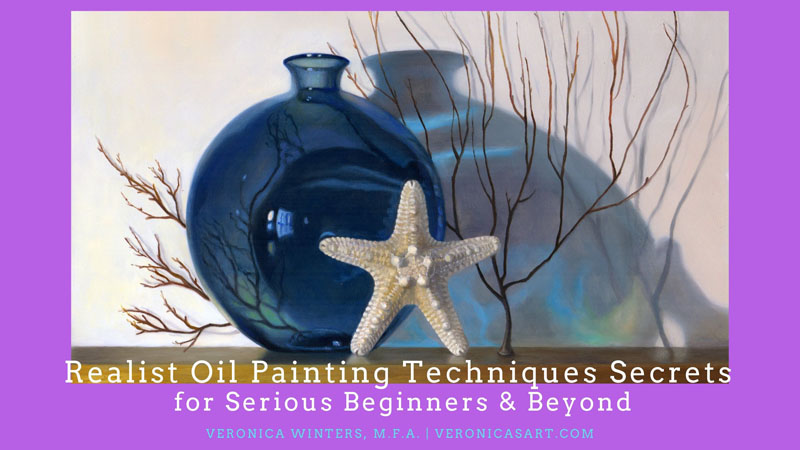
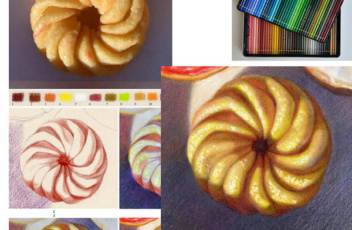
How to draw realistic textures in colored pencil
Step-by-step realistic colored pencil drawing of a donut
To learn realistic colored pencil drawing techniques, you must consider:
- drawing your subject and shapes correctly
- understanding the difference between color and value in colored pencil drawing
- making even shading
- making creative compositions
- understanding how the light turns the form
A full step by step demonstration of 10 donuts is part of my most recent art book The Colored Pencil Manual as well as my video course Complete Colored Pencil Techniques in 90 days.
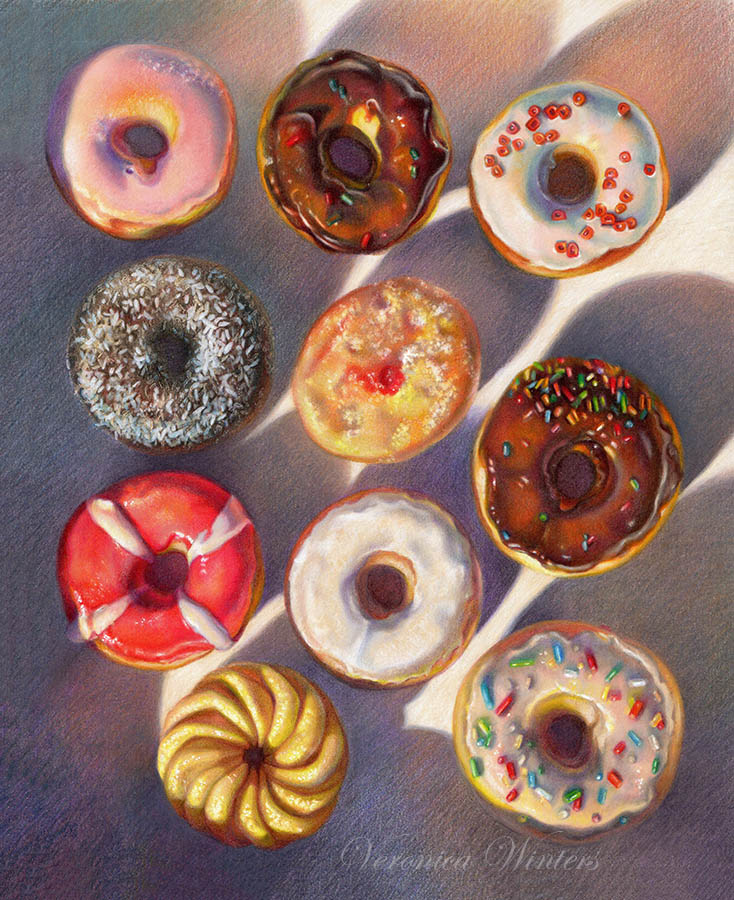
In this colored pencil drawing demonstration I don’t focus on basic drawing techniques but explain how to do shading, texture and color harmony. While I lay out the drawing sequence of every donut, the artwork is completed by filling in the background first and then layering one color at a time while working on all donuts simultaneously.
By shading the background first, I create instant contrast to work against drawing the donuts.
It took a considerable creative effort to make this arrangement of donuts for the photoshoot. I wanted to balance every texture, color, and shape in one composition.
Art supplies:
- Prismacolor Premier colored pencils unless noted;
- kneaded eraser
- tracing paper (optional)
- Grumbacher final fixative, for dry media, matte
- a large sheet of printmaking paper, light gray (it can be replaced with Stonehenge Multi pad color either pearl grey or fawn). This project was completed on a very light gray printmaking paper that often doesn’t read as such in photography. It has minimal texture and the colors tend to blend on their own without employing additional blending techniques.
- Color wheel – optional
- The Color Chart is separate for each donut. In this example some of the textures are created with varied stroke applications, and Sakura Pentouch marker.

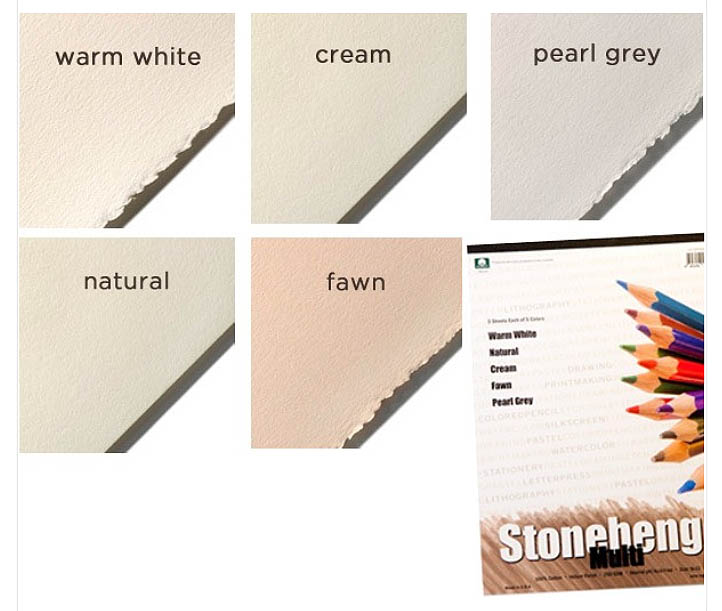
Basic colors:
Prismacolor Premier colored pencils unless noted;
1. Terra Cotta 2. Sienna Brown 3. Mineral Orange 4. (Pablo) Yellow 5. White 6. Henna 7. Artichoke 8. Chartreuse 9. Yellow Ochre 10. Yellow Orange 11. 70% Cool Grey 12. Pumpkin Orange 13. Yellow Chartreuse
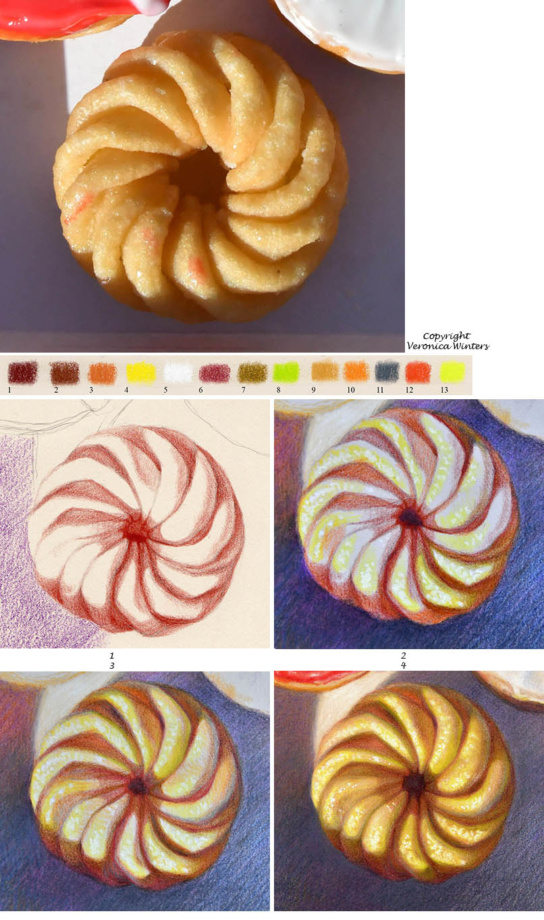
Step 1
Tap all graphite lines with the kneaded eraser. It’s a light donut and graphite will show up once you begin shading. Begin drawing out the rotation of each fold with either terra cotta or sienna brown. While the color looks reddish here, it’s actually a warm brown that the author suggests you use for shading.
Step 2
Once you place the background colors (see the last two steps for instruction), you set the contrast to begin working on the donut. With a sharp point, place random white spots and shade around them with Pablo yellow. Add mineral orange into the brown to warm up the color.
Step 3
With every new step, you keep defining the edges to preserve the correct rotation and clarity in each section. You also work in short, directional strokes on every section to create volume. For that you need to keep rotating your drawing paper as you shade, so the strokes wrap around the forms and don’t become too linear.
Define the brown edges with henna and fill them in with this color in light pressure. Add warm, light greens—chartreuse and artichoke—shading around the yellow to create value transitions between the dark (browns) and the light (white). You shade from white to yellow to chartreuse to artichoke. After that the shapes turn to orange-brown shadows (that you’ve already done).
Step 4
Once the basic pattern of light and shade is in place, you can add variations to the colors seen in the light. The artist shades with yellow ochre, yellow orange, pumpkin orange, chartreuse, and Pablo yellow. Most of the time it is simply layering the same colors over and over again until the right contrast and volume are achieved. Add 70% cool gray into the form shadow in every section.
Texture: Reinforce the texture with white for small dots in the light and add just a few tiny highlights on the left side with the Sakura PenTouch
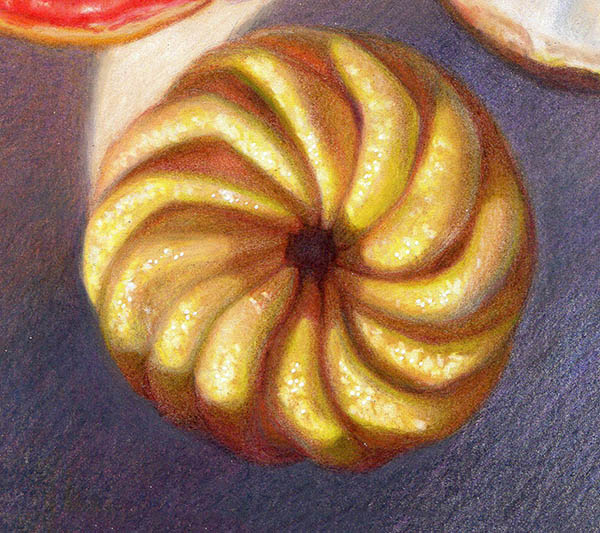
Don’t forget to use a final fixative on your colored pencil drawing. Spray it outdoors in a low-humidity environment. Wear a mask to protect yourself from harmful vapor.
Sign up to my mail list for art tips and news or visit the video courses page if you’d like to take your colored pencil drawing to the next level!
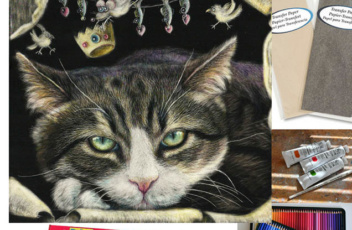
How to use graphite transfer paper to trace your outlines in drawing and painting
Most realist artists use this drawing technique to have a perfect and clean outline drawing. There are several old-fashioned ways of image transfer like the oil transfer, charcoal powder transfer, etc. I find that using graphite transfer paper is the most efficient way of transferring your designs on paper and canvas. The image looks clean and clear.
You must have perfect outlines to begin drawing realistically. When your drawing is complex, it requires sketching, erasing, and sketching again. It ruins the paper’s surface that must stay nice and clean for even shading in graphite or colored pencil. That’s why I often sketch my idea on a separate piece of paper that matches my canvas (or drawing) size to transfer these outlines onto my drawing paper. This image transfer technique was called “cartoon drawings” by the old masters. Classical painters spent weeks doing studies and drawings before transferring them onto panels and canvases.
How to use transfer paper to trace your outline drawing
You need the graphite transfer paper for precise tracing of your lineart or cartoon drawing. If your art is very complex and you wish to keep the working surface clean, use this technique for your advantage.
Graphite Transfer paper brands and features
Saral Graphite Transfer Paper
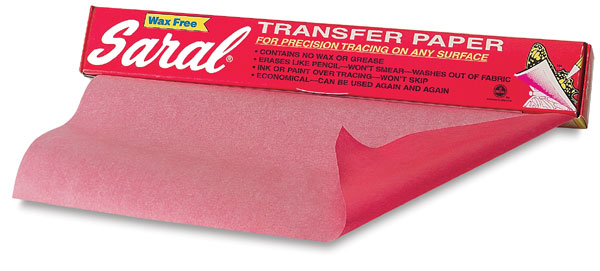
- Comes in 5 colors! Blue, yellow, graphite, white red
- Saral transfer rolls are wax-less, non-toxic, and do not contain acid. The paper allows you to transfer your design from a sketch, pattern, template or by hand to almost any surface. May be used with acetate overlays, plastics and enamel, metal, cloth, wood, fabric, ceramic, canvas, stained glass, tole paintings, architectural work, scrapbooking, watercolor, fine art, and more.
- Shows up equally well on light or dark surfaces.
- 12 inch x 12 foot roll; comes in a roll (similar to a wax paper roll).
Loew-Cornell Black and White Graphite Transfer Papers
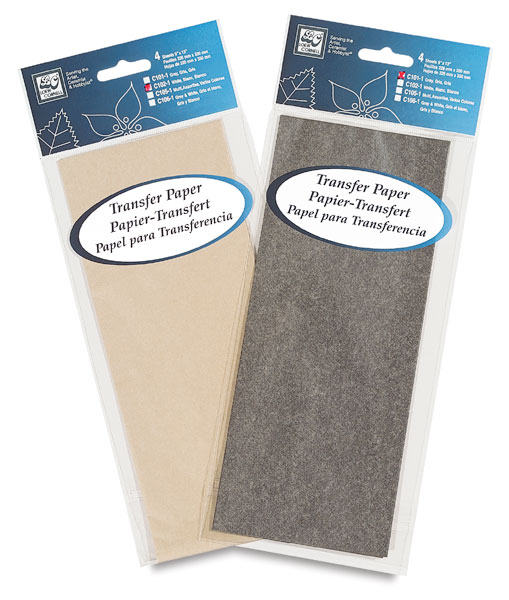
- Waxless, greaseless, smudge proof, erasable
- Doesn’t bleed through paint, and it doesn’t smear.
- Works for drawing and painting but not recommended for fabric and porous surfaces
- Ideal for large projects due to its size. You can also cut it for smaller projects.
- Reusable! I’ve been using my two sheets of graphite paper for years, and it still works fine!
- Comes in as a single, large folded sheet of paper in one package. You need to buy two packages to have different colors. Package of 4 Sheets— Each sheet measures 9″ × 13″ | Single Sheet Package — One 18″ × 36″ sheet
Royal & Langnickel® White Graphite Transfer Paper
- It doesn’t smear, having no wax or grease
- Comes in one 18 x 36 inch sheet of white graphite paper per package.
- Erases similar to a pencil and is very similar to the Loew-Cornell transfer papers.
How to use transfer paper in your art projects
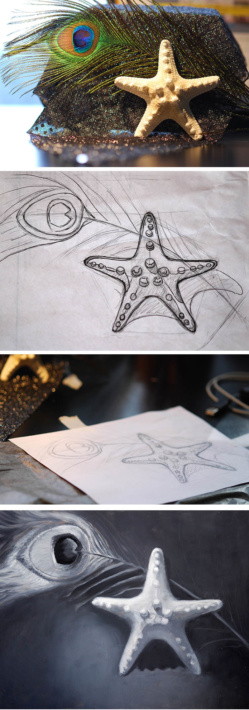
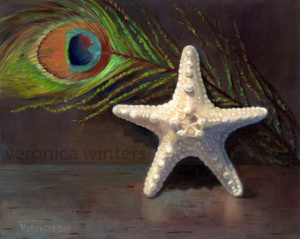
I sketch out my drawing on a sketch paper and then transfer these outlines onto drawing paper using an HB graphite pencil or a ballpoint pen. You can replace the pen or pencil with a stylus if you want to preserve your original reference sketch/photo for future projects. Check out the Soft-Grip Embossing & Stylus Set Complete by Royal & Langnickel (3 Pack) for that.
Is it cheating?
A lot of artists, especially beginners skip the sketching step, transferring the image direct from a photo onto the drawing paper. While it’s totally possible, beware that many pictures have lens distortion that’s especially noticeable in anatomy and photos with linear perspective like cityscapes. So you end up transferring the distortion into your art.
Also, you don’t learn basic drawing skills by simply transferring the image and not learning how to sketch it freehand. However, if your drawing skills are good, this drawing technique is very helpful speeding up the entire process.
Pick the right color of the transfer paper for your project
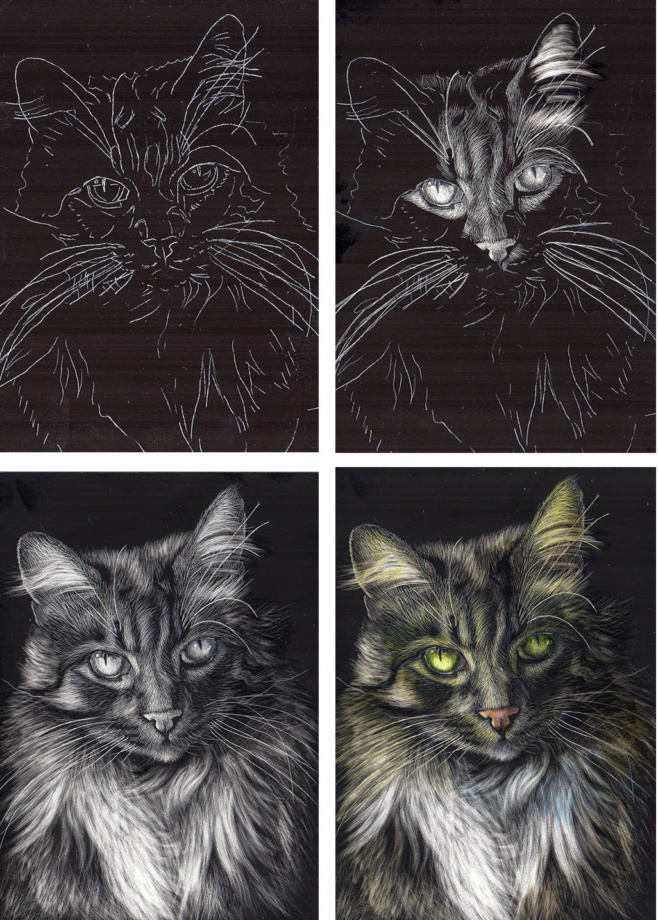
For transferring designs to both white and dark paper white transfer paper is ideal. Also, use the white or yellow transfer paper for your watercolor painting. Black transfer paper’s line doesn’t erase completely and is not suitable for watercolor painting!
Use black transfer paper with caution in your colored pencil drawing as well. I mostly use this black transfer paper for tracing my designs onto canvas/panels, and I often use white transfer paper for my colored pencil drawing, especially when I draw on colored paper because these white outlines show up well and blend with my subsequent shading. White graphite line will show up even on white paper, but you’ll have to observe your lines at a specific angle. I also love to use white graphite transfer paper to transfer my designs working on scratchboard art because the surface must be very clean!
To buy the graphite paper
- Amazon
- JerrysArtarama
- DickBlick
- Michael’s & other craft stores
If you draw in colored pencil, I invite you to watch FREE previews of some of my lessons in my course titled “Veronica Winters complete colored pencil techniques in 90 days.”
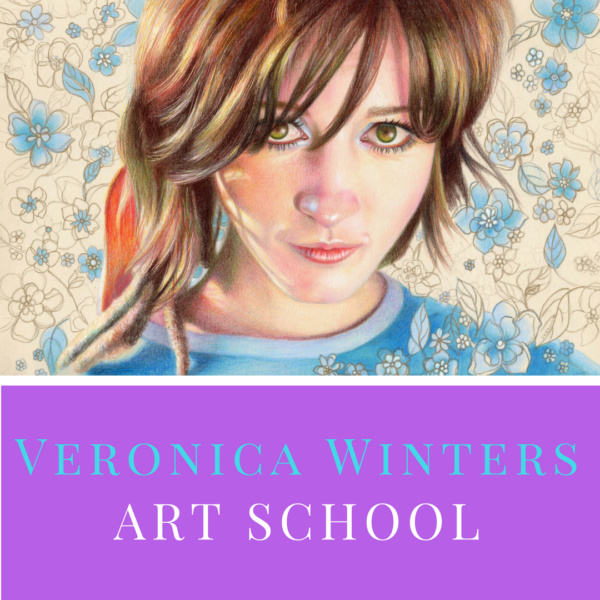
Faber-Castell Polychromos colored pencils review
In this article you’ll find information about Faber-Castell Polychromos colored pencils and my experience using them on various drawing papers. I’m not an affiliate and I write reviews of art supplies I actually use in my drawings. Below you’ll find the Polychromos lightfastness ratings as well as some of my colored pencil drawings made with these colored pencils.
Properties
Lightfastness: most colors are lightfast/very good to excellent
Durability: excellent
Pigment saturation: very vivid/ excellent
Oil-based
Softness: medium softness/ very good
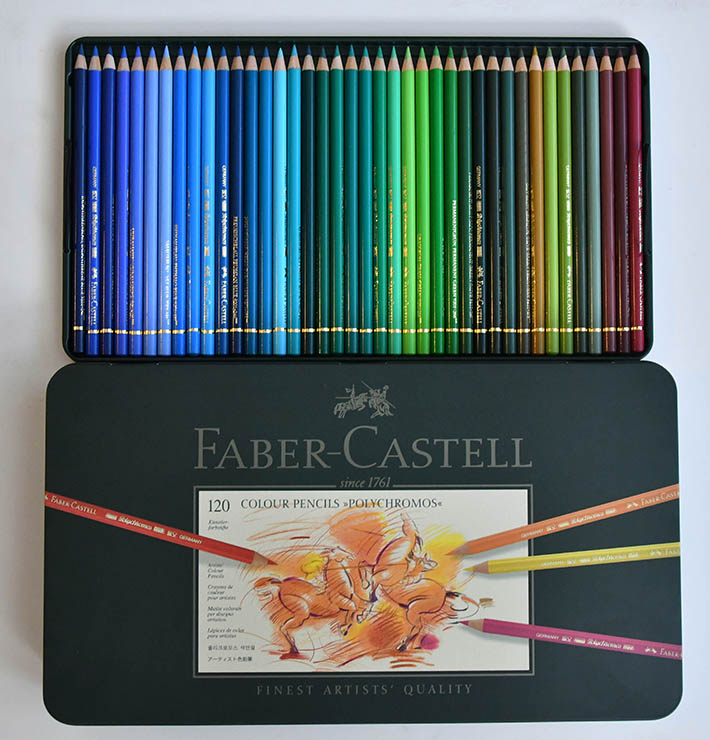
Faber-Castell polychromos colored pencils set
These colored pencils never break on me. Their durability, color saturation and lighfastness are consistent. Easy to sharpen, Polychromos have a range of beautiful colors with some pinks and purples that have excellent lightfastness ratings, which is difficult to find in other brands, especially in Prismacolor Premier.
Because they are not very soft, these colored pencils layer nicely and require minimal colored pencil blending. The downside is that you’ve got to find the right paper working with them. Because they are oil-based, they mix and blend more like soft pastels, meaning that the paper should have some texture to adhere the pencils to. And I find that when I work on uart paper, 800 grade or Canson pastel paper, Polychromos impress me a lot more. They are great for detailed work and blend on their own working on slightly textured paper like Bristol Vellum. These colored pencils tend to glide off of smooth paper like Bristol smooth and seem to need more layering to develop contrast.
While I prefer Luminance and Pablo colored pencils, the Polychromos’ durability and excellent lightfastness make me a fan to draw the details in my art.
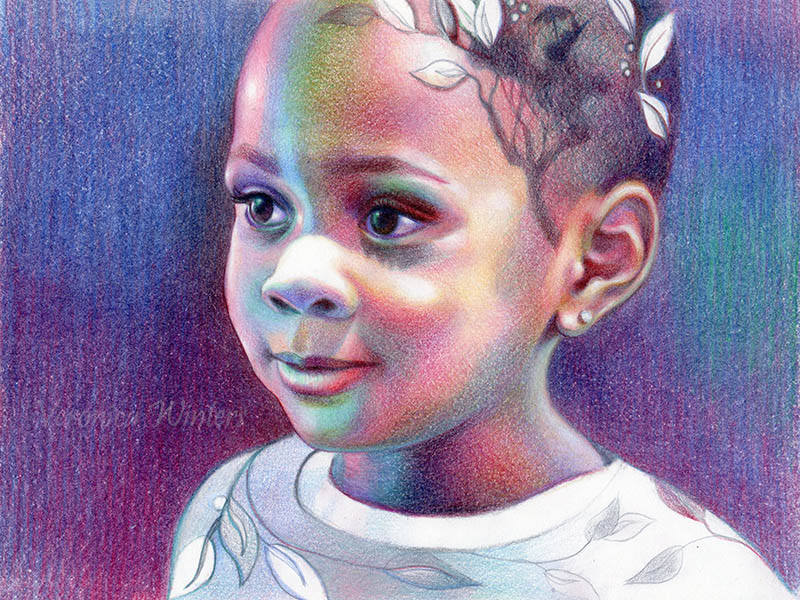

UArt sanded art paper and Polychromos is the best combination in my view. UArt is designed for pastel drawing and its surface feels like sand paper. Therefore if you use softer colored pencils on it, it will “eat” your soft colored pencils and blending would require solvents. 800 grade is the finest surface and is suitable for colored pencil drawing with Polychromos or other harder colored pencils like Pablo or Koh-i-Noor.
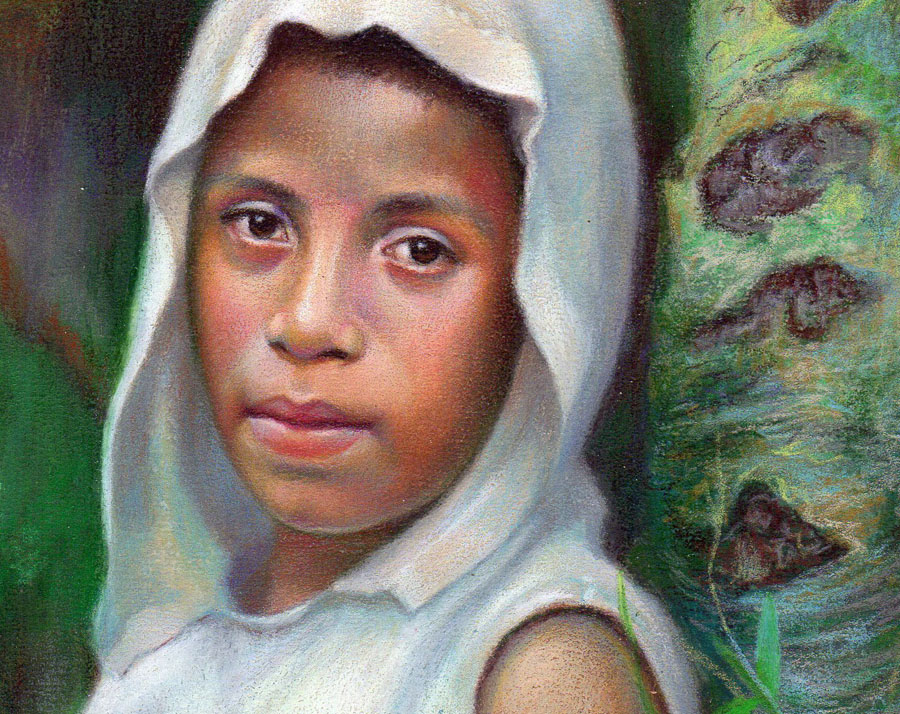
Because oil-based Polychromos act like pastels, the drawing process is similar to pastel painting in layers. It’s blocking in large areas in dark colors and then adding the lighter ones on top.
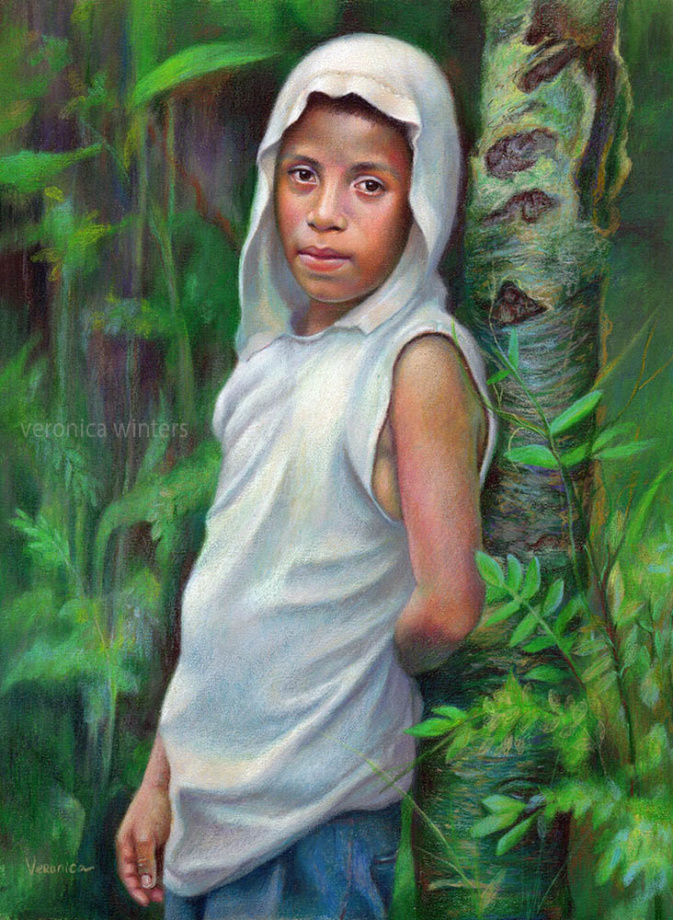
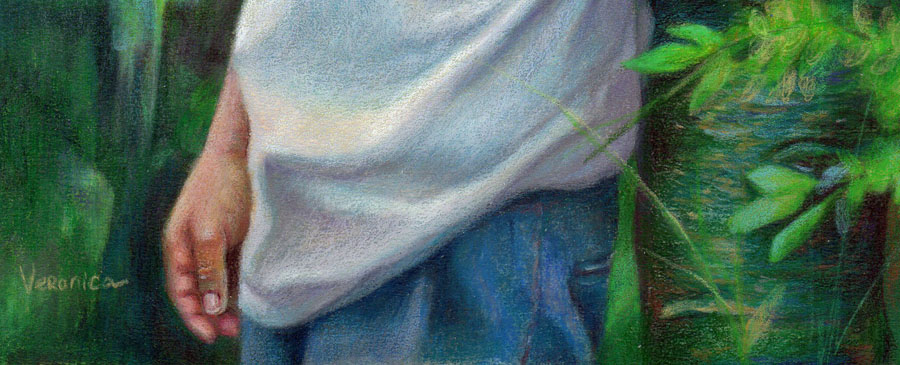
Faber-Castell Polychromos lightfastness rating chart
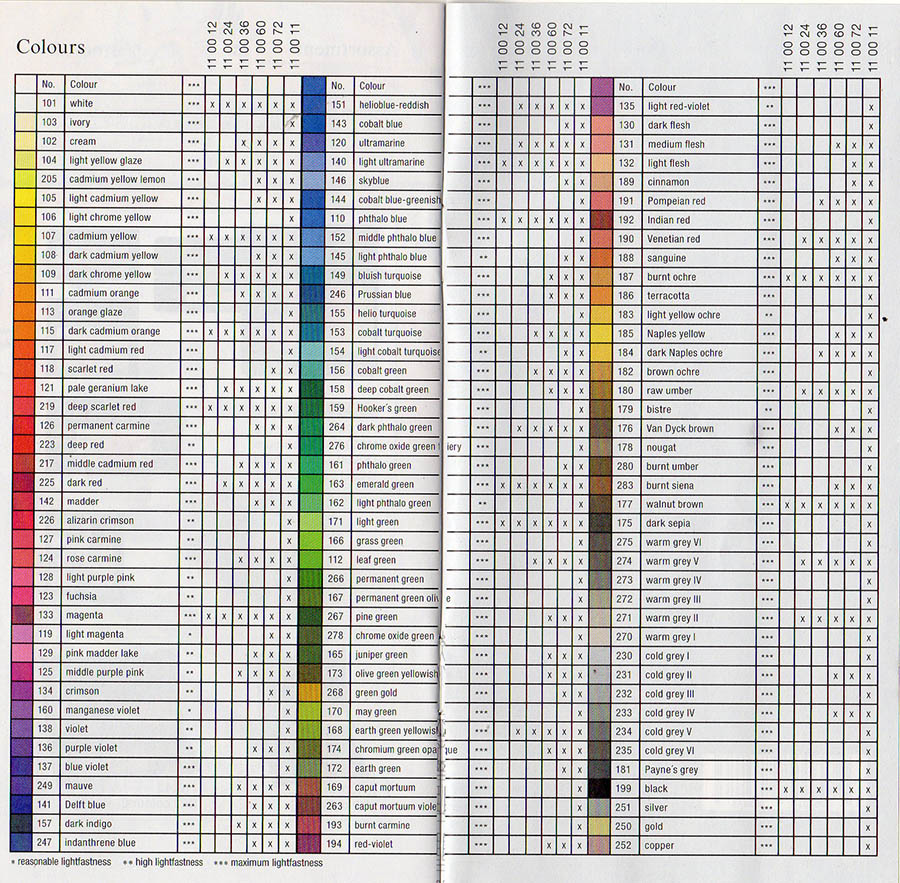
If you’d like to take your colored pencil drawing to the next level, check out these video courses: https://veronica-winters-art-school.teachable.com/
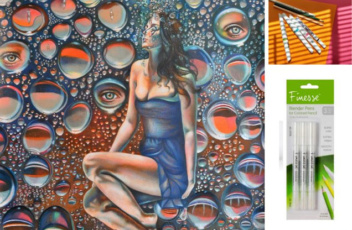
Two solvent-free colored pencil blending techniques
Most of you know that we can blend colored pencils with solvents or the colorless blender. In this article I’d like to share some other blending techniques that don’t require blending with Gamsol. While these blending techniques may not be brand new, I discovered these methods by experimenting with my colored pencil drawing.
Because blending with solvents may look harsh on drawing paper not every drawing is a good candidate for it. I think solvents help a lot when you draw on textured surface or the size of your drawing paper is very large and you want to cover and build the tones in the background. Not every artist likes blending with the solvents. So here is the alternative to that.
Colored pencil blending without the use of solvents
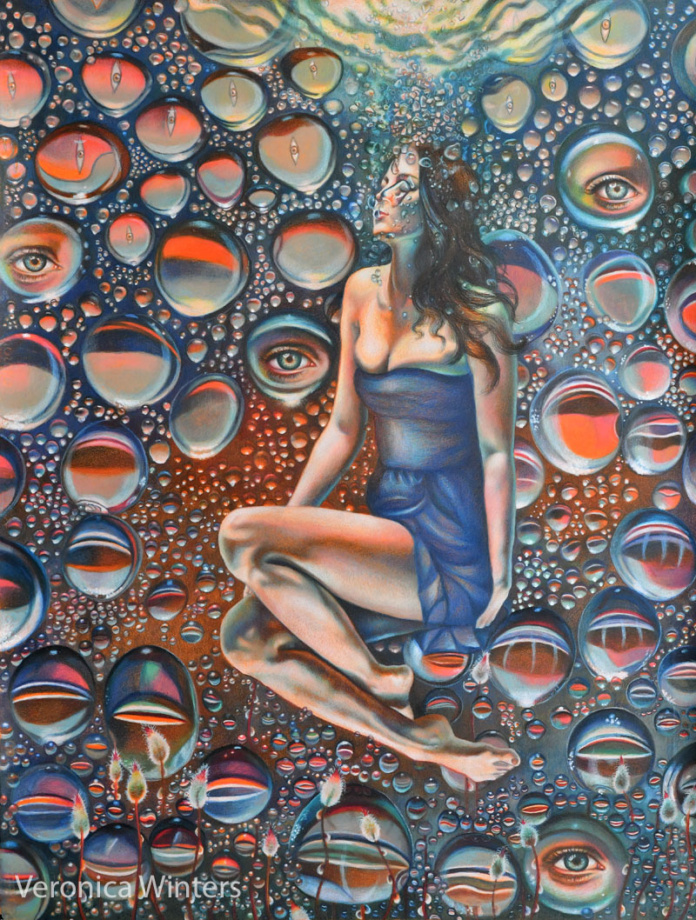
In this drawing titled “Plunge” 19×25″ I used both blending techniques discussed below.
Finesse Colored Pencil blender pen is formulated to blend wax-based colored pencils like Prismacolor Premier and Caran d’Ache Luminance. It won’t do much blending for harder pencils like Polychromos but you’ll still see some blending occurring because all colored pencils have some wax in them.
This pen is very convenient because it has two tips and you can’t spill it like solvents. It’s also non-toxic and easy to carry around or store in a colored pencil box.
I find that it dries out quite quickly however.
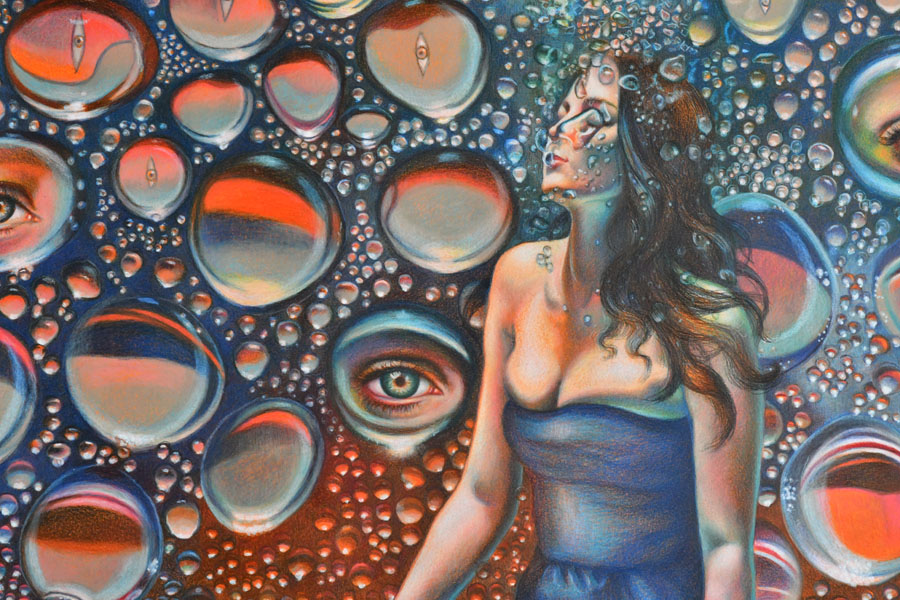
Winsor & Newton Pigment marker, white blender is a very soft white. It’s not suitable to make strong, white highlights but what I discovered working with it is more useful. Once I’ve done some colored pencil shading, I can blend everything with this marker. It does give some white tint to the surface but it also blends colored pencil well. So I use it when I want to both blend and lighten up the area. I think it could be replaced with a different brand to have the same effect but you need to always TEST your art maetrials on a separate piece of paper.
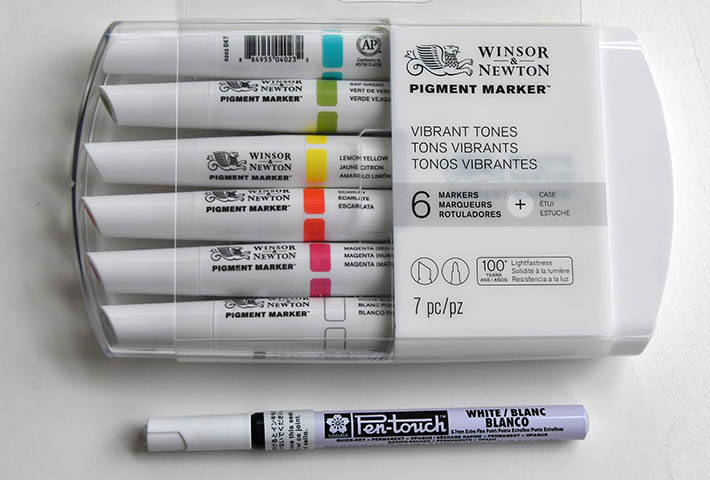
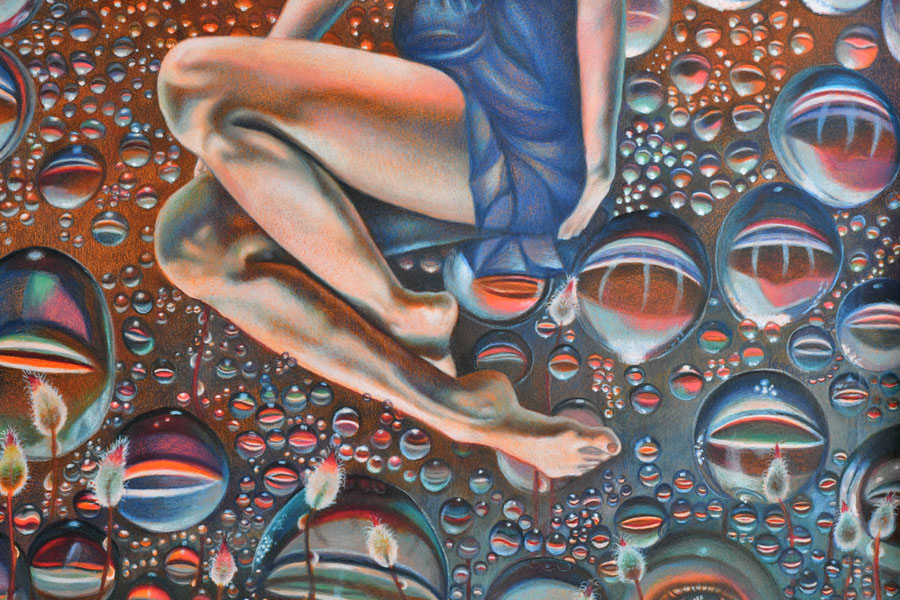
Always test your ideas on a separate piece of paper before committing to actual drawing! It’s very frustrating to ruin your colored pencil drawing testing something new right on it.
Check out all video courses here:https://veronica-winters-art-school.teachable.com/
3 graphite pencil techniques for portrait drawing that work: tools and techniques
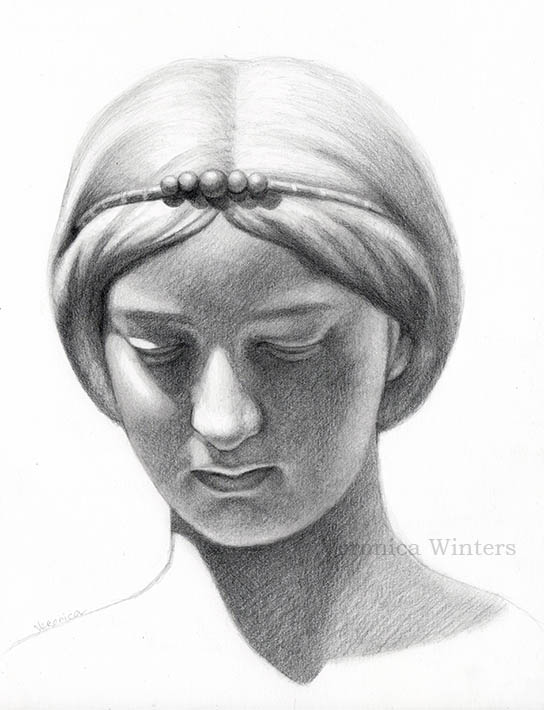
Graphite pencil drawing is a fundamental skill necessary to master for every realist artist. In this article, I’d like to share several most useful tools and techniques for portrait drawing I use the most often. Keep in mind that that these graphite pencil techniques for beginners are applicable to any kind of pencil/charcoal drawing including graphite pencil drawing realistic landscapes, still lifes, faces, fur, etc.
#1 Graphite pencil blending techniques: use paper stumps correctly
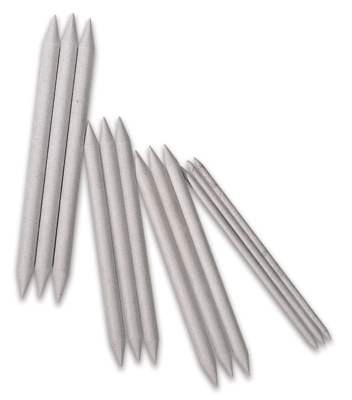
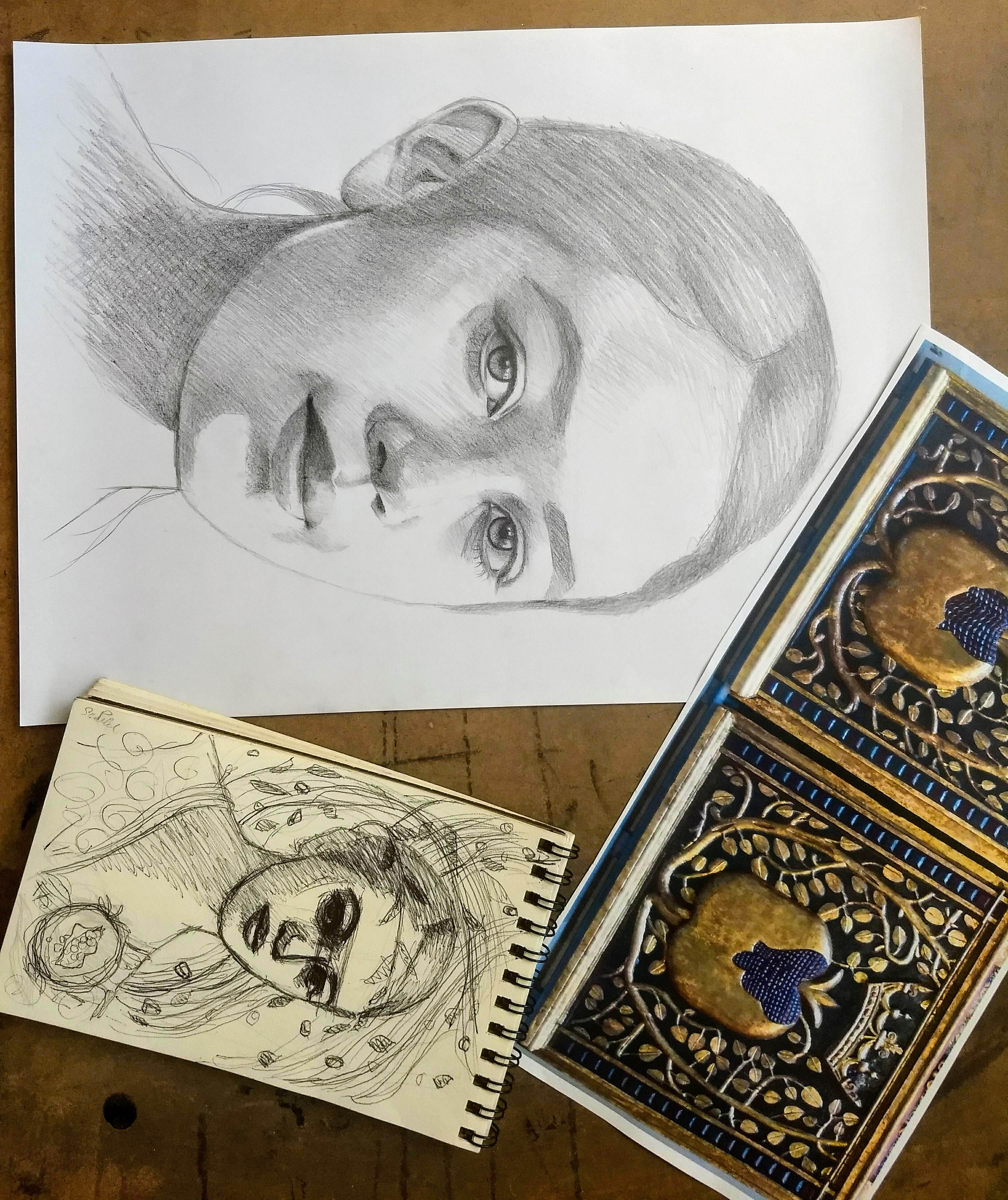
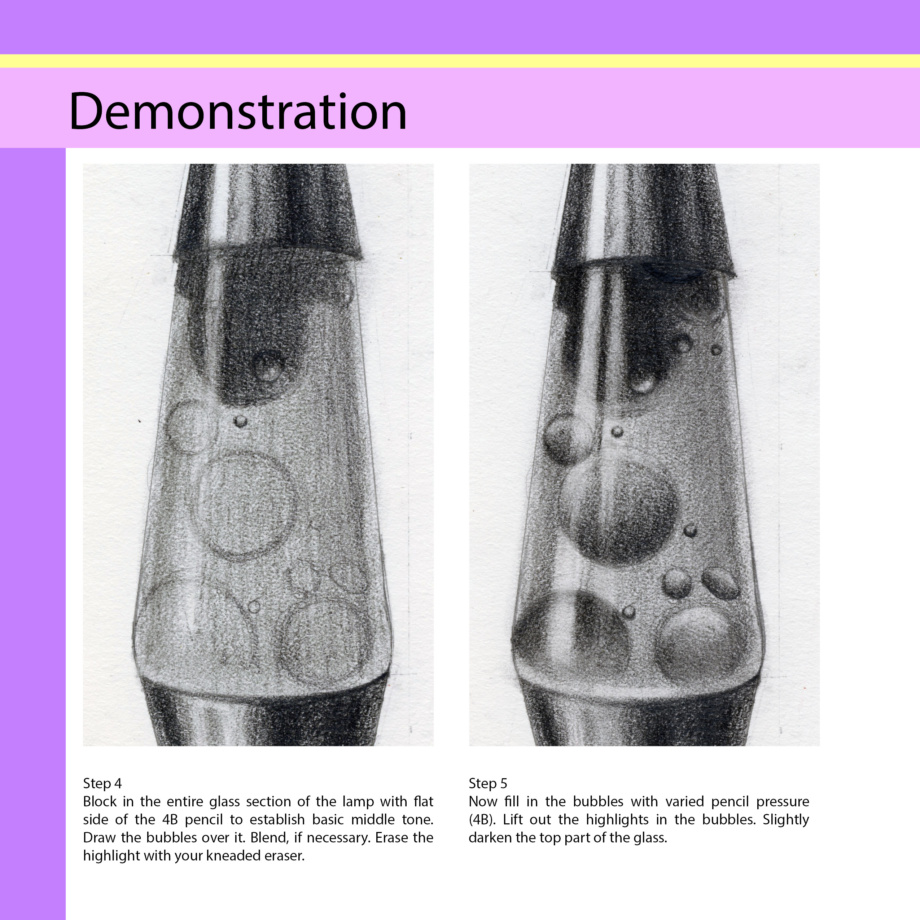
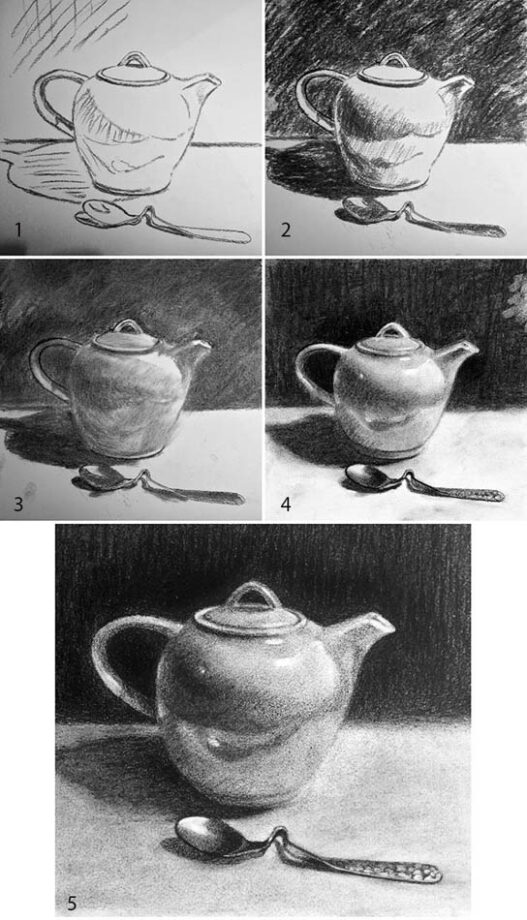
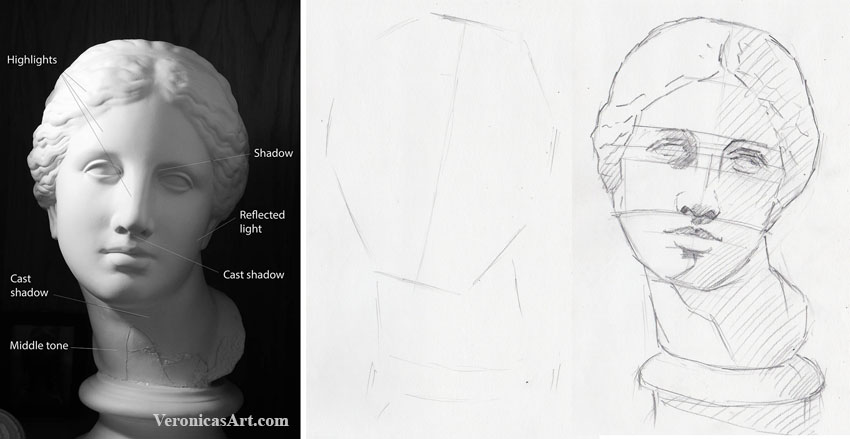
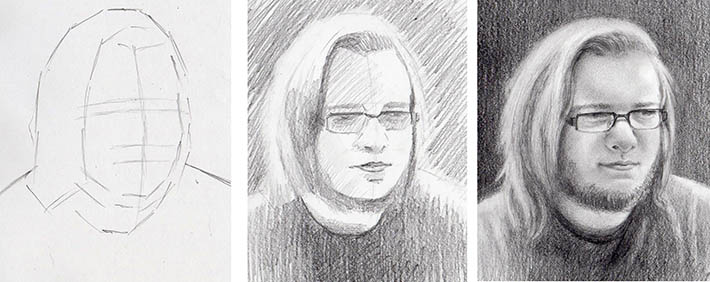
Graphite pencil blending and shading techniques in portrait drawing are the same as in still life drawing shown above. I begin shading the drawing by placing the darkest darks first. I often draw on the Strathmore Bristol vellum paper that’s smooth and thick but still has some tooth to adhere the pencil to. Once I’m done massing out the shapes in a soft, 4B graphite pencil, I use the blending stumps to blend the large areas. In the left picture I blended everything with a paper stump. If you draw in vine charcoal, a soft brush works really well to do charcoal blending. It’s important to do graphite pencil blending in the “right” direction not to overwork the surface.
Drawing Paper
I’m amazed by the quality of this paper. It’s quickly becoming my favorite because Koh-I-Noor in & out pages are thick, smooth, and versatile. I love how easy it is to layer both graphite and colored pencil on it that hardly needs any blending! Also, I can place my drawings back into the pad for a beautiful presentation. I’ve drawn on Koh-I-Noor Bristol vellum, Bristol smooth, Colored Pencil and Black Drawing drawing papers so far. All of them are fantastic! While Koh-I-Noor Black Drawing has thin pages, the rest of them are thick, and all are smooth with a different degree of light texture present to grab the pencil. Give them a try!
#2 Graphite pencil erasing techniques: kneaded eraser & Tombow Mono Zero eraser
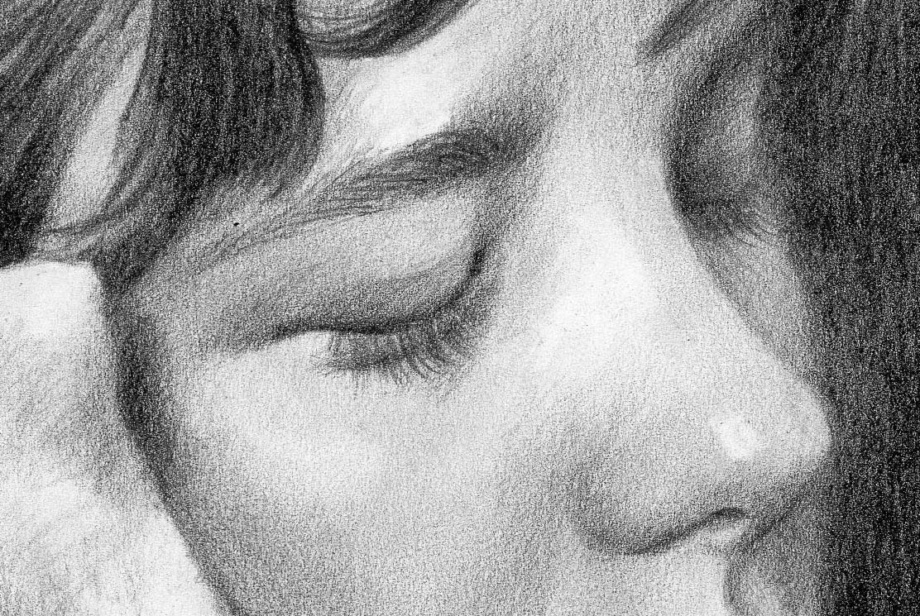
In the second step, I usually lift out the highlights with the kneaded eraser to create small spots of light seen on skin. This is the most useful graphite pencil erasing technique. Any brand of a kneaded eraser works about the same. The kneaded eraser lifts out the pigment without any residue to make soft edges around the highlights. These lights look natural and realistic. I often lift out more graphite pencil than I need to to come back to it with refined pencil shading around the highlights.
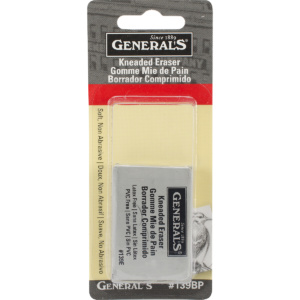
Graphite pencil drawing realistic textures:
Tombow Mono zero eraser is a great eraser that erases tiny graphite marks. You can create incredible textures and details. This eraser helps in graphite pencil drawing of realistic textures, such as thin strands of hair or tiny highlights in the pearls or lights on the face and eyelashes. This eraser works great in colored pencil drawing as well when I try to erase hard to reach, tiny areas in my drawings. I buy these on Amazon. So if you decide to give zero eraser a try, order two or three of them at once, you won’t regret it!
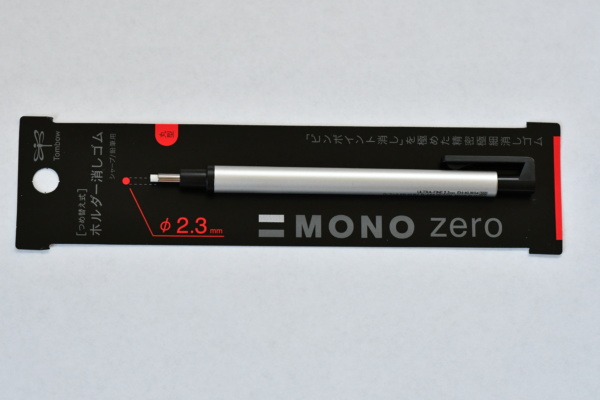
Drawing realistic textures in graphite pencil: Once I’ve developed a range of tones, I work on specific textures seen in the reference photo. In this drawing of Khaleesi you see the texture of clothing that I’ve done with rubbings. I placed a pumice stone under my paper and shaded over it with a soft pencil where the clothing should be. This rubbing gave me the initial texture I worked around in pencil to develop it further. I also did some lifting out with both kneaded eraser and the zero eraser on her necklace and hair.
To make texture in the jewelry on her neck, I used some magic tape. I placed it over the shaded area, made short strokes on the tape with a ballpoint pen and lifted it out to reveal this unique texture.
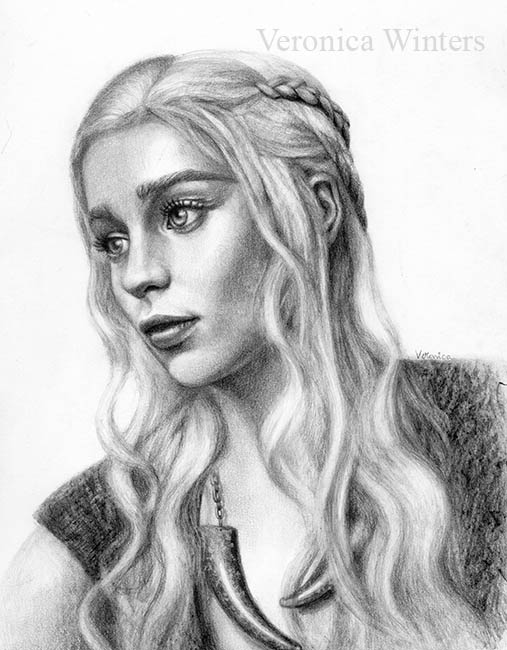
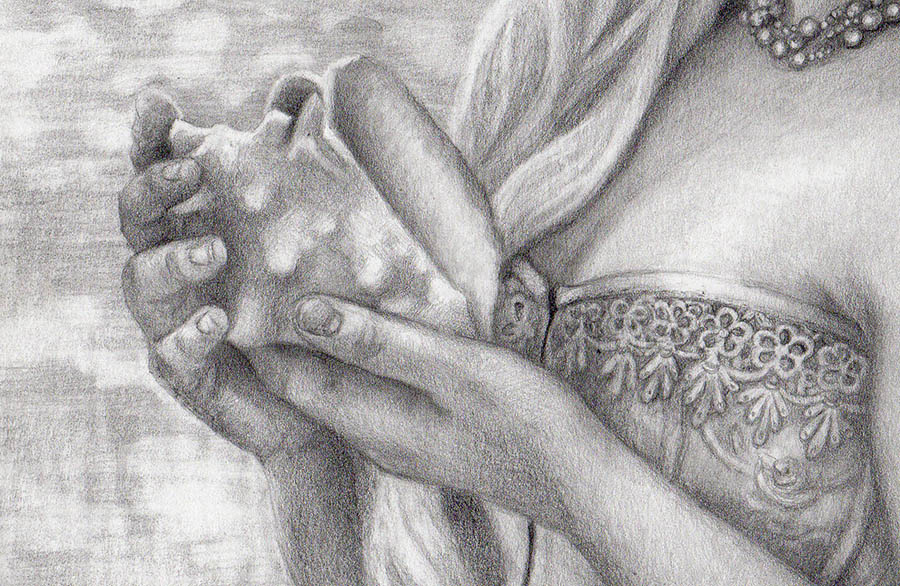
#3 Graphite pencil shading techniques: values & layering
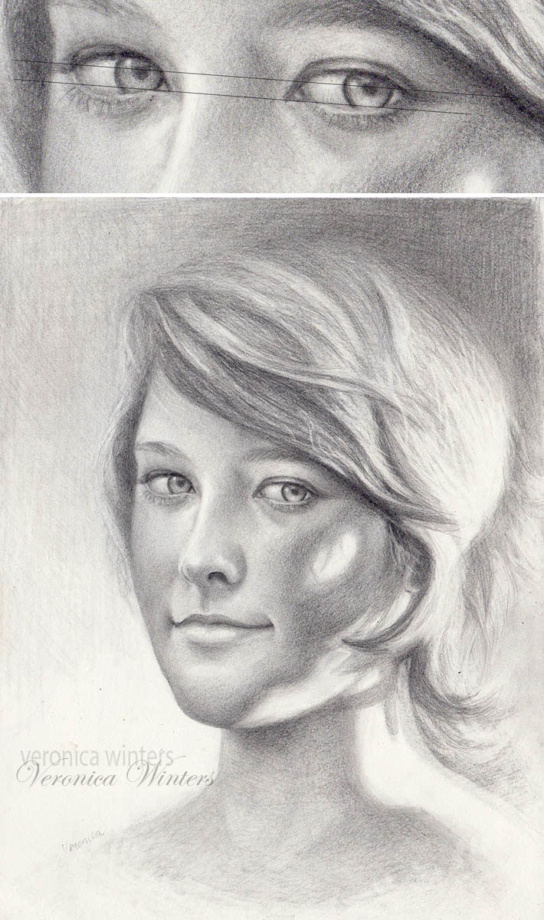
Value scale

Every color has its own value scale going from the darkest dark to white. Some dark colors have a much wider value range as opposed to the light colors. (Think of ultramarine as a dark color and yellow as a light one).
You control your values while you keep graphite pencil shading. You need to create a range of tones from very light to very dark to make your portrait three-dimensional. Usually, students complete their drawing with a very limited range of tones. That’s why everything looks “average grey” or “too flat.”
Convert your color image into a black-and-white picture on your computer, and you’ll understand how dark the shadows should be. Then step back from your finished pencil drawing to compare it to your black-and-white reference.
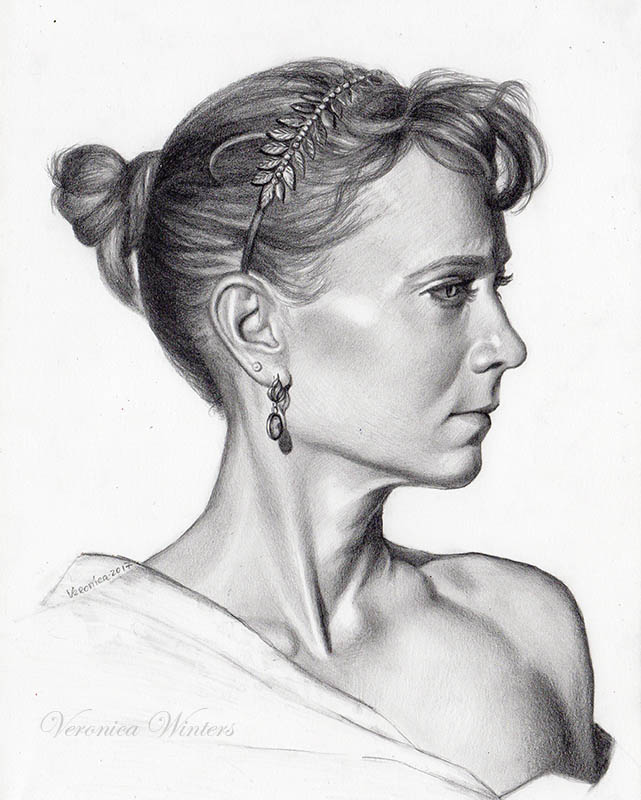
I layer the graphite pencil by erasing, enhancing the dark values, and refining the details. I work on subtle transitions of tone with harder pencils, especially if it’s a skin tone. I usually shade with 2-4H graphite pencils gently transitioning from medium to light tone.
Final fixative:
When graphite pencil shading is complete, I use a final fixative, spraying my drawing outdoors. I strongly recommend using professional-grade fixatives, like the Grumbacher matte final fixative for dry media or Sennelier HC10. It gives a very nice and even finish to my artwork that’s impossible to achieve with cheaper brands like Krylon. Spray art in low-humidity, at room temperature.
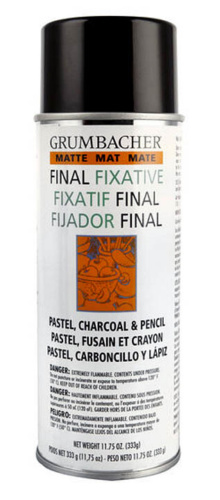
How often do you draw in graphite pencil? Drawing in pencil is a fantastic way to train your eye and hand to see values and gain precision necessary to build technical skills in realistic pencil drawing. When you become confident drawing in graphite pencil, begin drawing in color.
Check out all video courses here: https://veronica-winters-art-school.teachable.com/
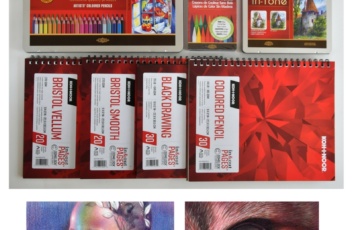
Koh-i-Noor colored pencils & drawing paper review
In this article you’ll find information about Koh-i-Noor colored pencils and Koh-i-Noor drawing paper. I also include the video of these products you can find below. I’m not an affiliate and I write reviews for the art supplies I actually use in my drawings. Koh-i-Noor Hardtmuth is a Czech republic manufacturer and distributor of art supplies and stationery. Founded in 1790 by Joseph Hardtmuth of Austria, this company makes affordably-priced, quality art supplies.

Koh-i-Noor colored pencils review
- Lightfastness: varies, but good overall
- Durability: fair
- Softness: varies, on softer side
- Price: very competitively priced
- Pigment saturation/vividness: good
Koh-i-Noor Polycolor colored pencils, 72 colors
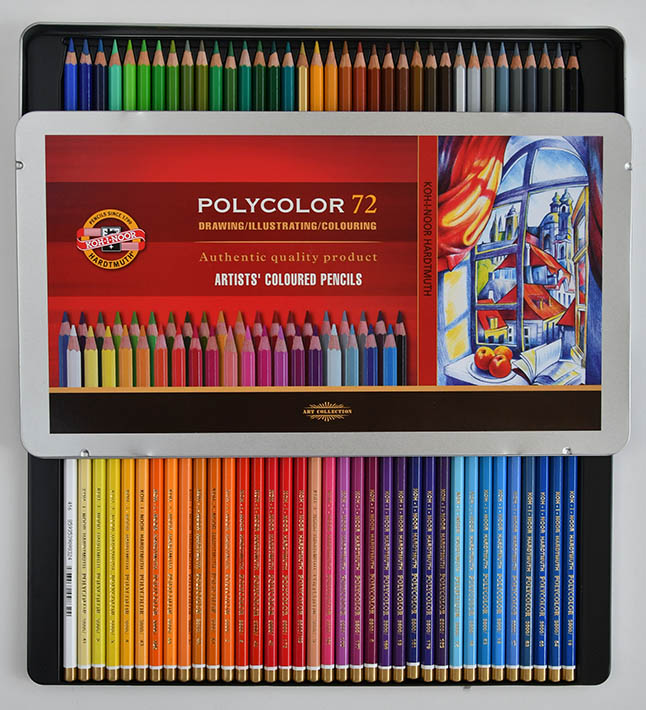
I have a large, 72 colors set and I’ve done several colored pencil drawings using this set. Overall, these are good colored pencils for art students. They are not as creamy as Prismacolor Premier or Luminance but layer quite nicely that requires minimal blending drawing on smooth paper. So they’re ok for beginner art students.
Hardness/softness:
The softness is good but not great. Because they are not super soft like Prismacolor Premier, you can create lots of details drawing with Polycolor. I think they are good to draw details over the initial layering done in softer colored pencils. Drawing backgrounds and shading over large areas can be very time-consuming. Occasionally, they break during sharpening.
Color/pigment saturation:
Because they are not as creamy as Luminance or Prismacolor, they don’t have exceptional saturation/vividness. However, these pencils will pleasantly surprise you with their range of beautiful colors and fair color saturation. Some colors seem to be softer and more vivid than others in a set.
Price:
Koh-i-Noor Polycolor box sets are very competitively priced and are worth your dollars if you are a student on a budget. However I’d choose Prismacolors over this brand for higher pigment saturation and softness.
Lightfastness chart:
Here you can take note of the lightfastness rating. Koh-i-noor colored pencils vary in its ability to withstand the light, which is similar to the Prismacolor Premier. Most Polycolor colored pencils have a very good lightfastness rating. So, if the lightfastness is important to you, you can weed out all the fugitive colors out of the set from the get go (1-2 stars are fugitive colors).
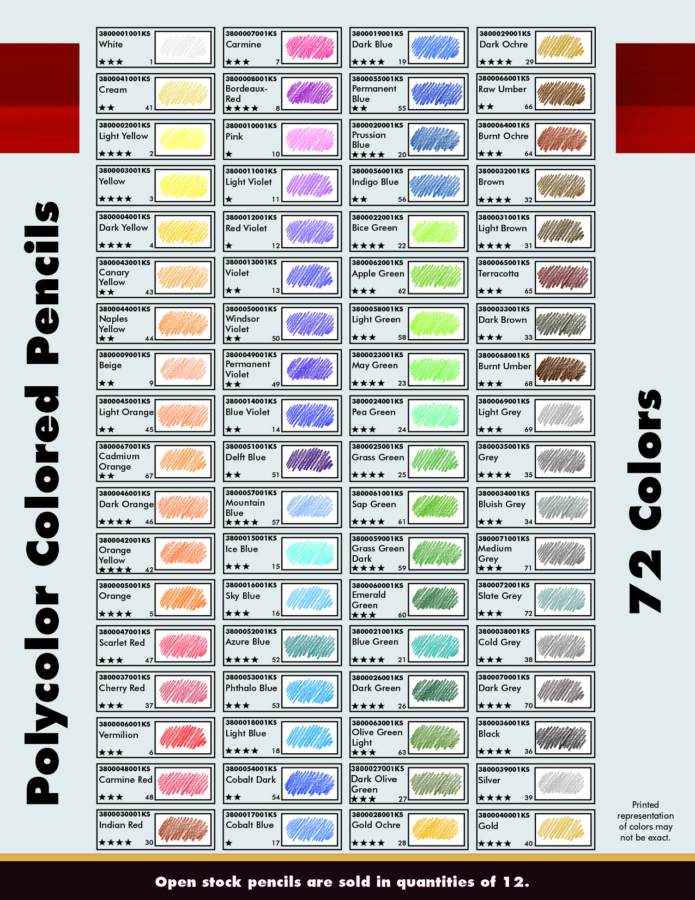
This is one of the drawings completed using the koh-i-noor Polycolor colored pencils.
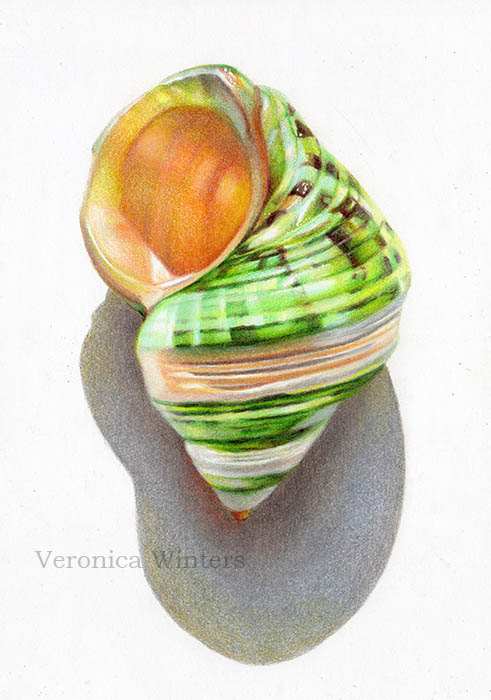
Koh-i-noor woodless colored pencils review
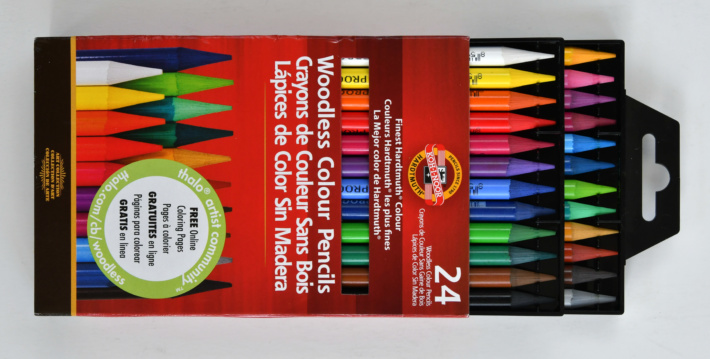
These colored pencils are very similar to Koh-i-Noor Polycolor. They seem to be a bit softer, layer nicely, and some colors seem to be richer in pigment saturation than others. It’s nice to sharpen them to a fine point and then use the pencil on details and large areas alike, but their main problem is breakage. Two pencils broke in half by themselves when I began drawing with them.
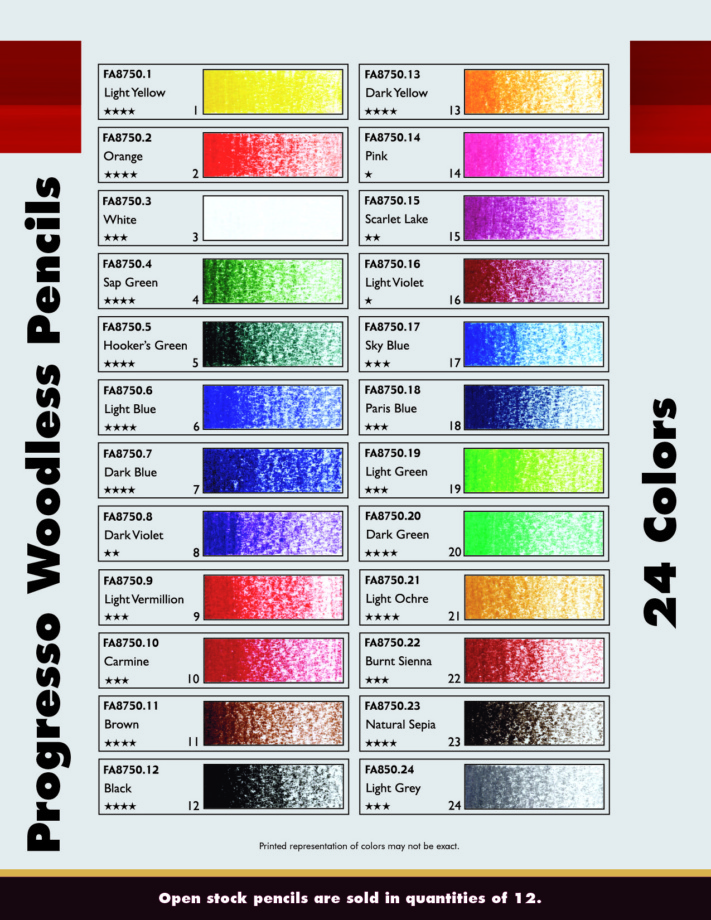
This is one of the drawings completed using the koh-i-noor woodless colored pencils and a white pen on colored paper.
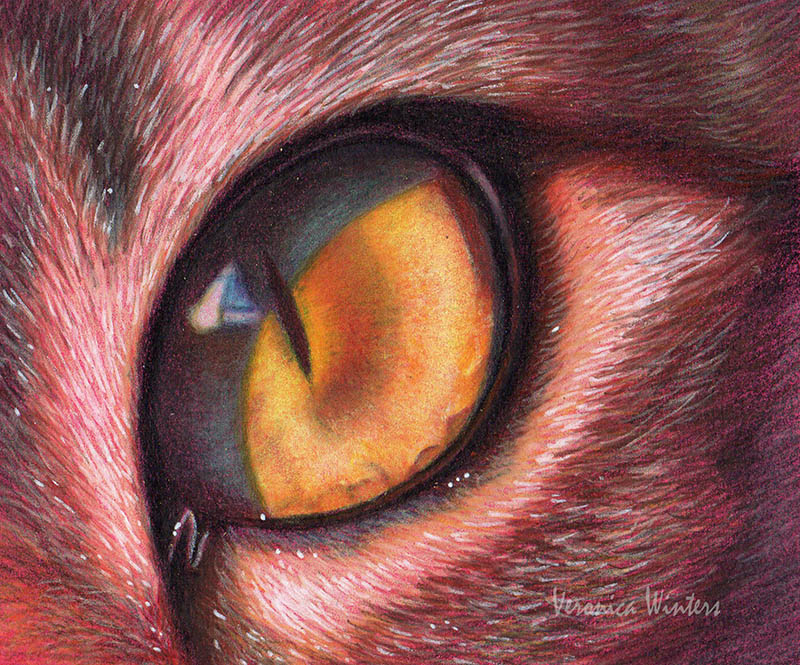
Koh-i-Noor Tri-Tone
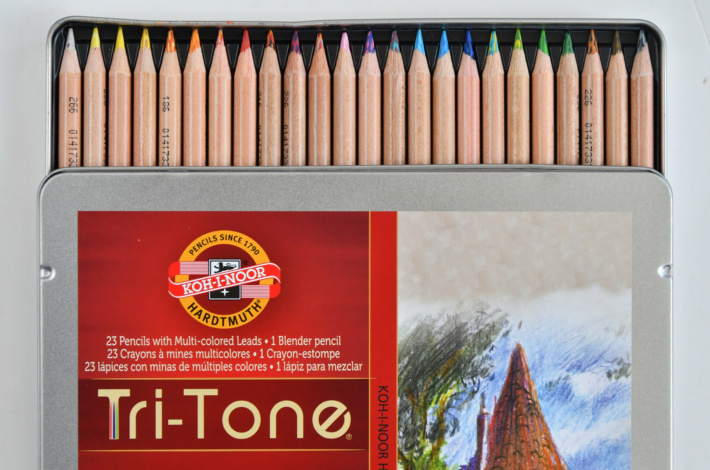
These are really fun pencils to color with! Each colored pencil consists of 2-3 hues you can color with by rotating the pencil to change the color. They are pretty soft and vivid. You can really explore your funky side drawing with Tri-Tone. I think they are great for general coloring and gift-giving. They can be fun for both teens and adults to make small drawings or to work on a coloring page, but their main downside is considerable breakage during sharpening. The lightfastness is pretty good according to the manufacturer’s list.
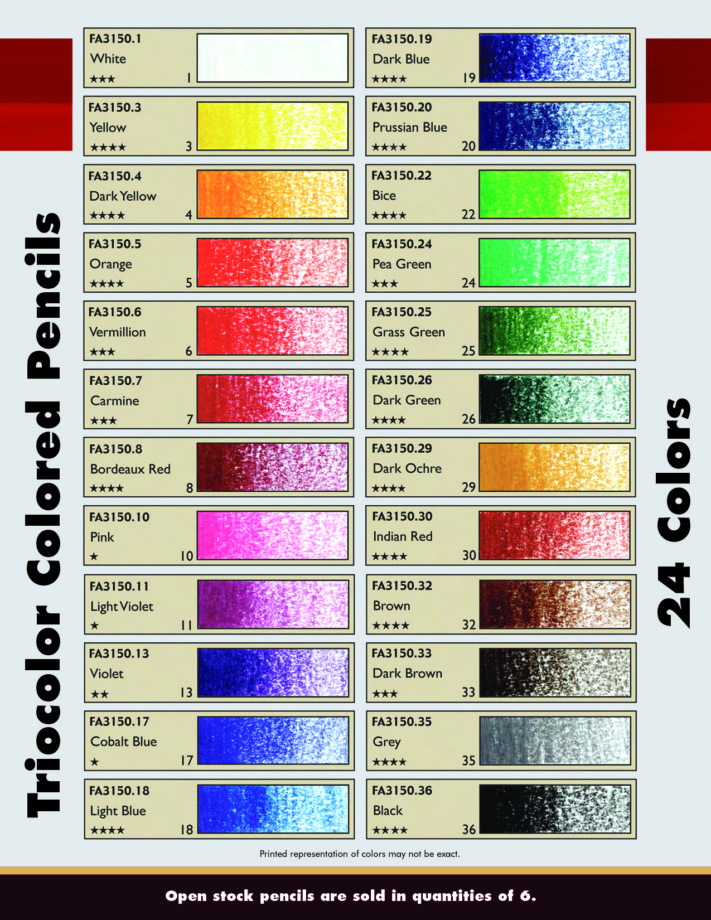
Koh-i-Noor Drawing Paper review
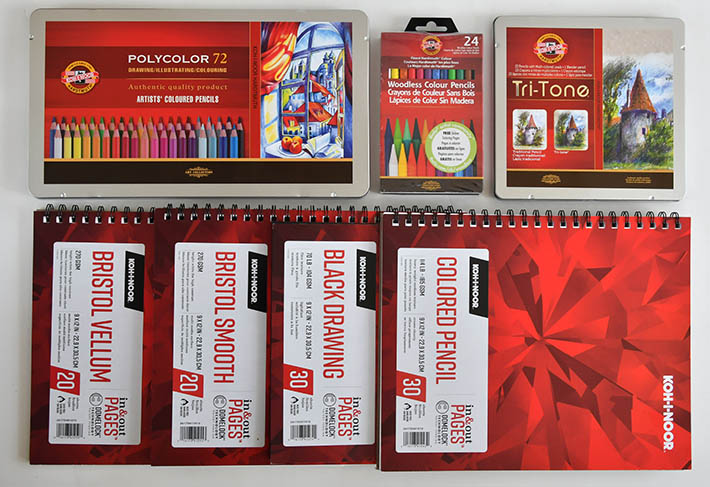
I absolutely love koh-i-noor drawing paper and its my favorite now! I only wish the manufacturer could come up with a bunch of bright colored papers. Koh-i-noor manufactures drawing papers with several surfaces: Bristol smooth, Bristol vellum and colored pencil. All of them have thick pages and accept multiple layering, which is great for colored pencil drawing. The surfaces are smooth, yet the minimal texture of Colored Pencil Drawing and Bristol Vellum papers aids to smooth and even layering that requires no blending with solvents, and some minimal blending with a pencil blender like Caran d’Ache full blender. Link to Amazon.
Koh-i-noor black drawing paper has very thin pages but the surface is truly amazing to work on. It is very smooth with just the right paper tooth to grab the color. The in & out pages feature is also really great because I can take a page out, draw on it, and then put it right back into the album for storage.
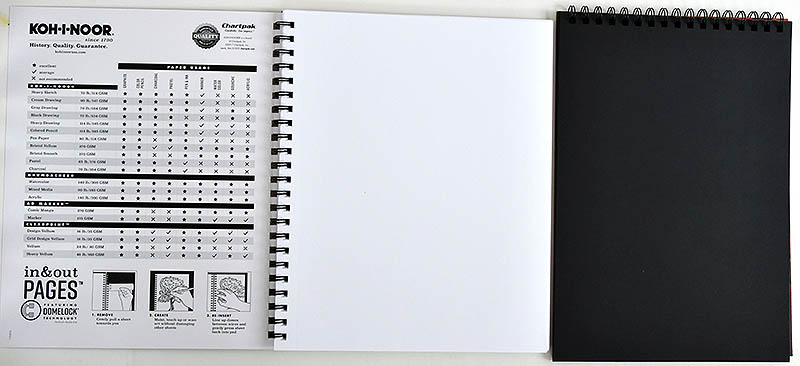
These are some of my drawings completed on koh-i-noor drawing paper.
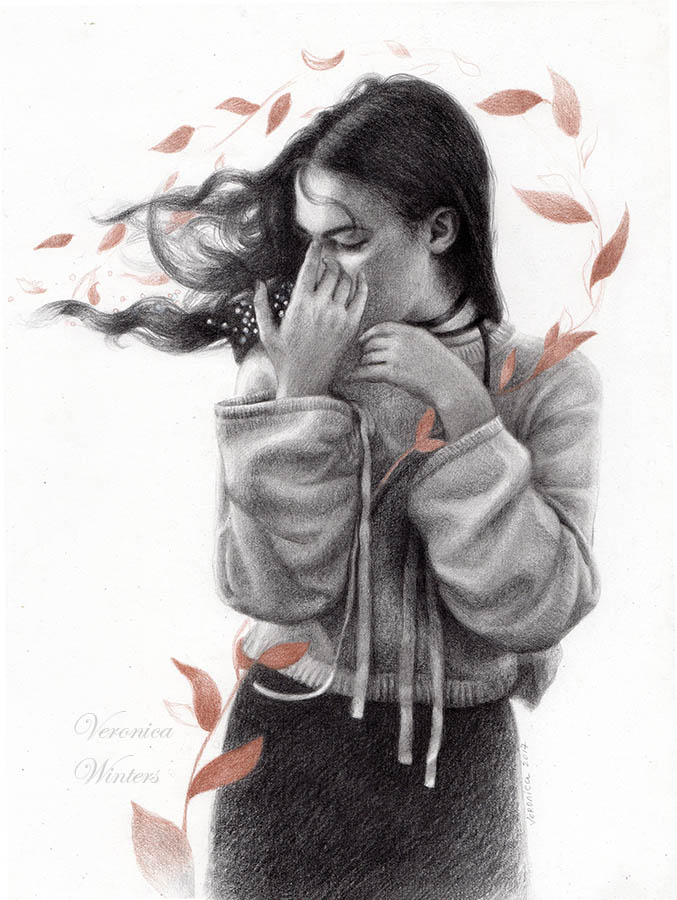
Check out all video courses here: https://veronica-winters-art-school.teachable.com/
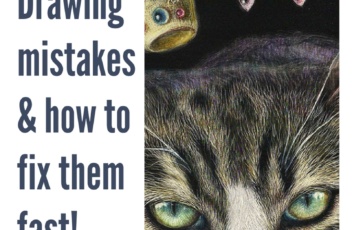
6 drawing mistakes & how to fix them fast!
As I’ve been teaching drawing since 2004, I see the same mistakes every beginner makes in his art. I’d like to list the most common drawing mistakes and how to fix them fast.
6 drawing mistakes & solutions:
1. You have crooked lines that make your drawing look uneven.
Fix: Work on the perfection of your drawing by checking the accuracy of your shapes in a mirror. When you look at your image in the mirror, your mind reads the information differently, allowing you to see the mistakes. The same happens when you look at your art upside down.
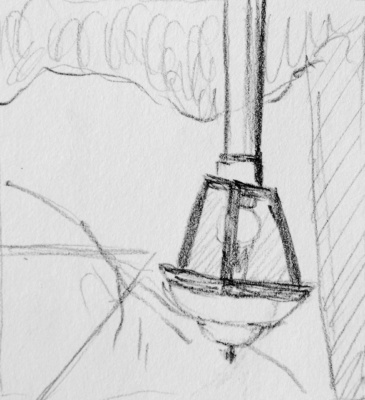
2. Your drawing lacks clarity.
Fix: Always shade right to the edge of your outline without leaving the uneven, white spaces. When we shade we have the tendency to lose the edge. As a result our drawing falls apart by becoming uniformly soft, lacking focus and definition. While not everything should be defined or outlined, most students have a problem of not “connecting” numerous lines that leads to uneven shading.
The solution is to outline the edge with the line of the correct value (tone) and shade right to that edge to restore the original outline.
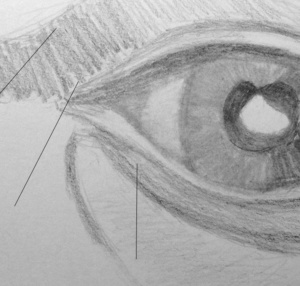
3. Your drawing looks messy.
When we sketch the lines graphite tends to smear all over the place. It’s important to keep the drawing clean to give a nice impression of a finished work even if it’s not finished. While it sounds obvious, you won’t believe how many students make messy drawings!
Fix: If you draw in colored pencil, it’s vital to keep all the graphite pencil marks super light and avoid smudging as much as possible. Kneaded eraser is your best friend. It doesn’t leave any residue on paper and erases softly.
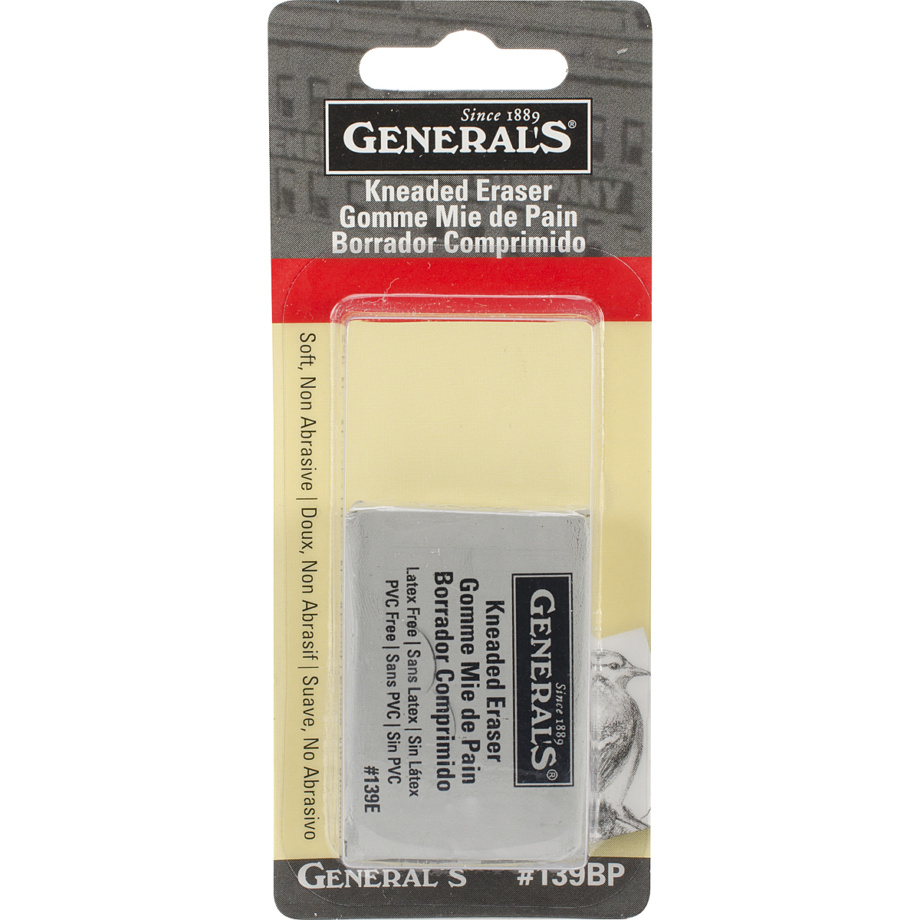
4. The objects in your drawing escape or fall off the page.
Start your sketch with the envelope where you mark the top, bottom and sides of your objects. Then draw inside those markings without “leaving” the envelope.
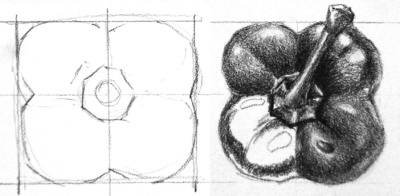
5. You focus on drawing the contour so hard, but it never looks right when you’re done.
Fix: always make directional lines first, and position your shape over that line. This technique gives you the right rotation & position of your subjects in space.
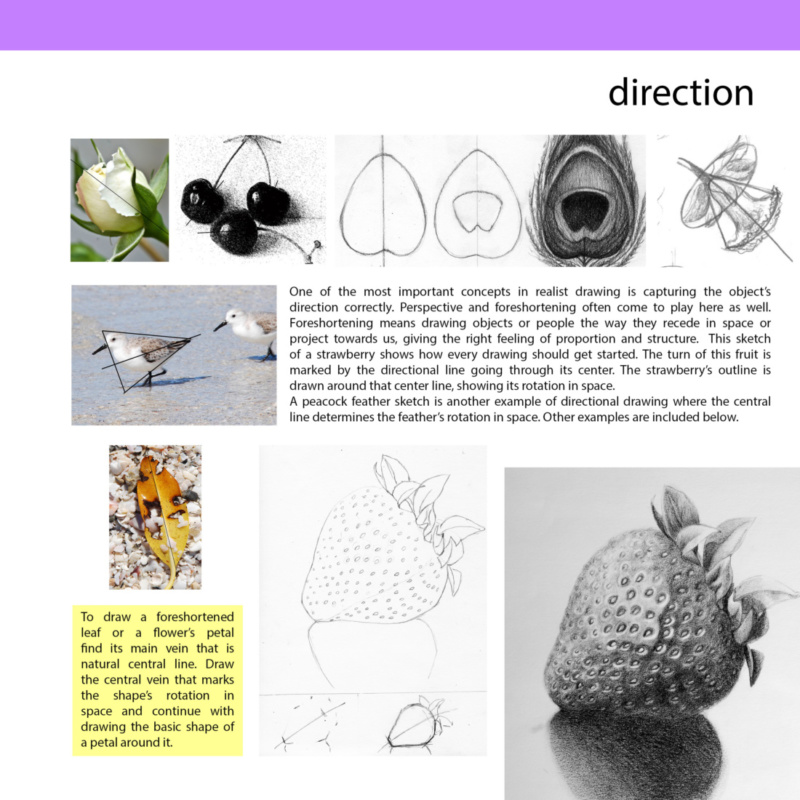
6. You don’t know where to start shading.
Fix: start shading from your darkest shadows! Then continue to your mid tones and finish up with the lightest shading around the highlights.
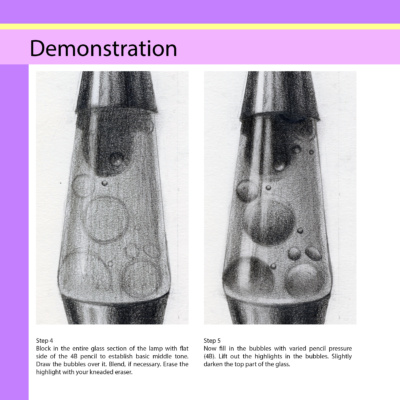
Hope it helps! And now you can go and create your masterpiece following these tips. 😁
Step by step drawing tutorials can be found here.
Basic art supplies I use that are sold on Amazon:
- Transfer paper: white transfer paper: https://amzn.to/3gAaPFo or https://amzn.to/2XMdBPg
- Mono eraser: https://amzn.to/3e6SHRw
- Kneaded eraser: https://amzn.to/3MCnQ2Z
- Drawing paper: https://amzn.to/3QNYl1e
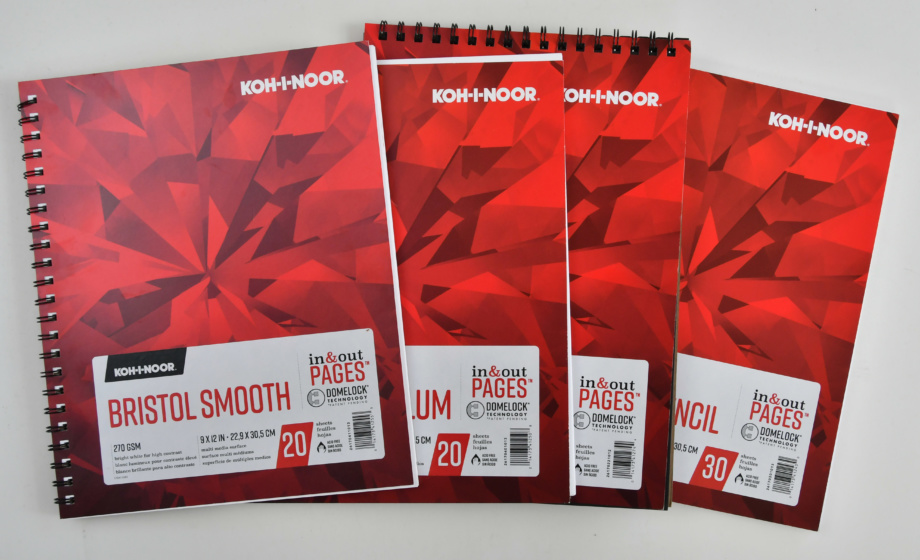
I’m an Amazon affiliate.

How to paint realistic shadows in colored pencil, graphite and paint
If you’re interested in realistic drawing and painting techniques, you must study the shadows. The right placement and depiction of shadows helps artists create the three-dimensional illusion on a flat surface. The concept or the formula of seeing the light and how it turns the form is the same across various media. Let’s dive in.
How to draw realistic shadows in colored pencil, graphite and paint
The distribution of light
To understand how to draw realistic objects on paper, you need to study how the light turns the form. This image illustrates the idea. Artists observe the light direction and try to find the highlights, form shadows, cast shadows and the reflected light on an object.
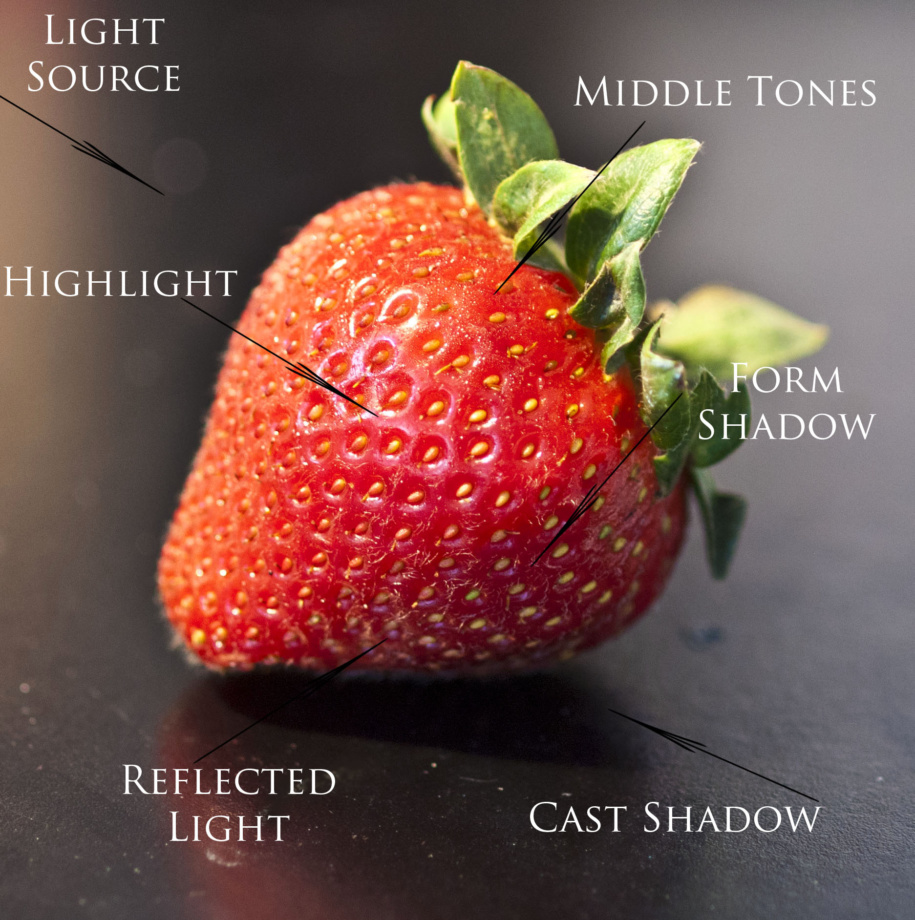
What are the shadows?
There are two types of shadows: the form (or core) shadow and the cast shadow.
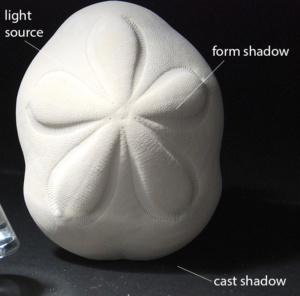
The form shadow is present on the object itself, and is of the darkest value (tone). It appears where the light turns into darkness. You can see the form shadows on various objects including faces, fabric, flowers, etc. The form shadow makes the objects look three-dimensional, and if you don’t see it, the objects remain flat in your artwork.
The cast shadow(s) is situated right under the object and is always attached to it.
While the form shadows give the objects the roundness or volume, cast shadows give the physical presence to objects. They “make” the object look heavy set in the environment it’s in. Sometimes the cast shadows are a lot more interesting to draw than the object itself.
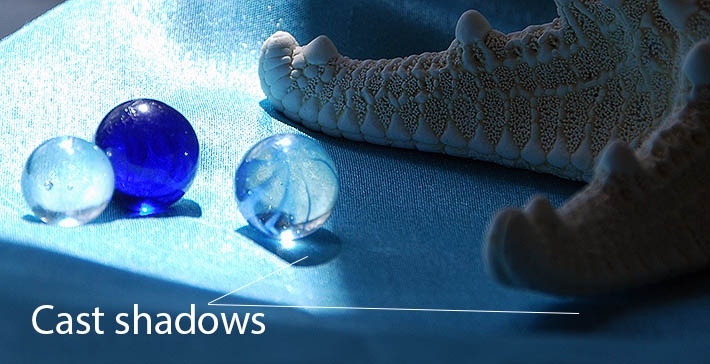
Adjusting the light
If you see no clear shadows in your still life or a photo, it’s much harder to create the 3-D illusion on paper. While we usually have no problem spotting the cast shadows seen on tables or windowsills, found under the fruit or vases, we do often find it difficult to pinpoint the location of the form shadow present on the fruit/object itself. Strong, directional lighting helps artists find the form shadow. Play with the light to see a variety of shadows on and under your objects.
Seeing shadows in glass:
Not every object confirms to the same formula I’ve described above. For instance, drawing reflective objects and glass requires a different approach or formula to create the 3-D illusion on paper. It involves observation and copying of major abstract shapes and reflections found within the glass object.


How to draw realistic highlights in pencils
When we look at realistic drawings and paintings, we try to figure out how artists achieve such level of realism in their art.
There are three elements that make drawings and paintings look three-dimensional on a flat surface:
- Accurate shapes or perfect drawing of objects
- Clear understanding how the light turns the form
- Correct placement of highlights on objects, fabric and people.
What is a highlight and how do you find it?
Highlights are the lightest lights or the whitest spots you find on your objects. Always analyze the light direction and the light source. Is it coming from the left or right, top or bottom? You’d find the lightest areas on all objects being the closest to that light source.
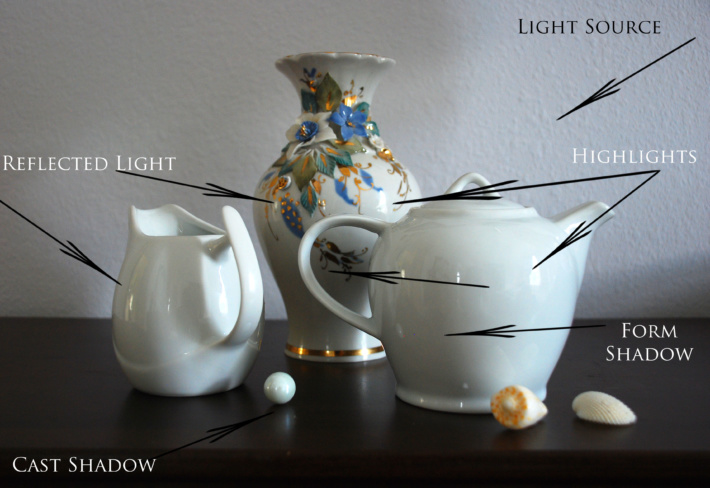
The placement of highlights on your object is logical. Analyze the light direction. If it comes from the left, then your highlights would be on the object’s left hand side. If the light comes from above, then the highlights accumulate on the object’s top.
If it’s a vase, a cup or a bottle directional highlights would appear on the object’s surface where the object usually curves or changes direction.
You may see secondary lights in your set up as well. Usually they’re light but not as strong as the highlights. Make sure they remain secondary and don’t “compete” with your major few highlights. This way you create the hierarchy of light and shadow.
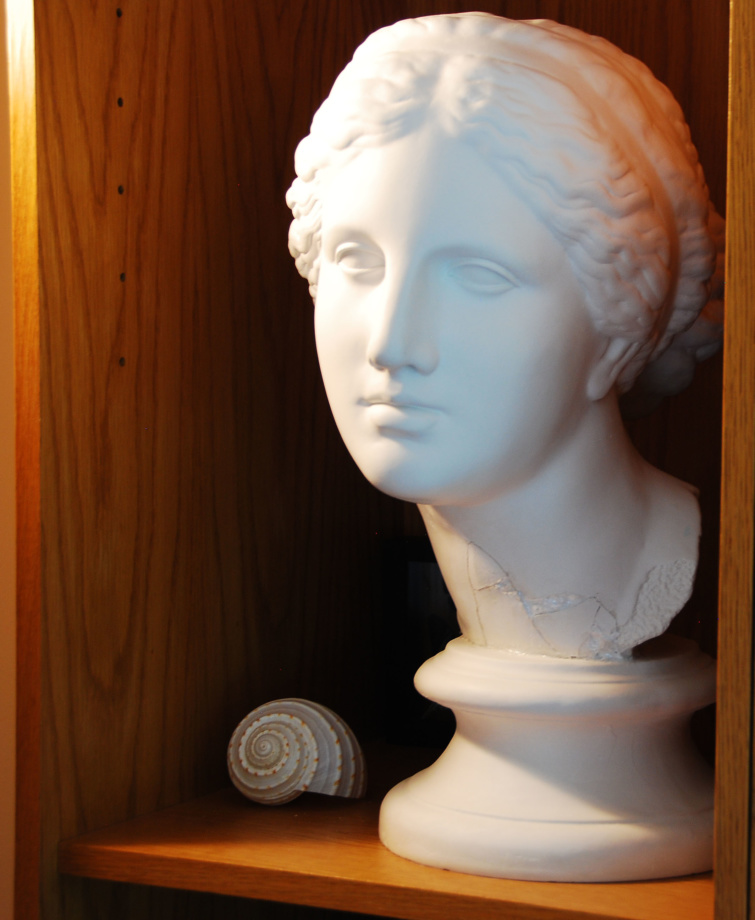
How to draw highlights in graphite drawing
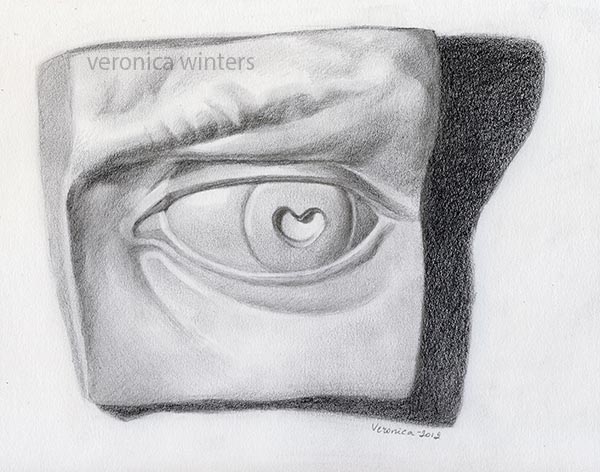
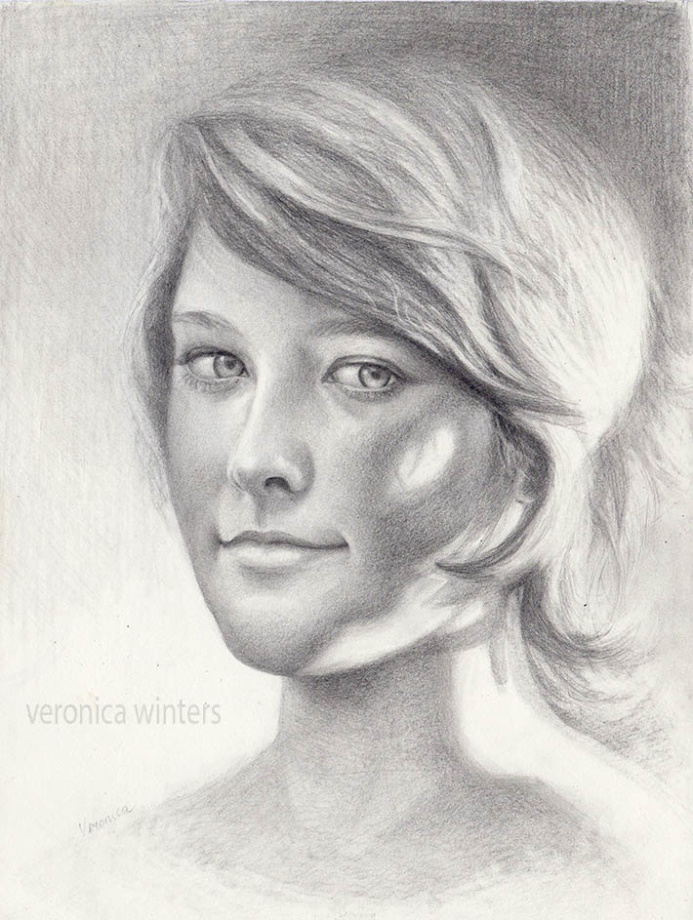
If you’re interested to take your art to the next level, take a video class to learn more about the techniques of colored pencil drawing and painting here.
How to draw highlights in colored pencil drawing
Drawing on white paper:

Drawing on toned paper:
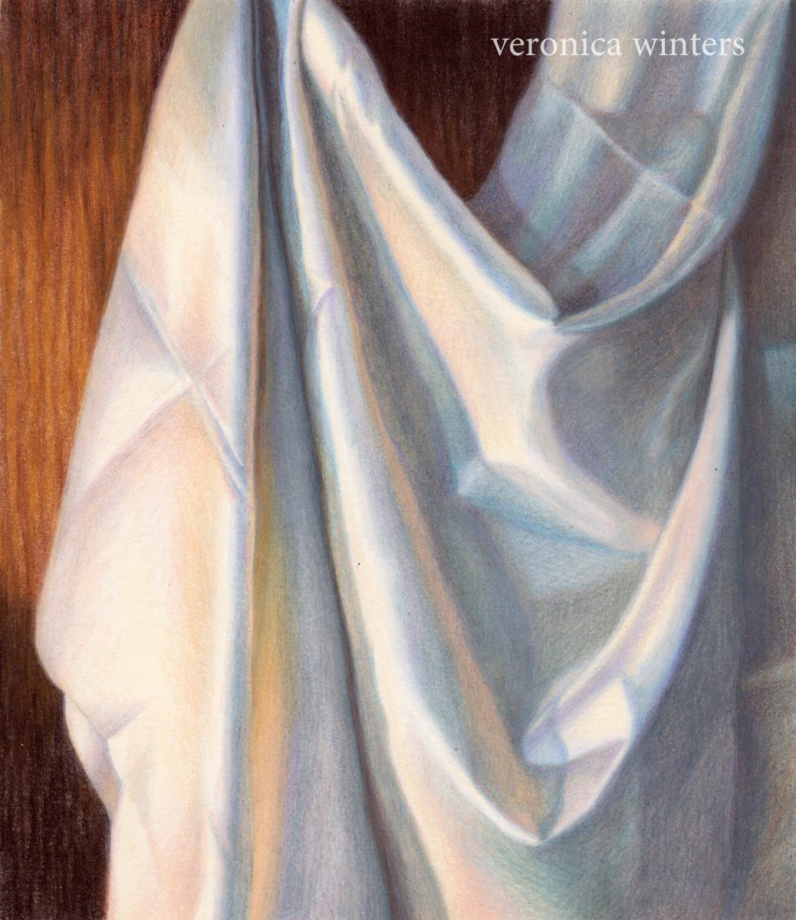
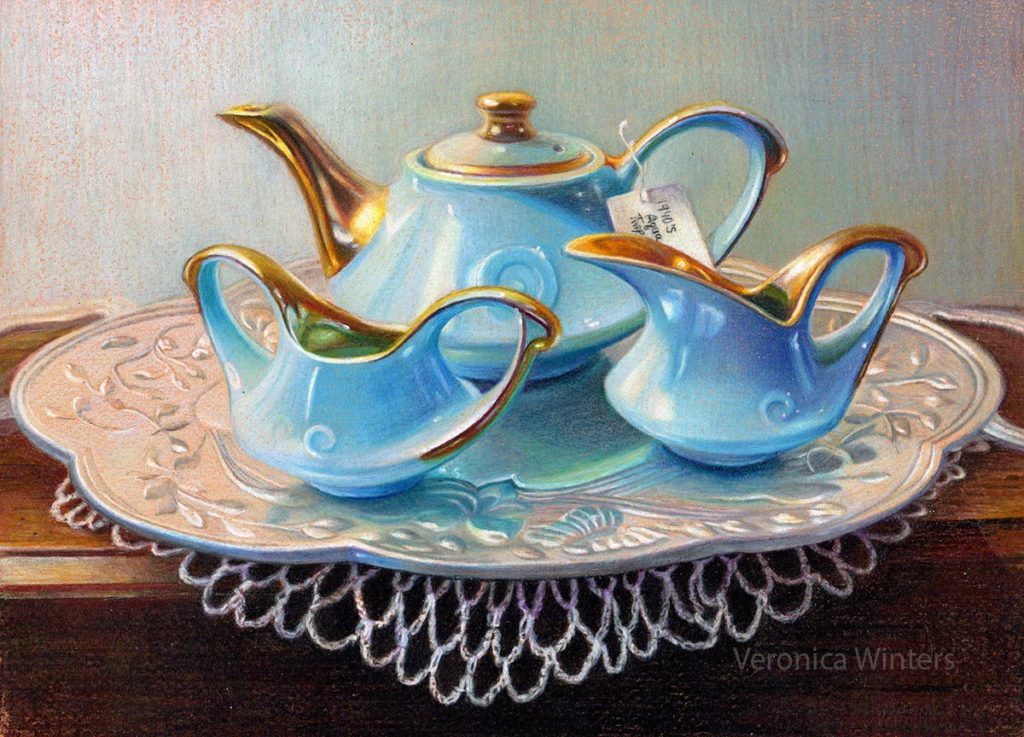
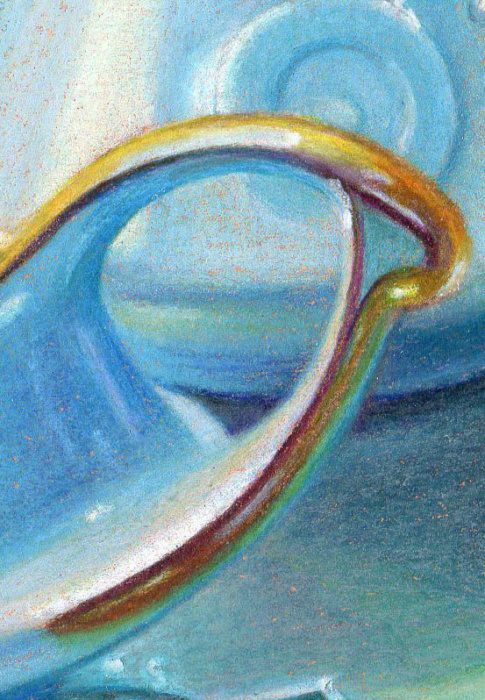
Take your art to the next level by watching a video course on demand.
check out visionary art for sale
How to improve realist painting working from pictures
Many artists draw from pictures today or at least use them as a reference material. I use them a lot in the creation of my visionary art, especially when working in colored pencil. Being aware of the advantages and the limitations using photography, makes you a better realist artist because you learn to adjust your process to accommodate it to your practice. So here I list a few advantages and drawbacks using the pictures in painting and drawing.
The advantages of using pictures in art creation:
- The convenience of working from a picture is tempting. We want to snap a picture of a model instead of paying her for many hours of posing.
- There are those lucky moments when the moment is just right to capture a moving subject or a facial expression.
- Fast-changing weather conditions are easy to capture in photography when I travel, and I either have no time to paint or have no capacity to carry my art supplies to the top of a mountain.
- Working from a picture in colored pencil is almost easier than drawing from life, especially when it’s about capturing the reflective surfaces or real flowers. I usually keep the real object as a reference, but end up drawing it from a picture.
- By taking pictures yourself in a controlled set up, it’s possible to get nice images. For that I take a cardboard box used for shipping and cut two sides out, to which I glue the white tissue paper that diffuses the light. I place my object inside it and I light it up with one, two or three lights, depending on my idea. My set up is similar to this one:
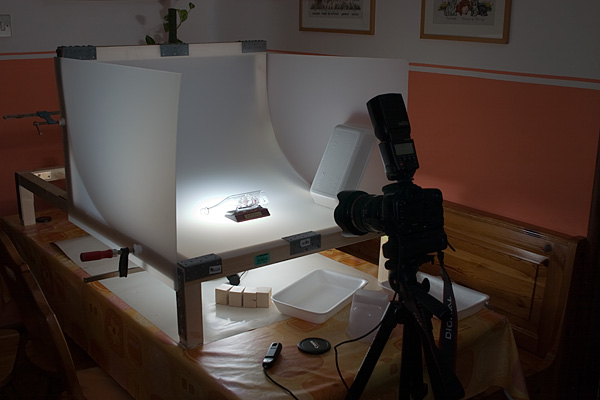
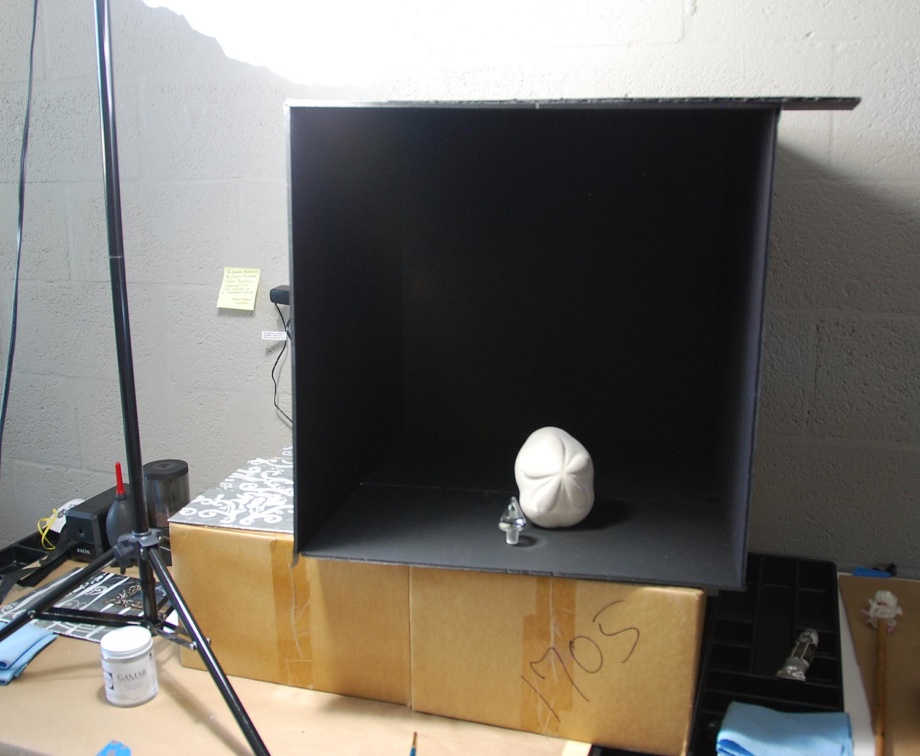

This is a striking image of a cloud with the fairly balanced tones between the sky and the ocean. Yet, the color is really off here, too blue and too dark to paint a large painting well without having a sketch made from life that captures the real colors I saw at the beach while taking this picture.
The disadvantages using the pictures for realist painting:
- The sky is washed out, the land is too dark. This happens a lot in the pictures of the amateur photographers. You need to learn to compensate for the colorless sky by either adjusting your camera settings by 1-2 stops, or taking more pictures of the sky itself separate from the land. Many phones have the HDR function in them these days and combine several shots into one, giving the right light balance between the land and the sky.
- It’s imperative not to draw from the copyrighted images or use the photos without the written permission of the photographer. It includes the photos made or taken as the movie stills. Years ago I lost a lucrative deal with one of the companies that wanted to feature my artwork on their product. I knew nothing about the copyright rules and drew a movie character they liked, but as you may guess, the image didn’t get cleared by their legal department.
- If a picture you paint from is not yours, you can’t enter your artwork into the juried shows, unless the artist has the permission from a photographer to do so. And even then, some national contests prohibit the use of someone else’s photography because the artist must be the sole creator of his work.
- Although painting from pictures is convenient, it has hidden difficulties. Even if the quality of your camera is good enough to capture reality, it misses out on a lot of information artists put back into their drawings or paintings. In other words, the camera filters through some information that the artist responds to when he paints directly from life.
- Cameras distort reality. Colors, shapes, and shadows never look the same as we see them with the naked eye. Most lenses distort the linear perspective to such a degree that I never use a printed picture as my map to transfer the image. I have a nice Nikon D80 that gives me a wonderful range of hues. I can also change lenses on it that gives me additional advantage in painting with the relative accuracy. Yet, I still use my pictures selectively, and I don’t buy into everything I see in them.
- The distortion in color and perspective also changes your perception. Camera makes a choice instead of the artist making it. As artists we make decisions what to see and what to leave out in images. For instance, you see a thin horizon line and a single tree in the wind. You feel the air’s blowing coolness; you see a wide range of greens in that tree. You notice a huge cloud looming over it. Snap a picture. What do you see? The sky in the picture registers too bright in comparison to the dark, green land and the shape of that enigmatic cloud is now too light and incomplete. You lose the subtle shifts in color of the sky’s along with its incomplete cloud shape. In the picture, the tree also misses your real perception of it. The range of greens that you see with your eyes doesn’t look the same in the photo. Finally, you lose your feel of nature, the violent and mighty power it exhibits while you are in the moment with its wind and the rain.
- This is especially important for artists who paint realistically in oils or acrylics. Our perception of reality is instant, and we respond to it swiftly by mixing the right colors without over-analyzing the information. When we paint from pictures, we tend to analyze the same reality a lot more, which is already adjusted by the camera for us. My paintings done from life always have freshness and liveliness that is virtually absent in paintings done solely from pictures. Only the experienced artists can paint from pictures very well, because they have the knowledge to place or replace the elements that the camera doesn’t catch or overemphasizes.
How to take good pictures: examples of bad ones:
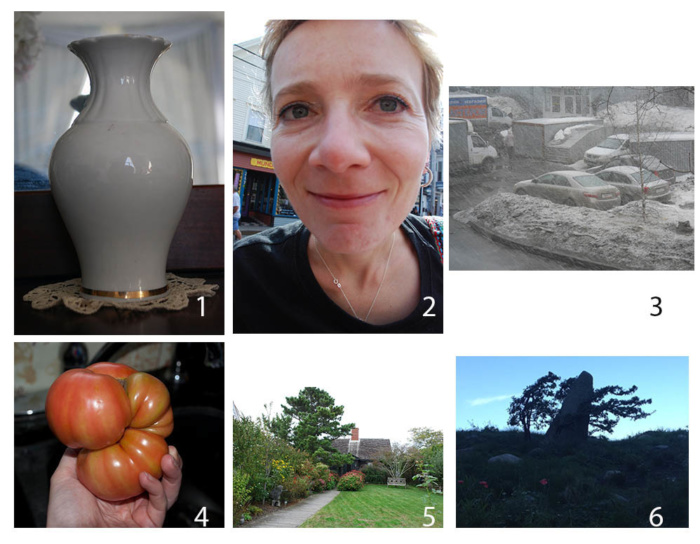
- There is no sense of the directional light source here. It’s hard to turn the form shading such dull objects.
- The lens’ distortion makes this picture great to draw a cartoon, but not a fine portrait.
- Everything is uniformly gray in this picture with no clear focal point. Nevertheless, this photo can be used as a reference to understand the atmospheric condition.
- Pictures taken with a flash cut on the natural shadows and throw off the colors. Never draw from pictures taken with the flash!
- The sky is really boring here. The absence of an exciting focal point also makes it rather dull to draw.
- While the sky looks OK, the foreground is so dark it makes it impossible to use it as a reference to see the shifts in tones drawing the tree.
If you find my post helpful, please share my website with your friends!
Check out all video courses here

Step by step colored pencil drawing tutorial for children: gecko
In this step by step drawing demonstration you’ll learn how to layer color in colored pencil shading on toned or colored paper. You will also see how to use solvents to blend the colored pencil drawing. This is a fun drawing project to complete for both kids and adults alike.

Materials:
- Canson Colorline paper. This paper can be replaced with a similar, professional toned paper.
- Prismacolor Premier colored pencils (colors are listed in steps); they can be replaced with other soft, colored pencils
- Gamsol or Caran d-Ache full blender-optional
- white transfer paper

Step-by-step colored pencil drawing tutorial demonstration
Step 1 Define the shape and shadows
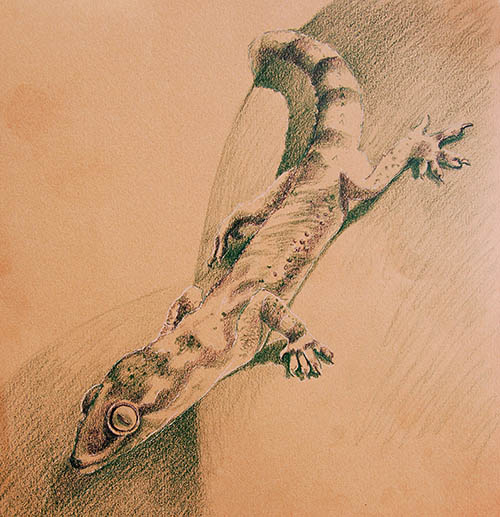
Sketch out basic outline of gecko on a sketch paper. Then transfer the outline onto your colored paper using white transfer paper. Keep the fine drawing paper clean of any residue at all times. I usually transfer the outlines using white transfer paper manufactured by Loew-Cornell. This paper lasts for years, and the lines are very easy to erase with the kneaded eraser. MAKE SURE YOU USE THE SMOOTH SIDE OF YOUR DRAWING PAPER!
When you have transferred the outline, strengthen some lines in colored pencil to separate between the shapes. The color of my colored pencil depends on the subject’s basic tone. If the subject is light, I use cream colored pencil to strengthen the outlines, if the subject is dark, I use dark brown to outline some shapes.
Use dark brown like raw umber and dark green to map out the dark spots and shadows on the lizard’s skin.
Step 2 Block-in the background
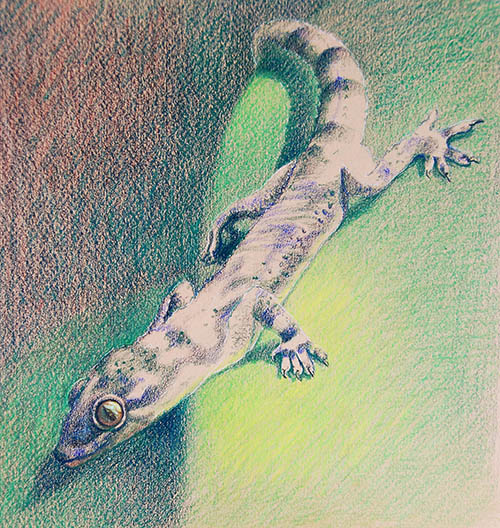
Block in the background with indigo blue and the same dark brown you’ve used before. (A combination of any dark colors would work well here). Add grass green and apple green in the background’s middle tone. Then add spring green in the light.
To strengthen the pattern on the skin, shade with a combination of violet, indigo blue, and dark green.
For the eye, use a sharp point of indigo blue and dark brown to outline the circle and to draw the iris. Shade the darker values (tones) on the left side of the eye, while deliberately using lighter tones on the right.
Notice that all colors look a lot more vibrant on colored paper as opposed to colored pencil shading on white paper.
Step 3: Blend the background
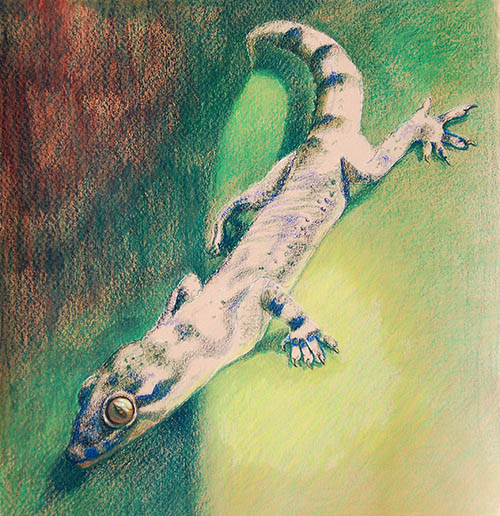
When you’ve completed shading in the background, use a solvent (like turpenoid or Gamsol) to blend the background and a few spots found on the gecko’s skin. Let it dry completely!
Make sure you use a small brush to blend the image with solvents that is not used for anything else. Solvents melt wax in the wax-based colored pencils making the surface smoother and darker.
Be careful using the solvent. Although Gamsol is a mild one and doesn't have the smell, don't inhale it anyways. Use a modest amount spreading the pigment around. To replace the solvent you can buy the caran d'ache full blender and shade the background with it.
Step 4: Colored pencil shading
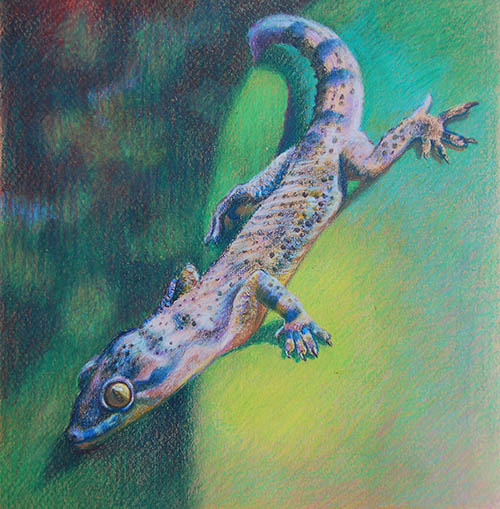
When it’s dry, shade with the same colors in the background and add a few more over the entire background space. The colors are poppy red, aquamarine, light aqua, and limepeel. OVERLAP the COLORS to get rich tones!
Now let’s draw the body. You can shade the light areas of the skin with parma violet and cloud blue, using a very heavy pencil pressure.
It’s important to see how the skin pattern curves around its body.
Don't make straight lines and repetitive shapes. Create volume and dimension by curving the uneven lines around its arms and feet.
Step 5: Work on details
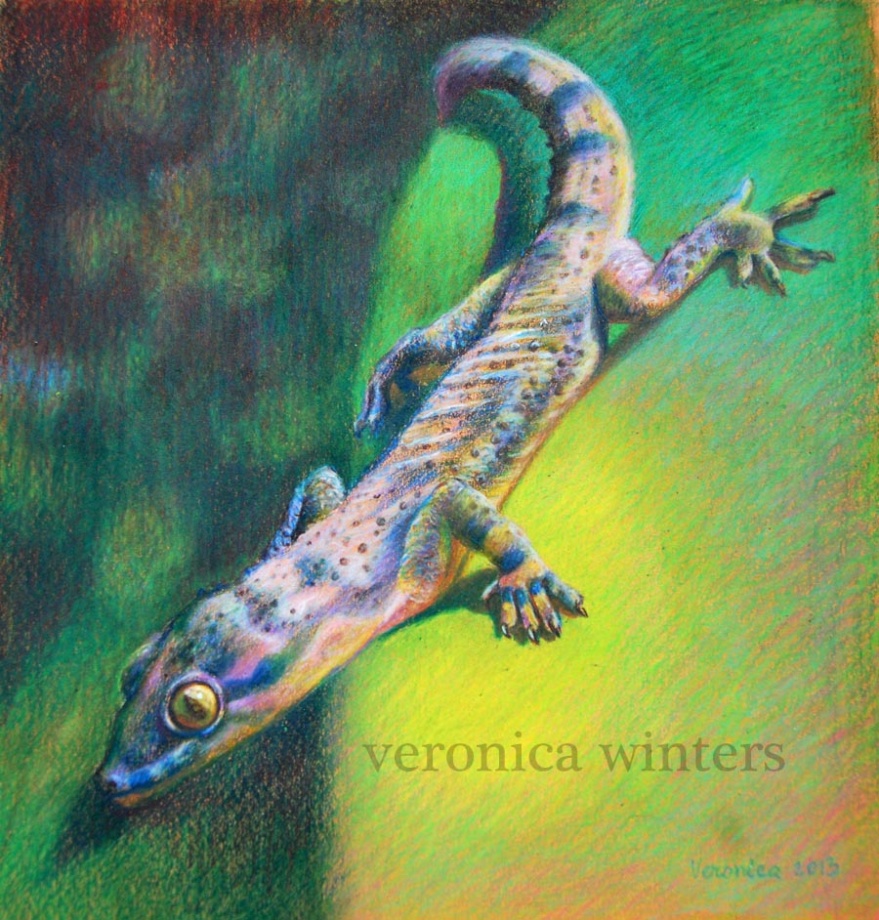
Use a touch of canary yellow and light pink to shade the reflected light on the gecko’s bottom.
Step back to look at it from the distance and check your drawing for contrast, color and shapes. If needed, re-apply the background colors once again with heavy pencil pressure. Step back. Check tones and edges. Is it dark enough? Outline a few edges in its head with sharp pencils for additional crispness and focus.
Check out all video courses here: https://veronica-winters-art-school.teachable.com/
Download free tutorials https://veronicasart.com/free-downloads/
